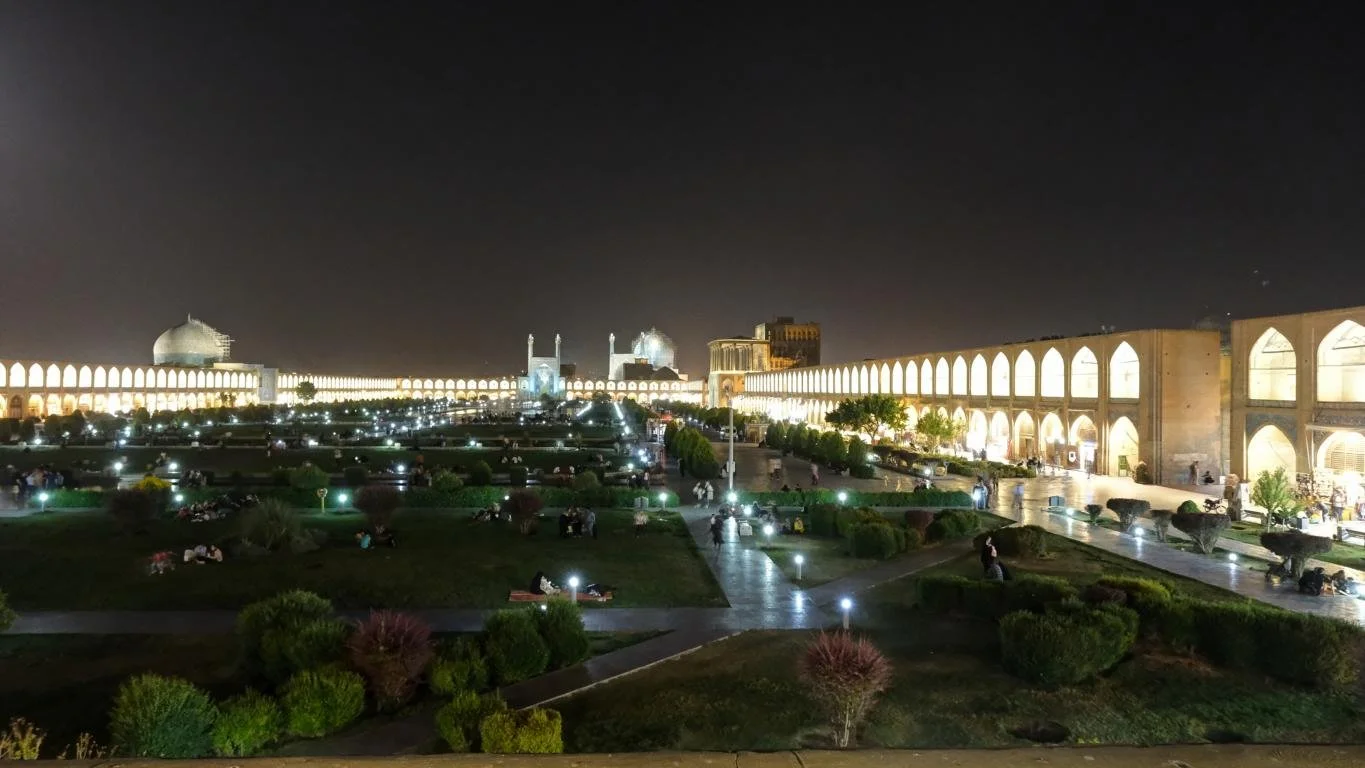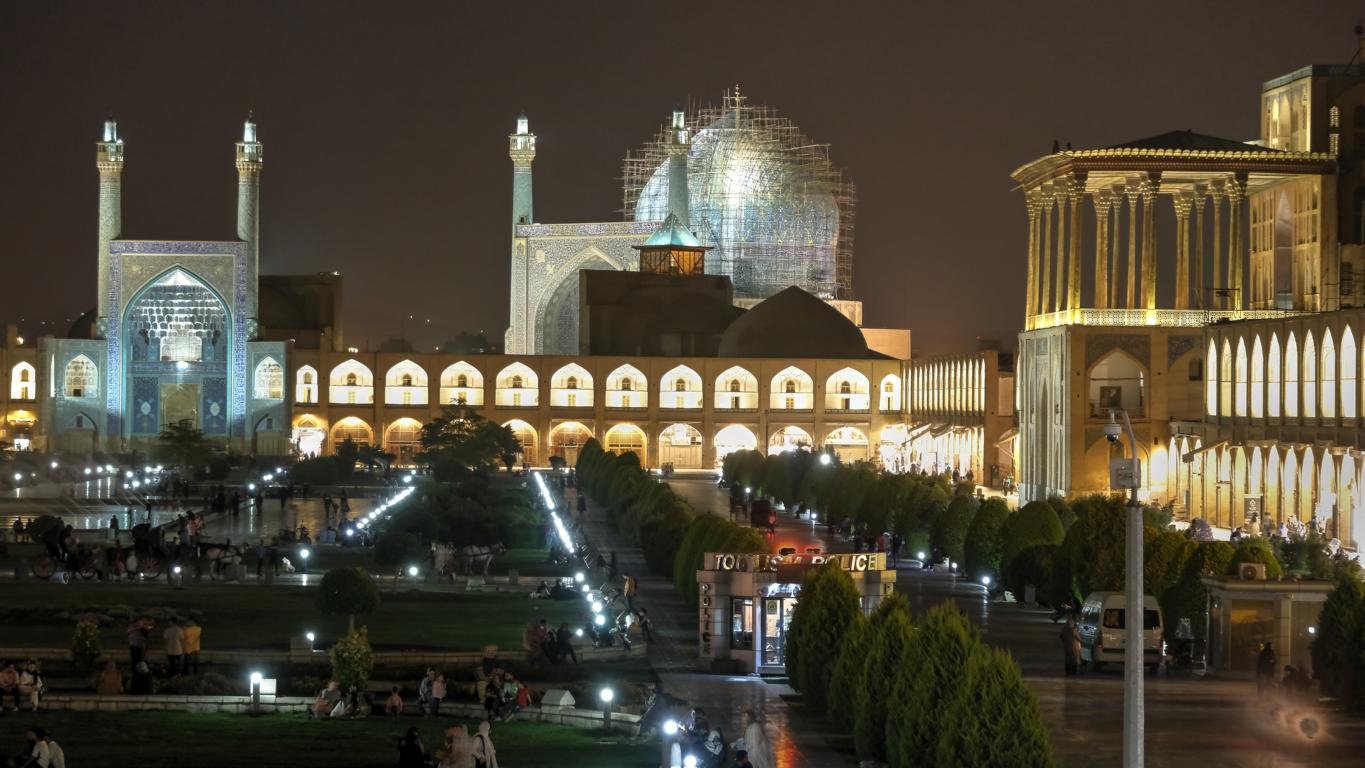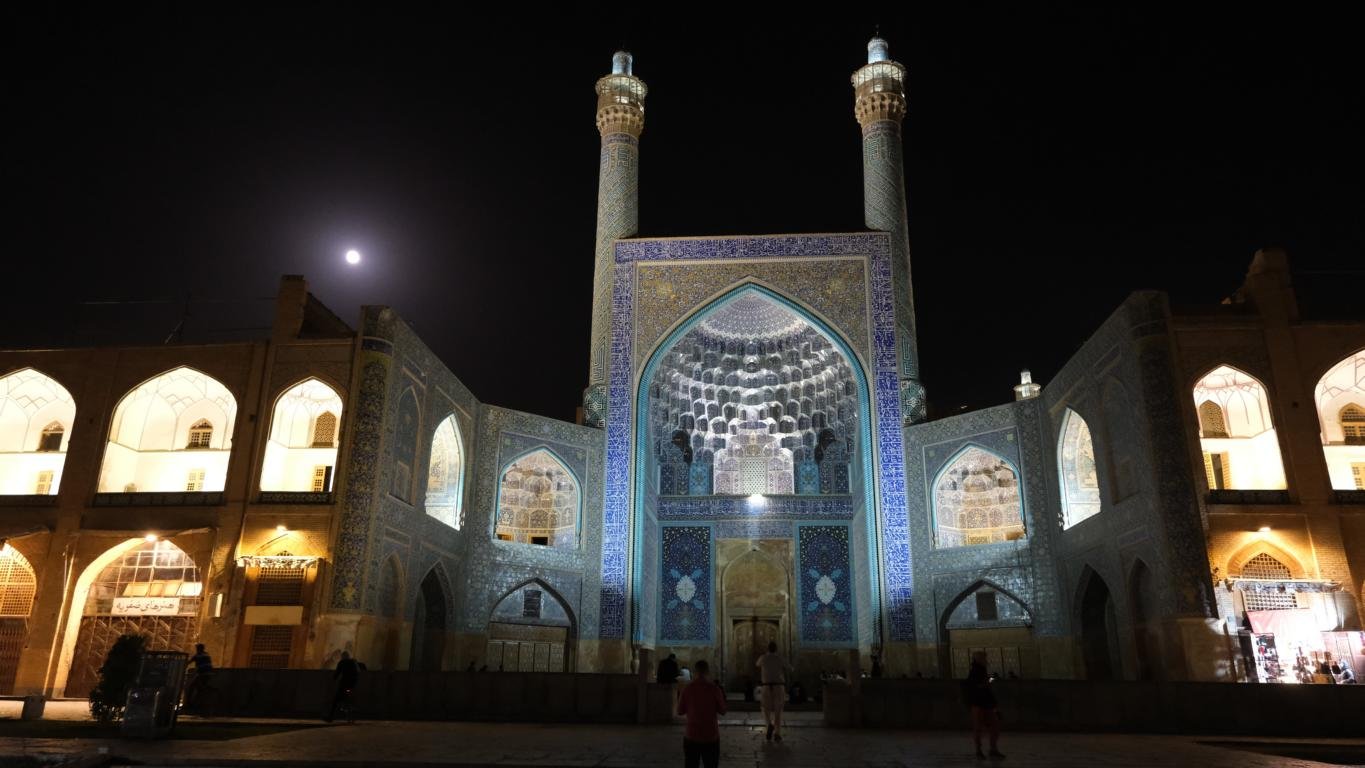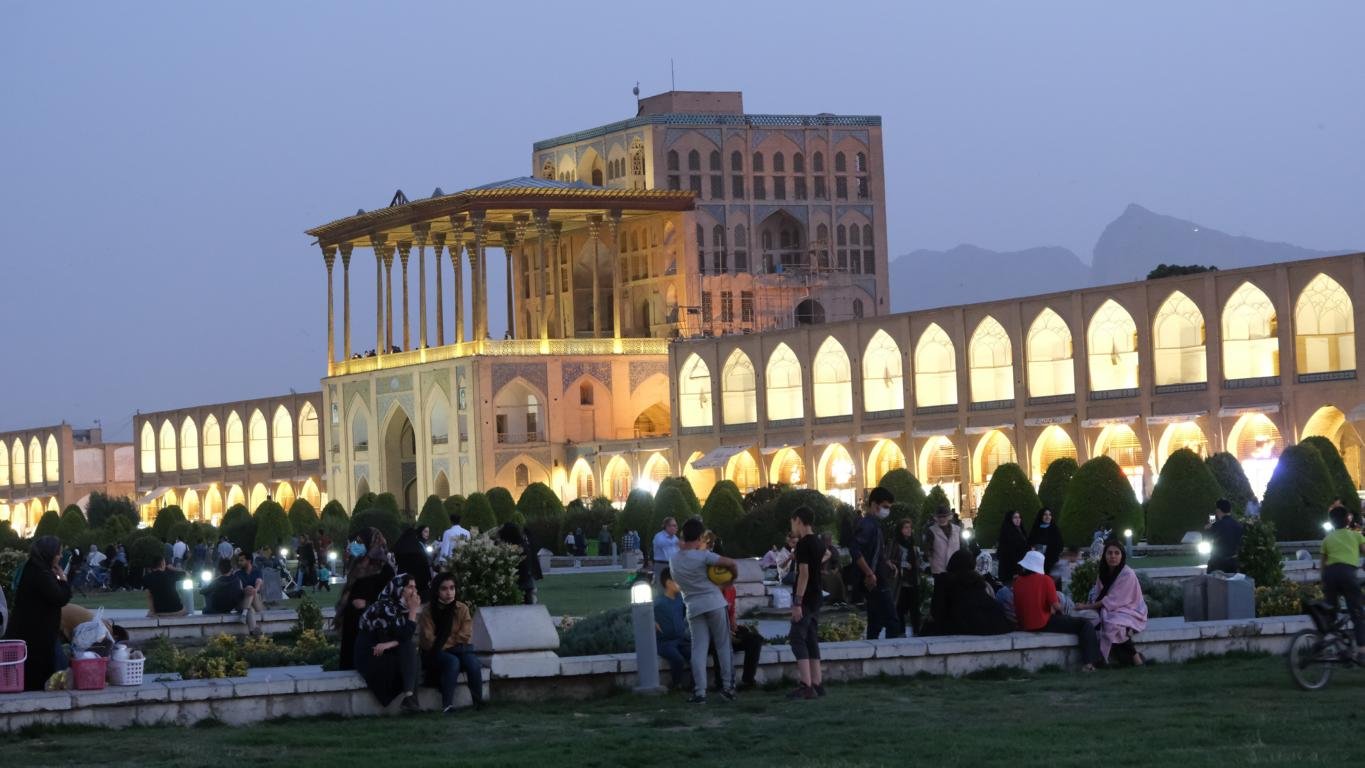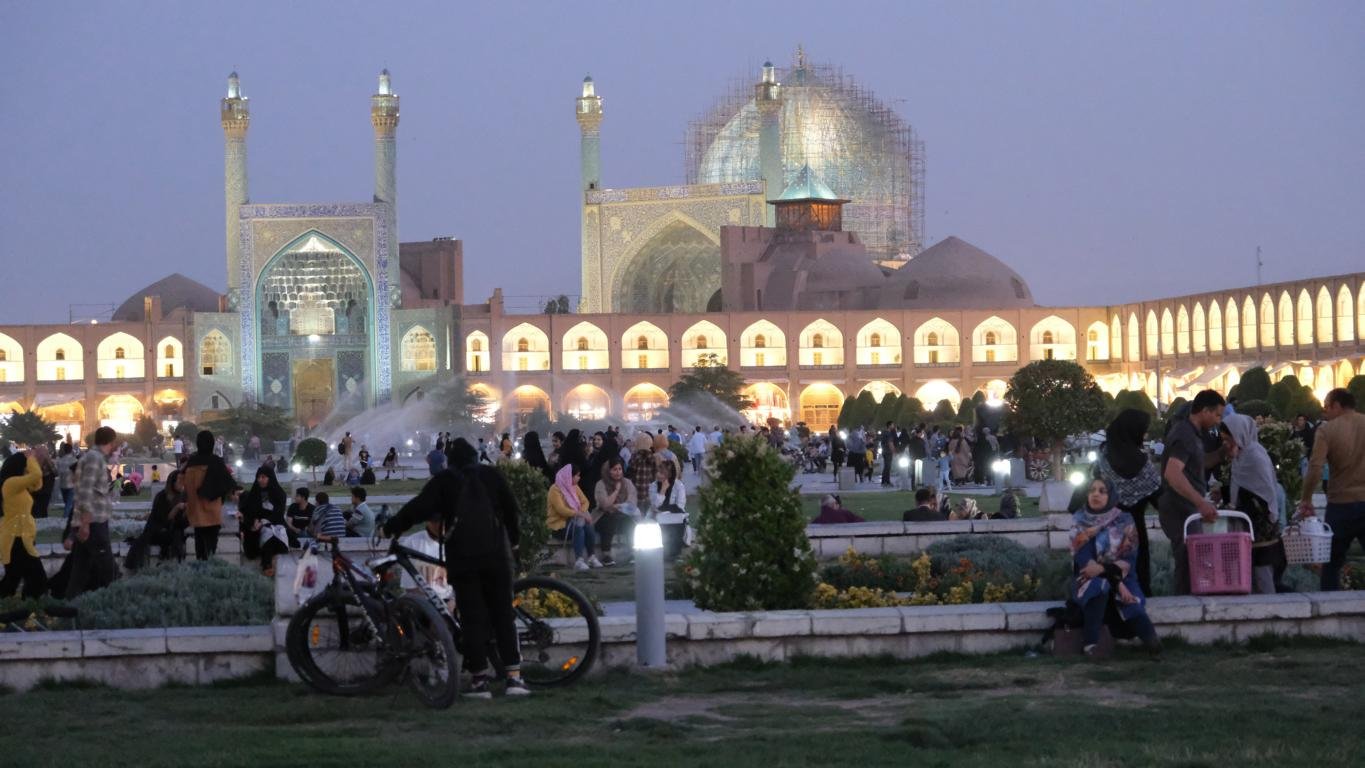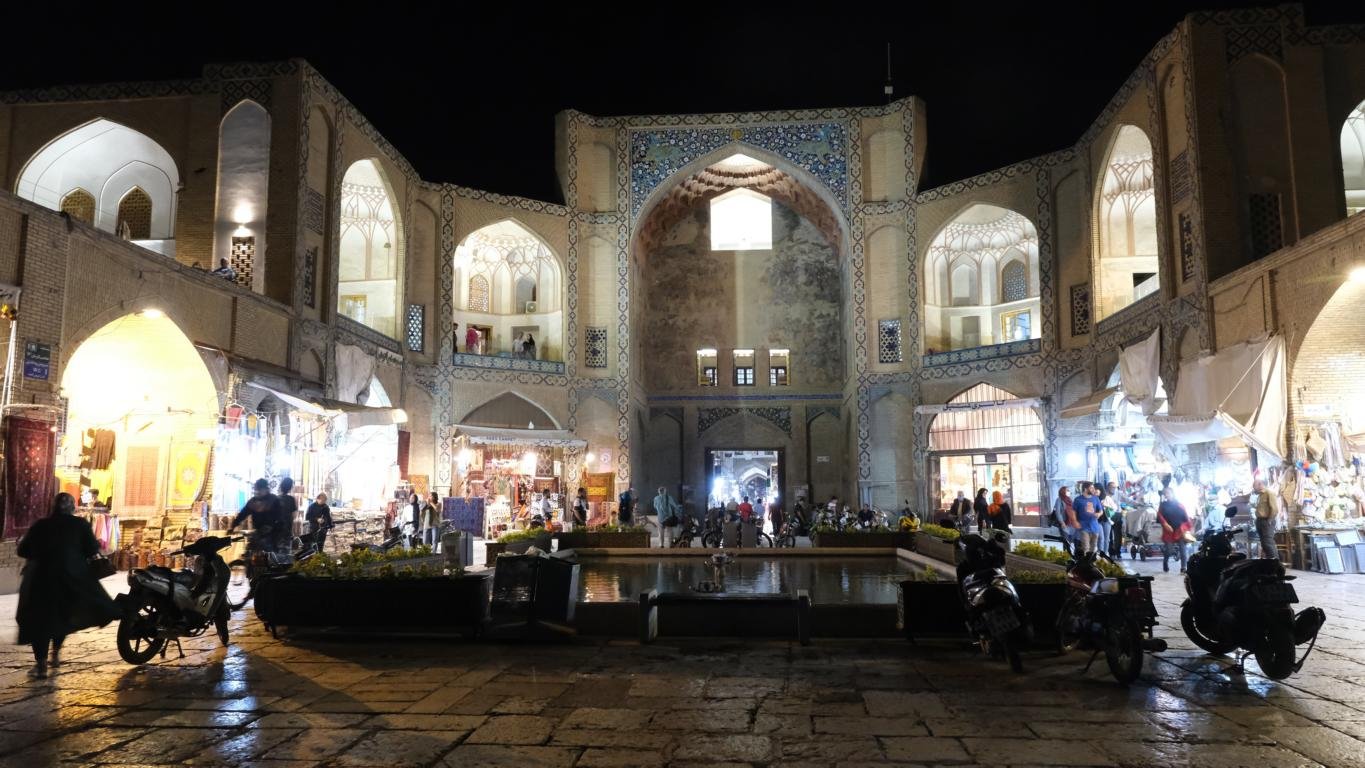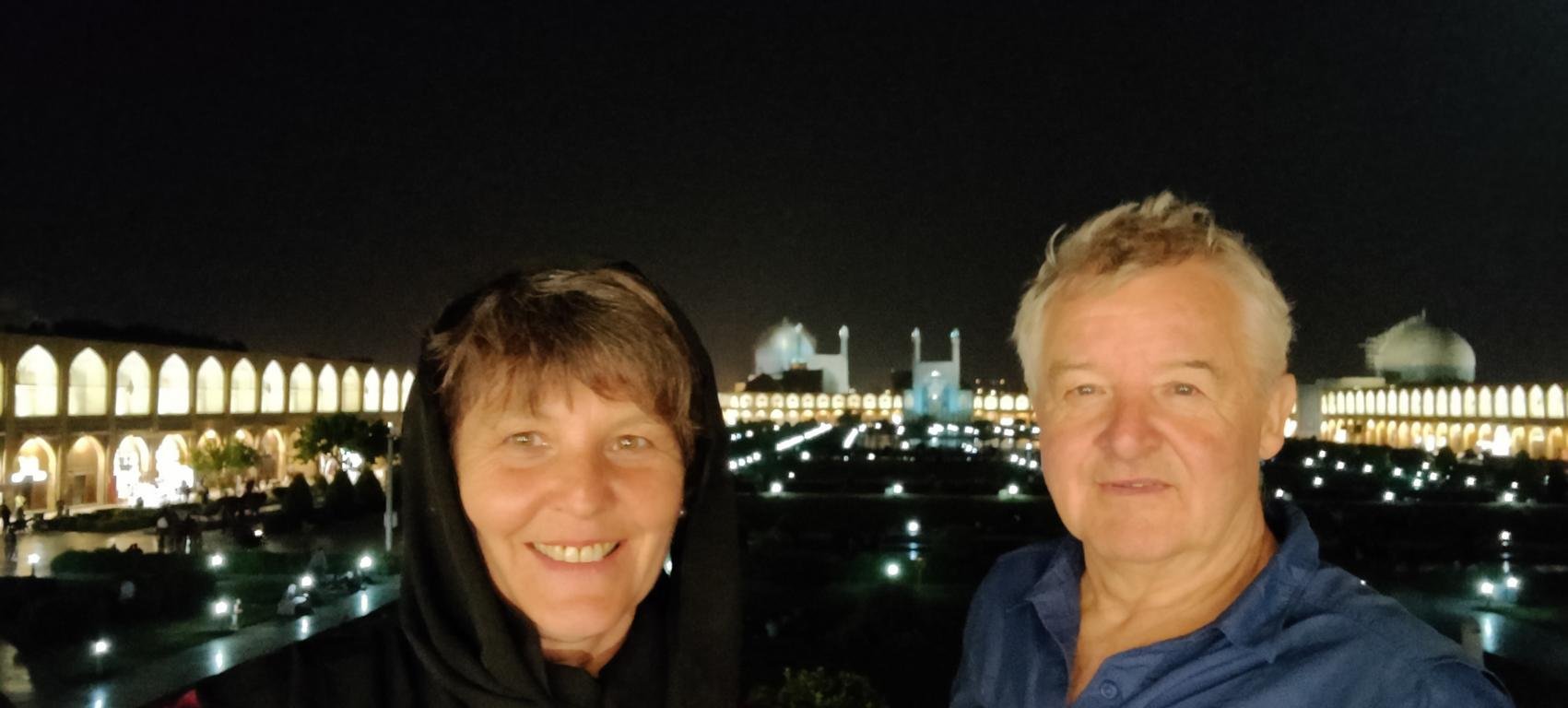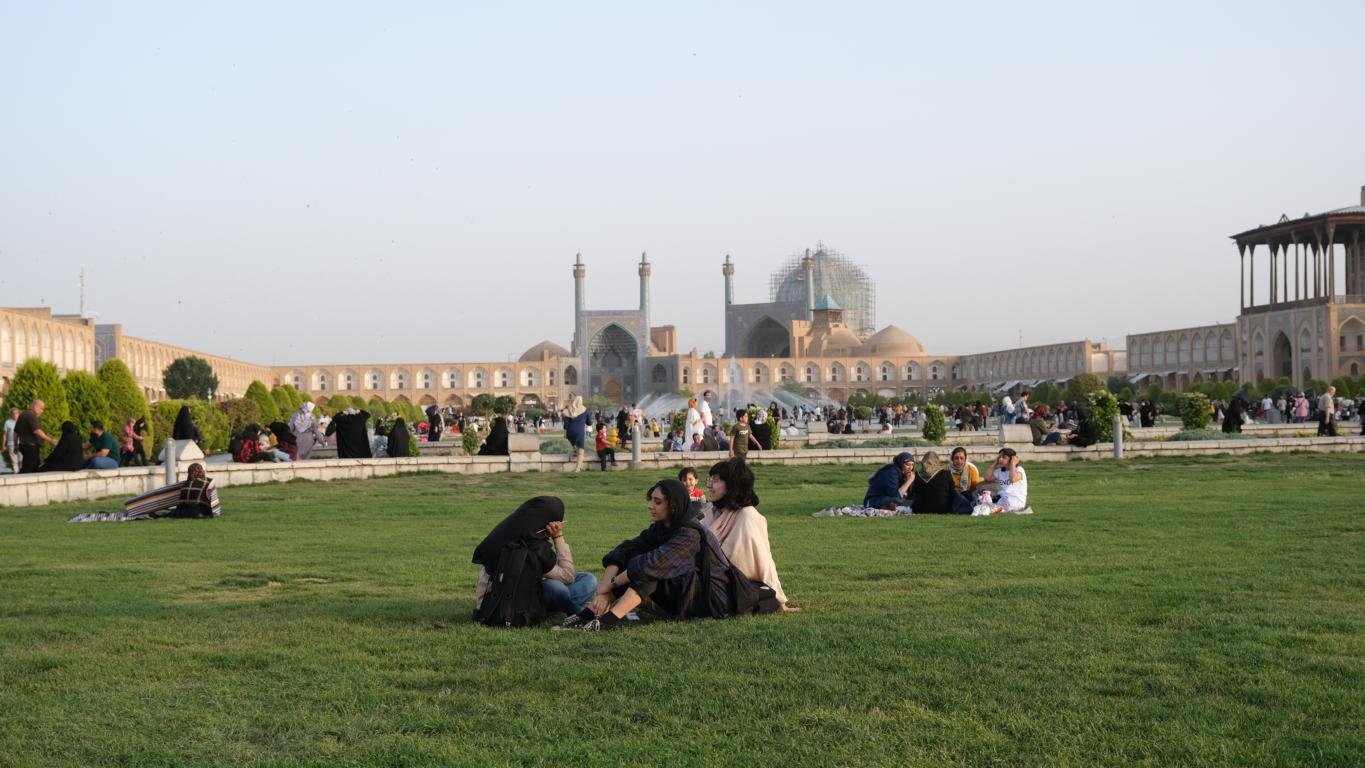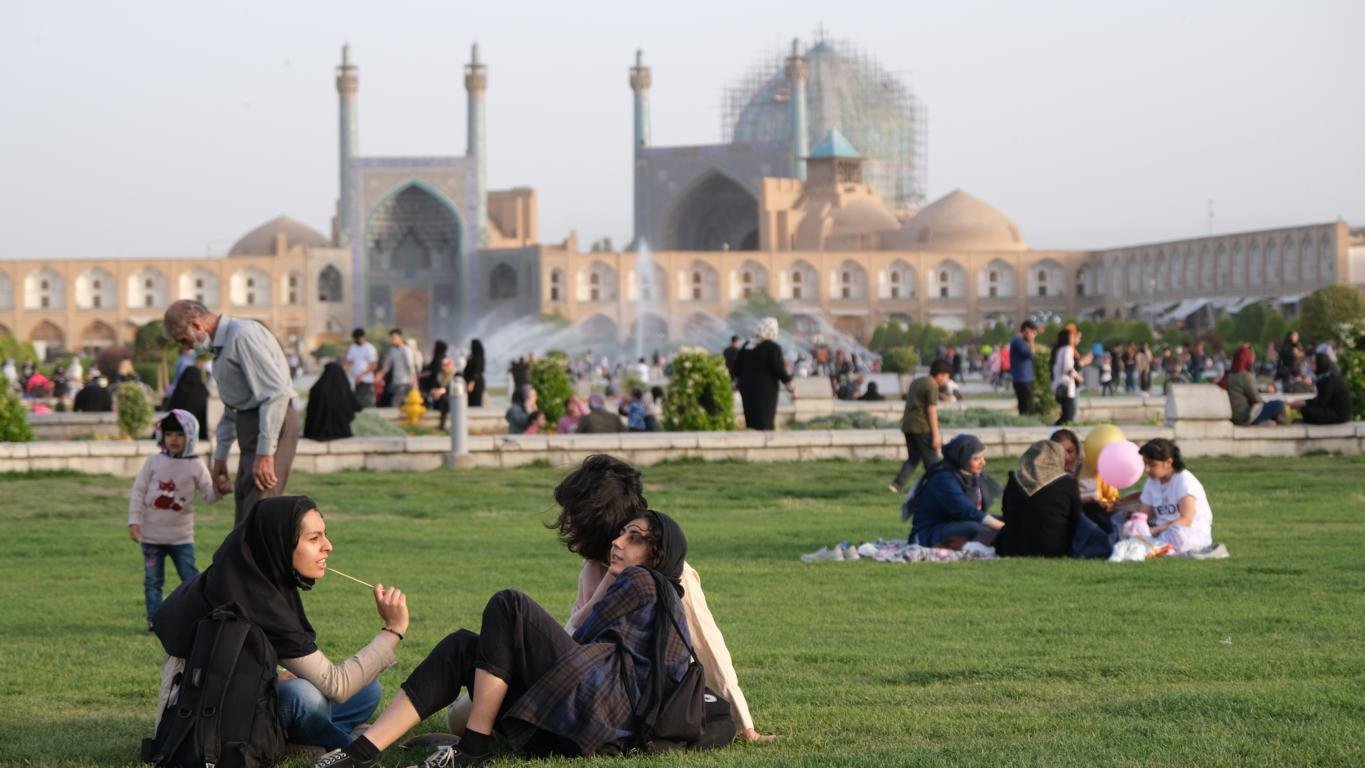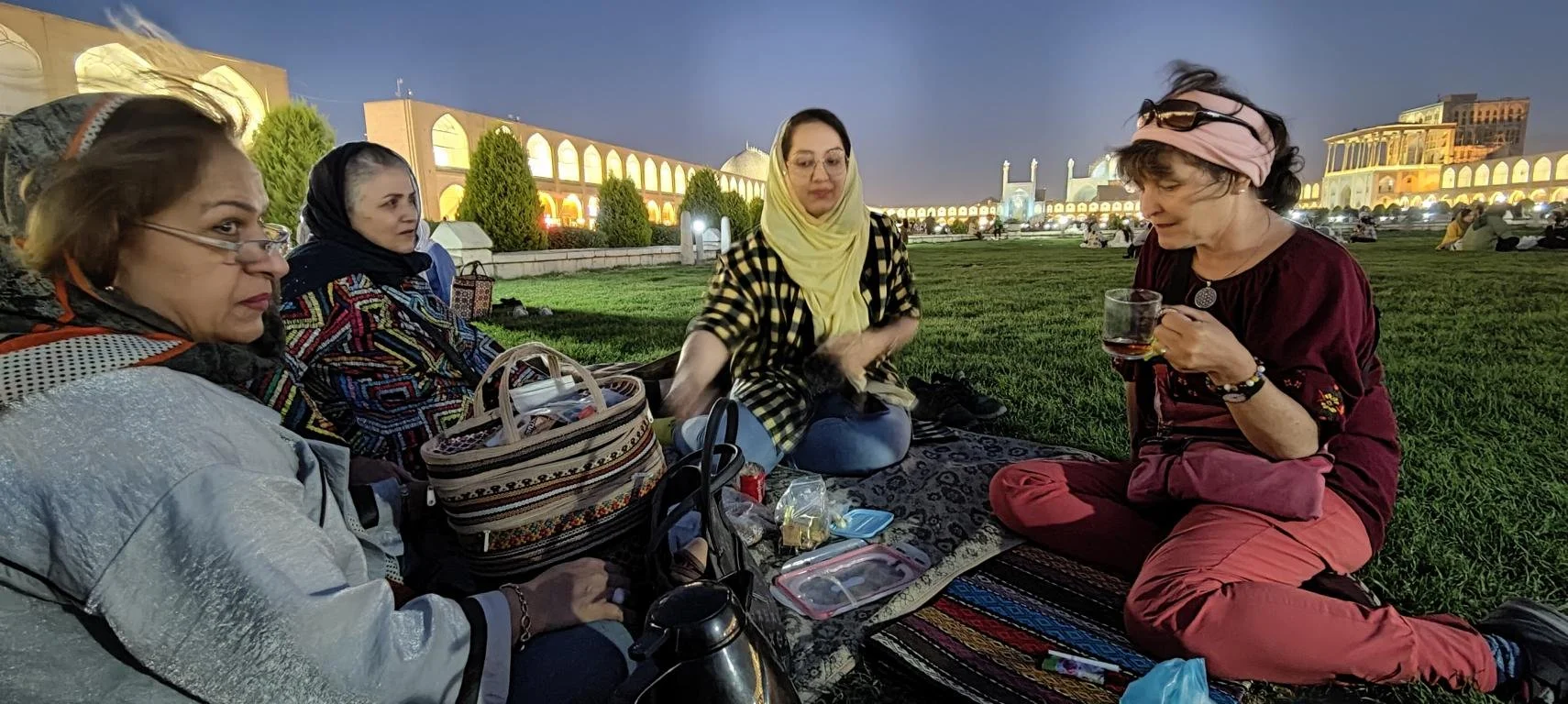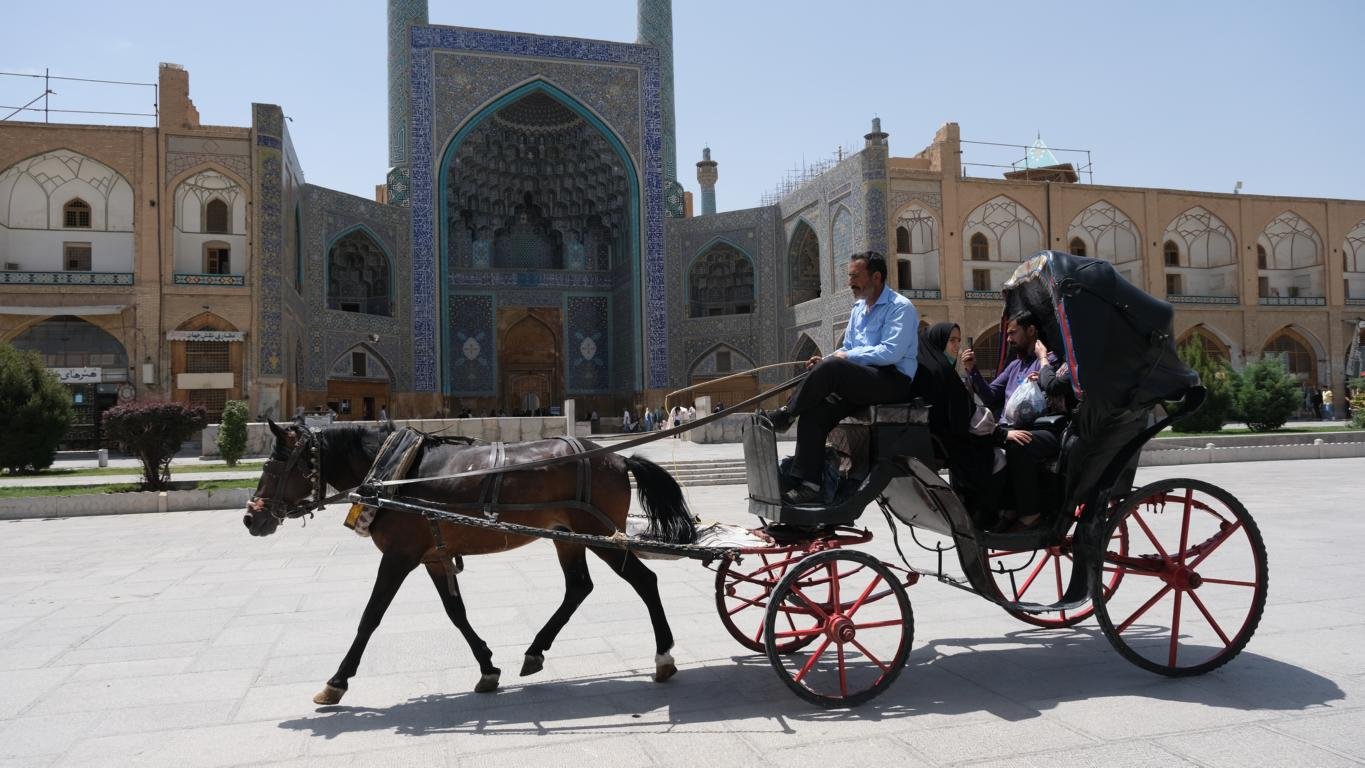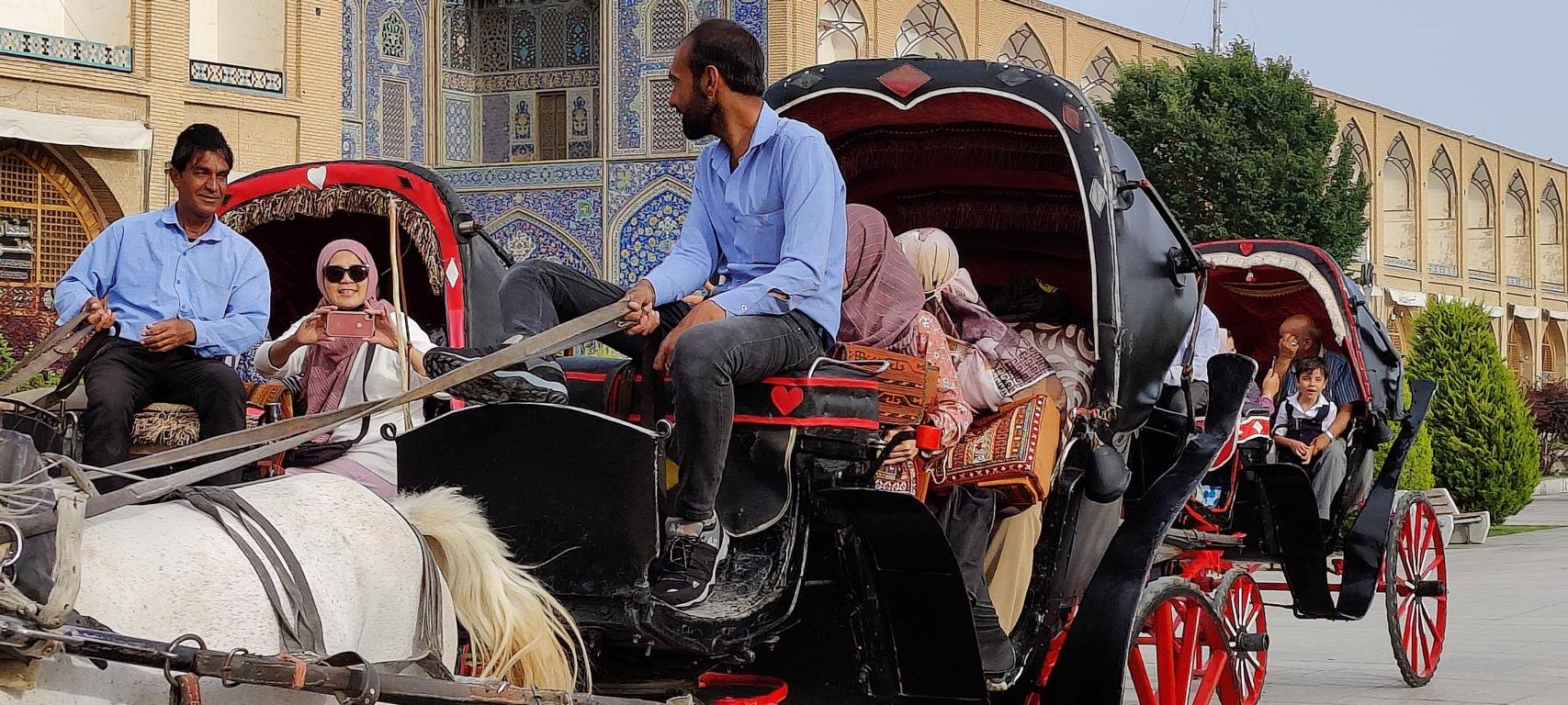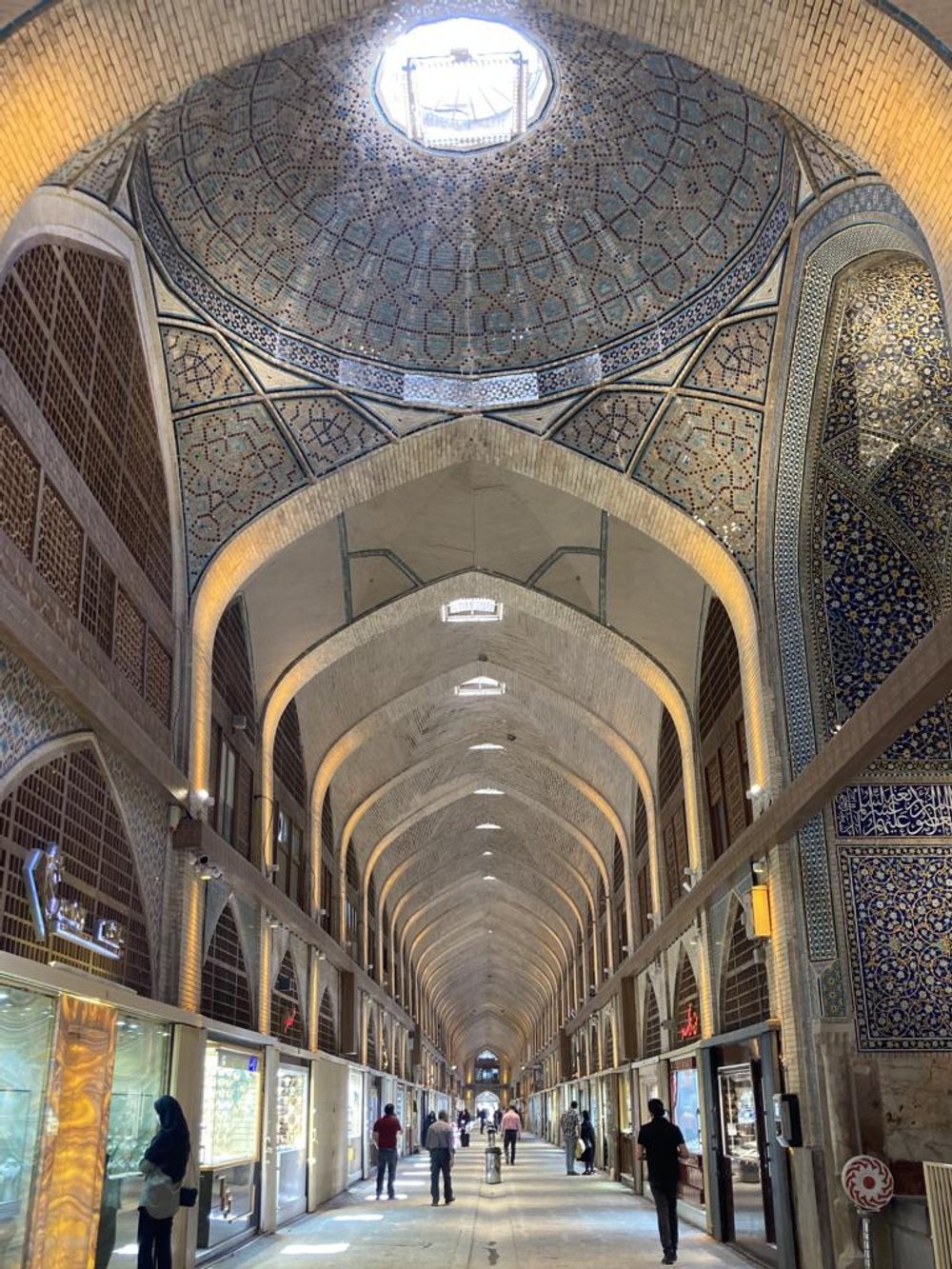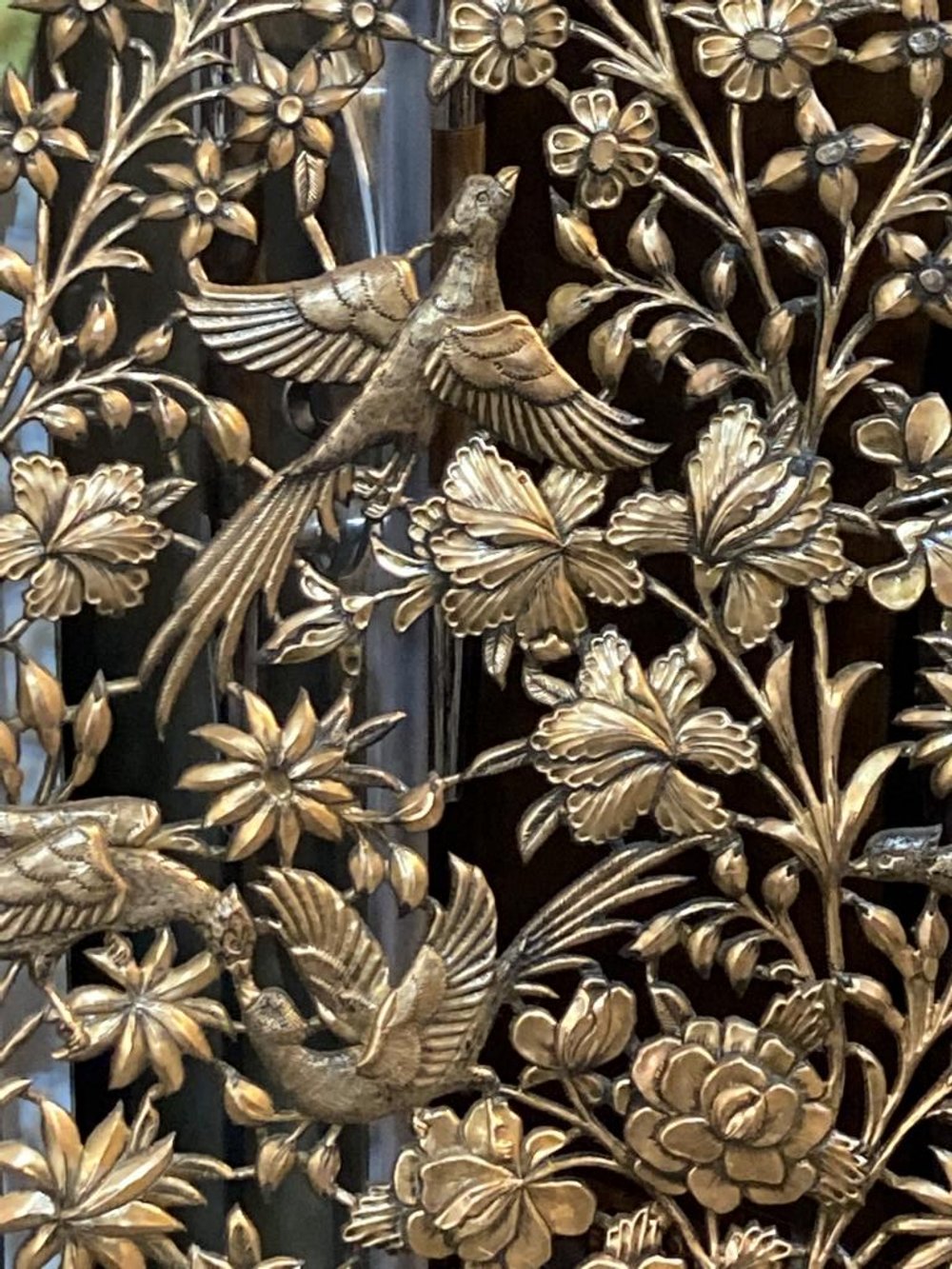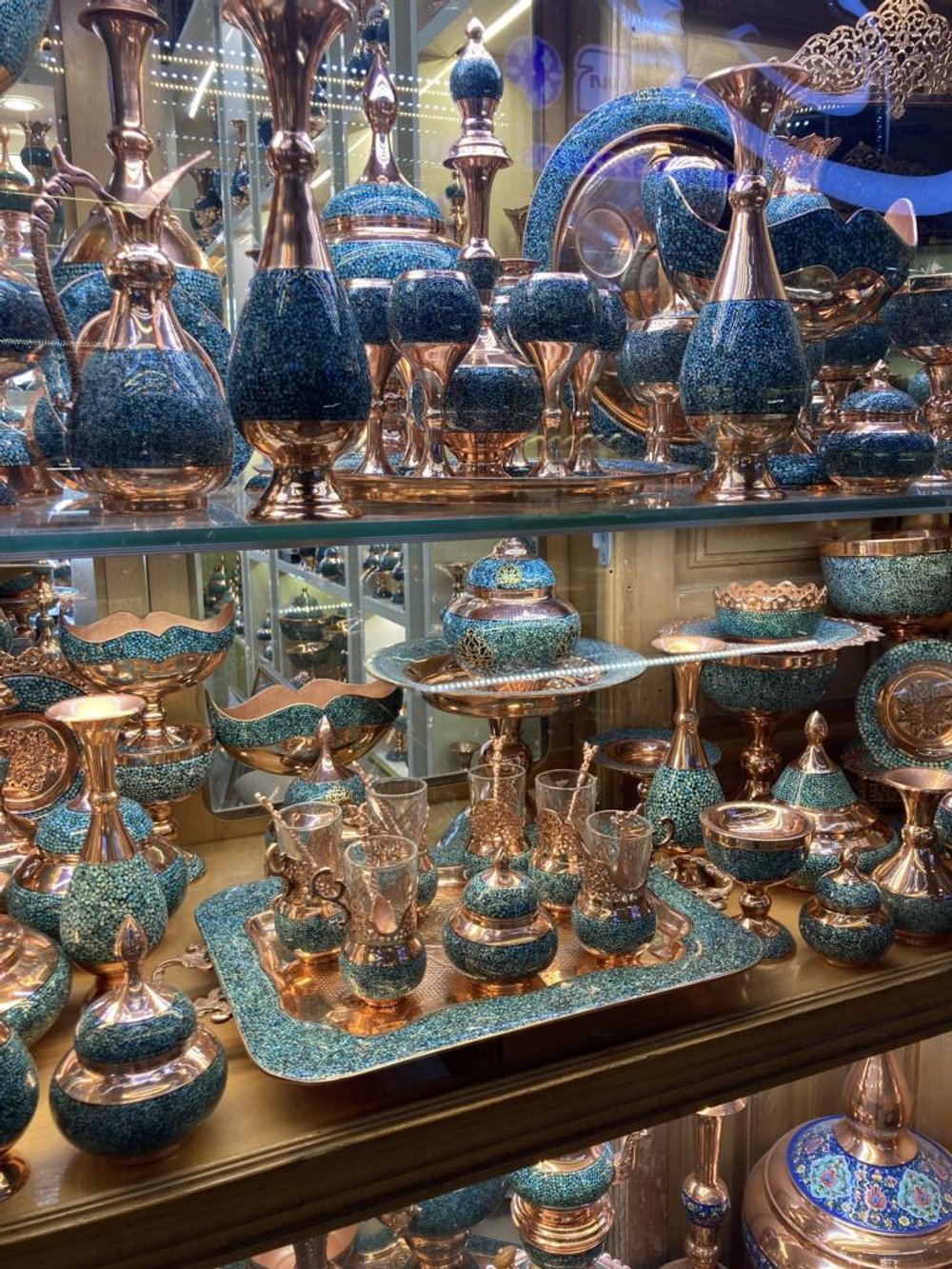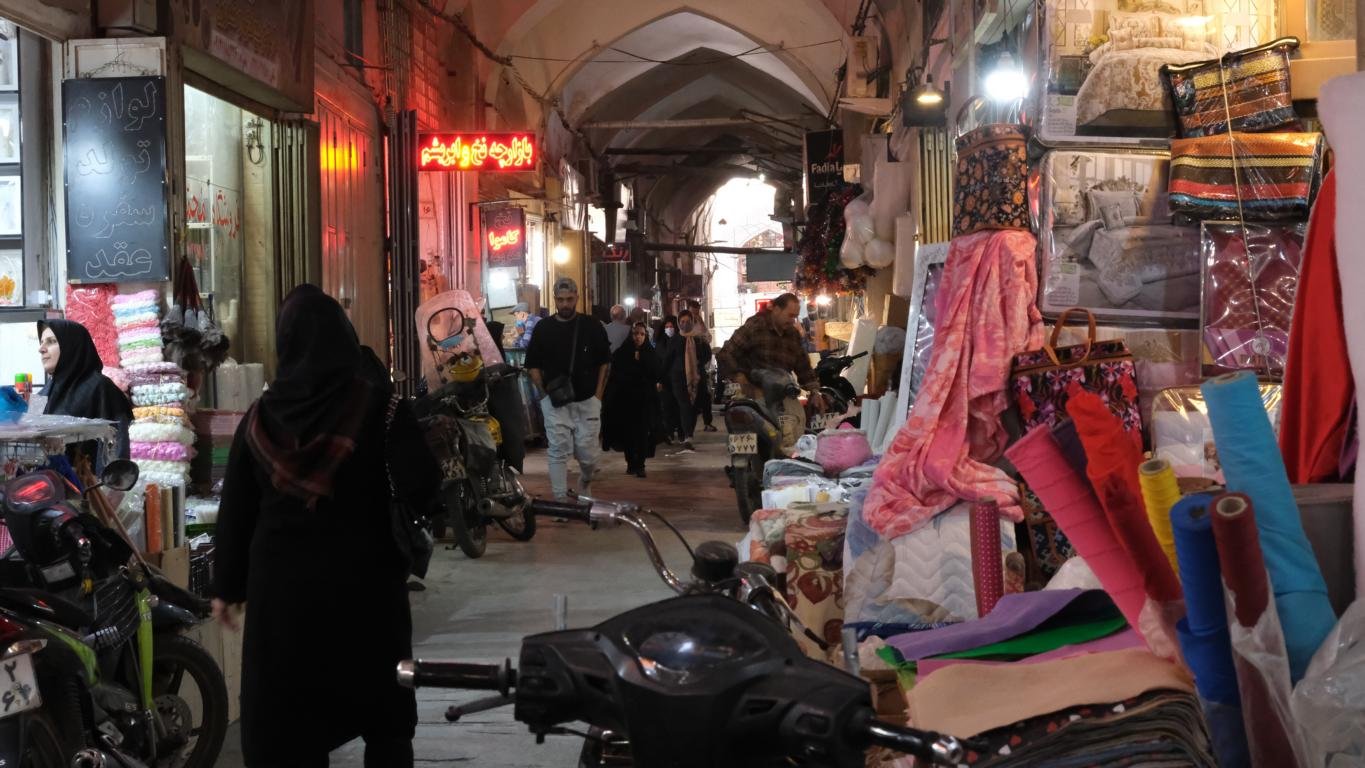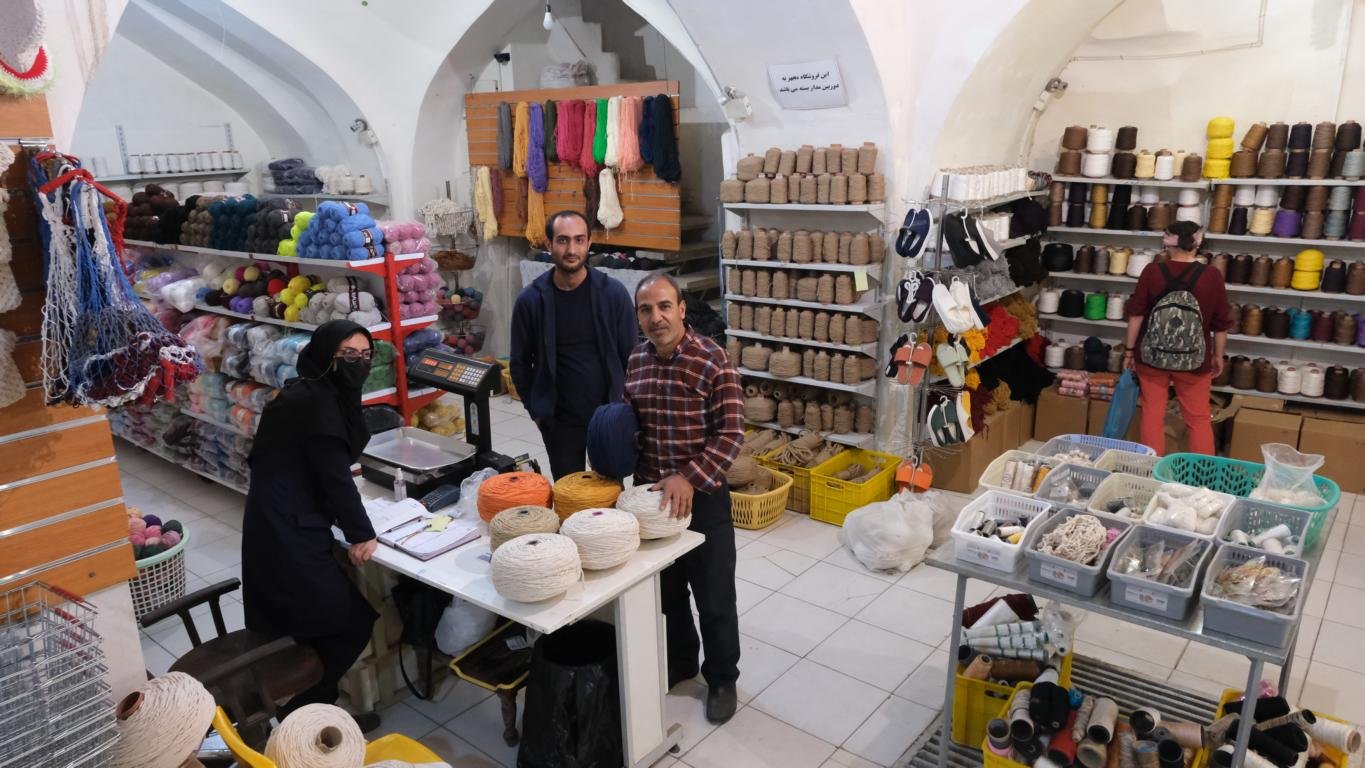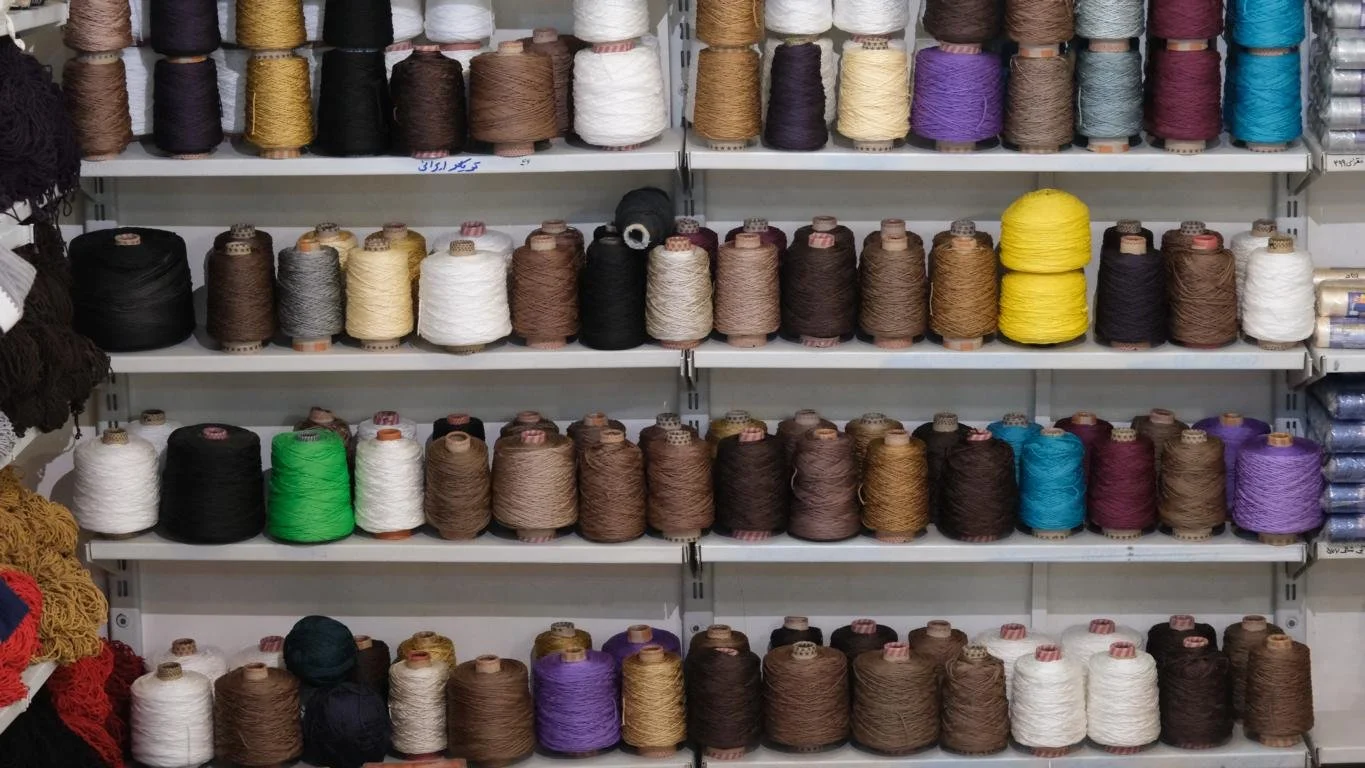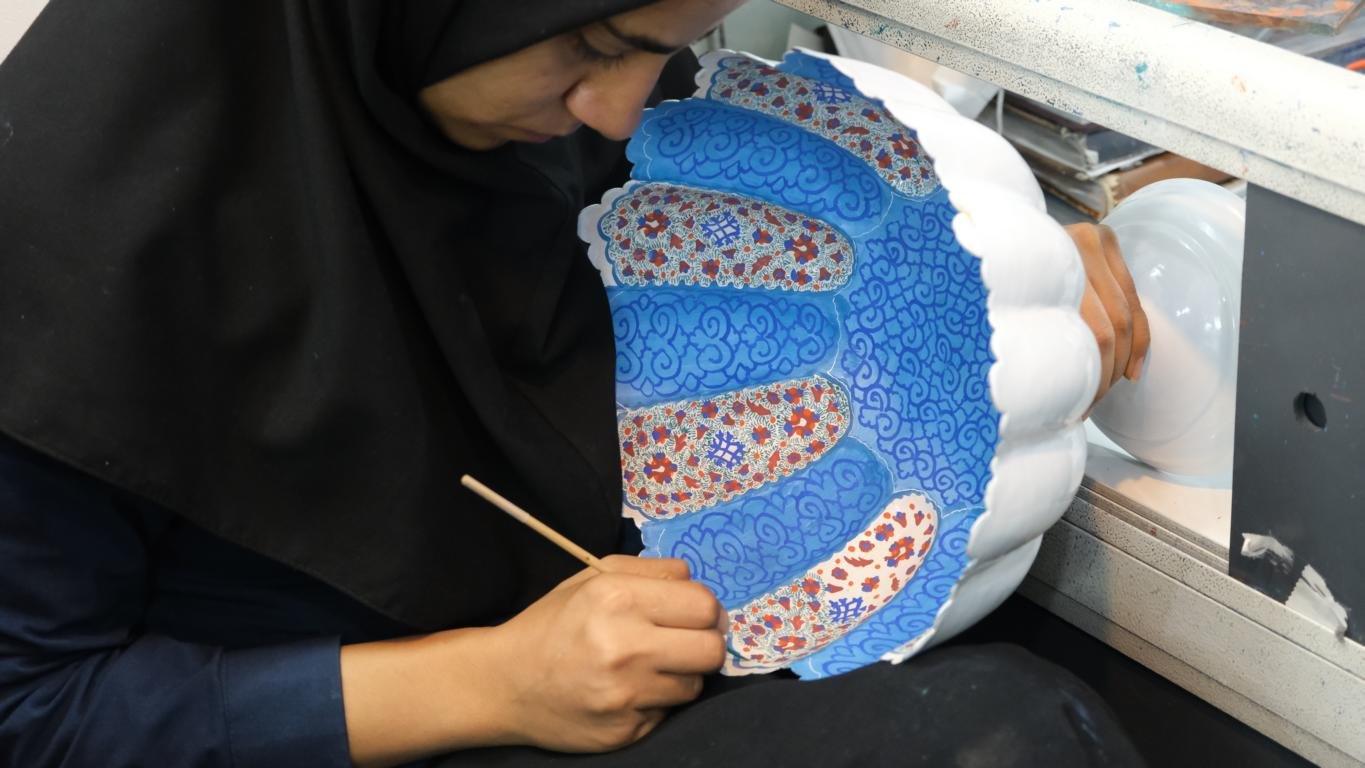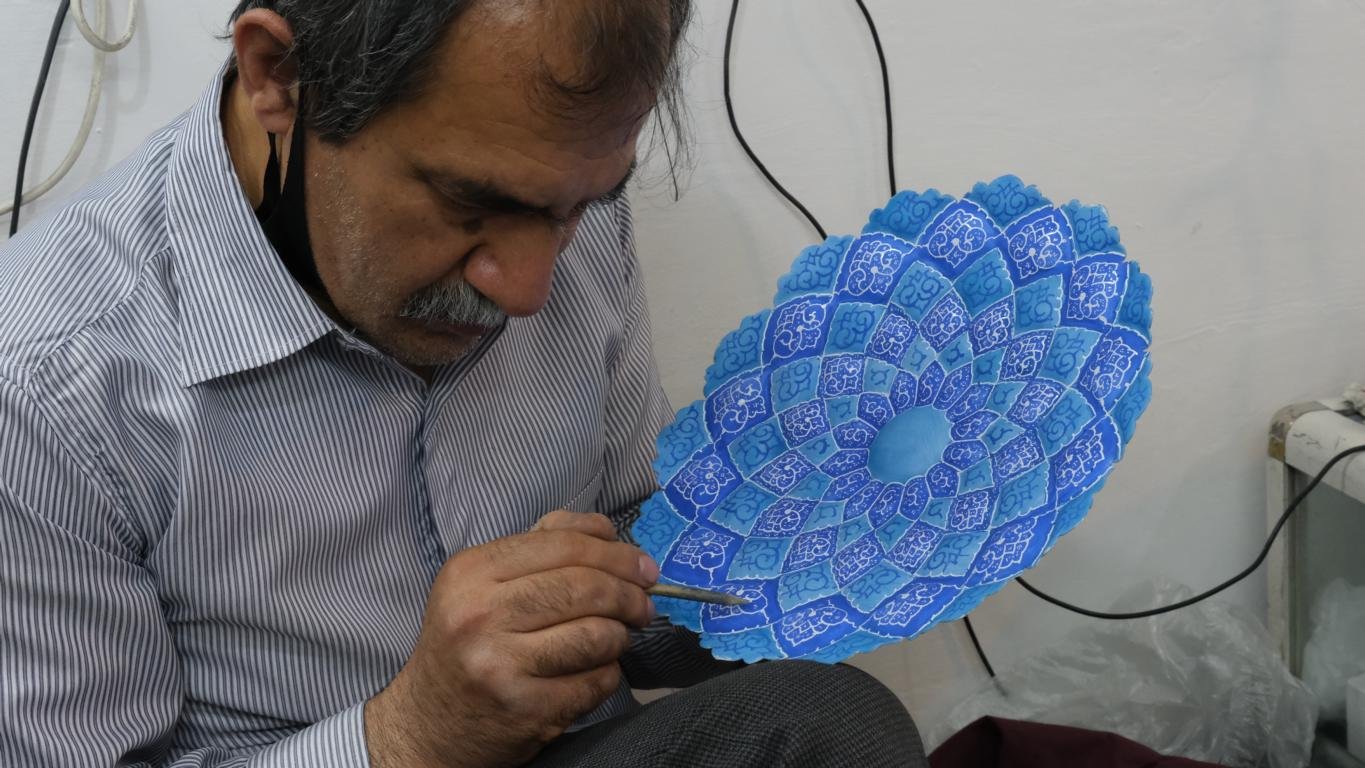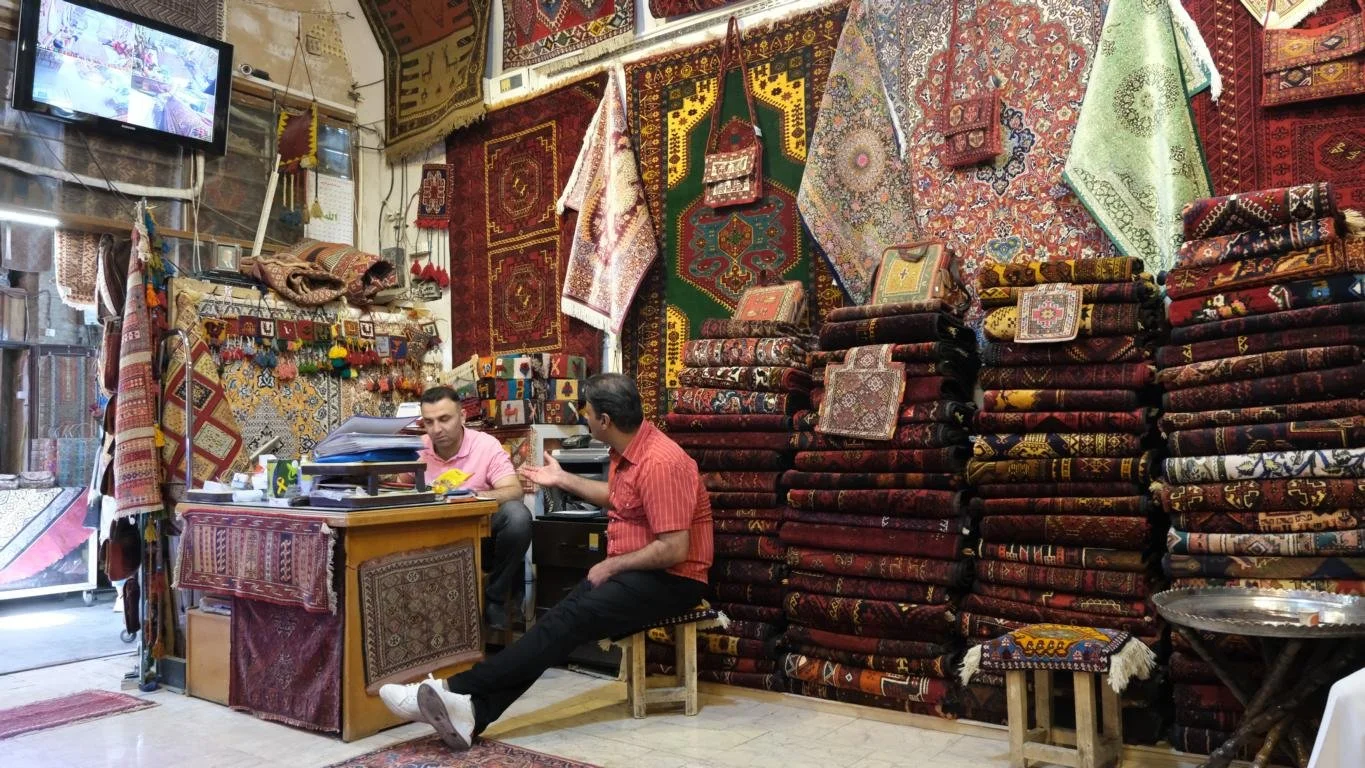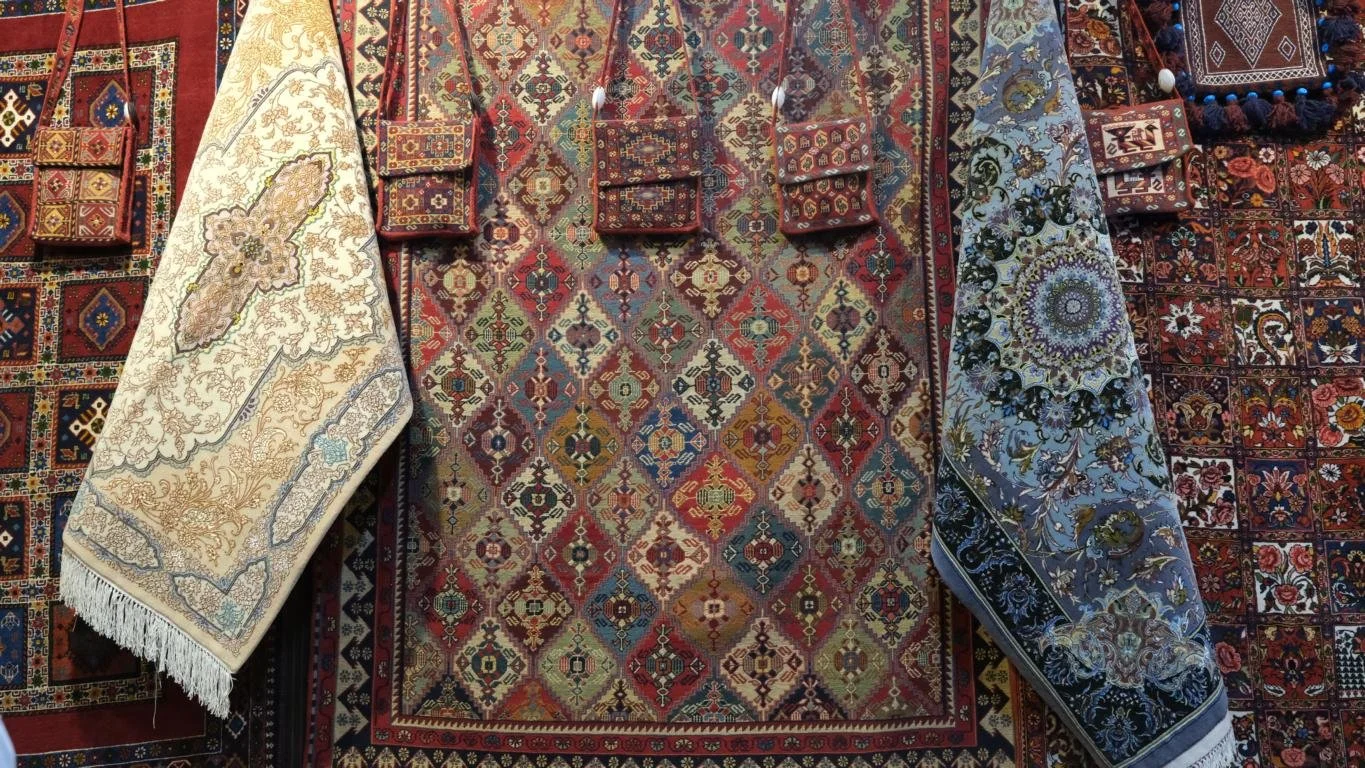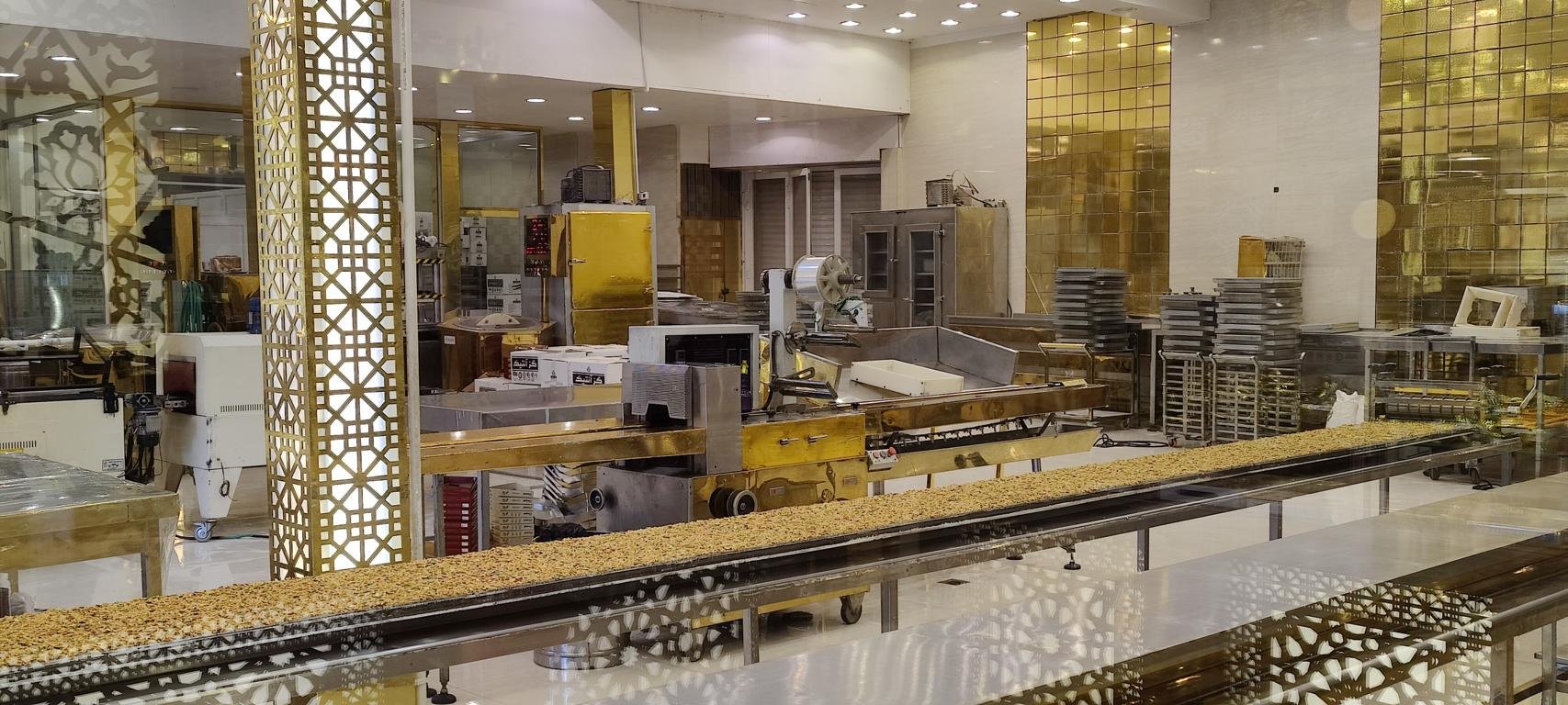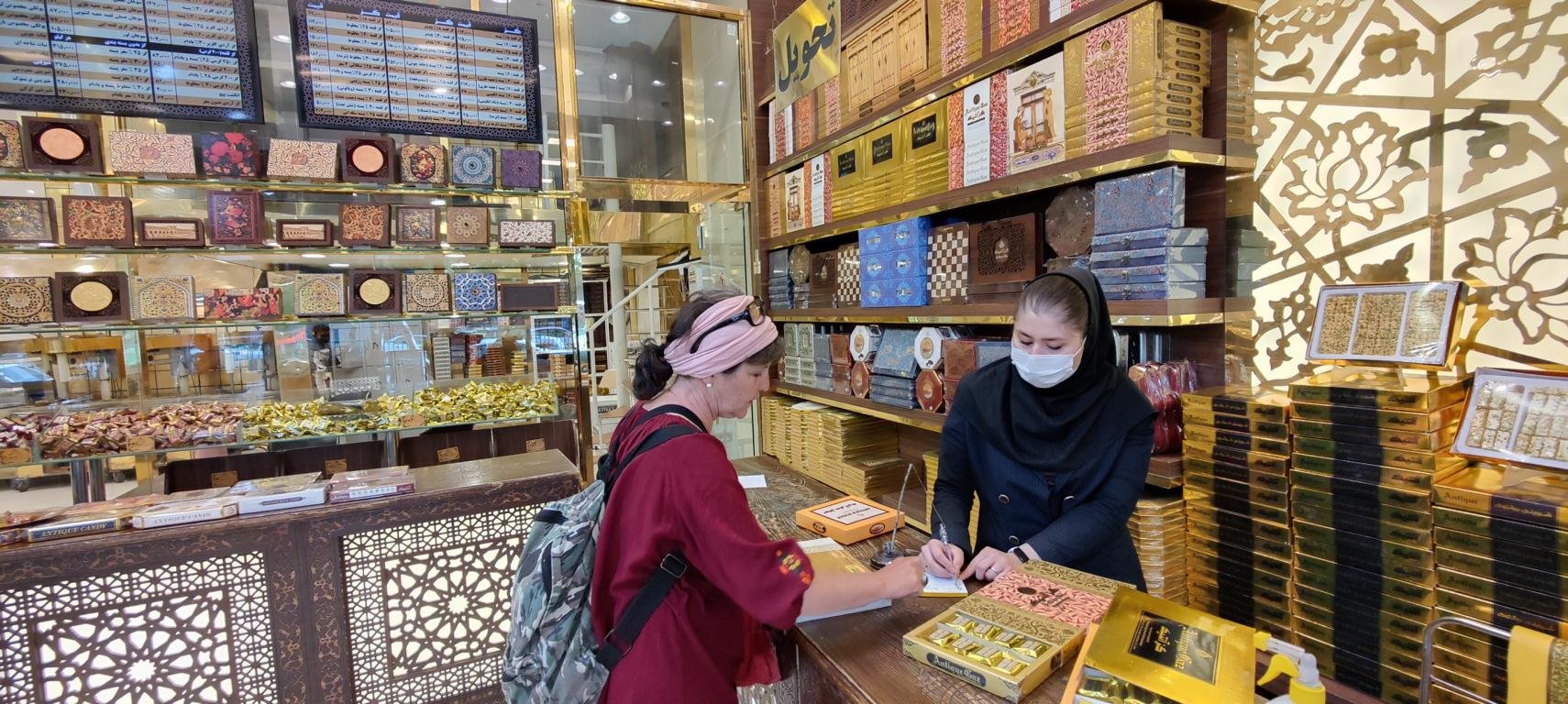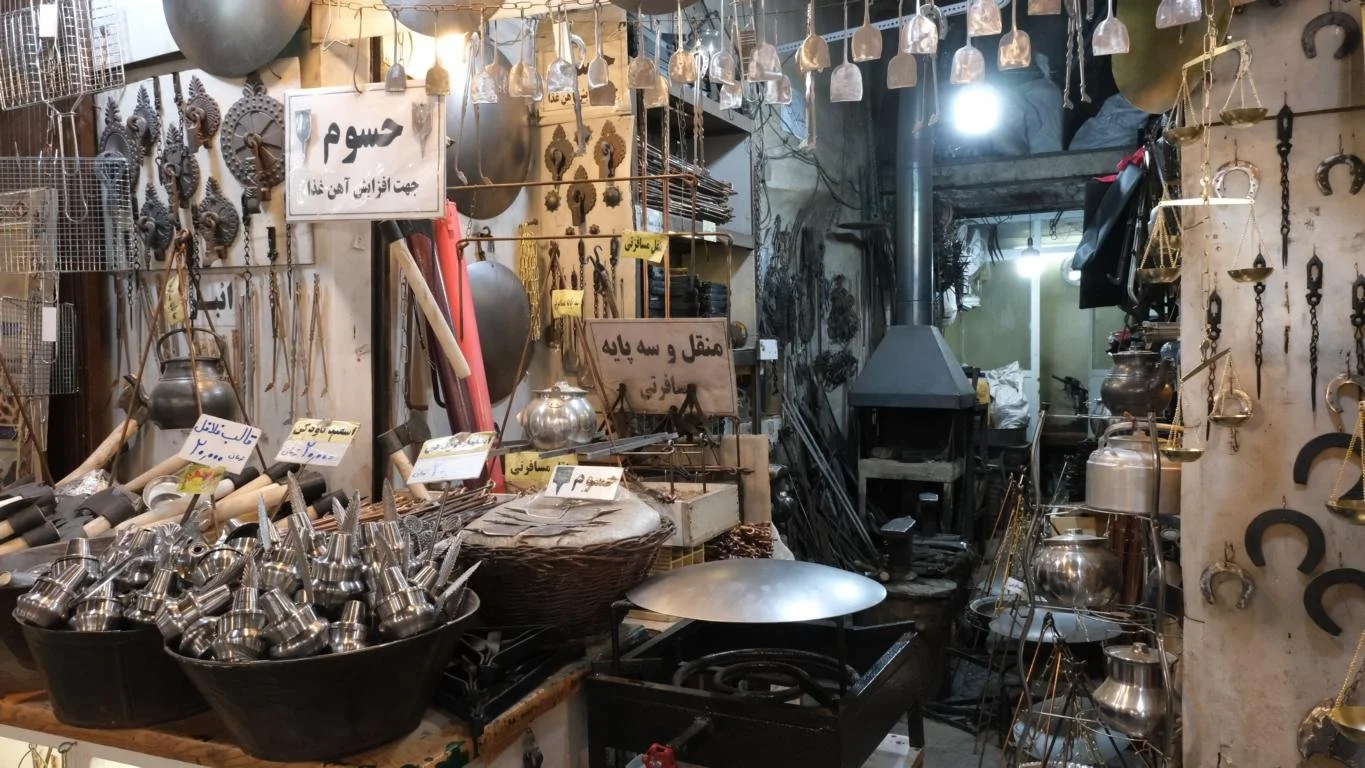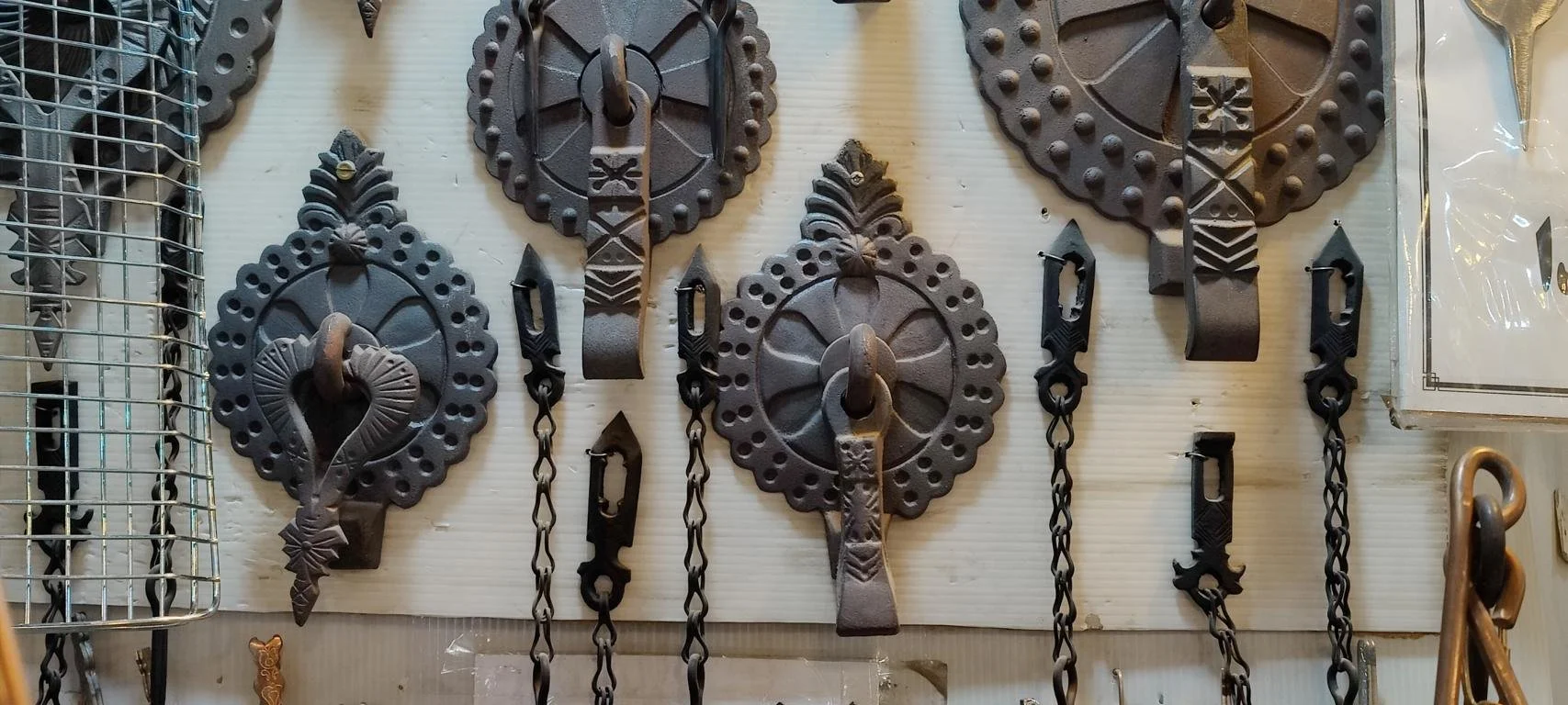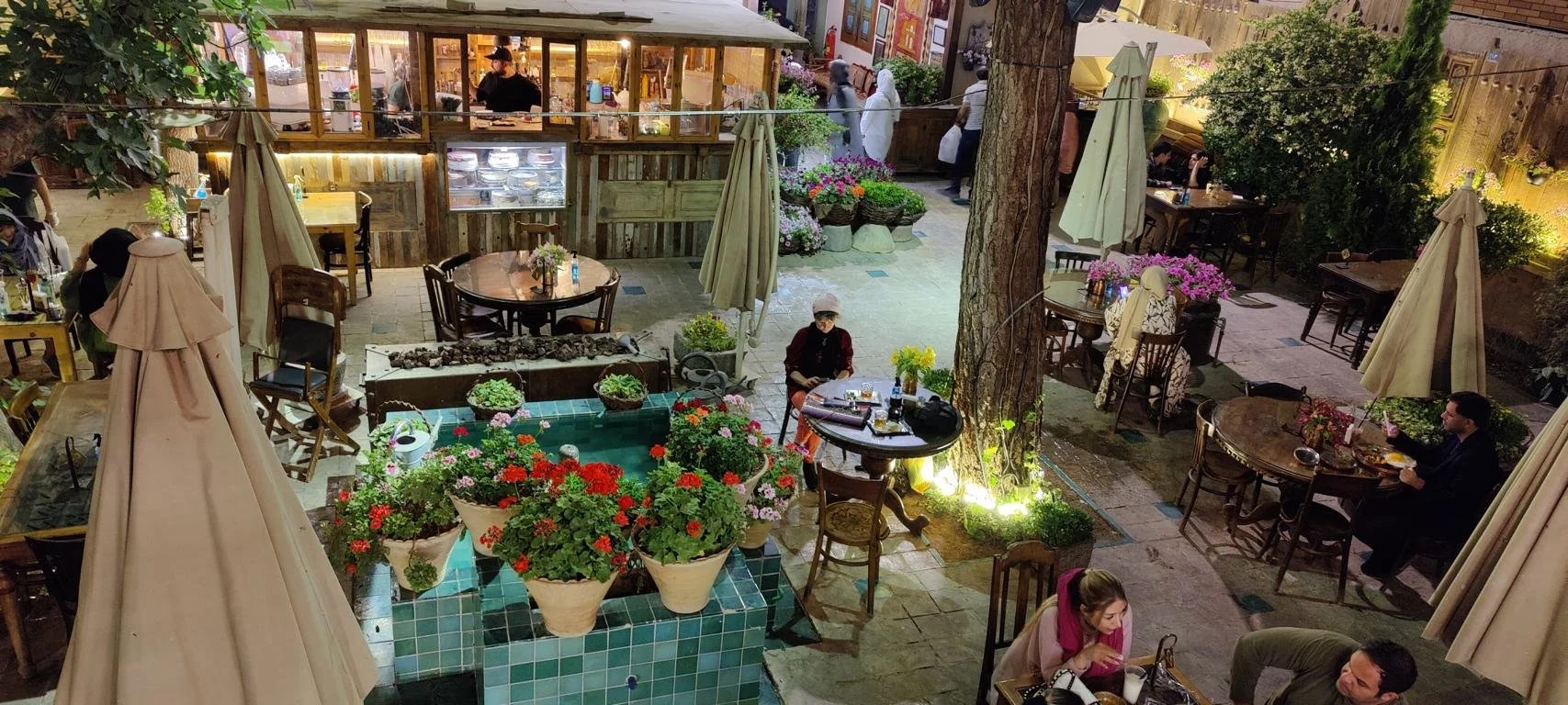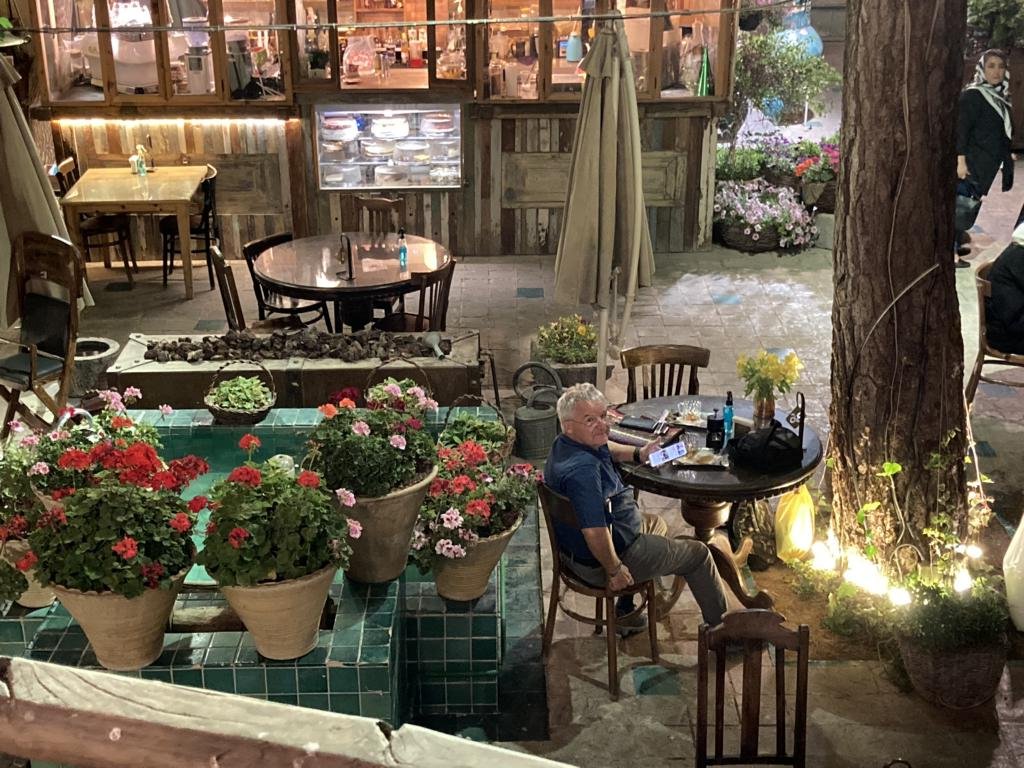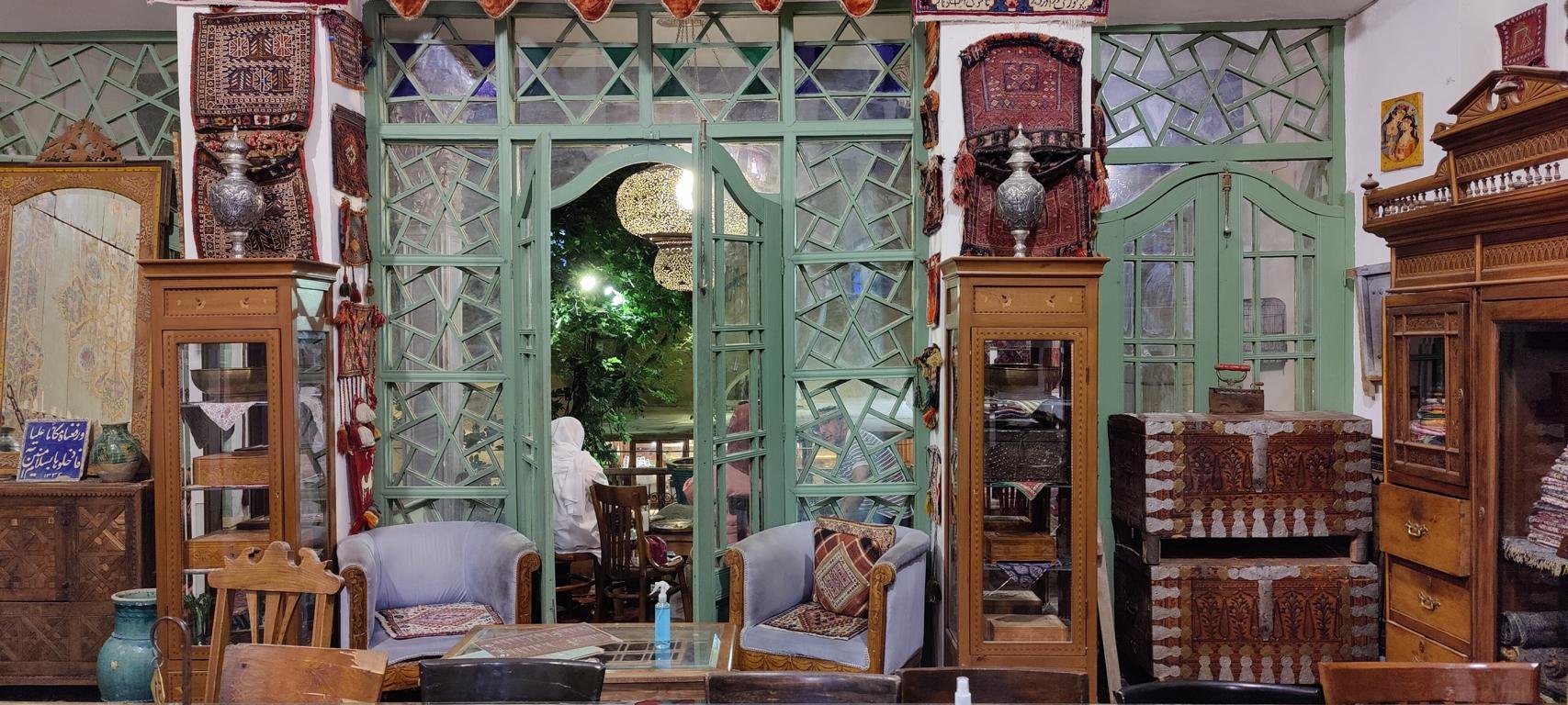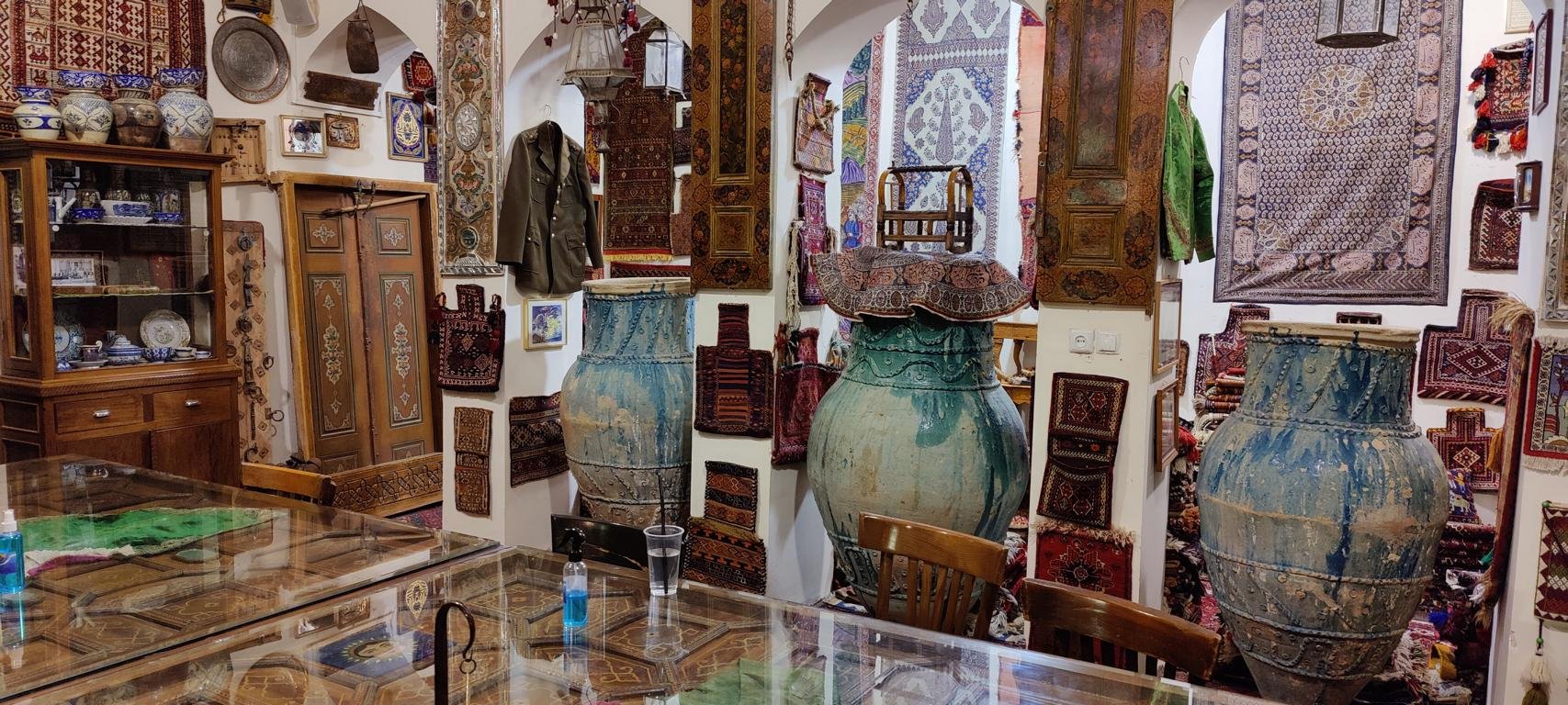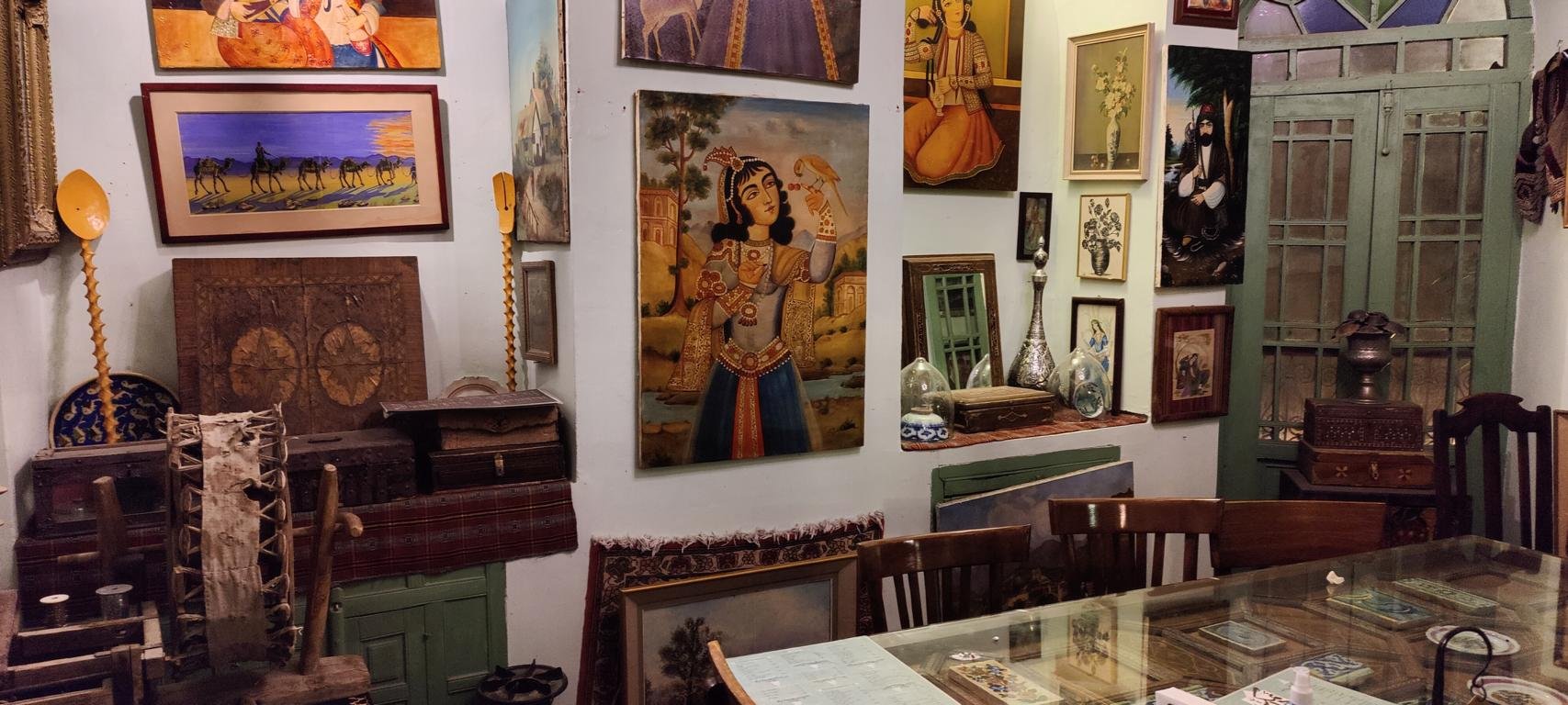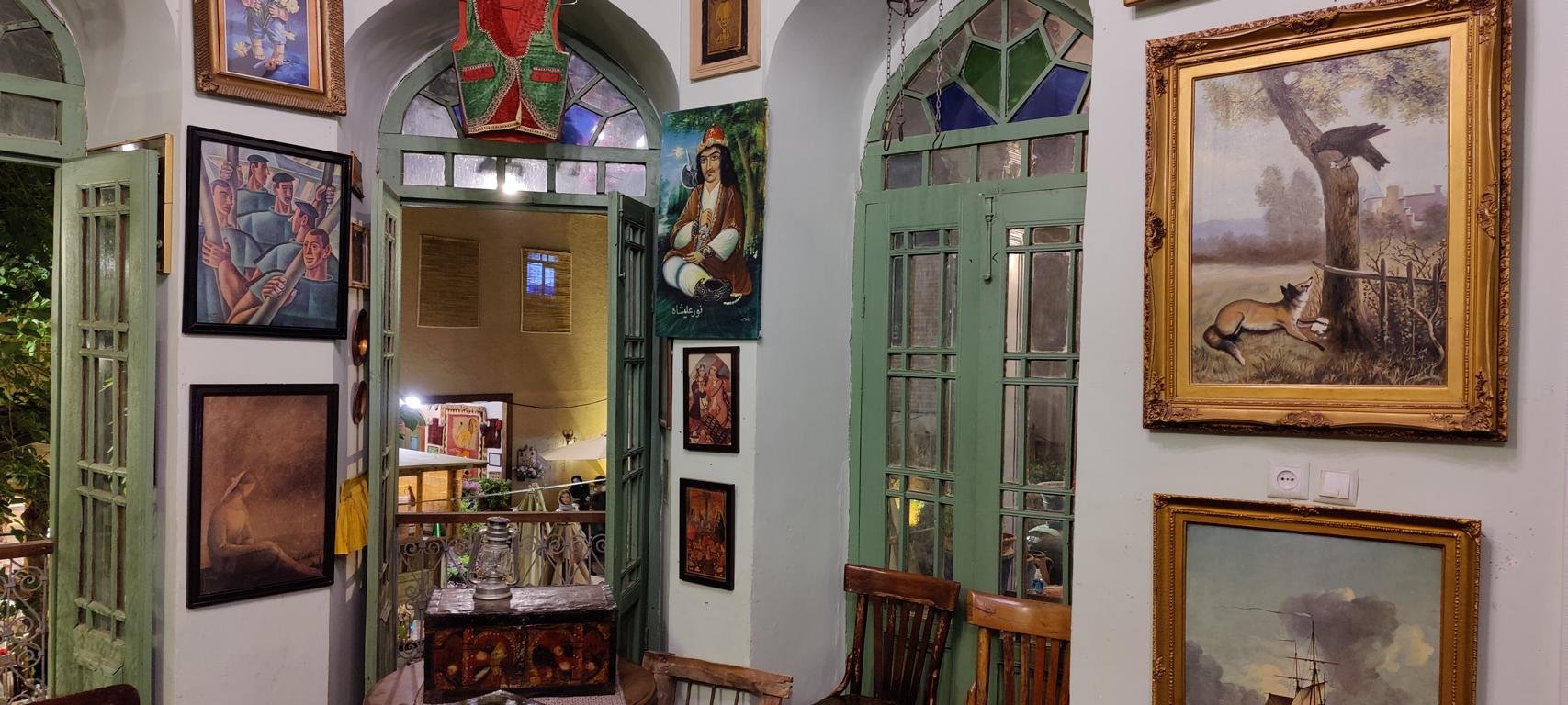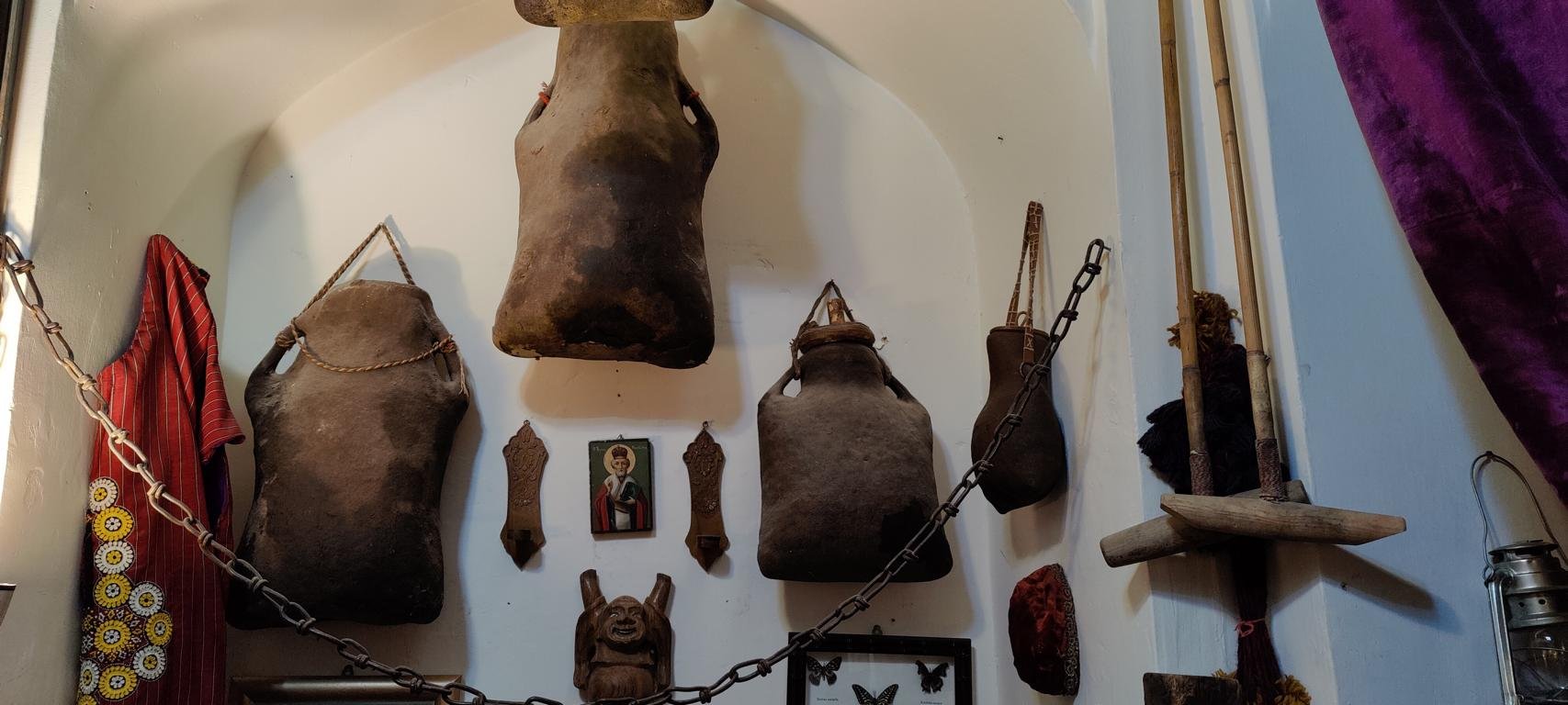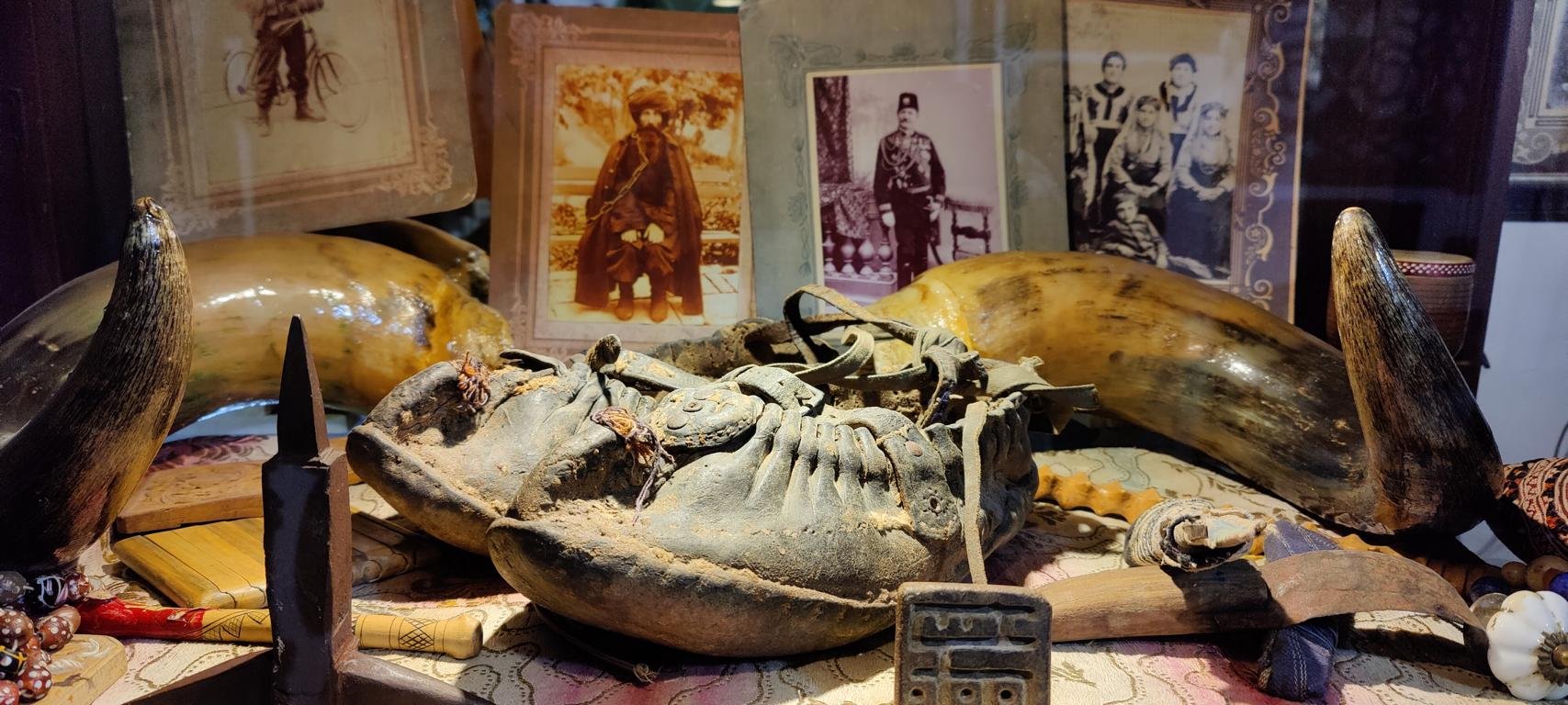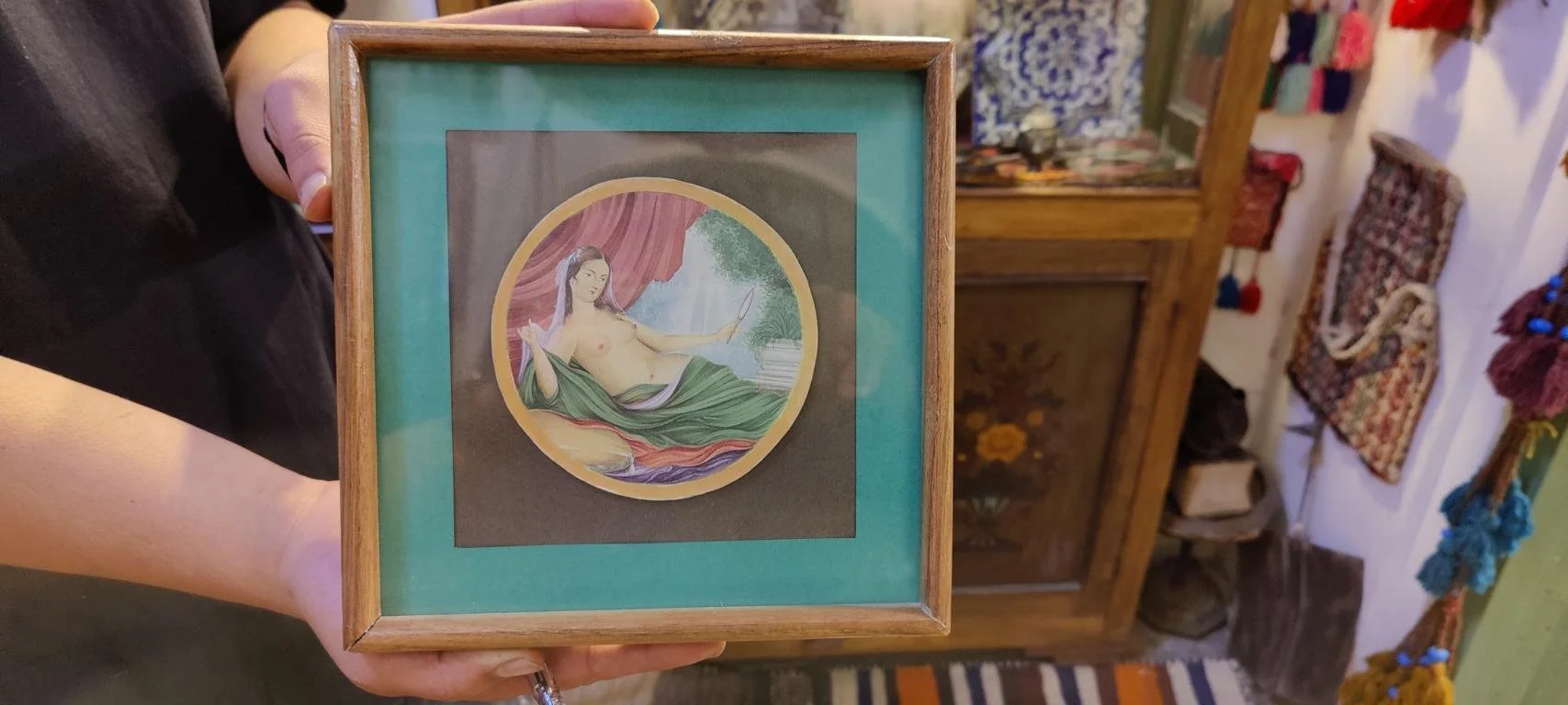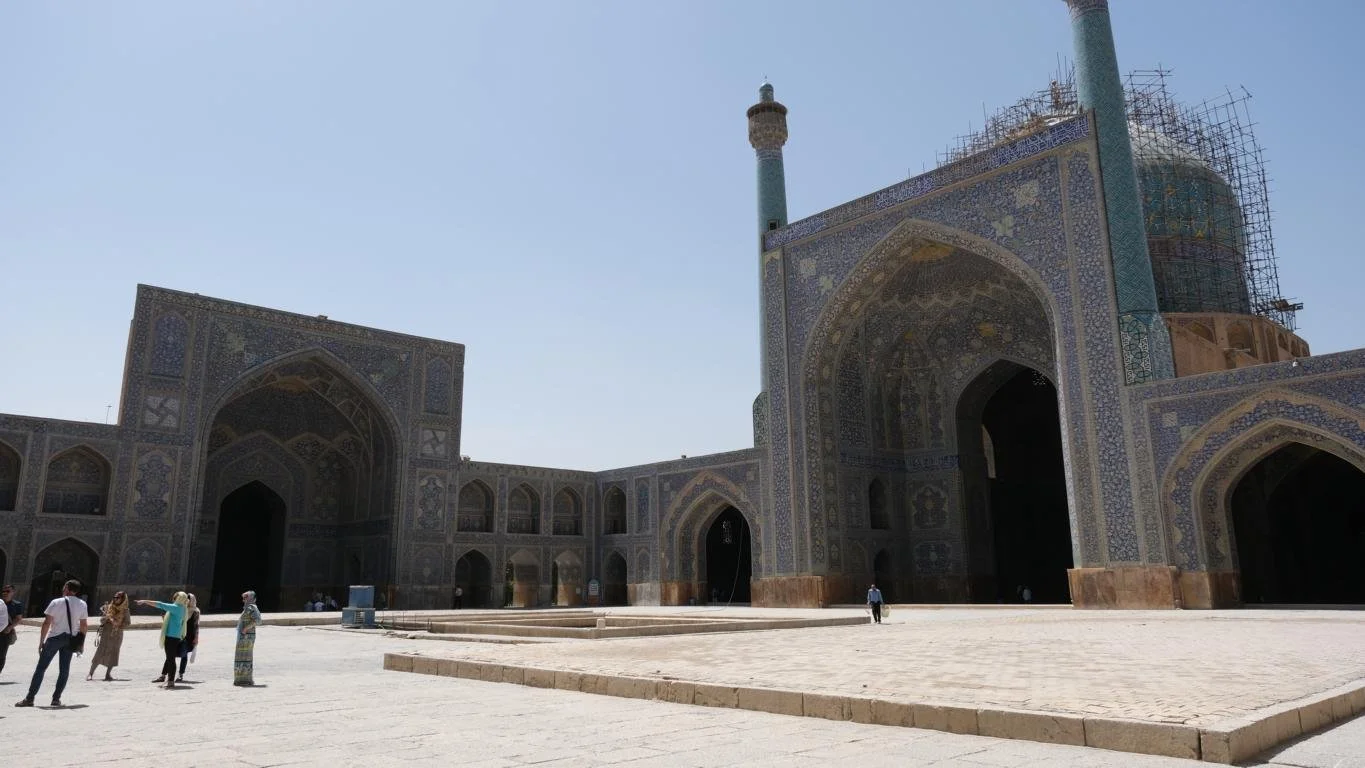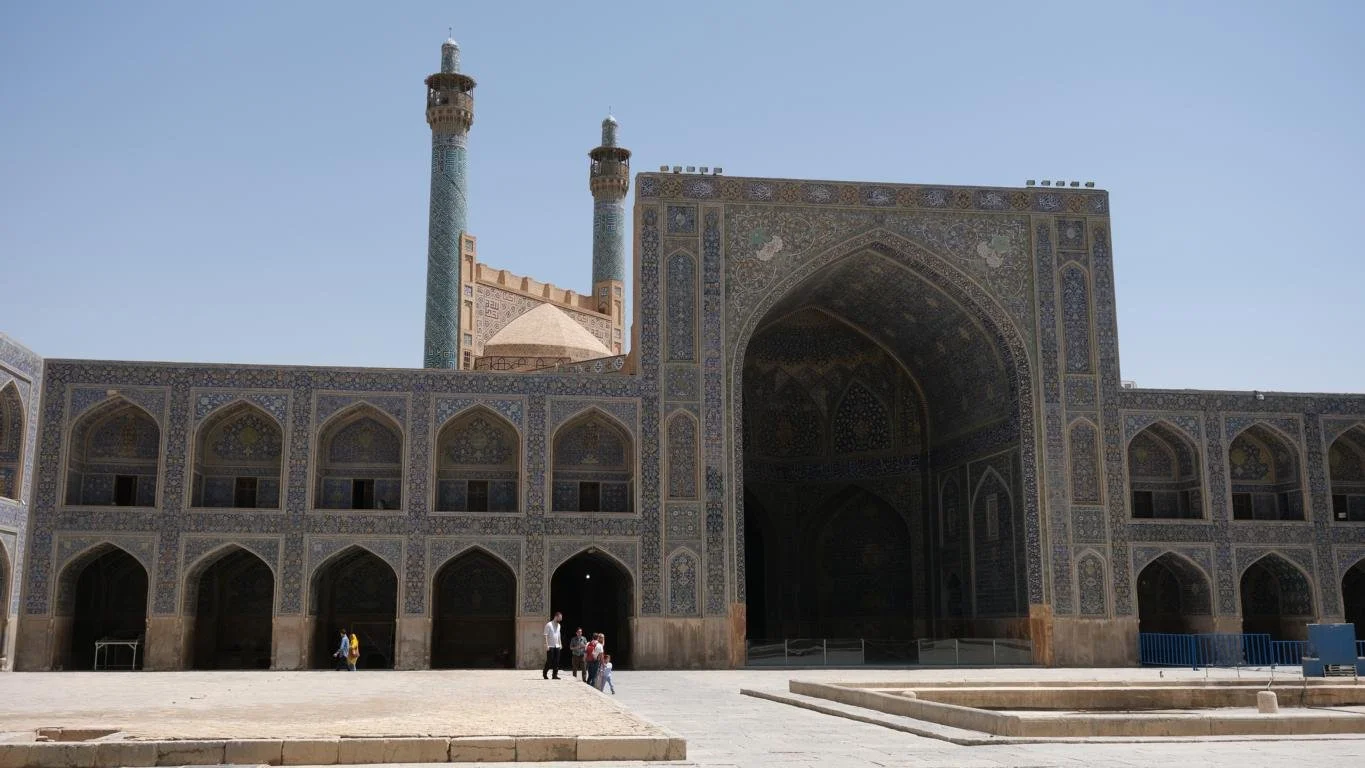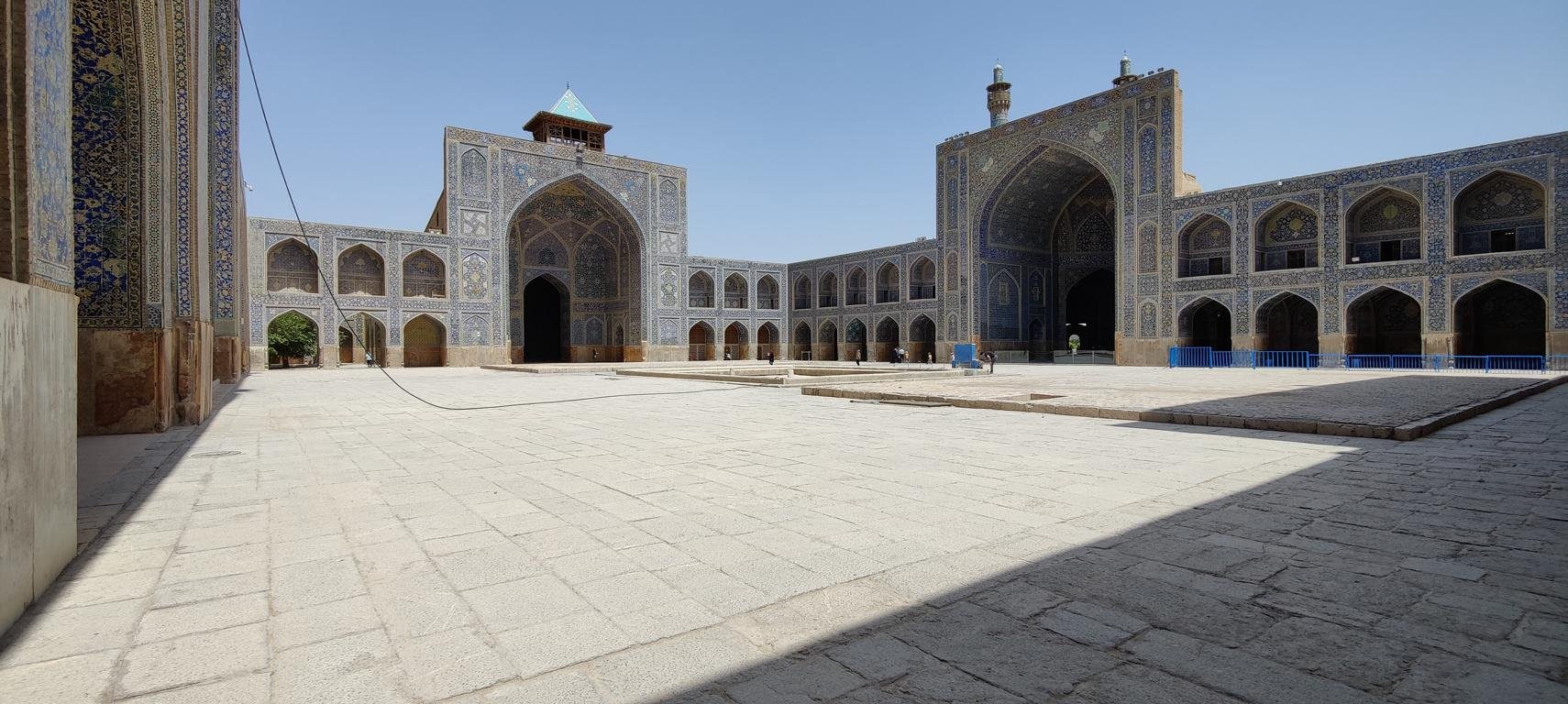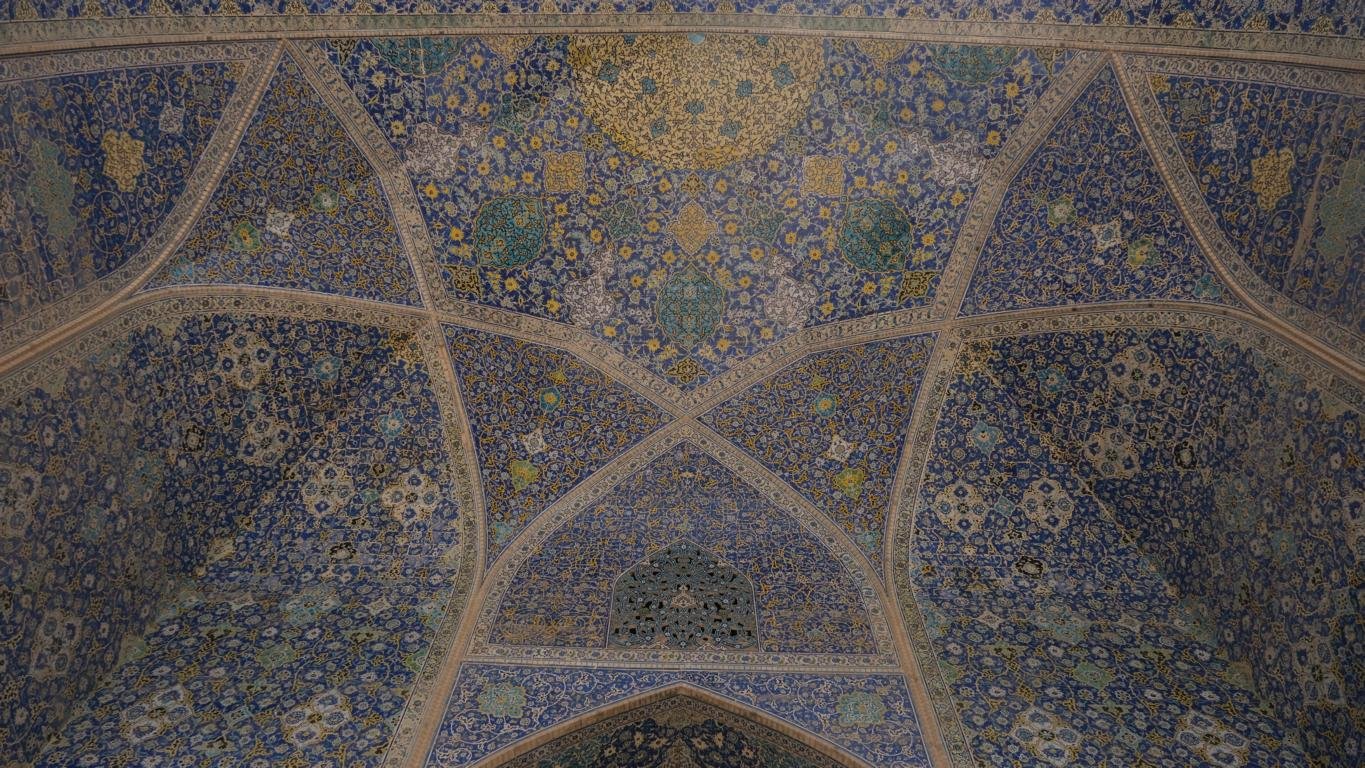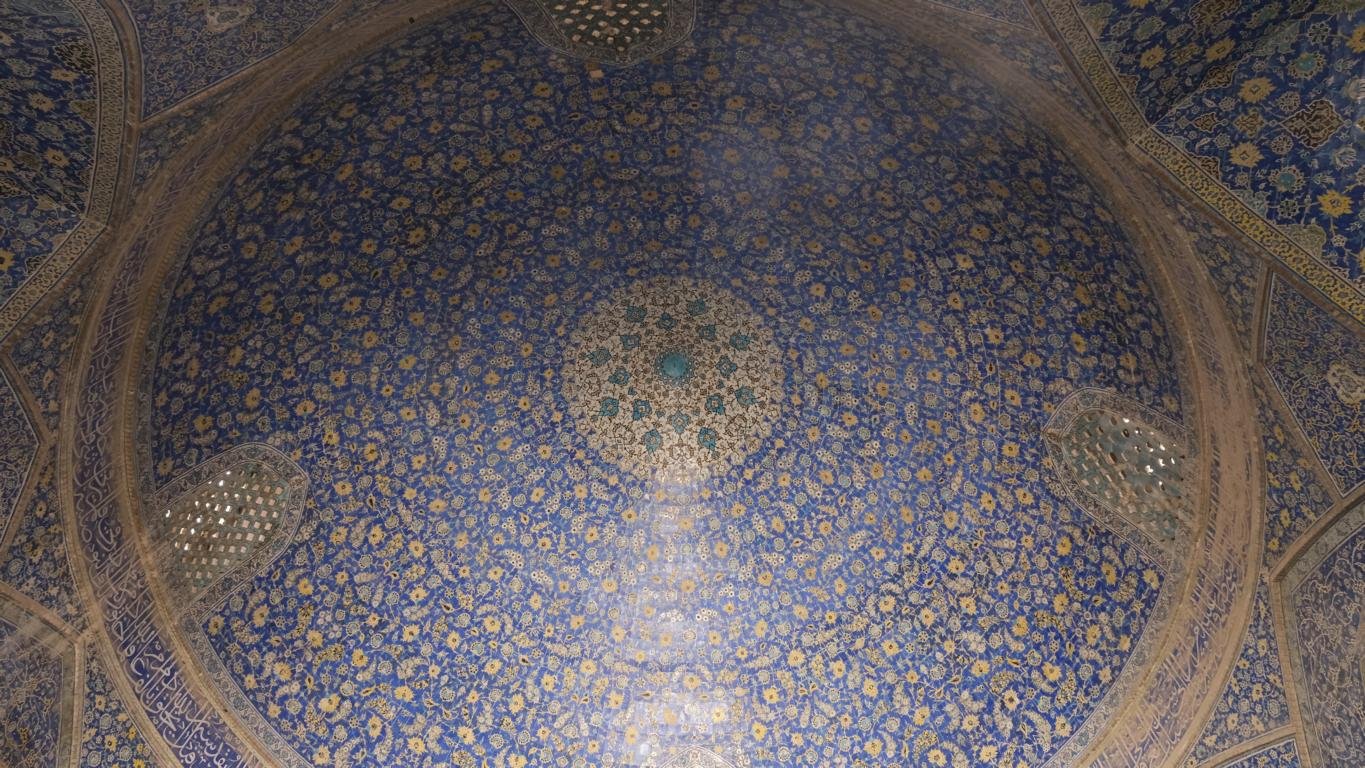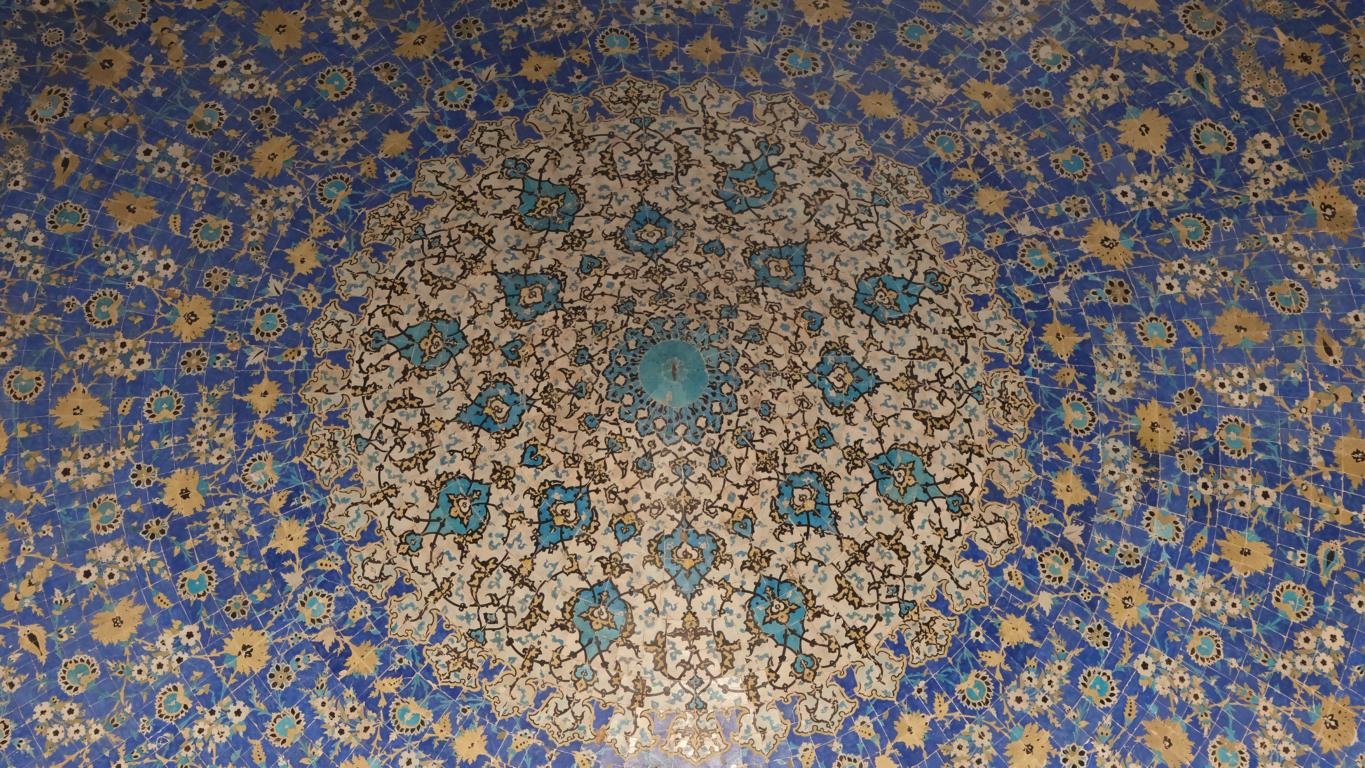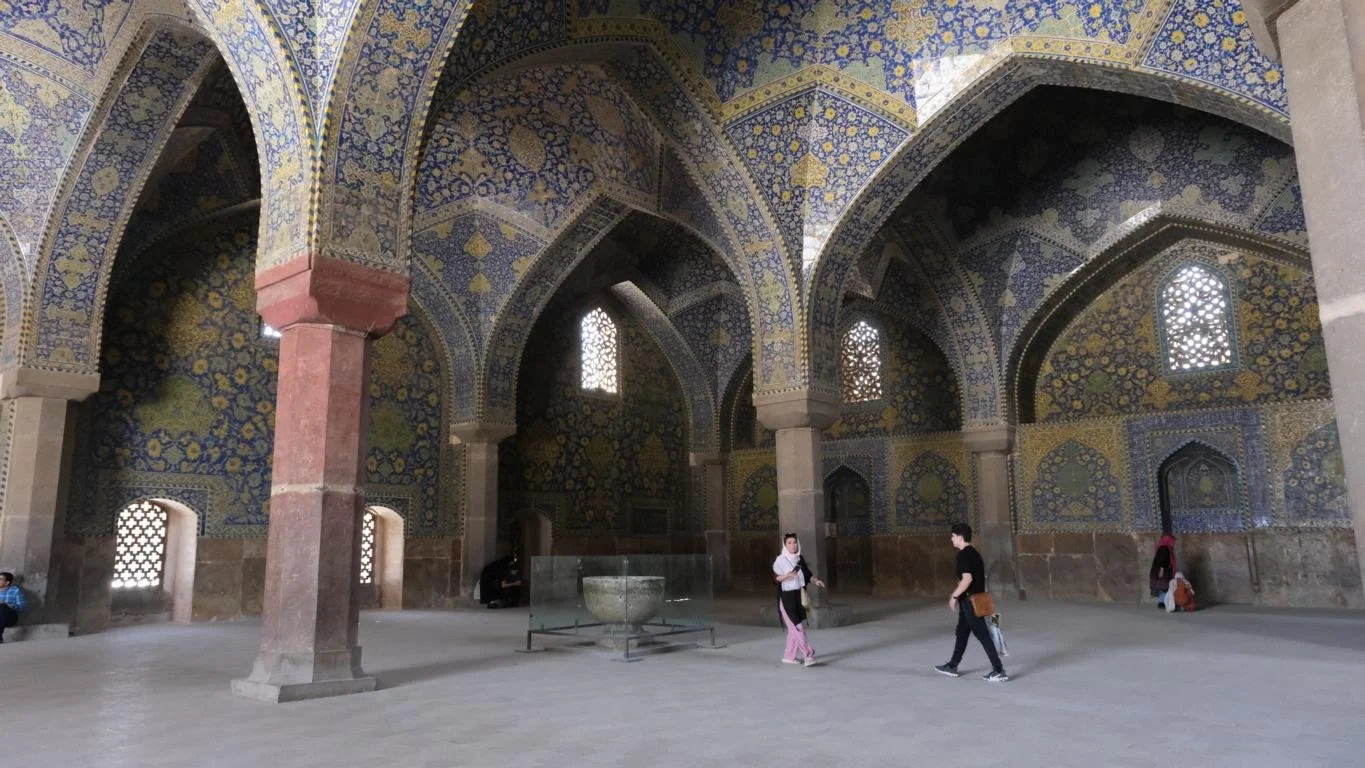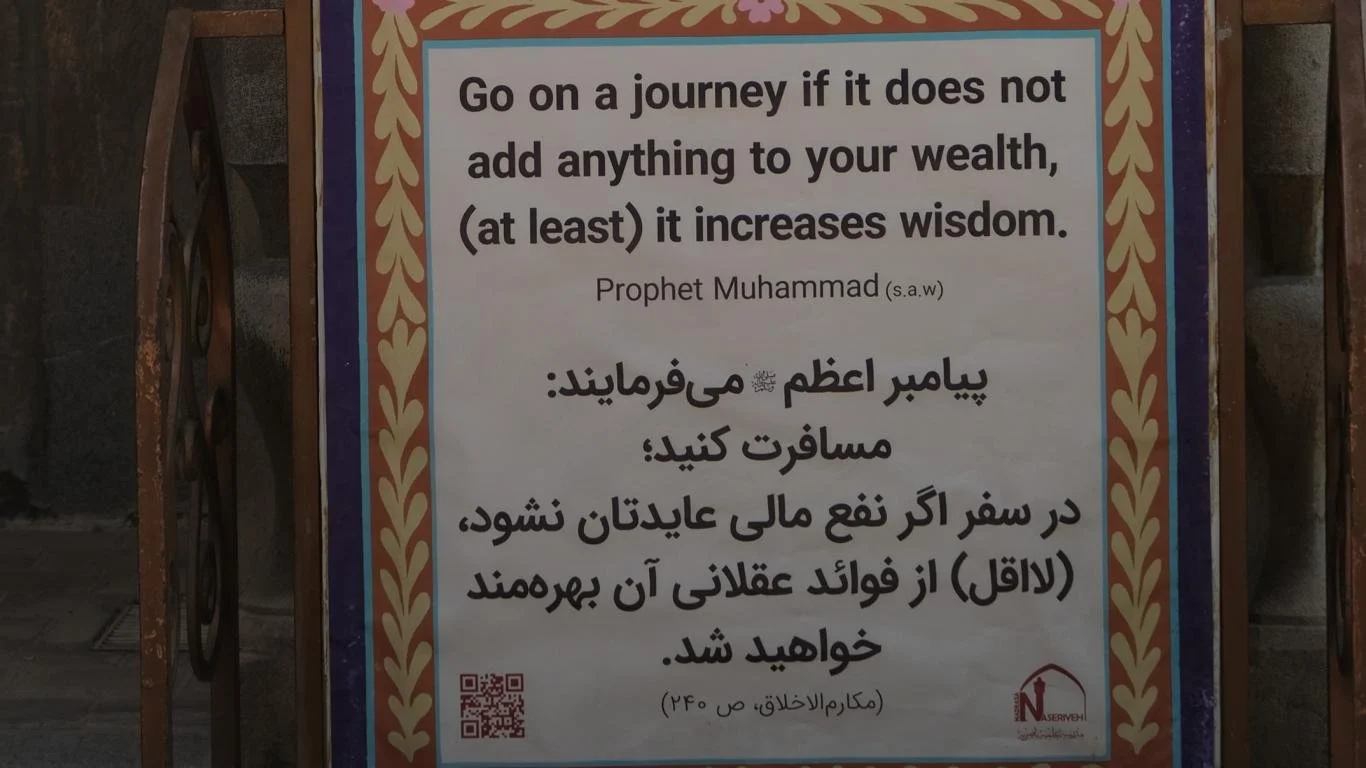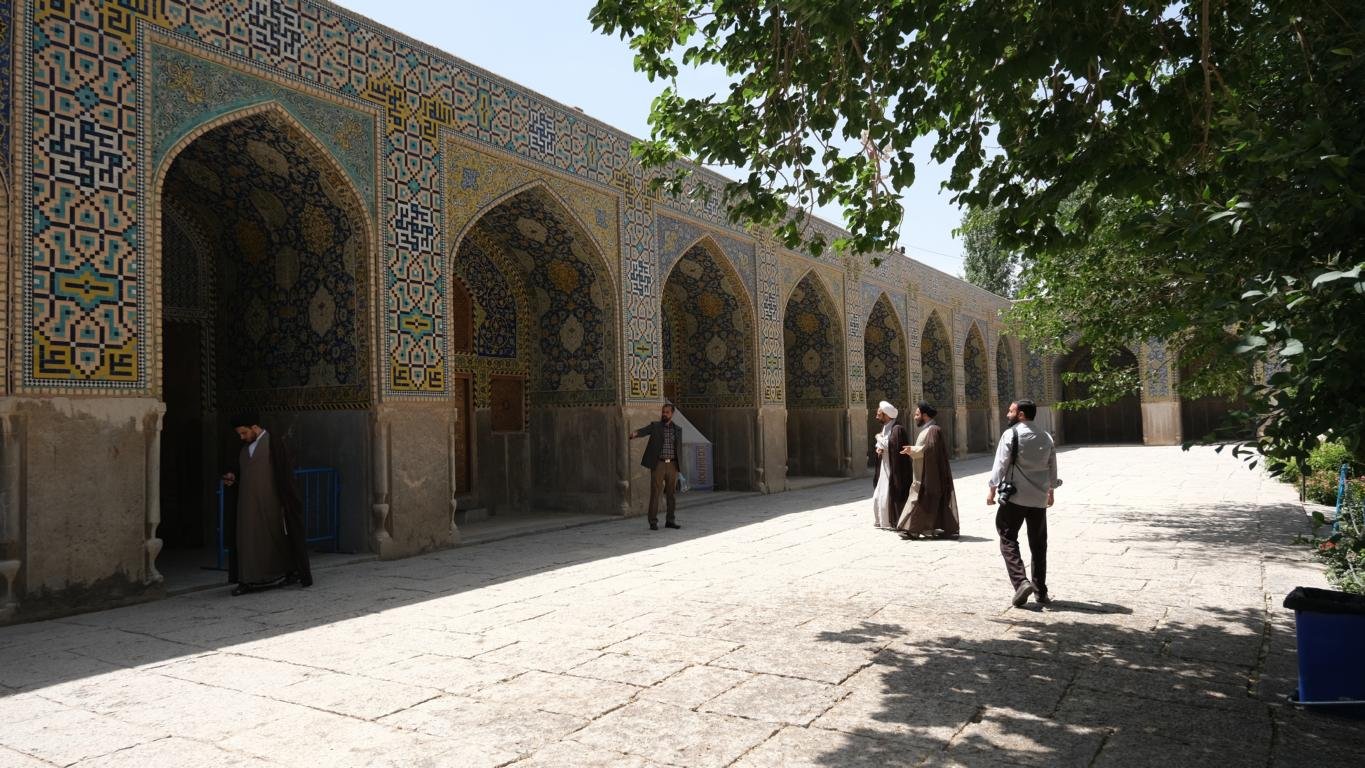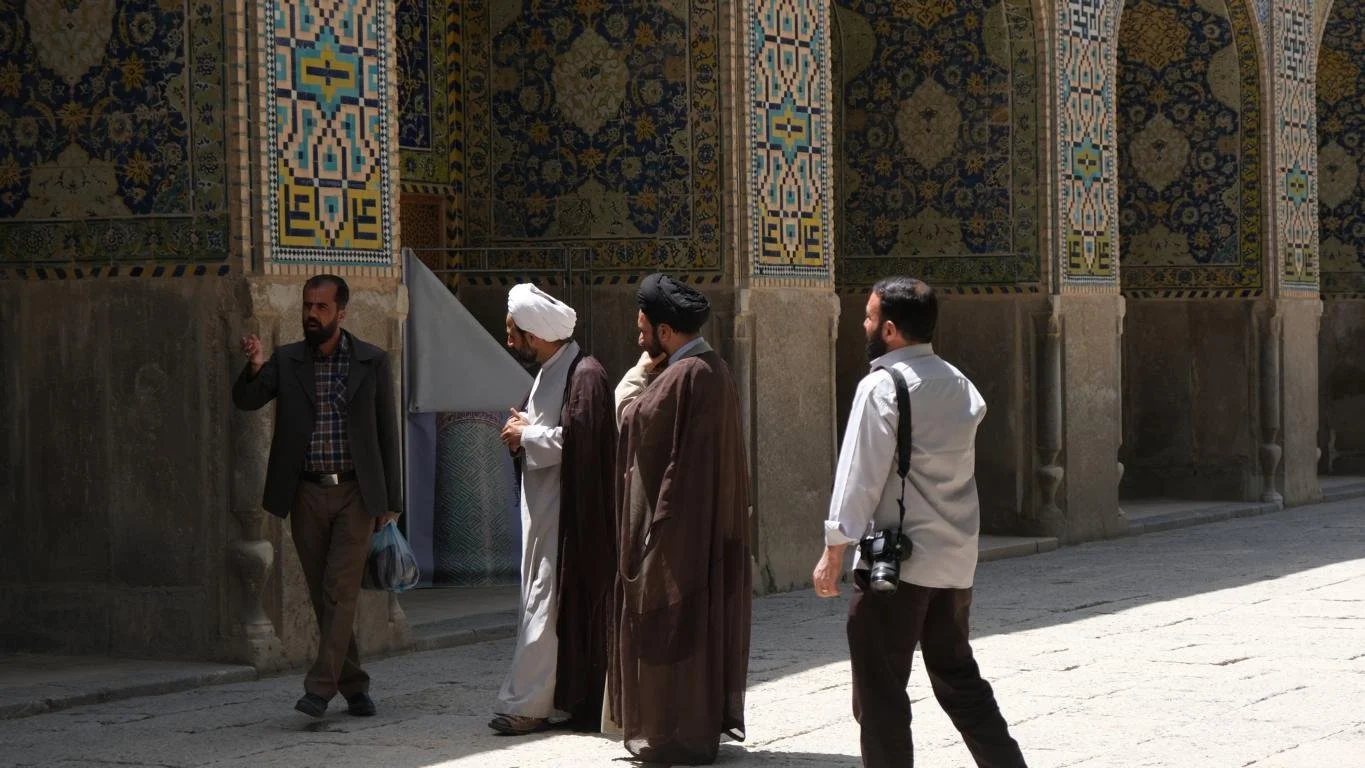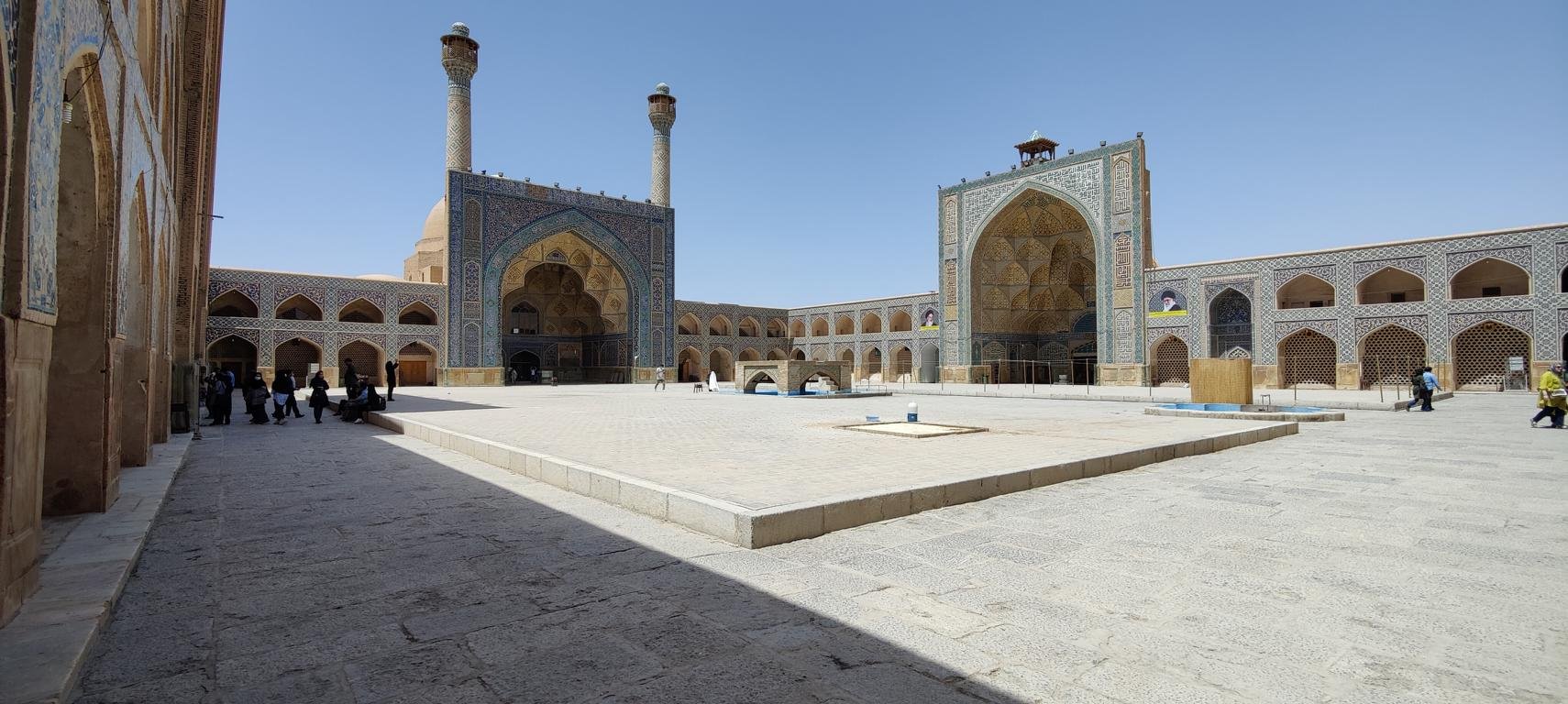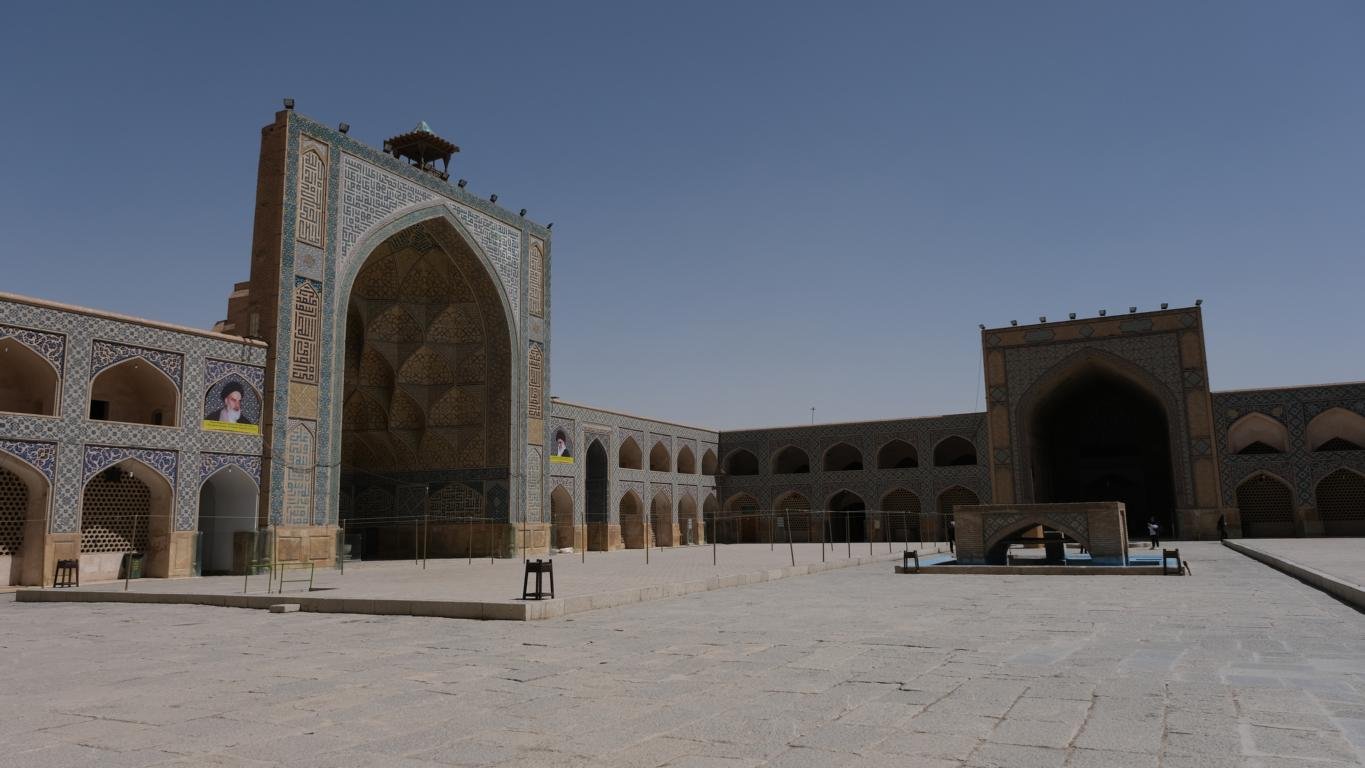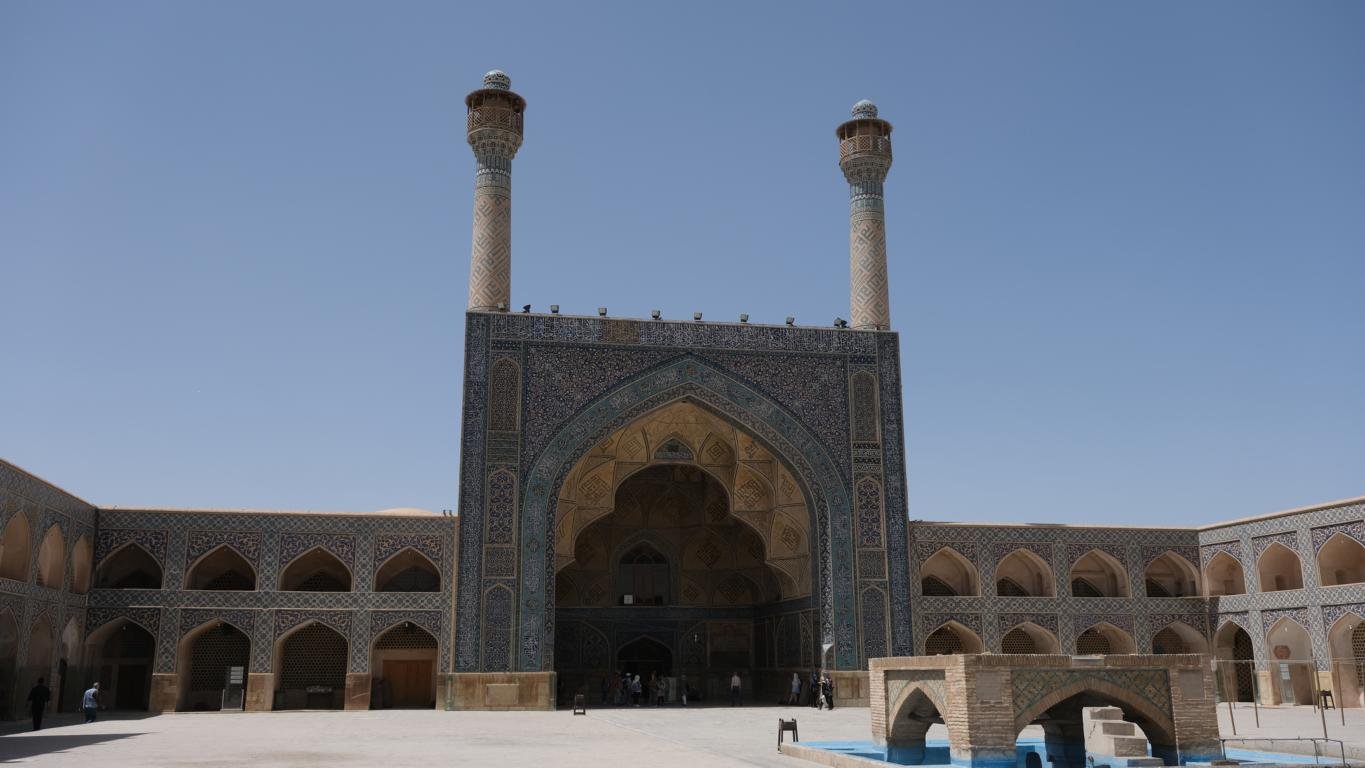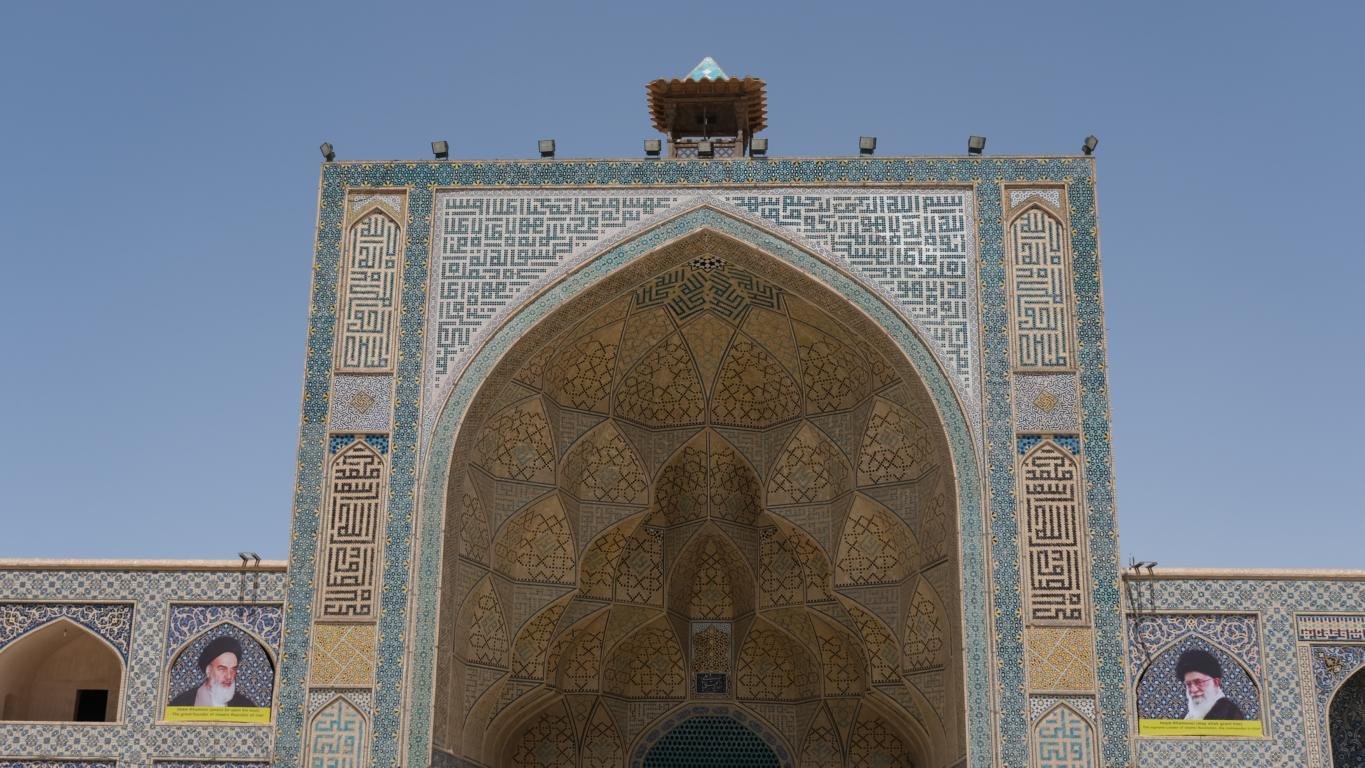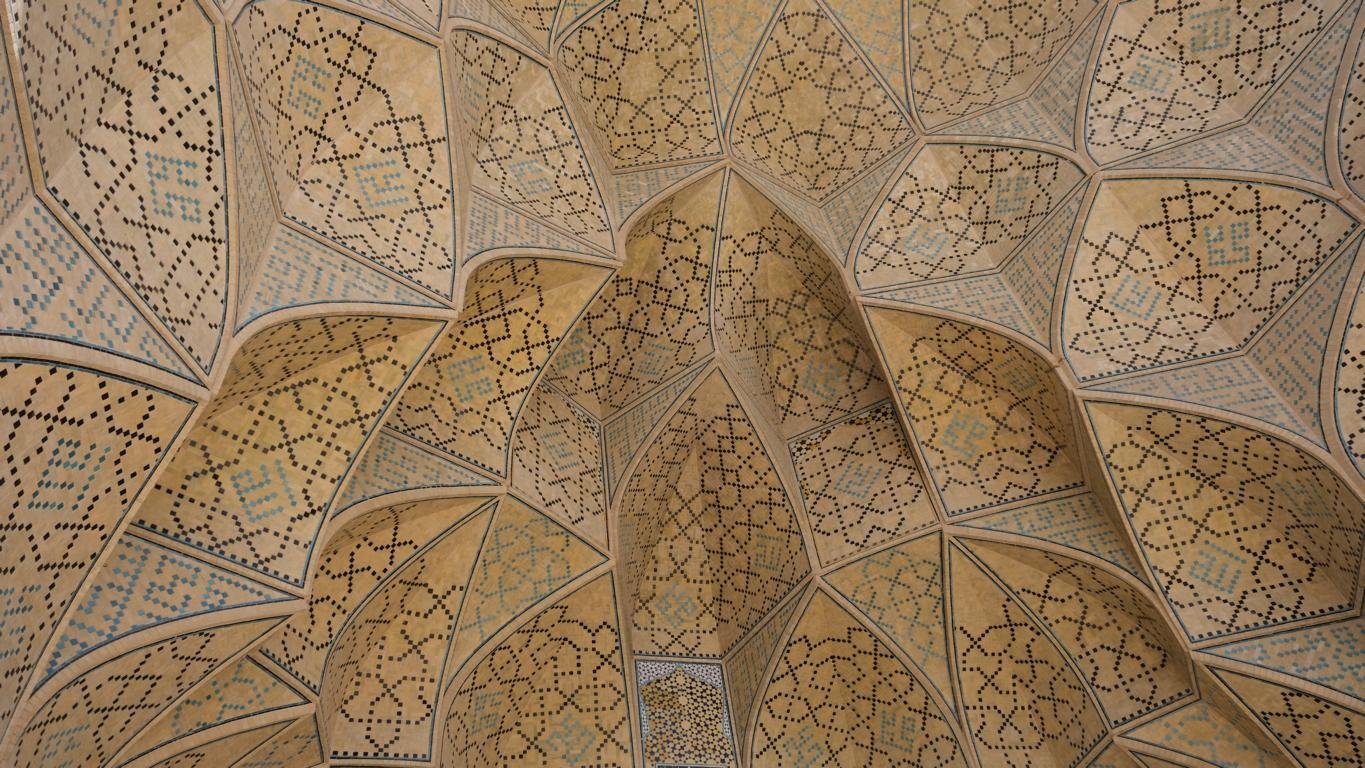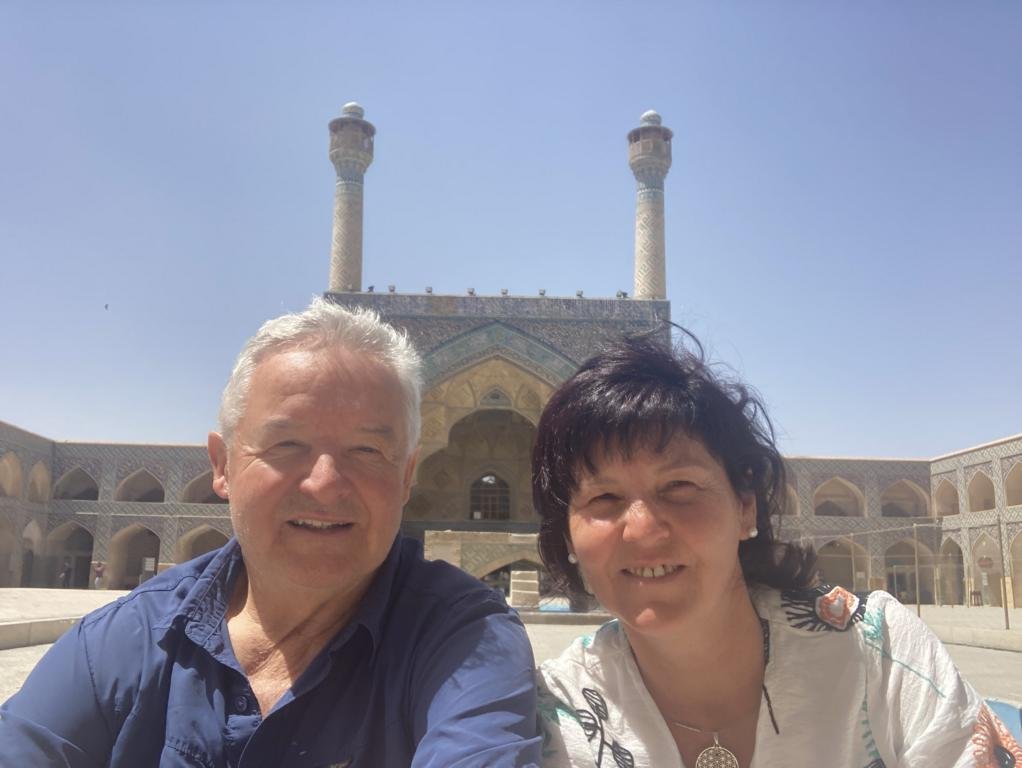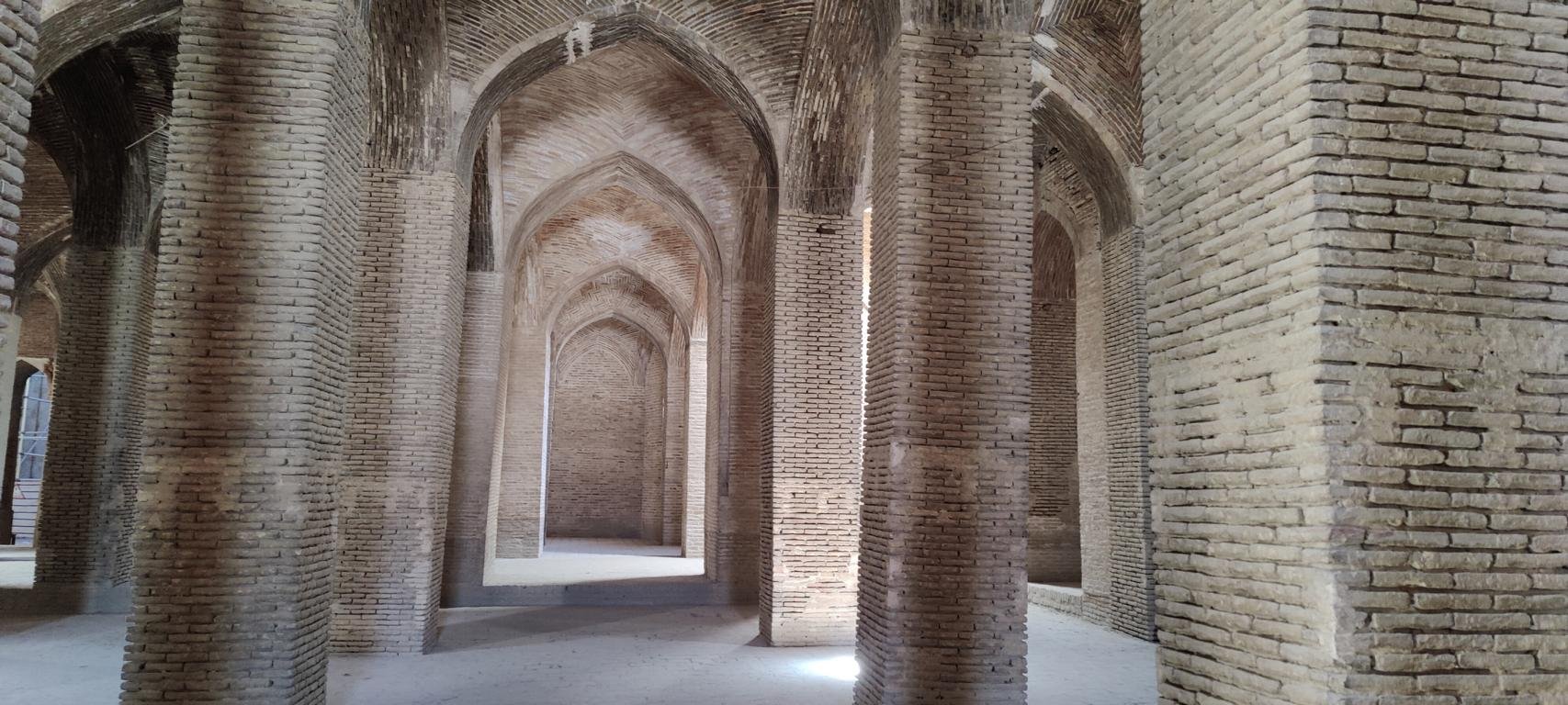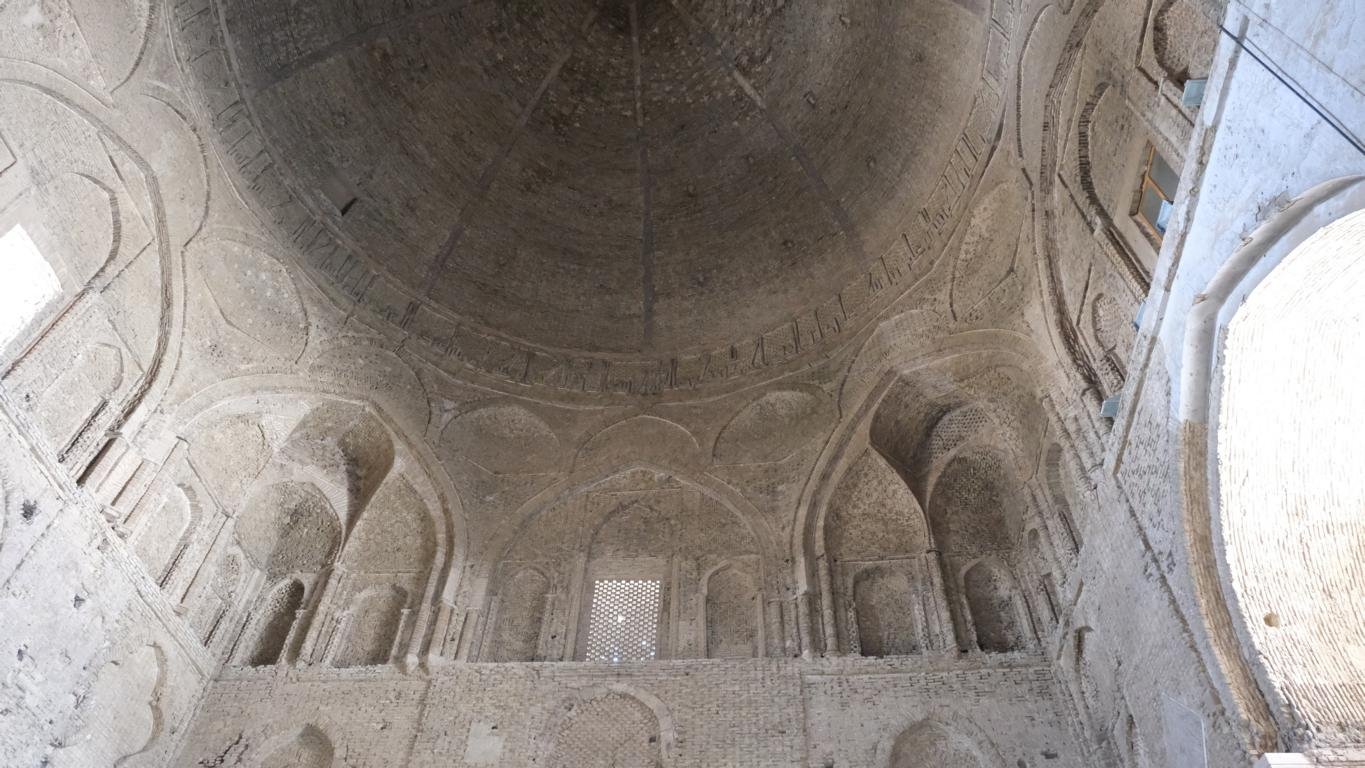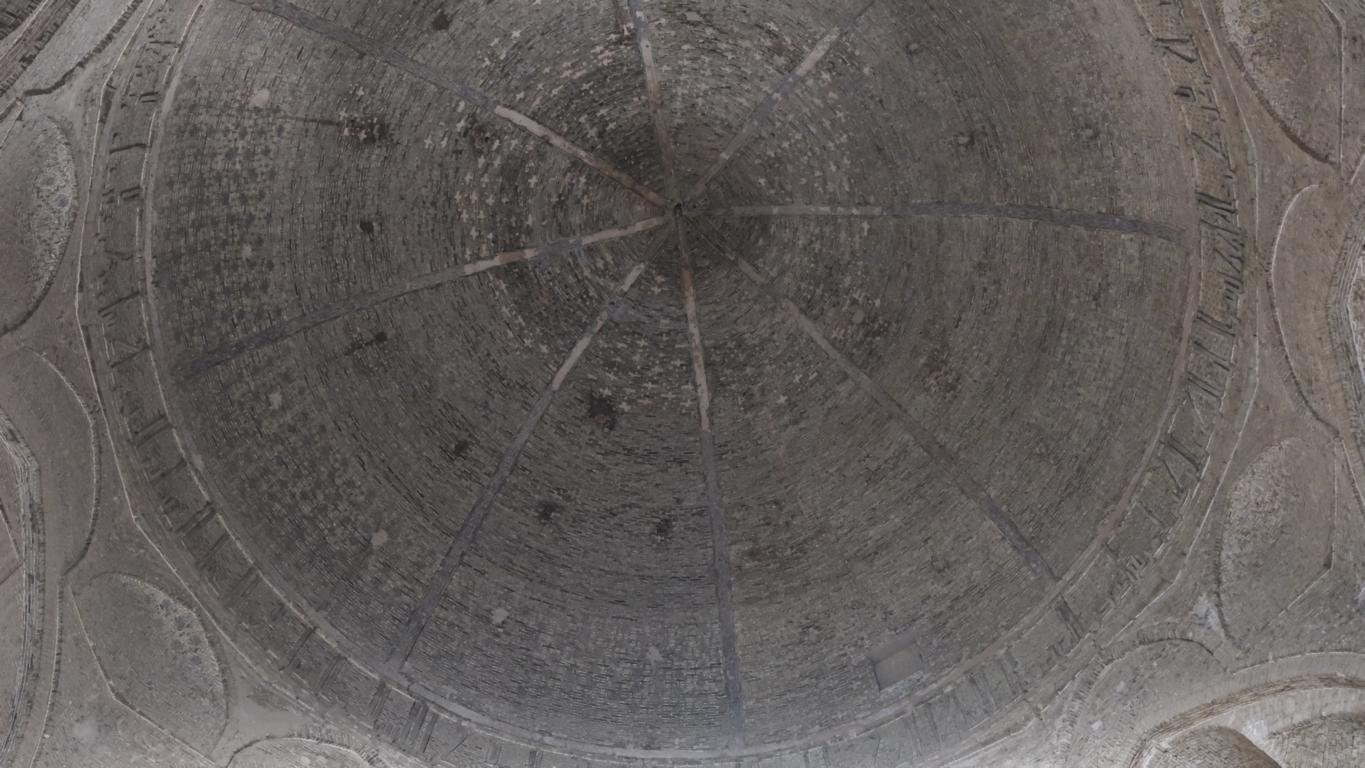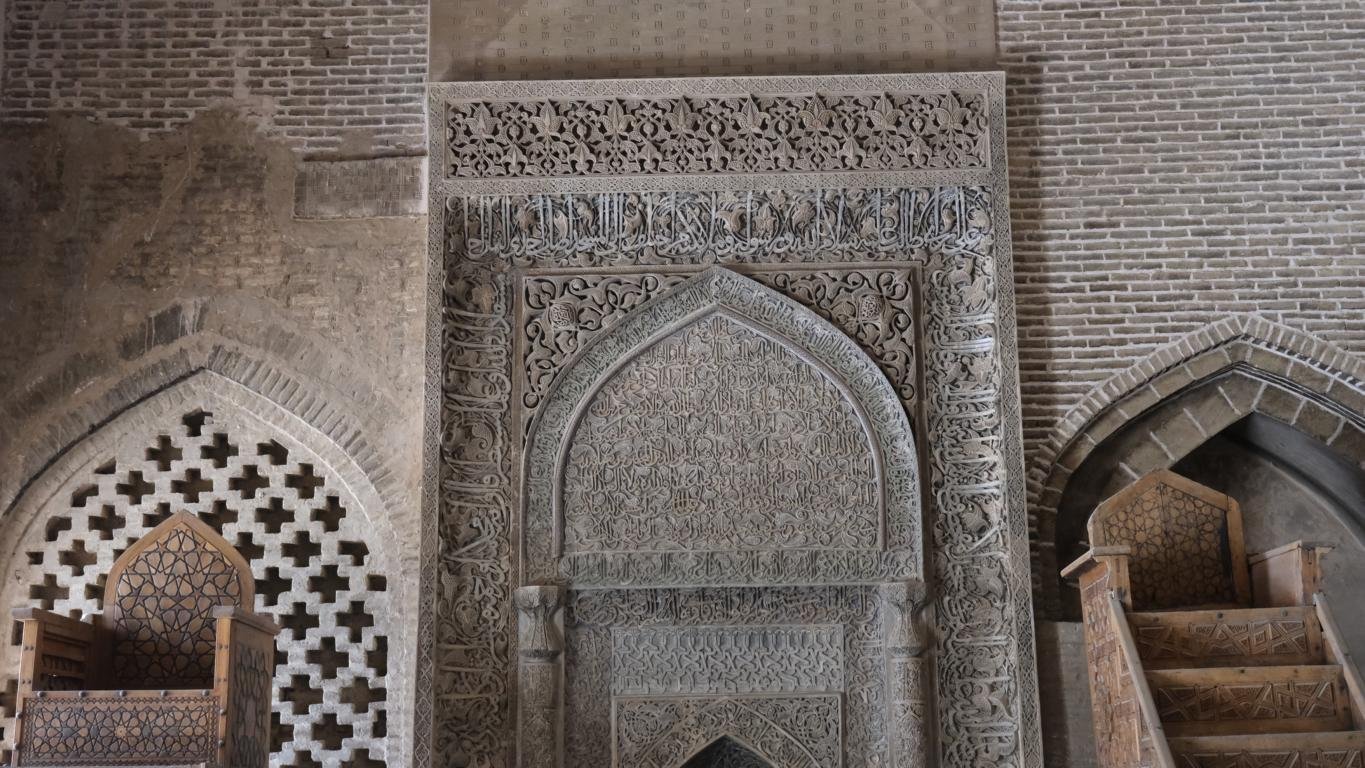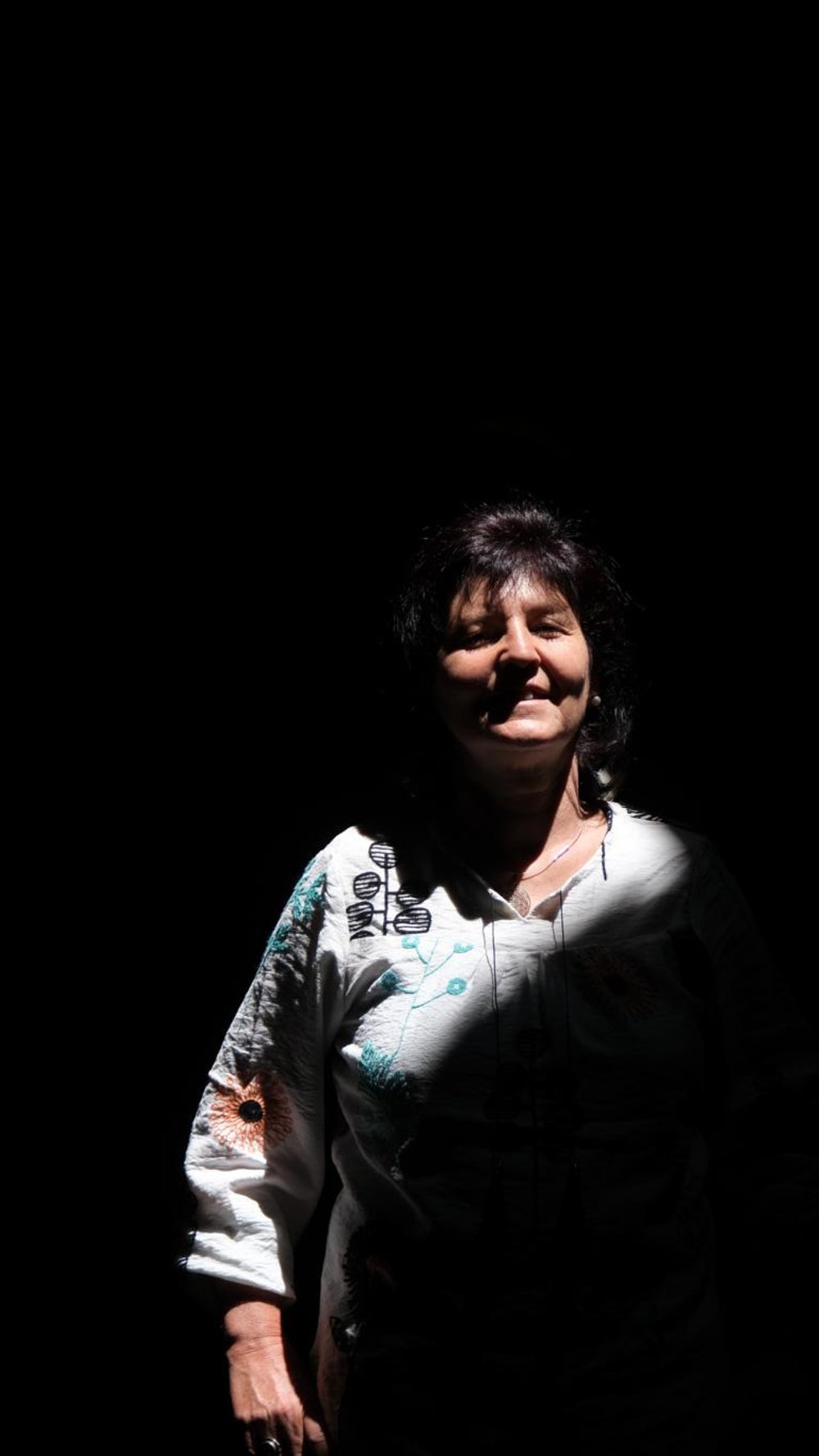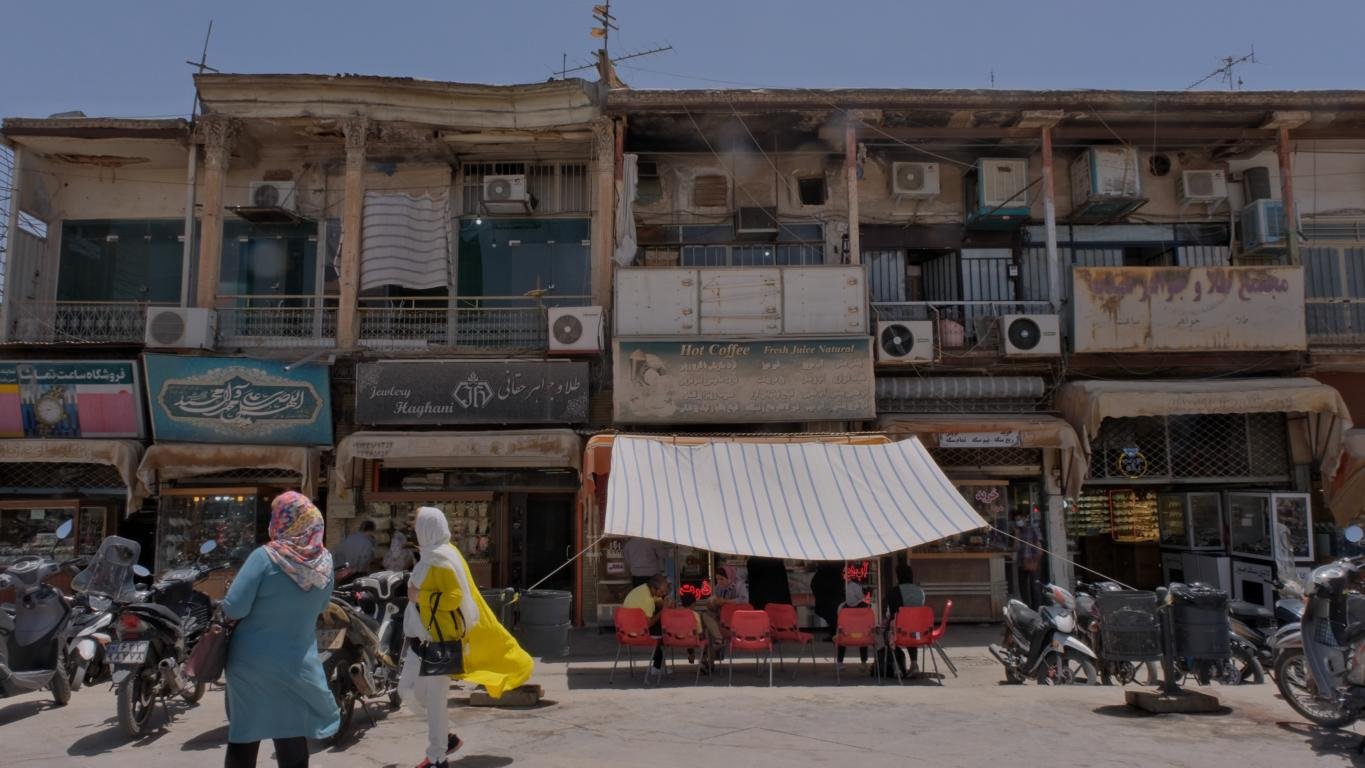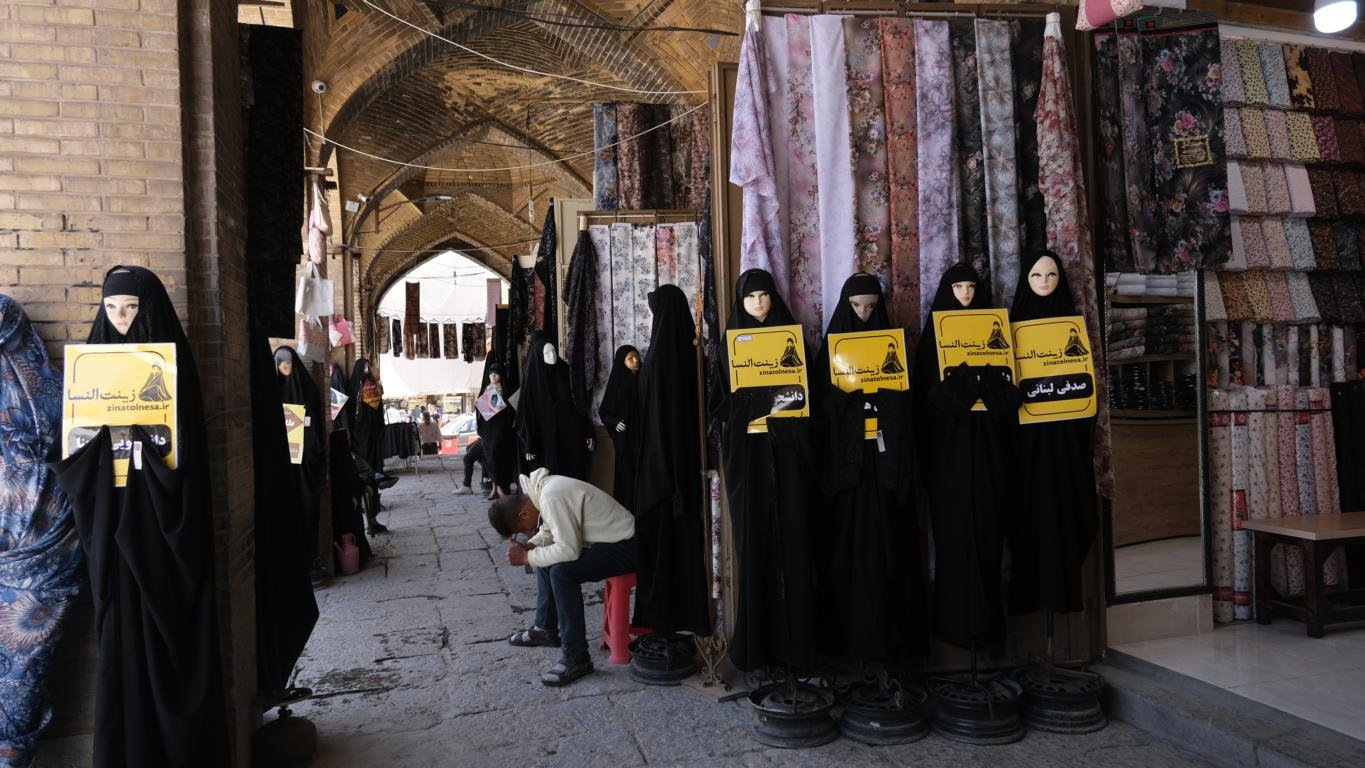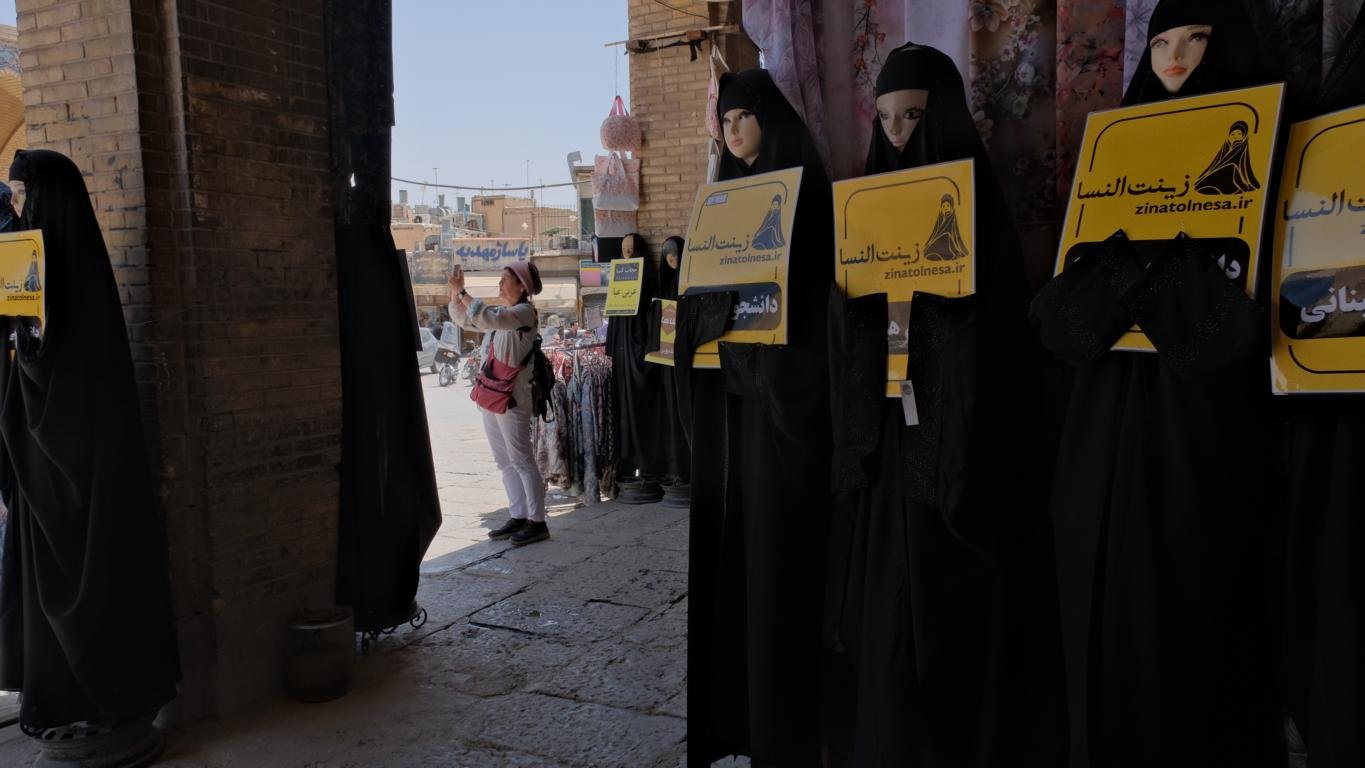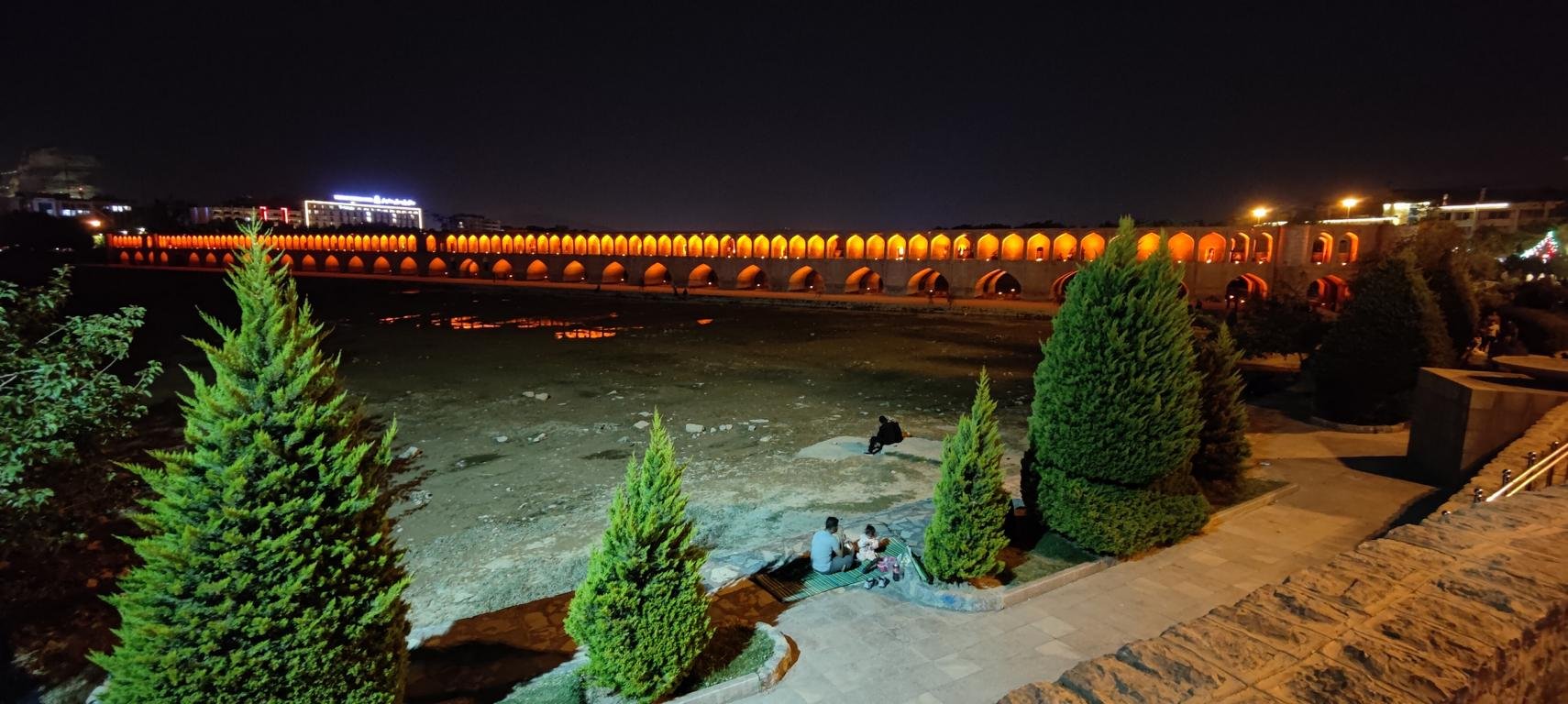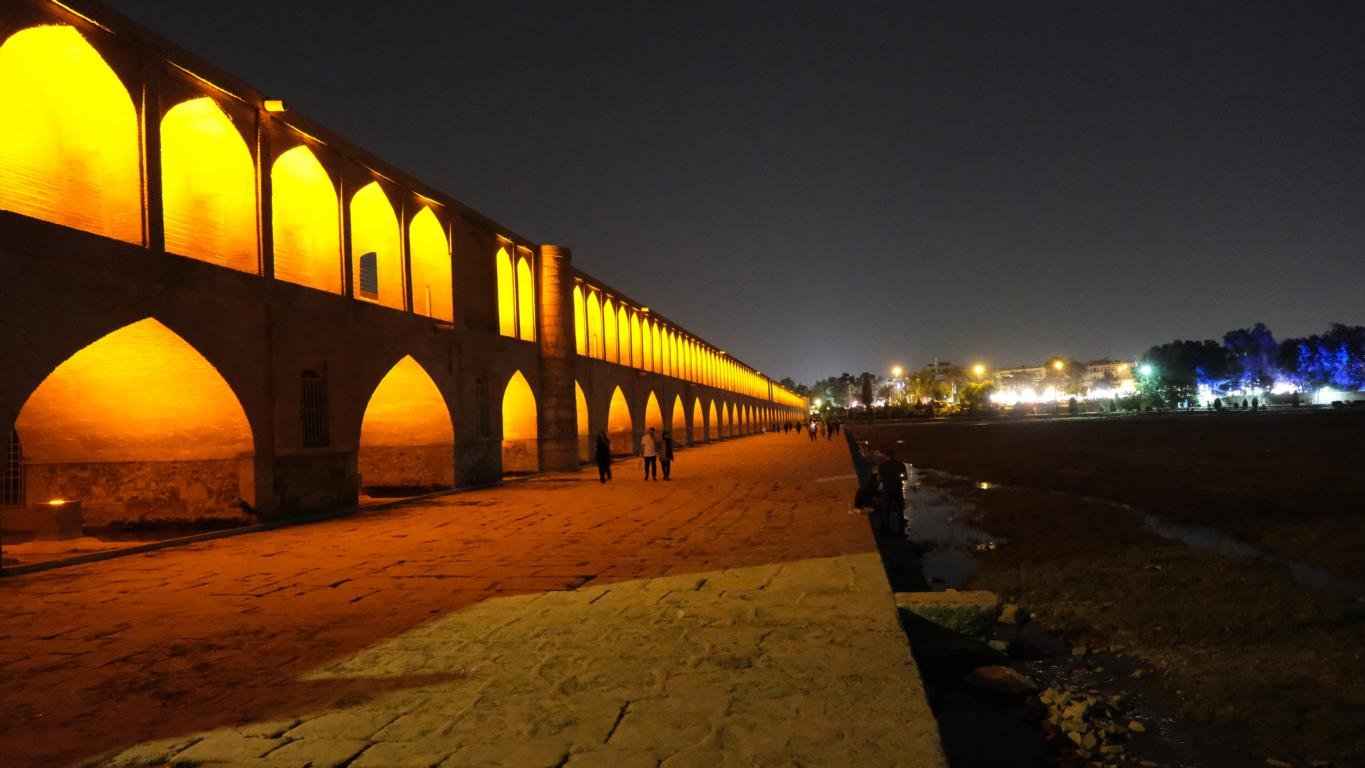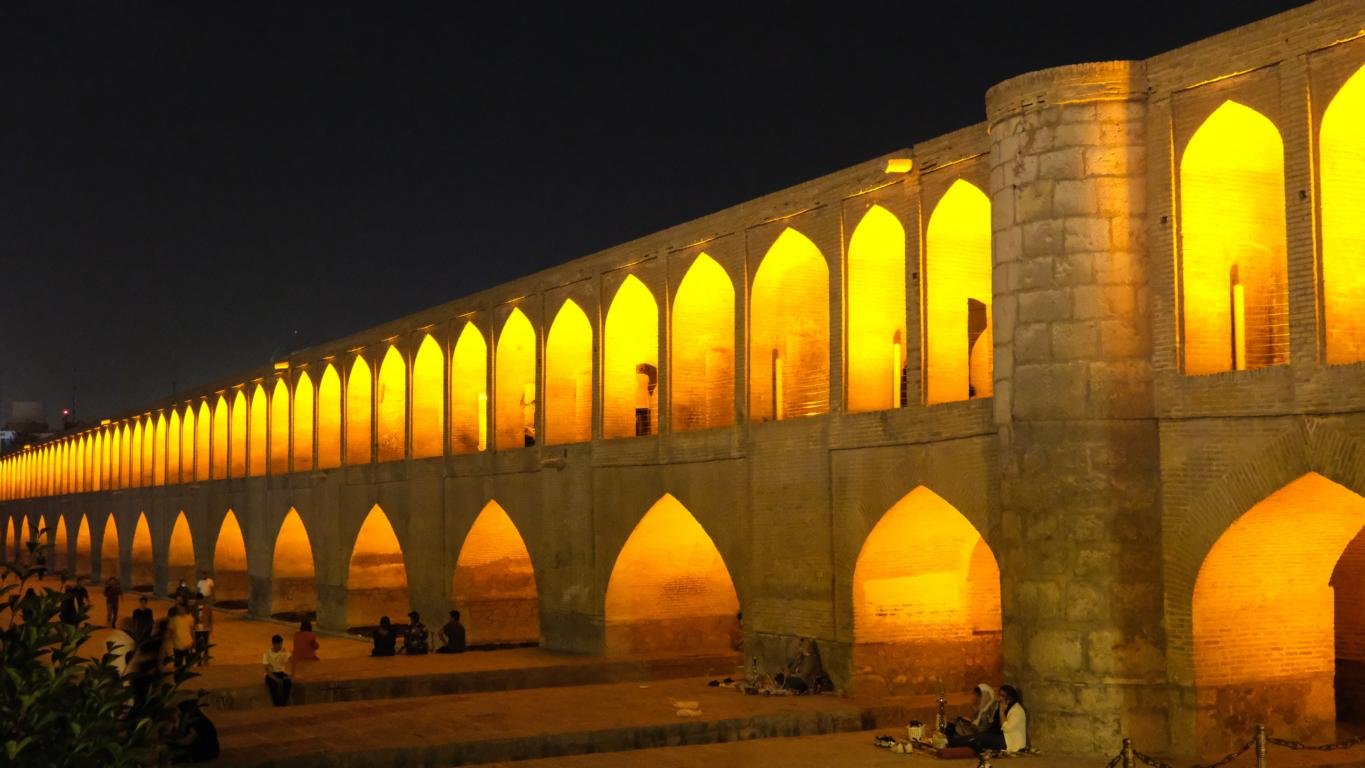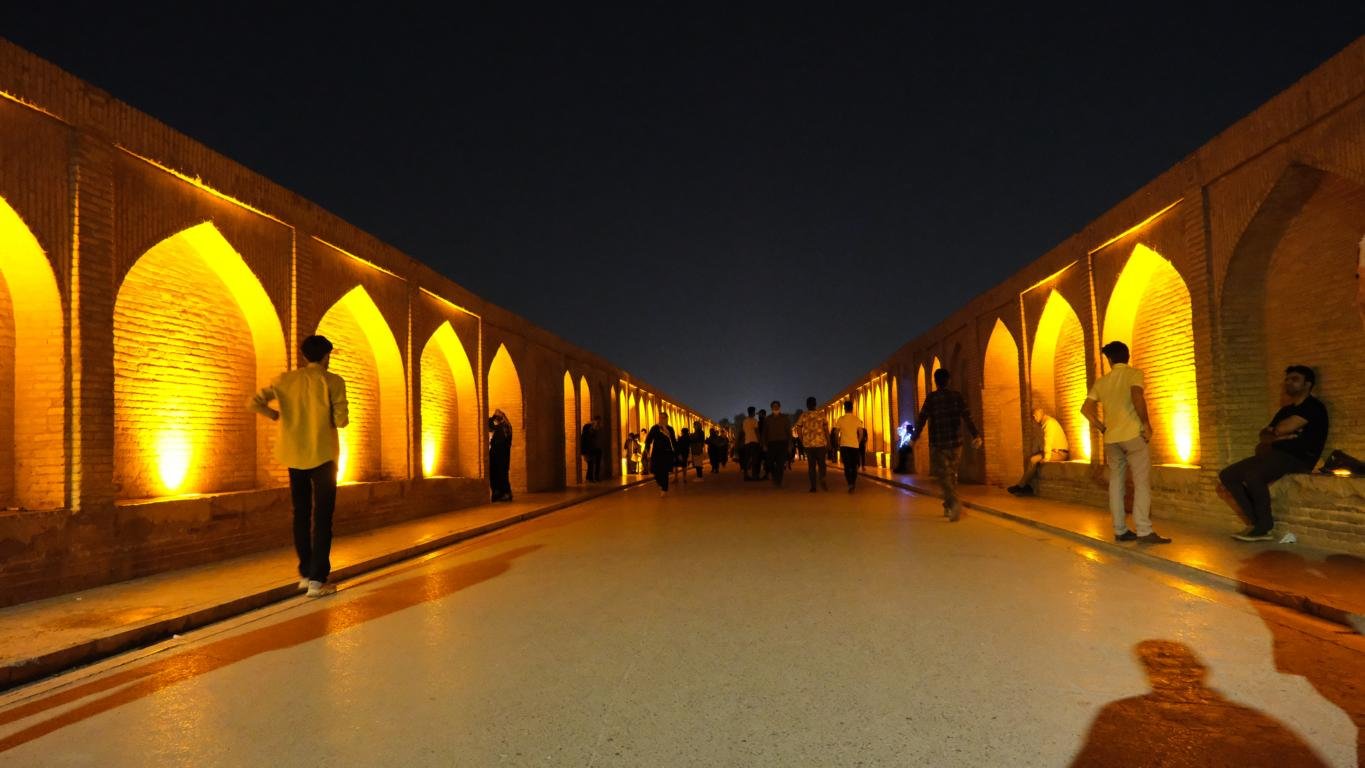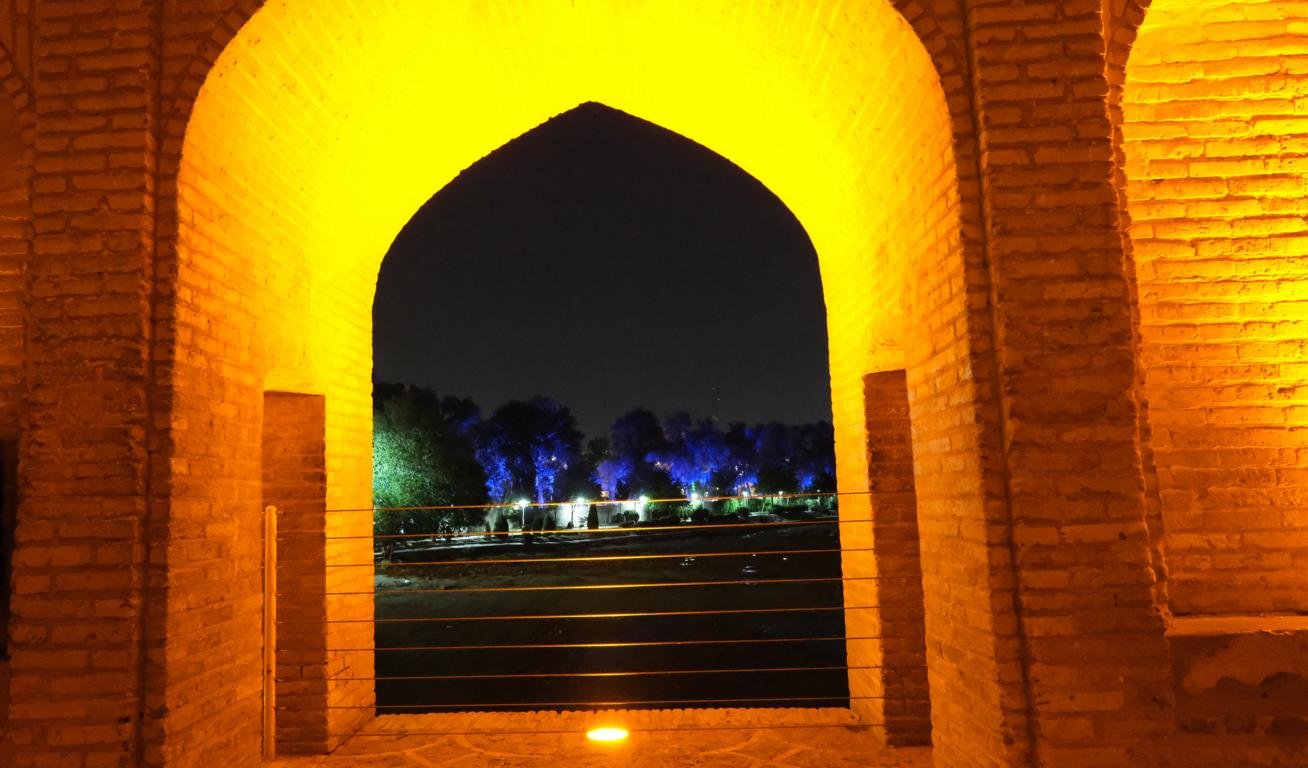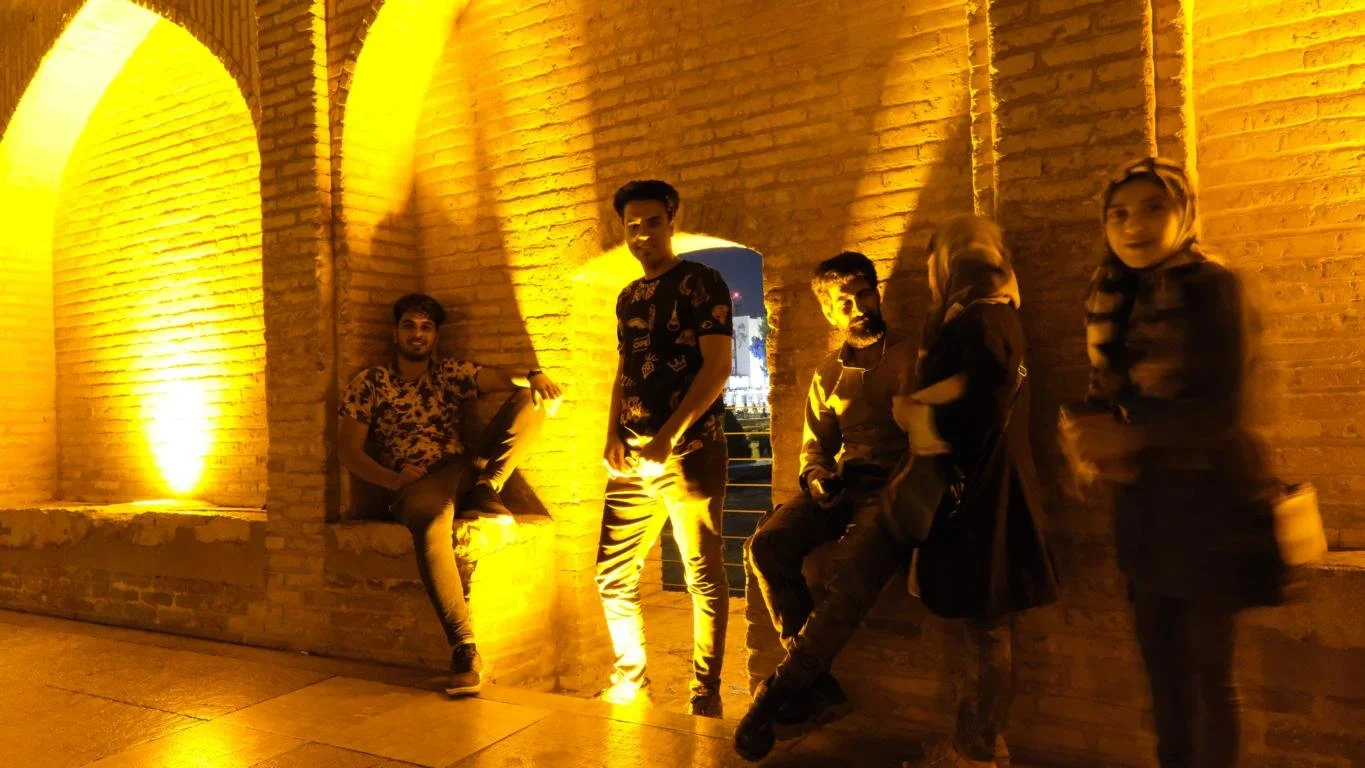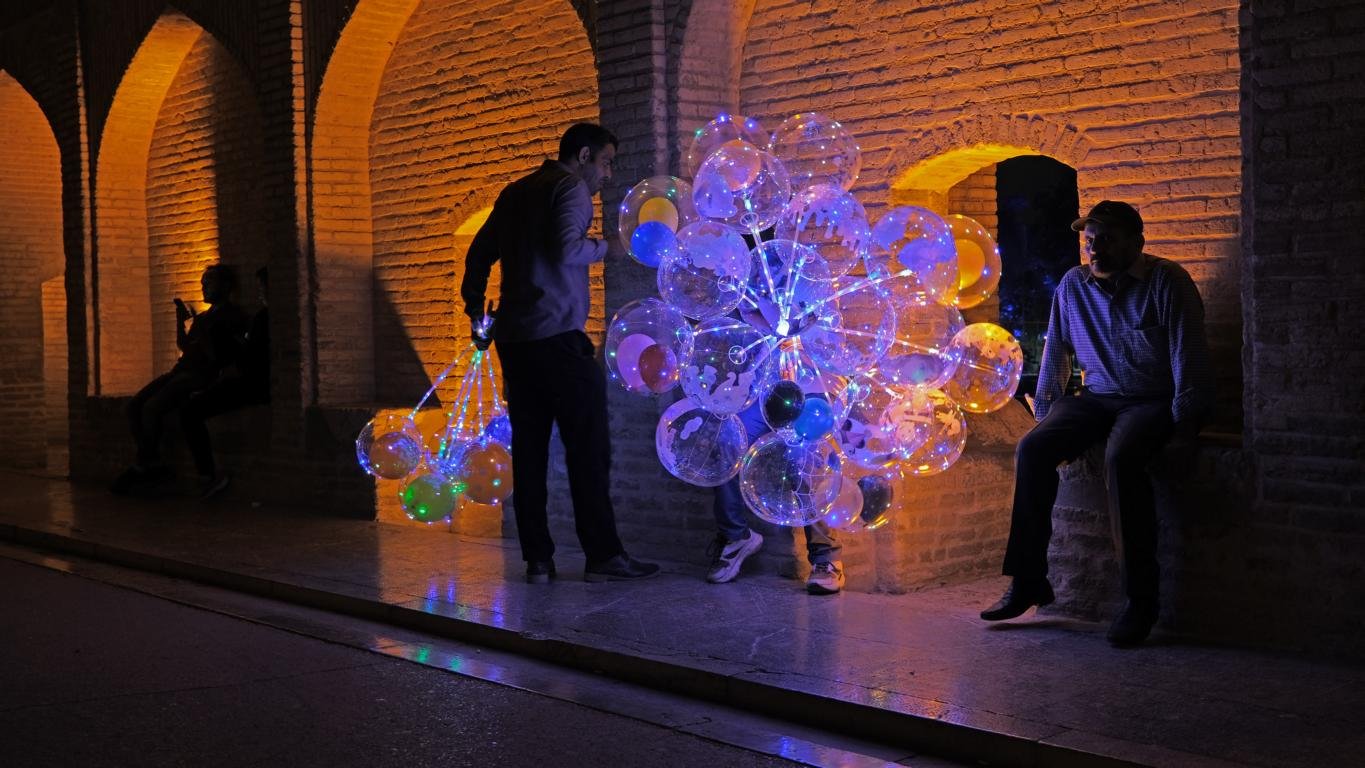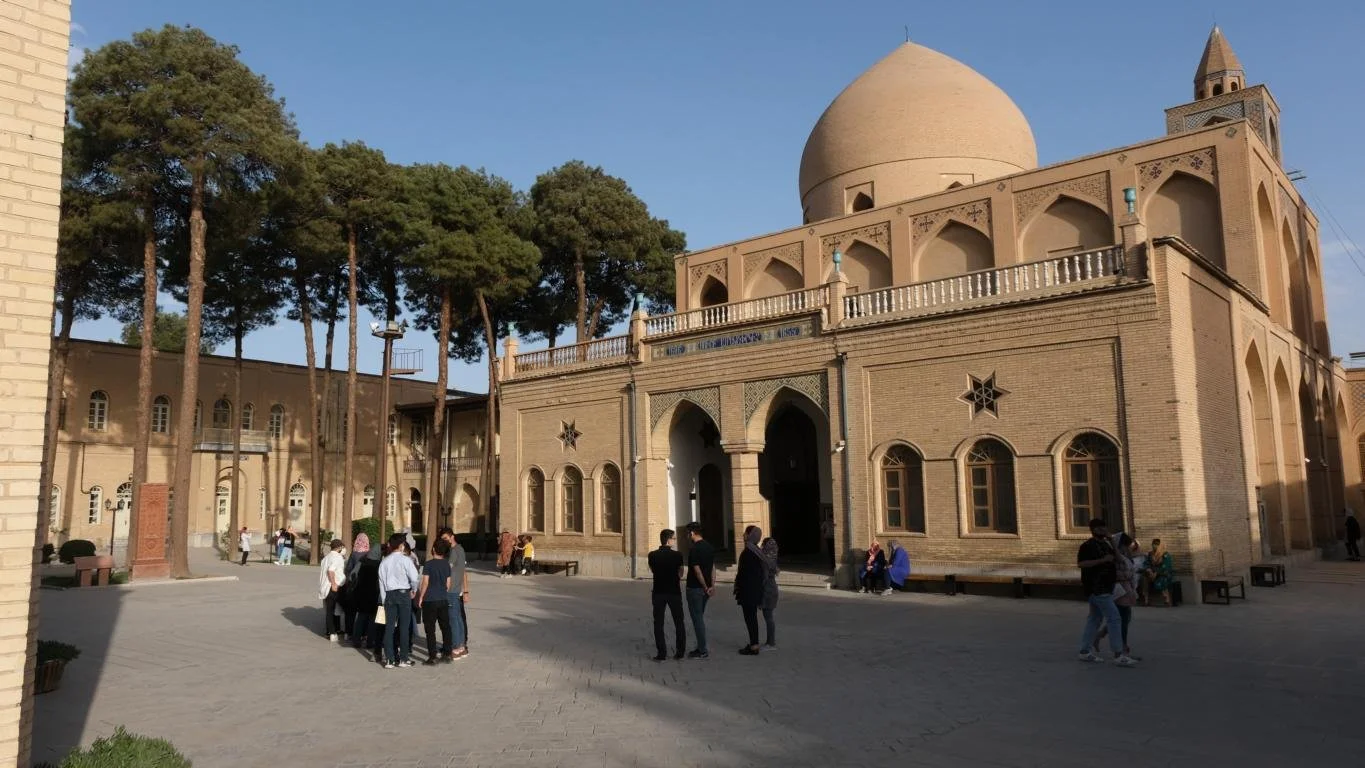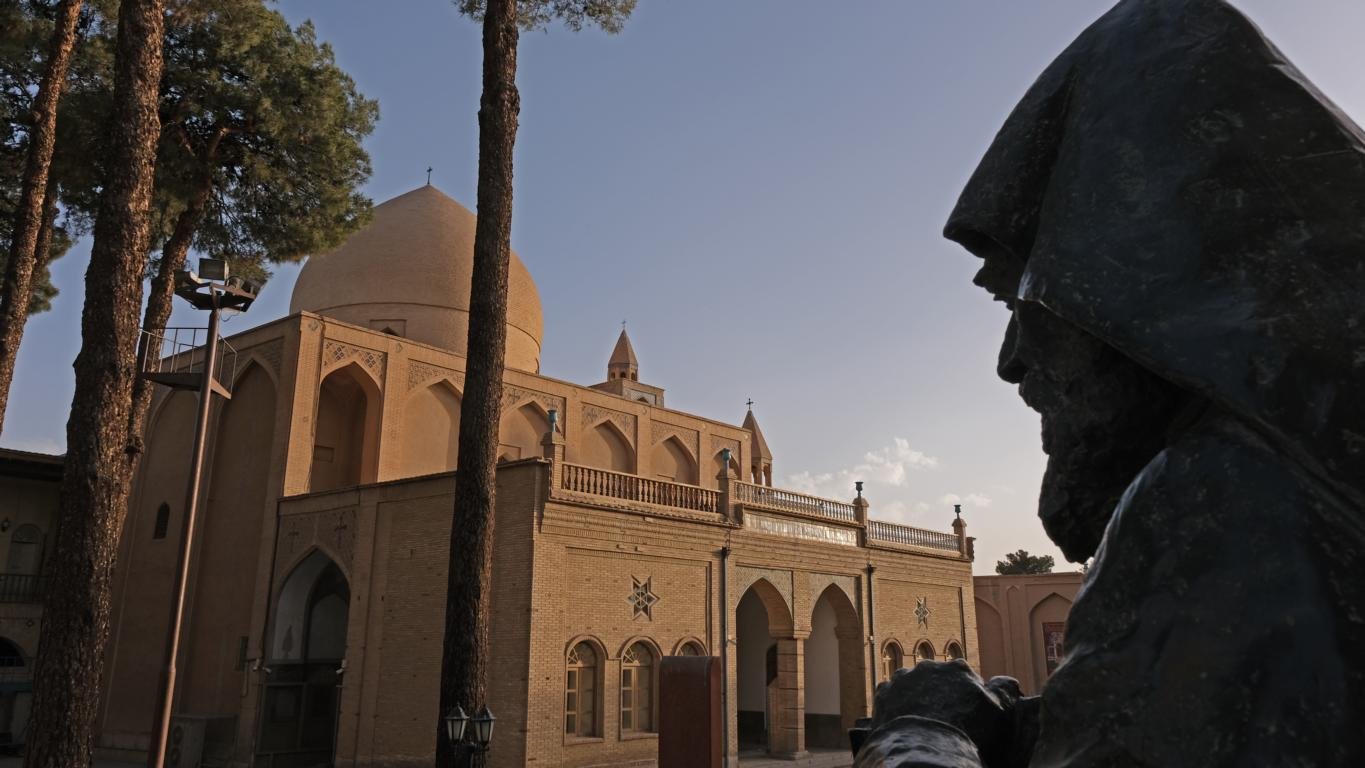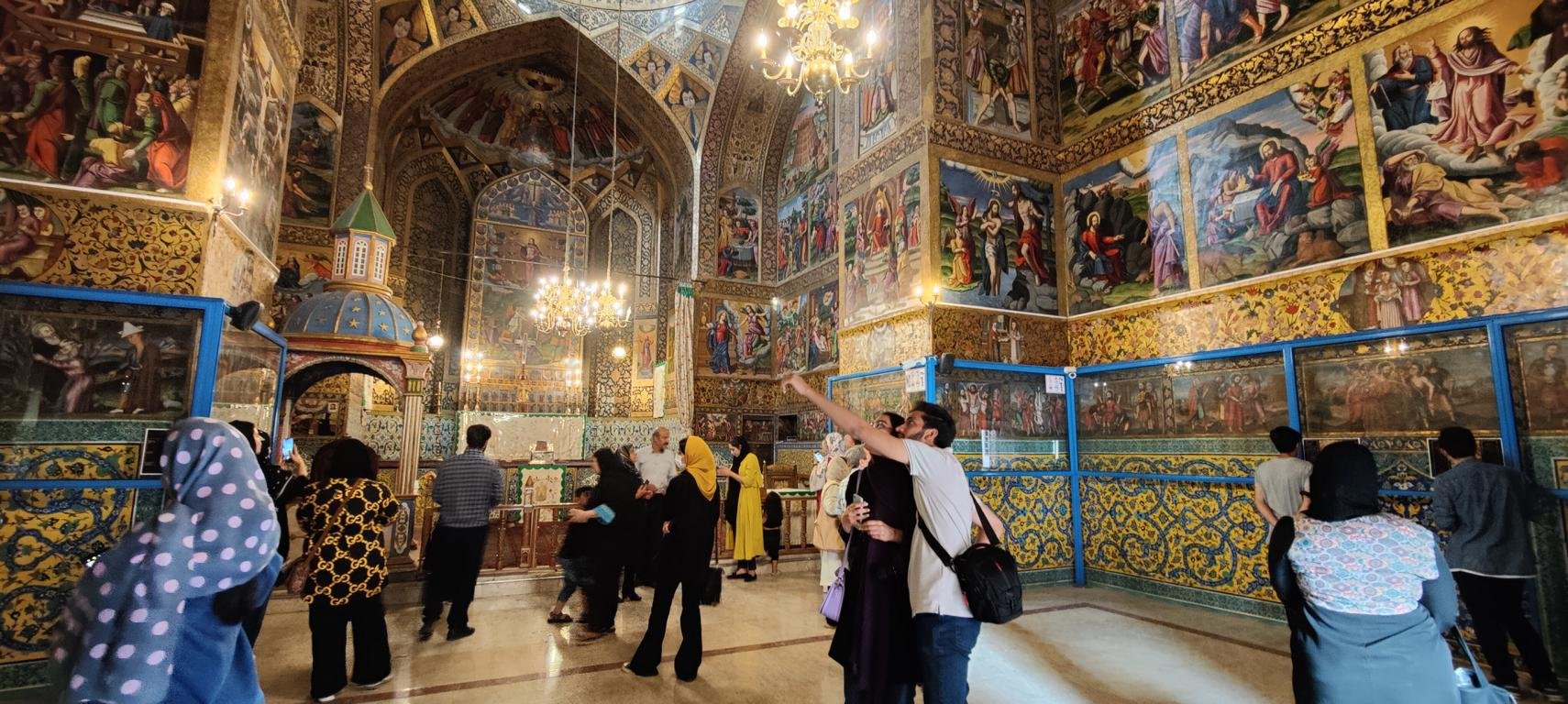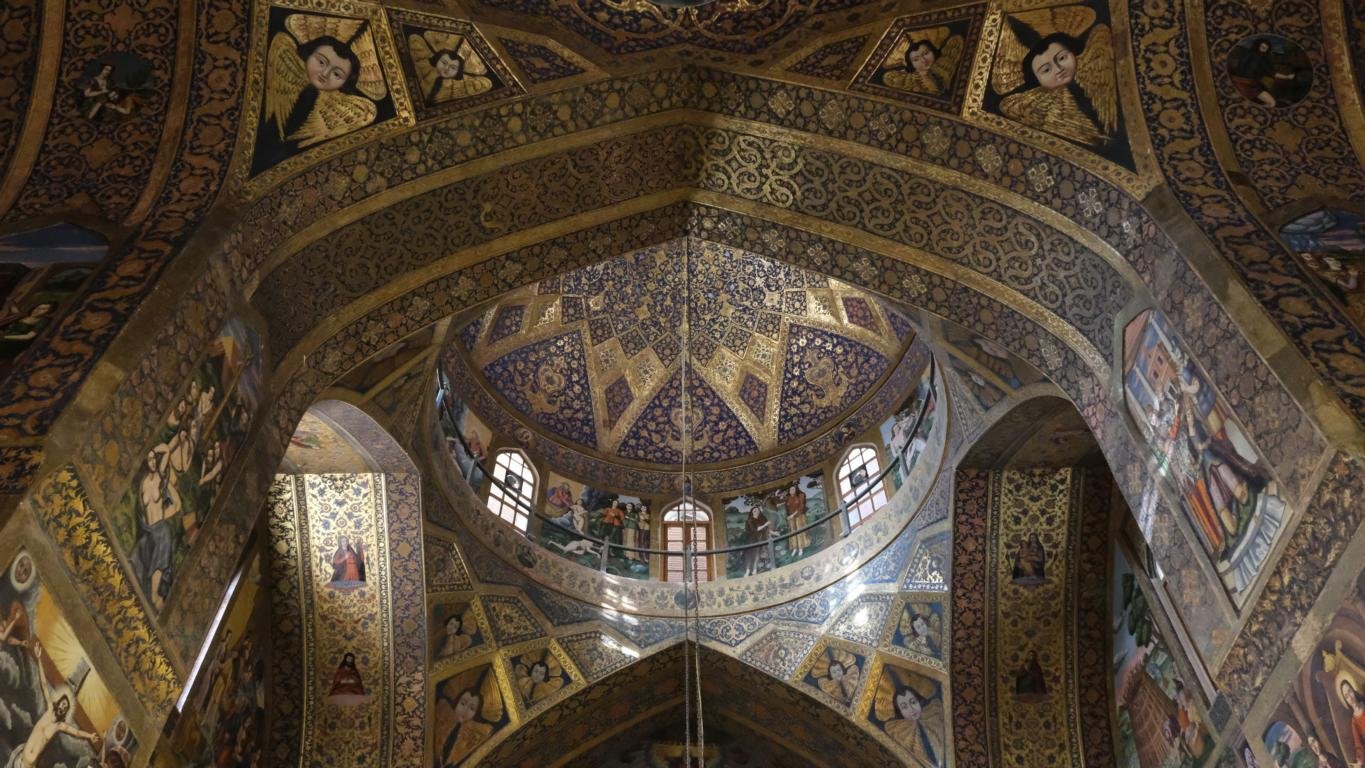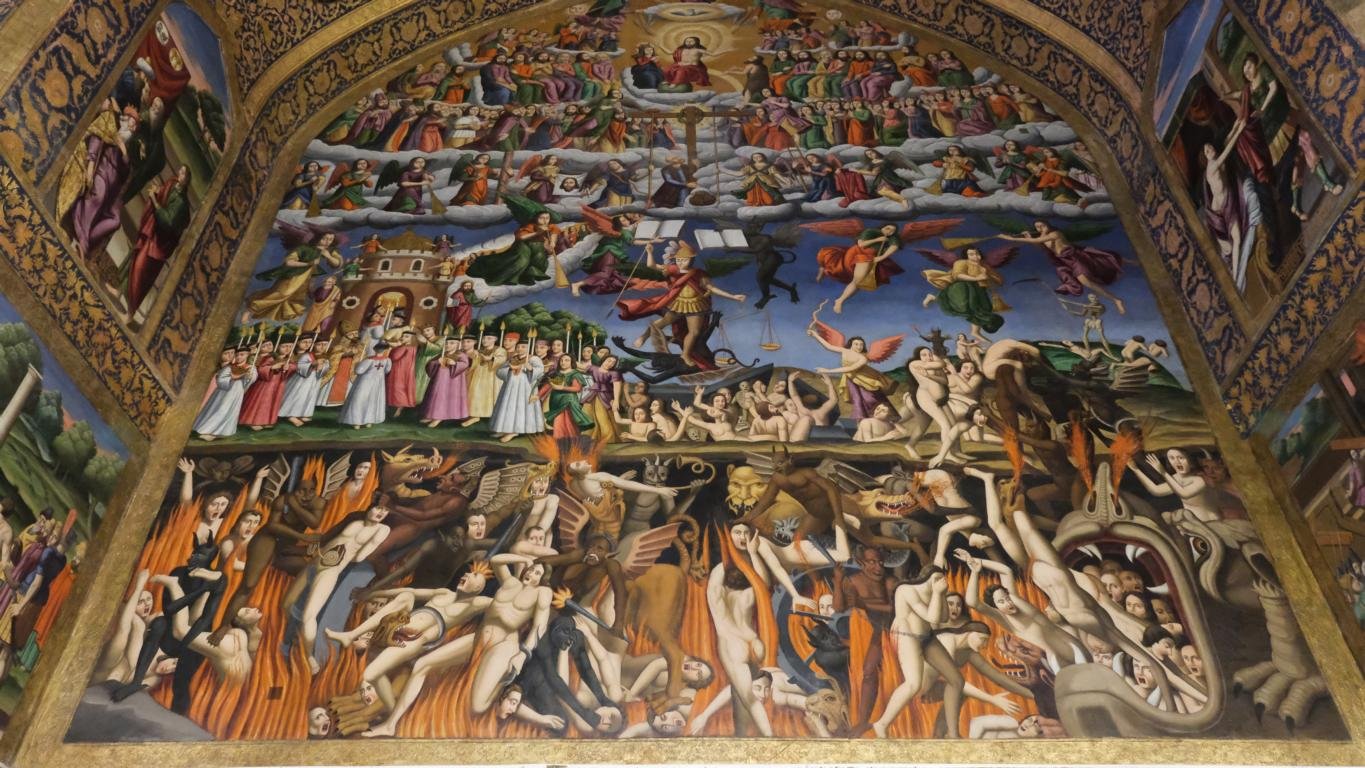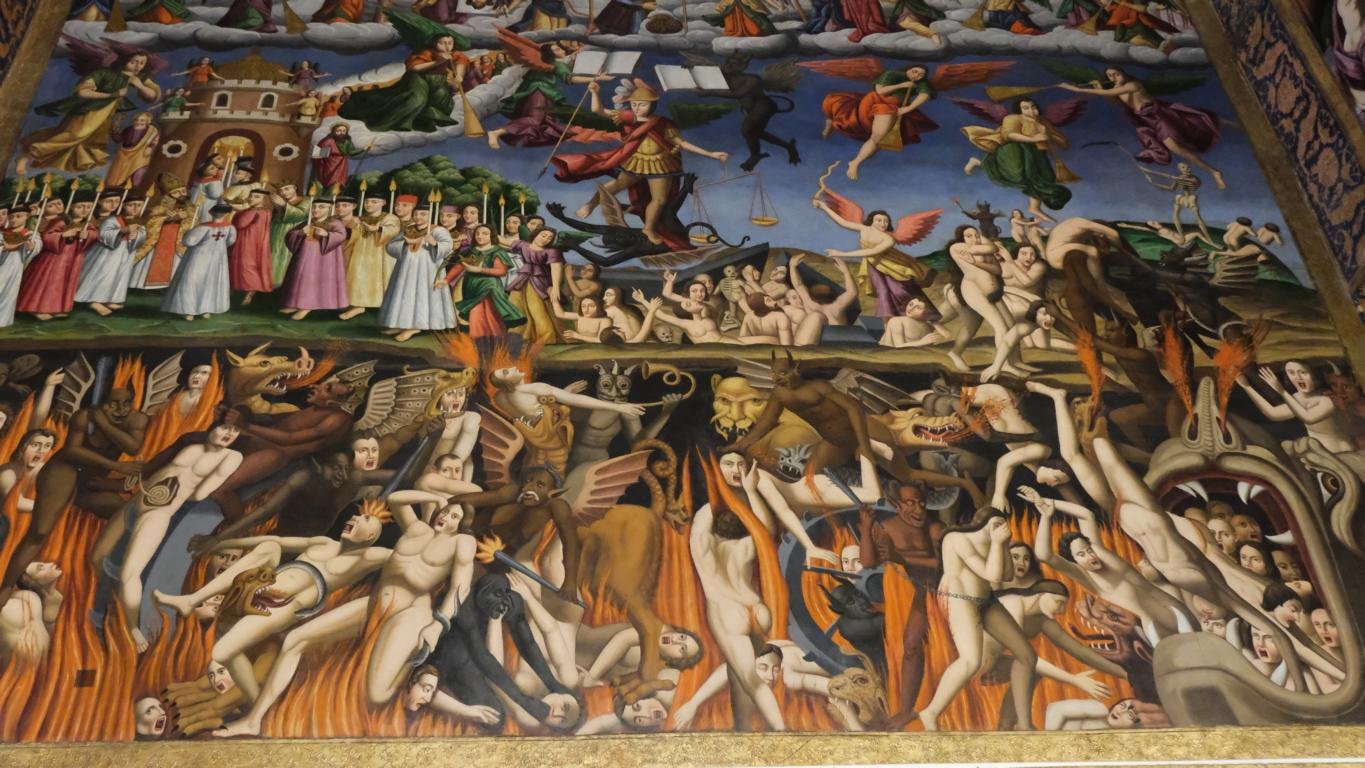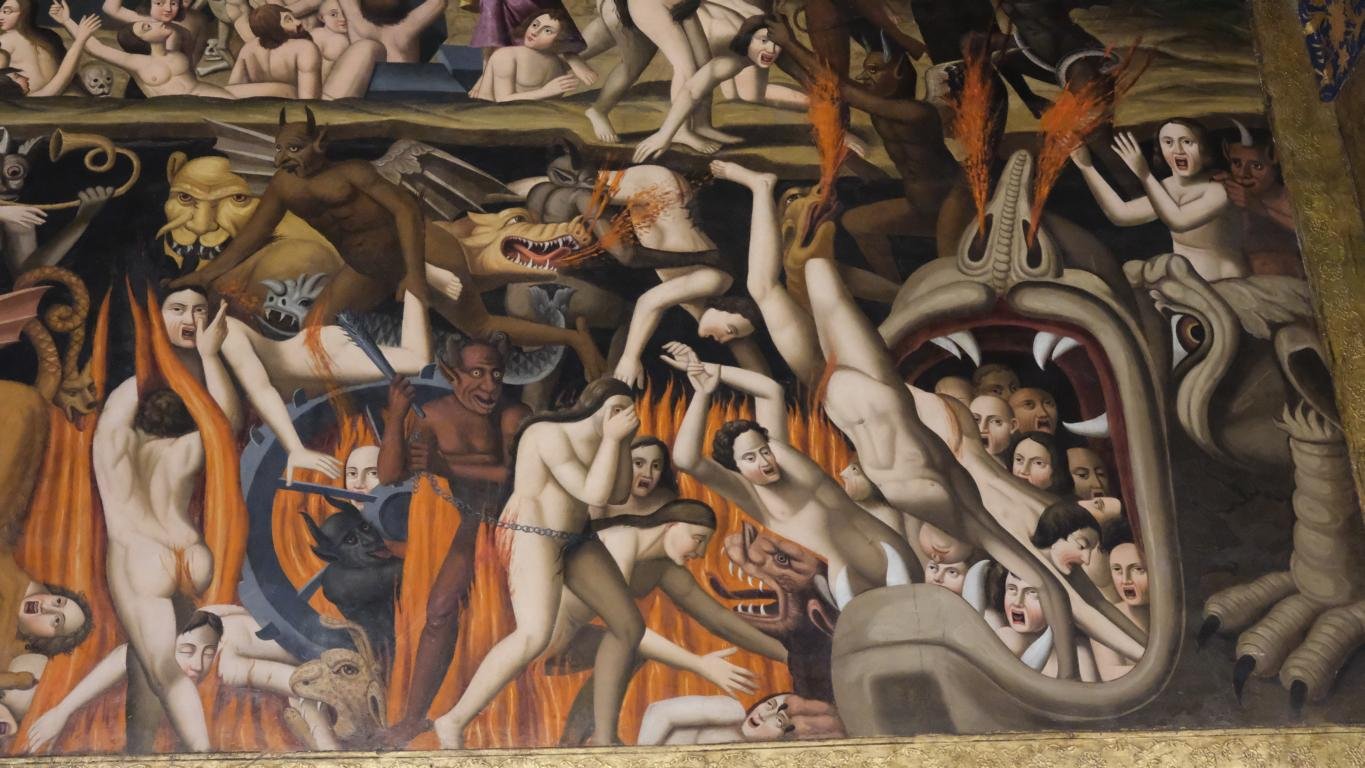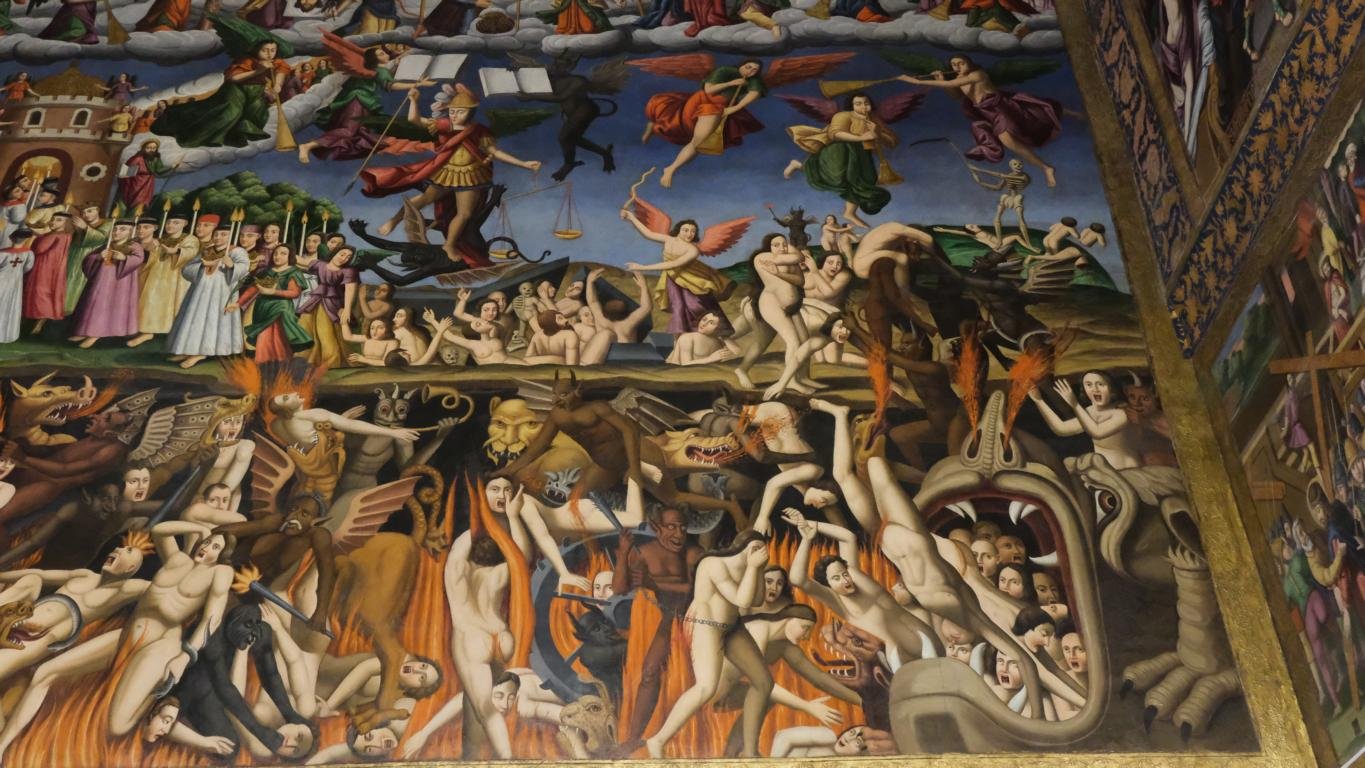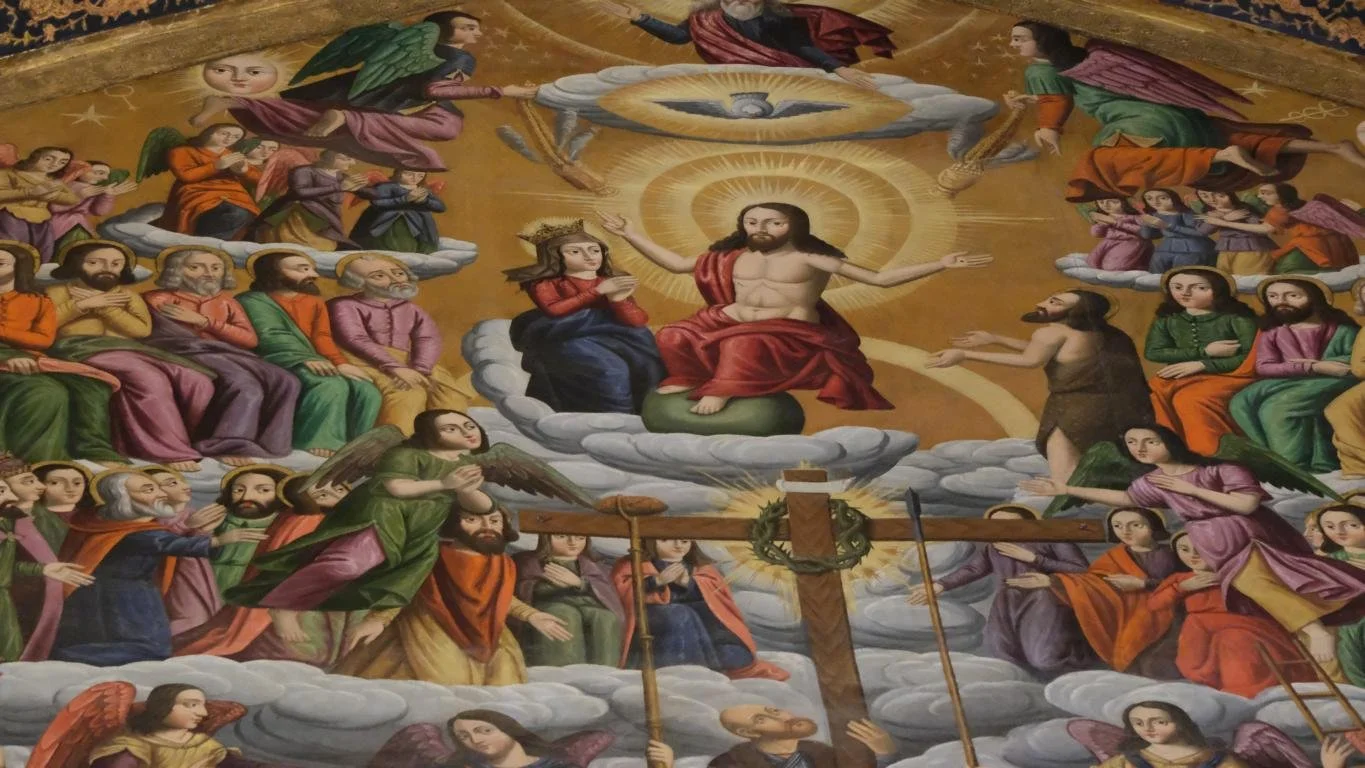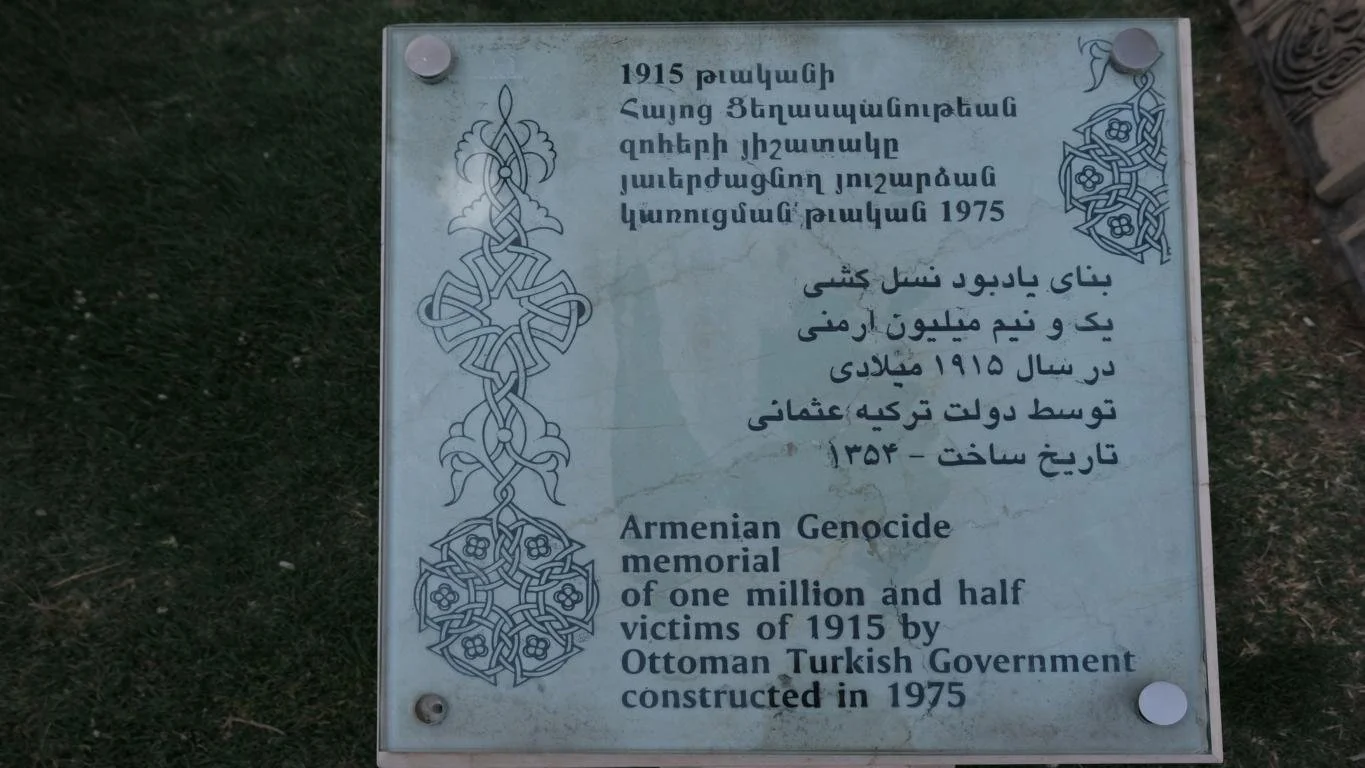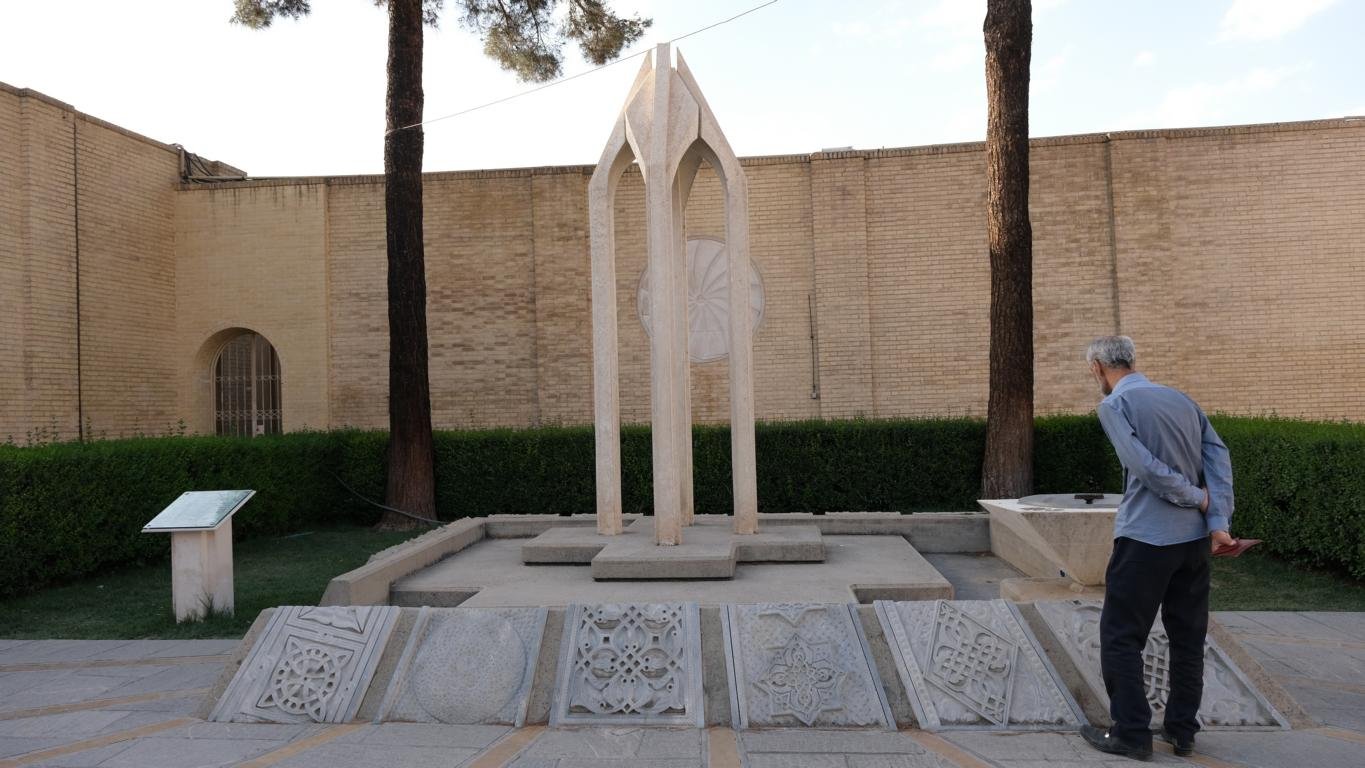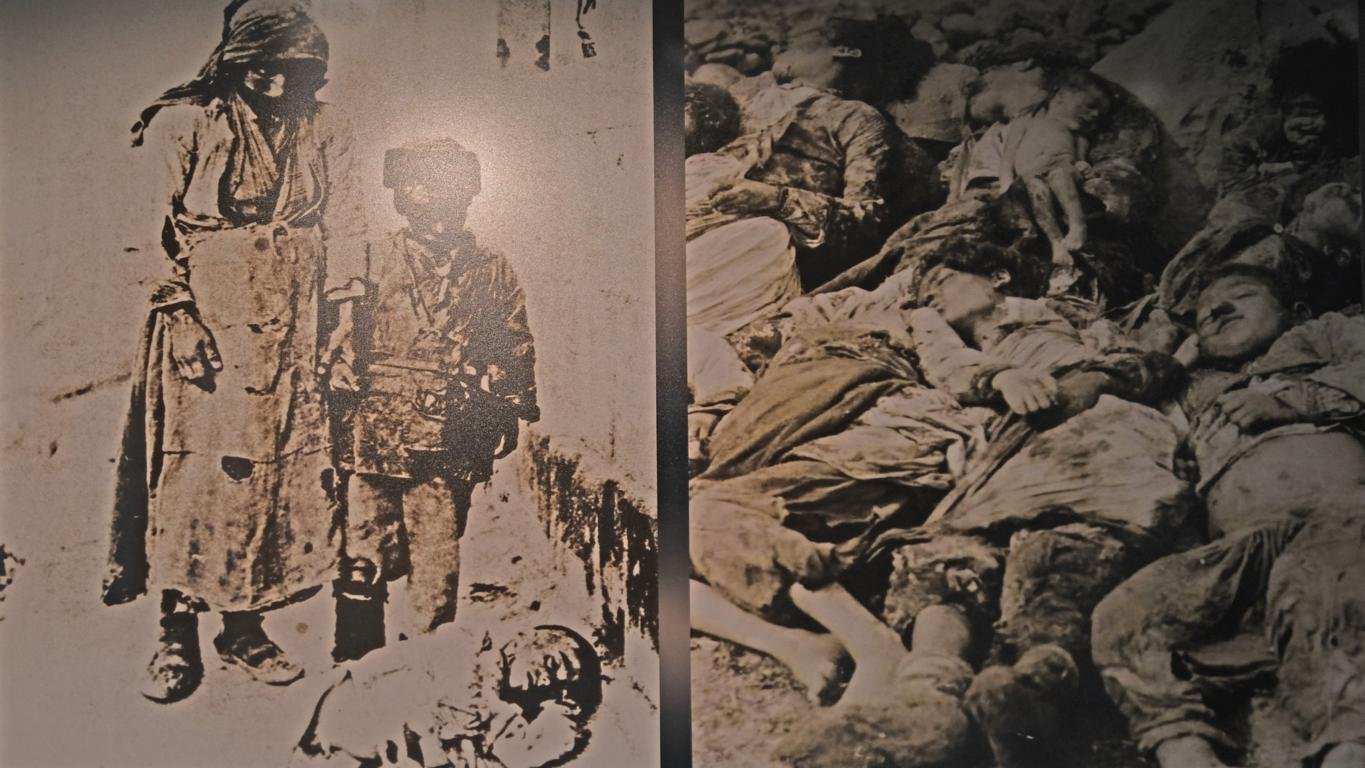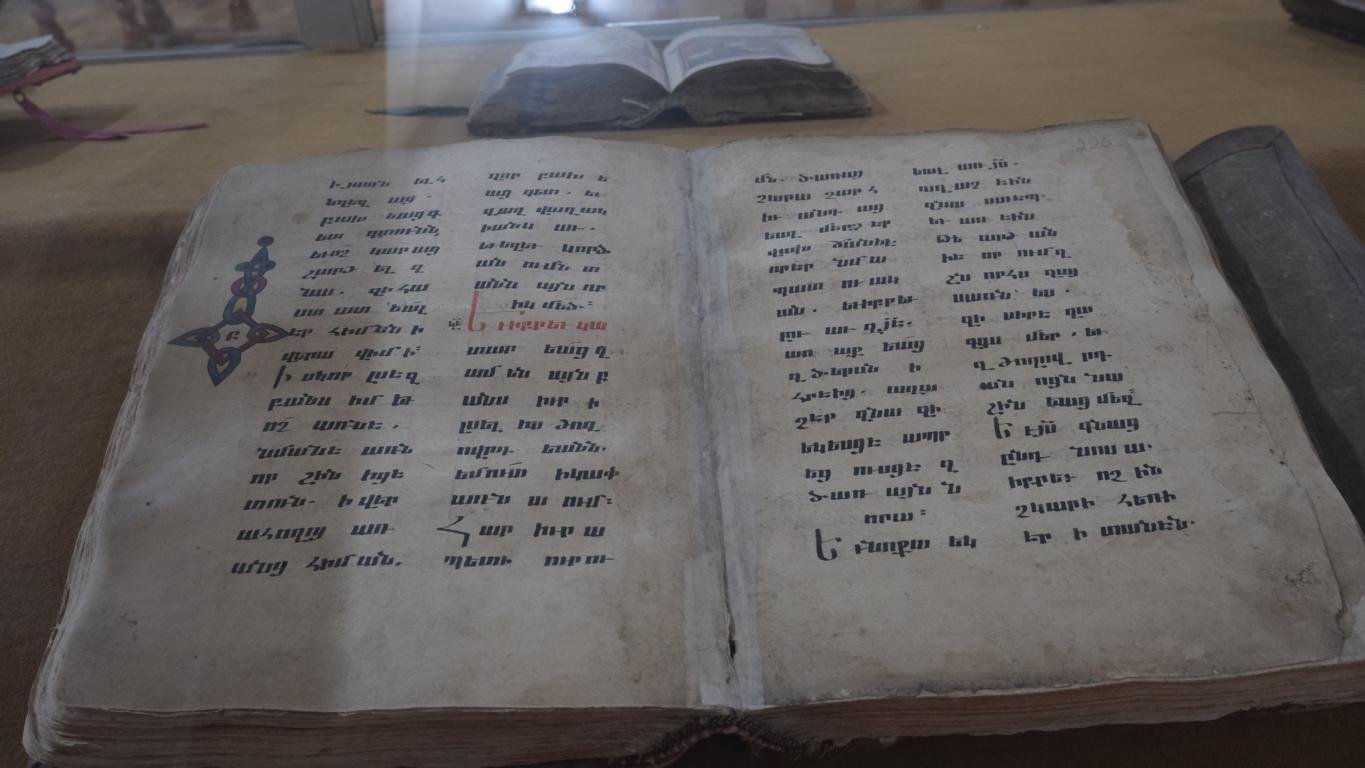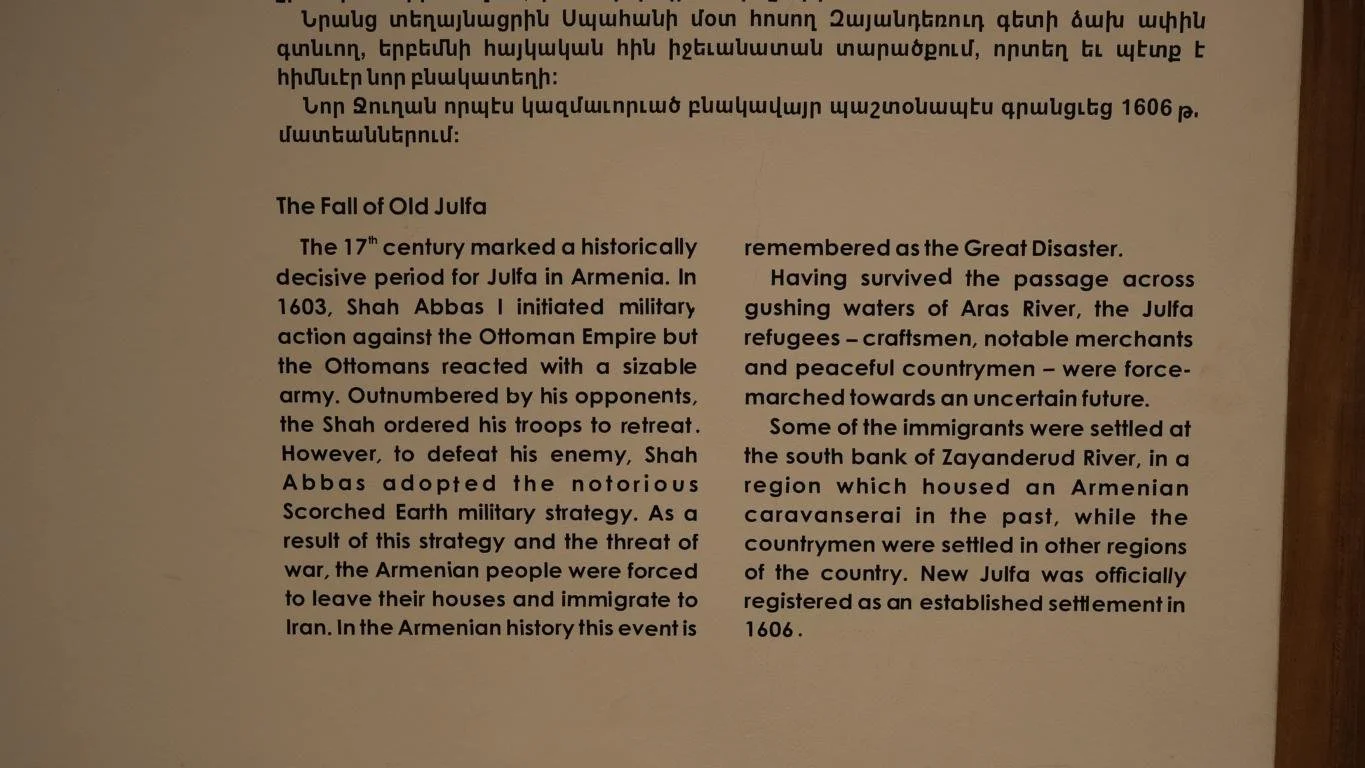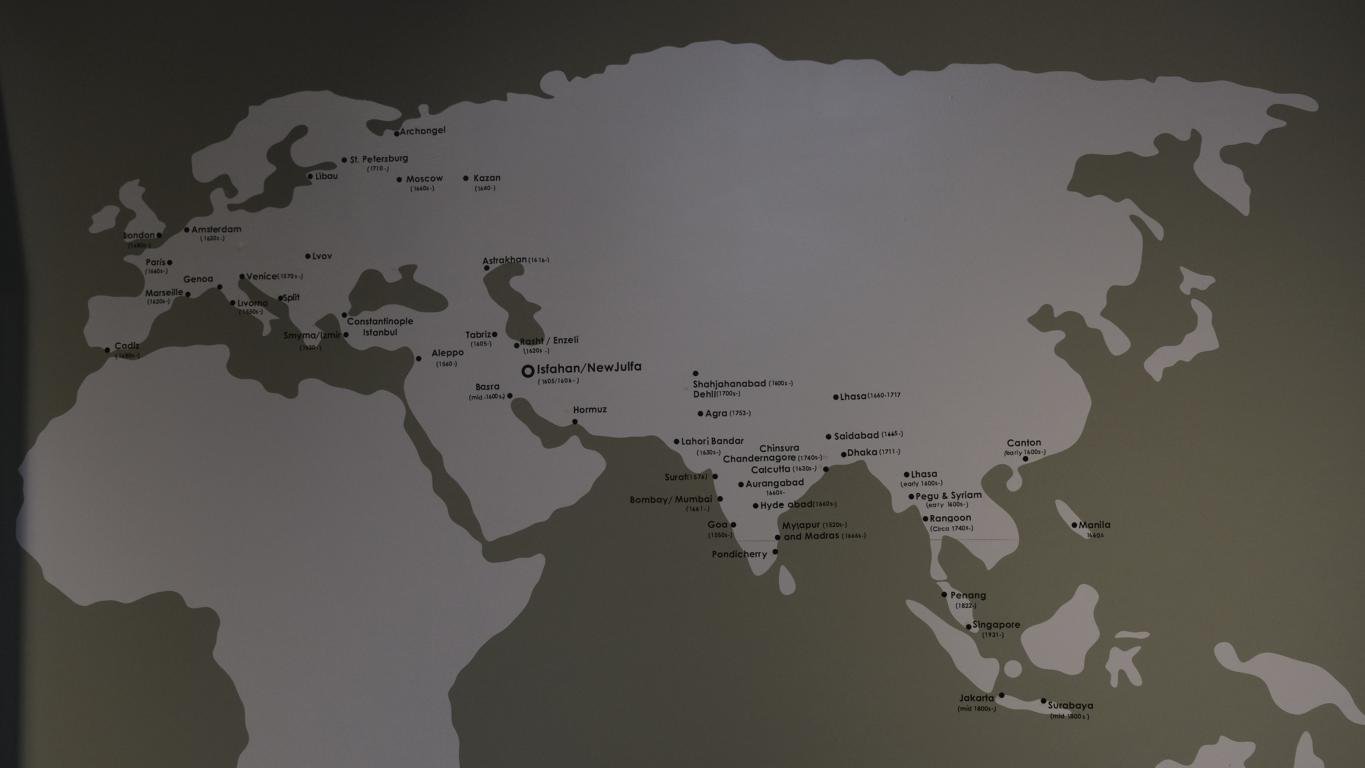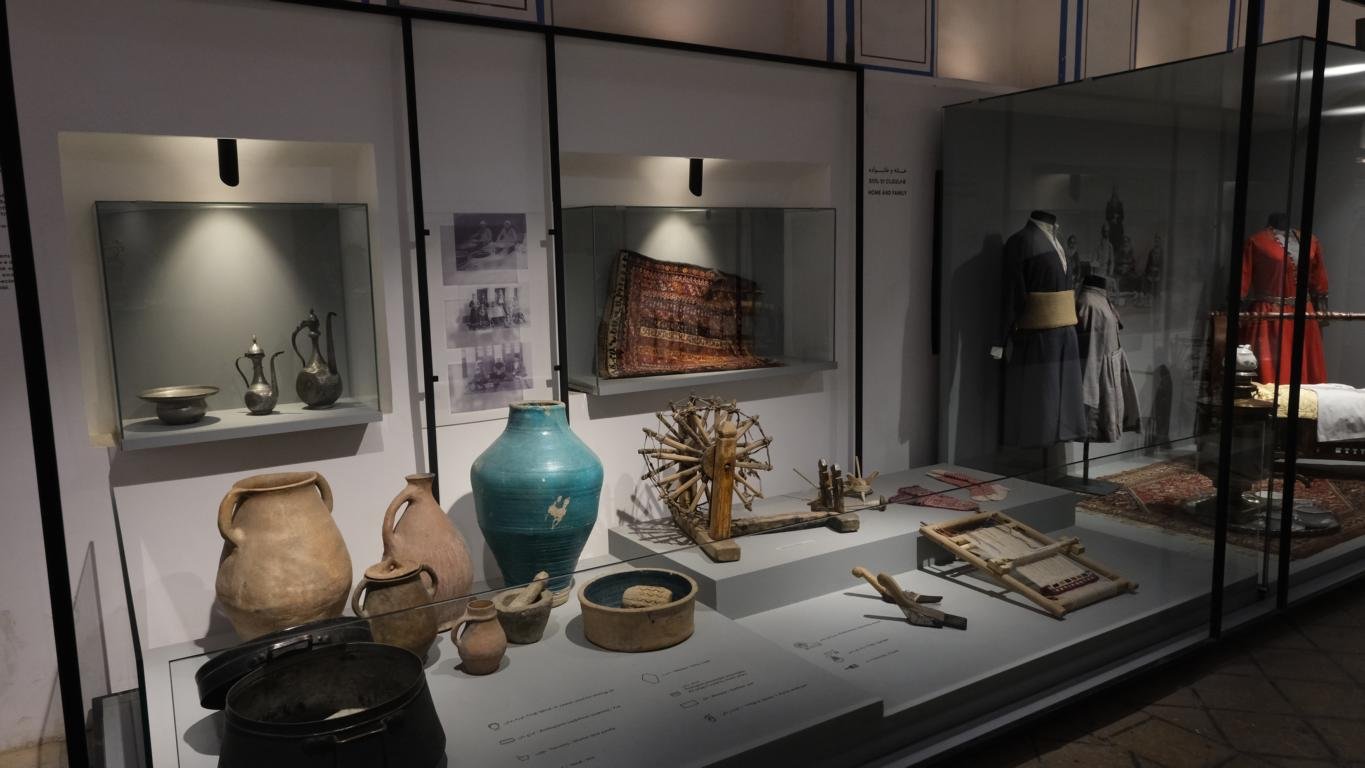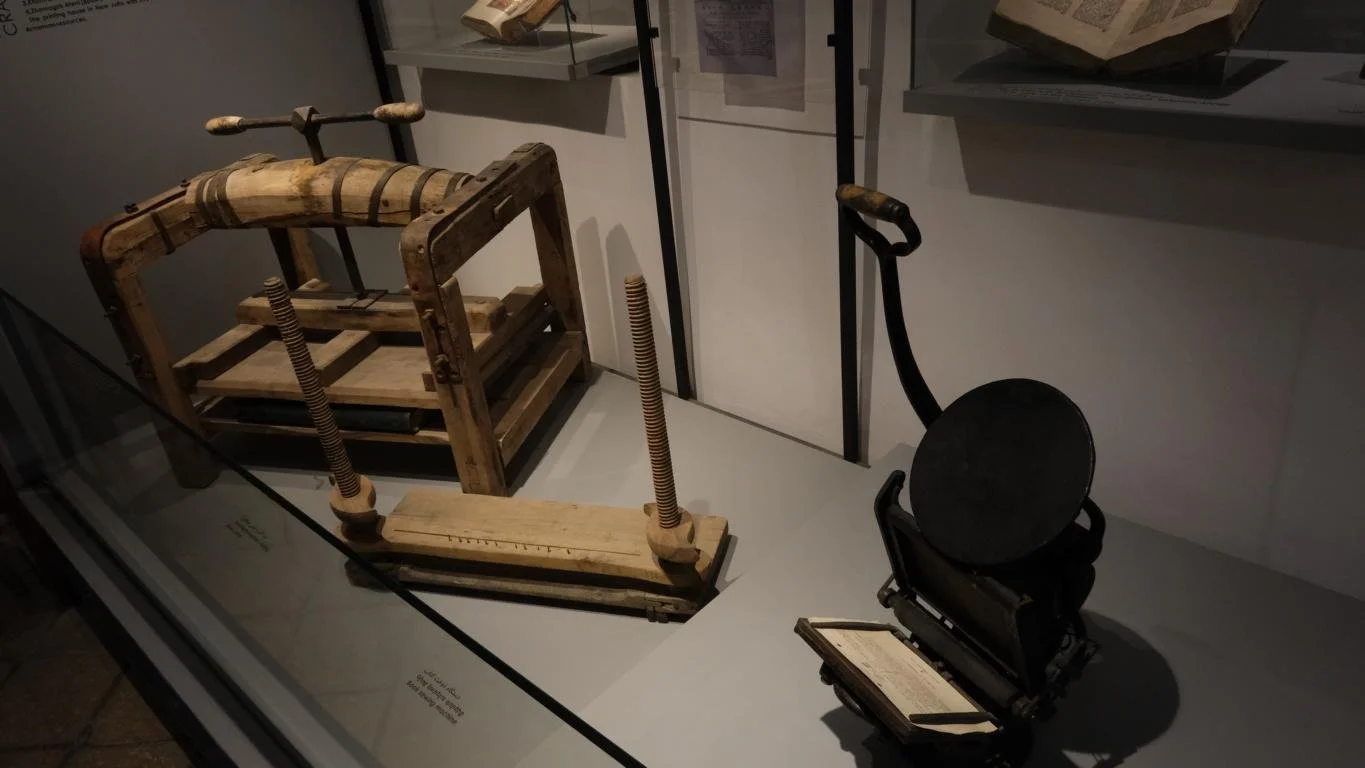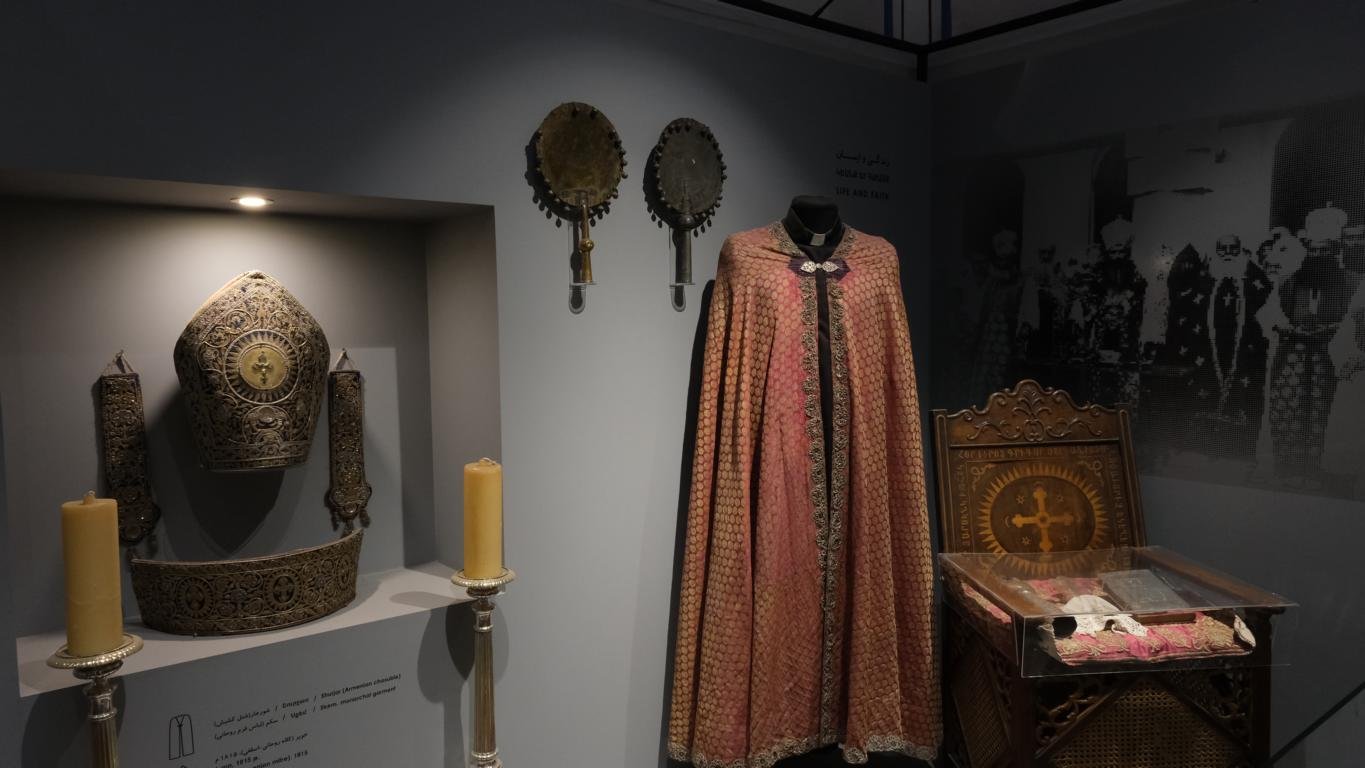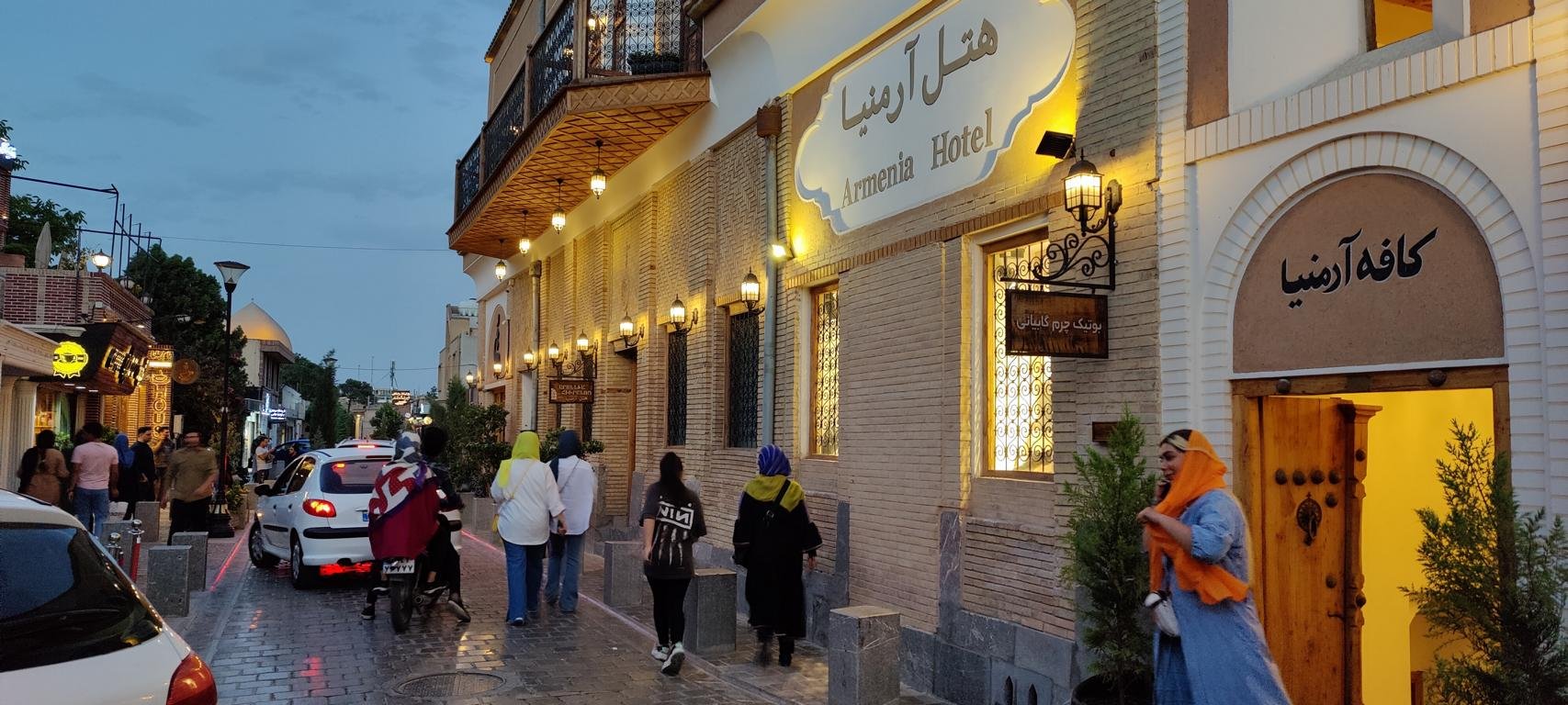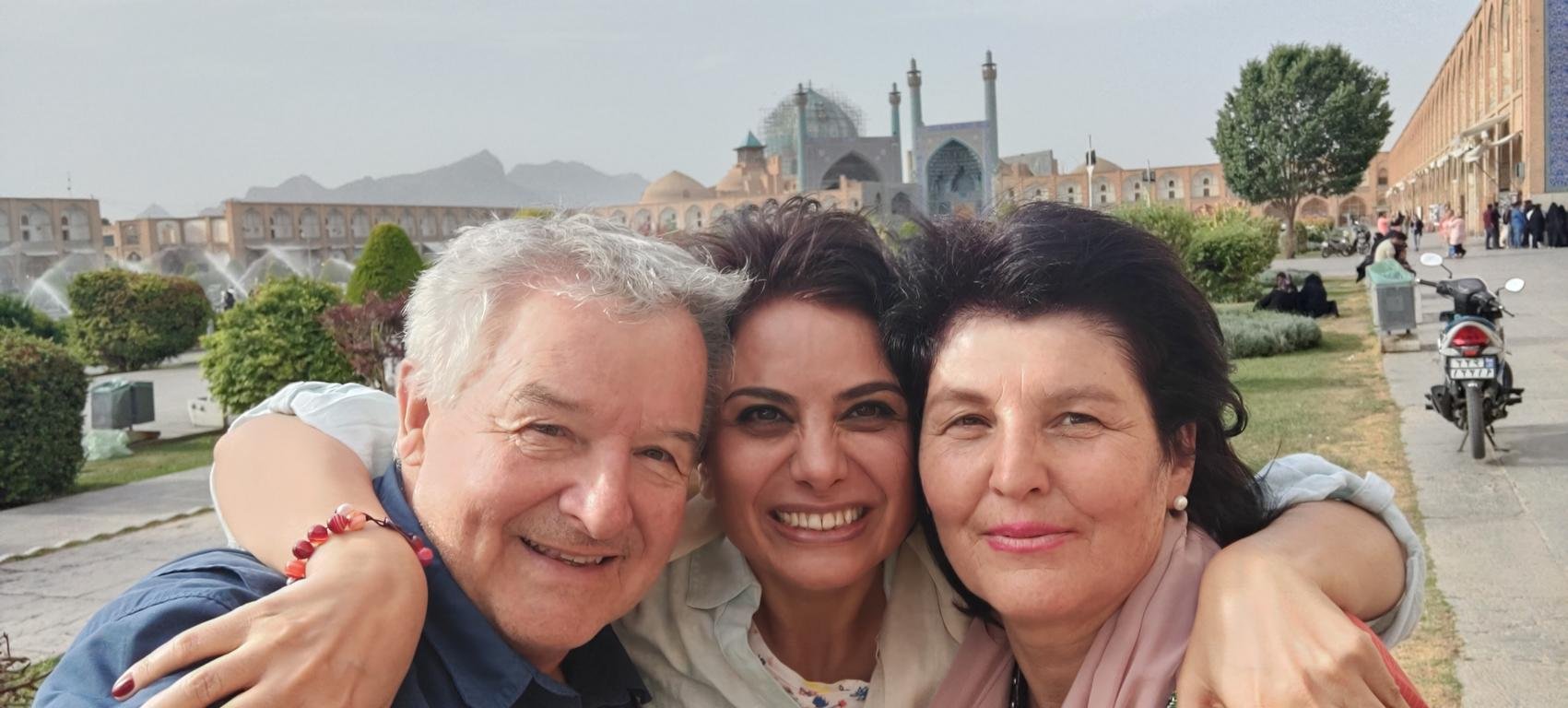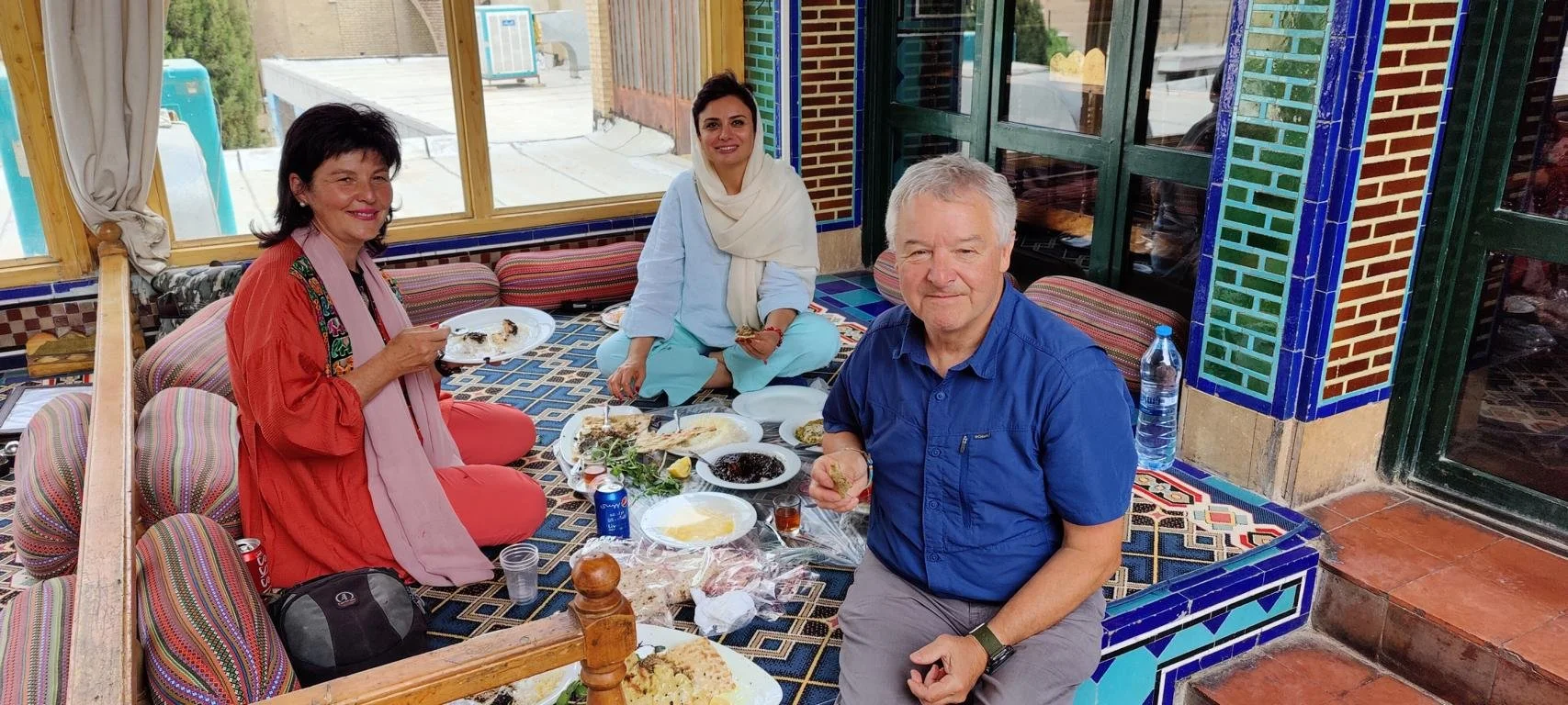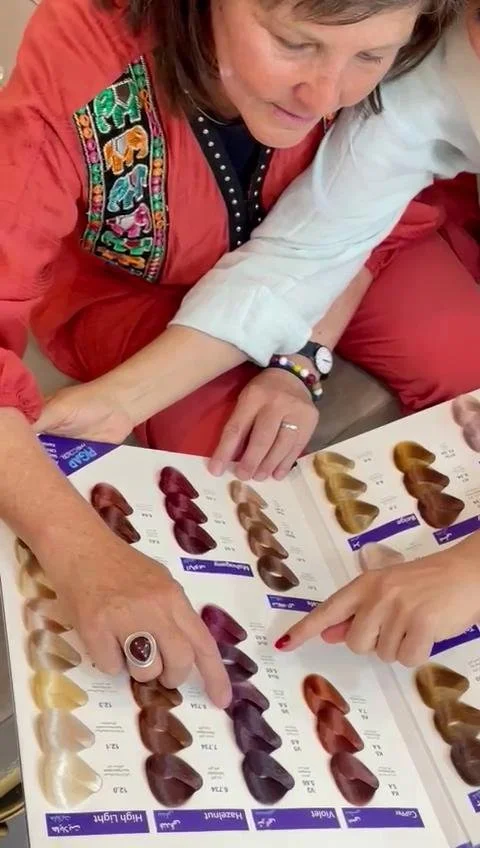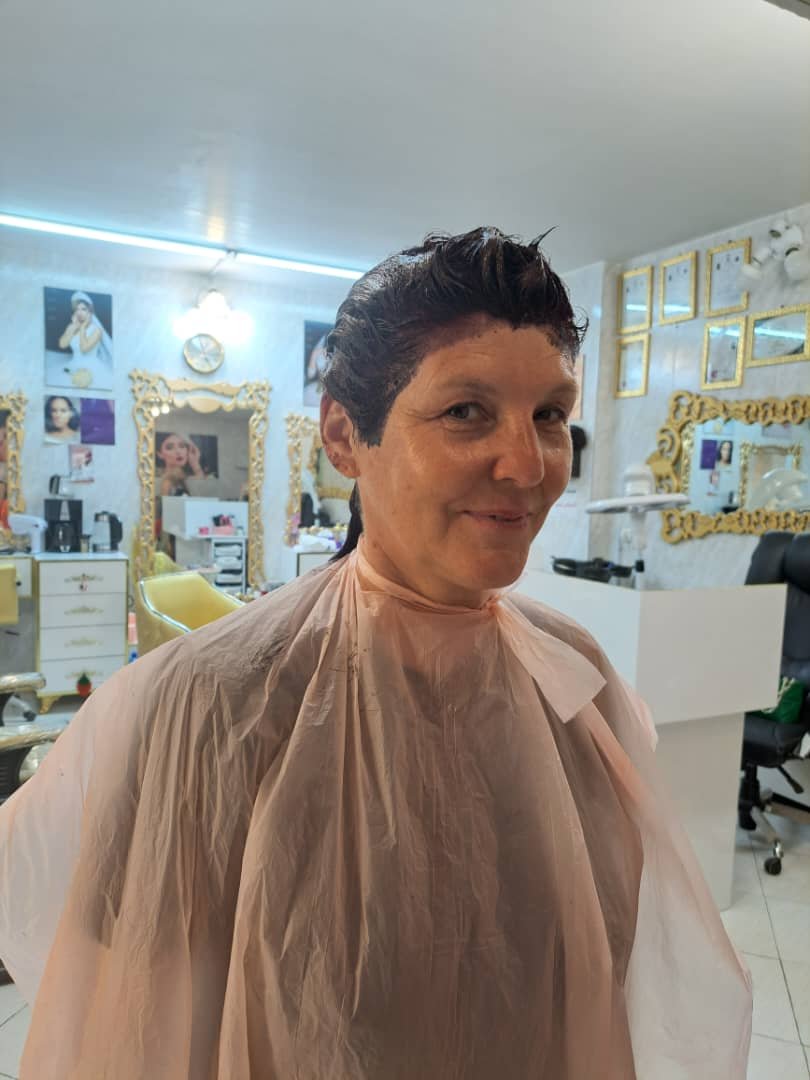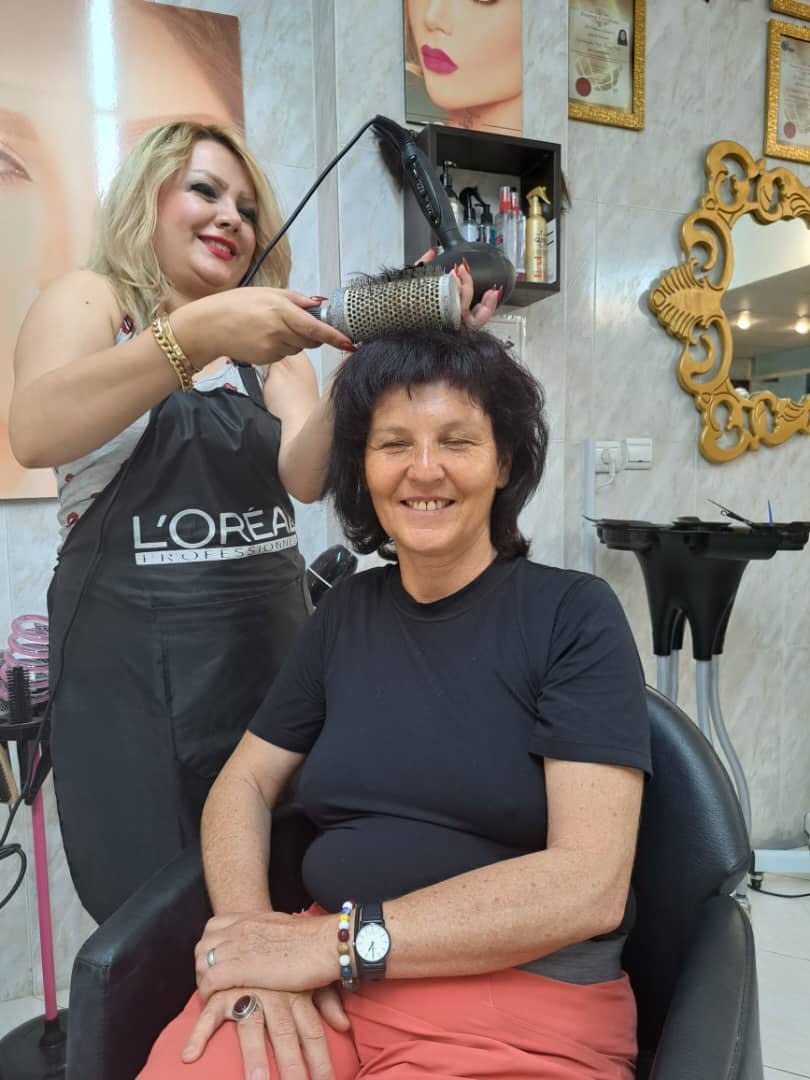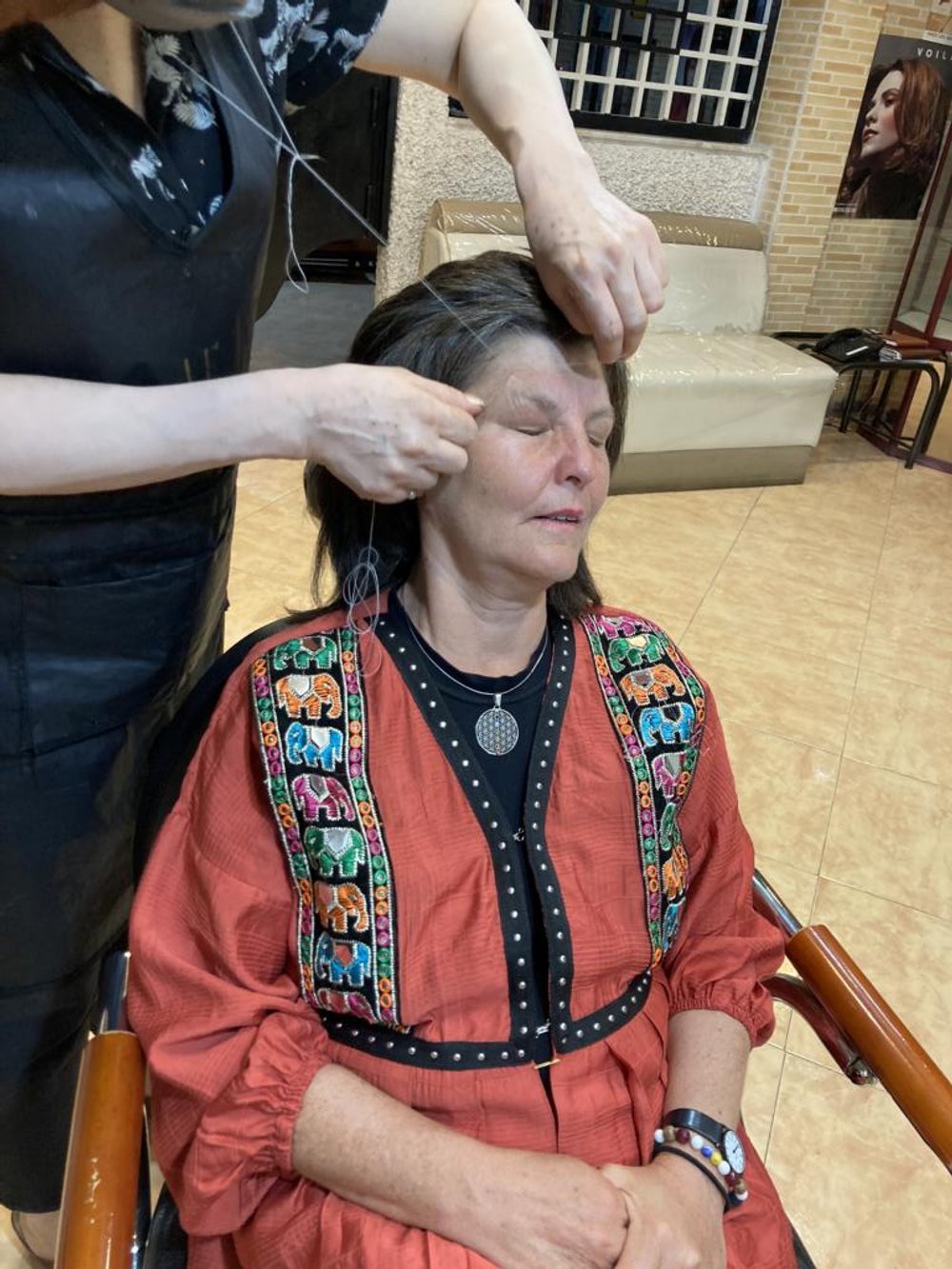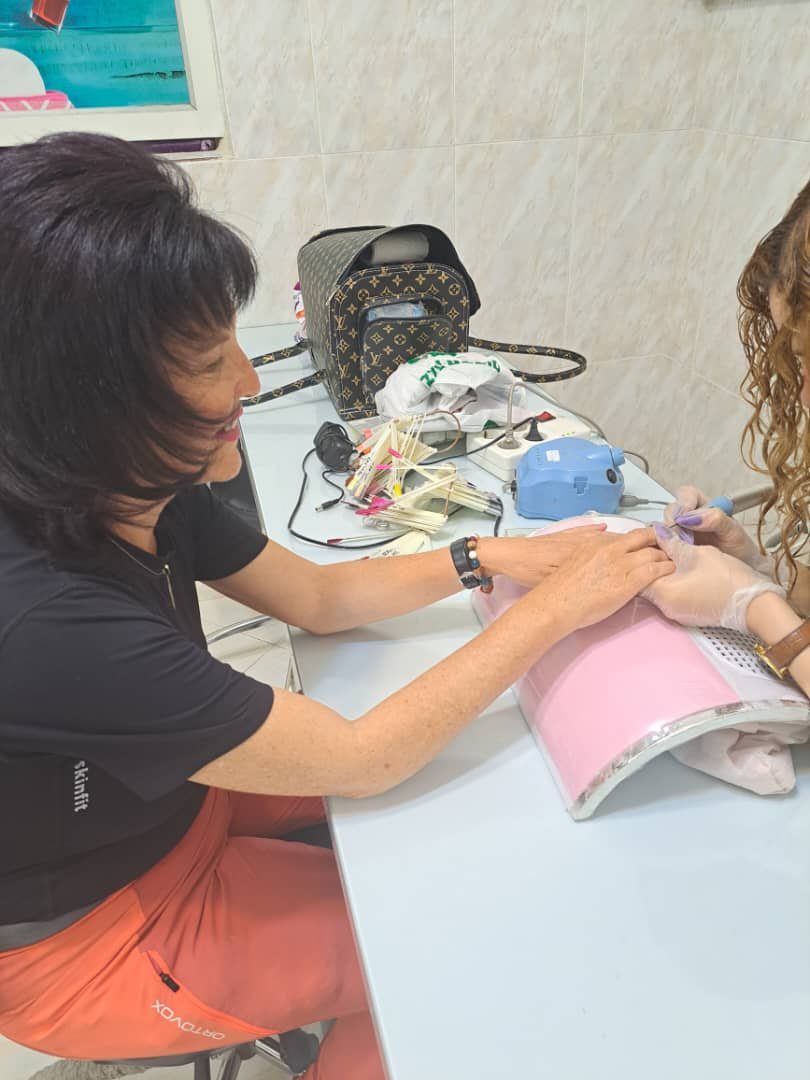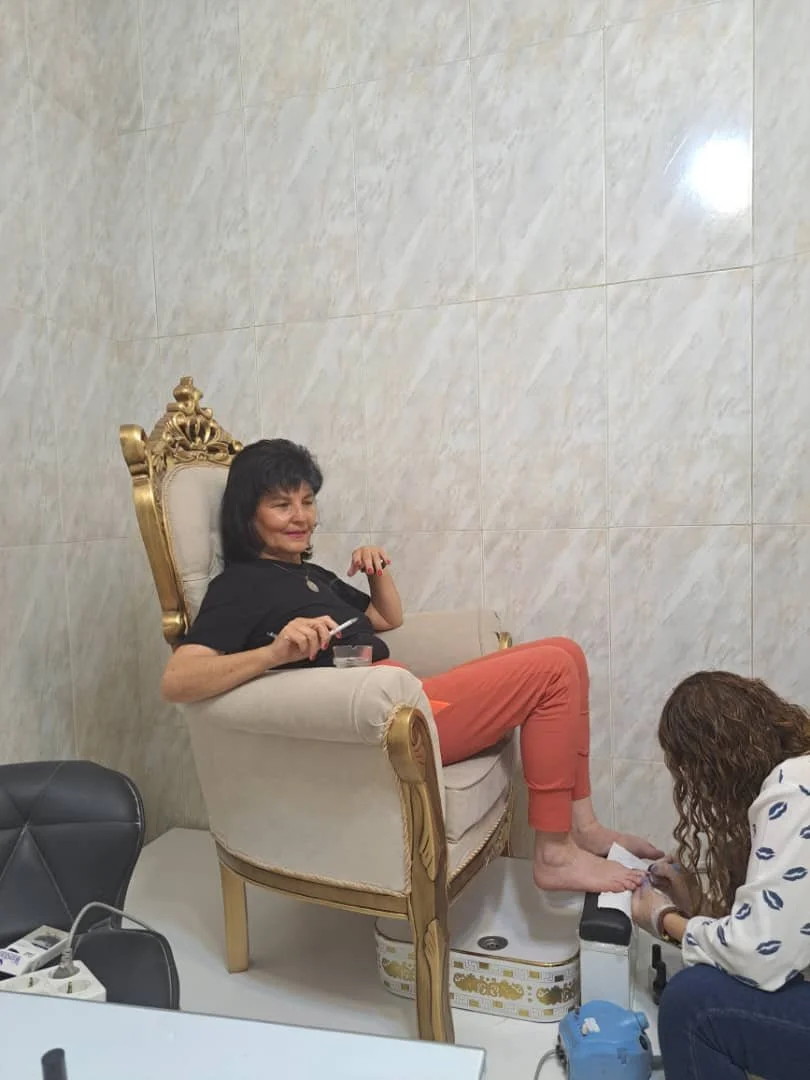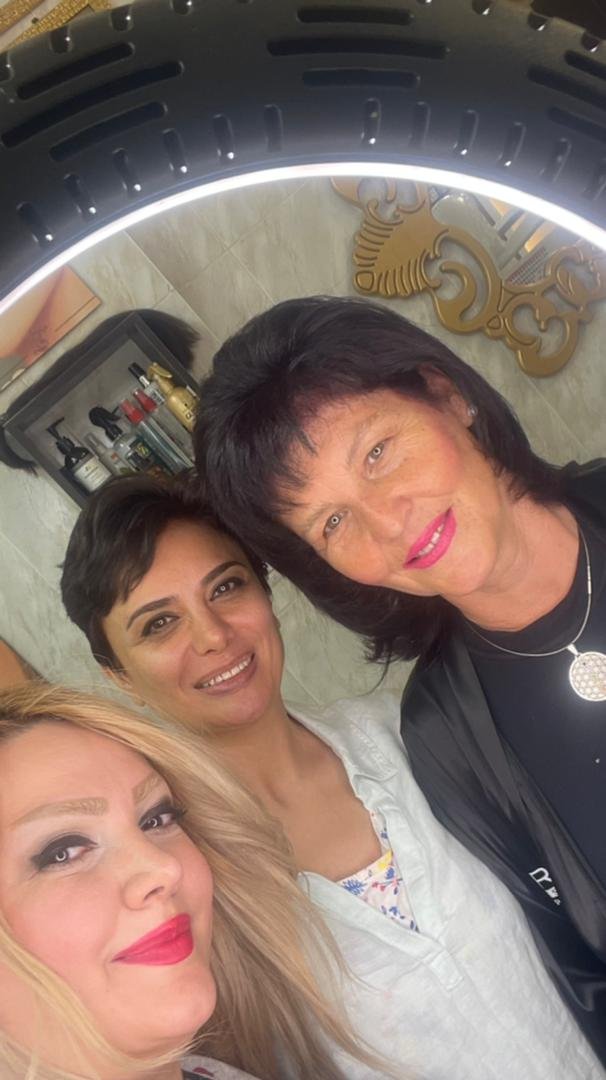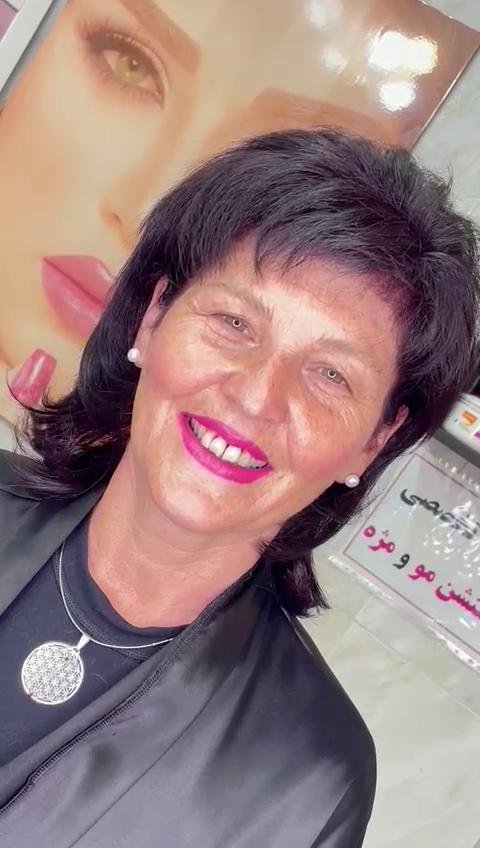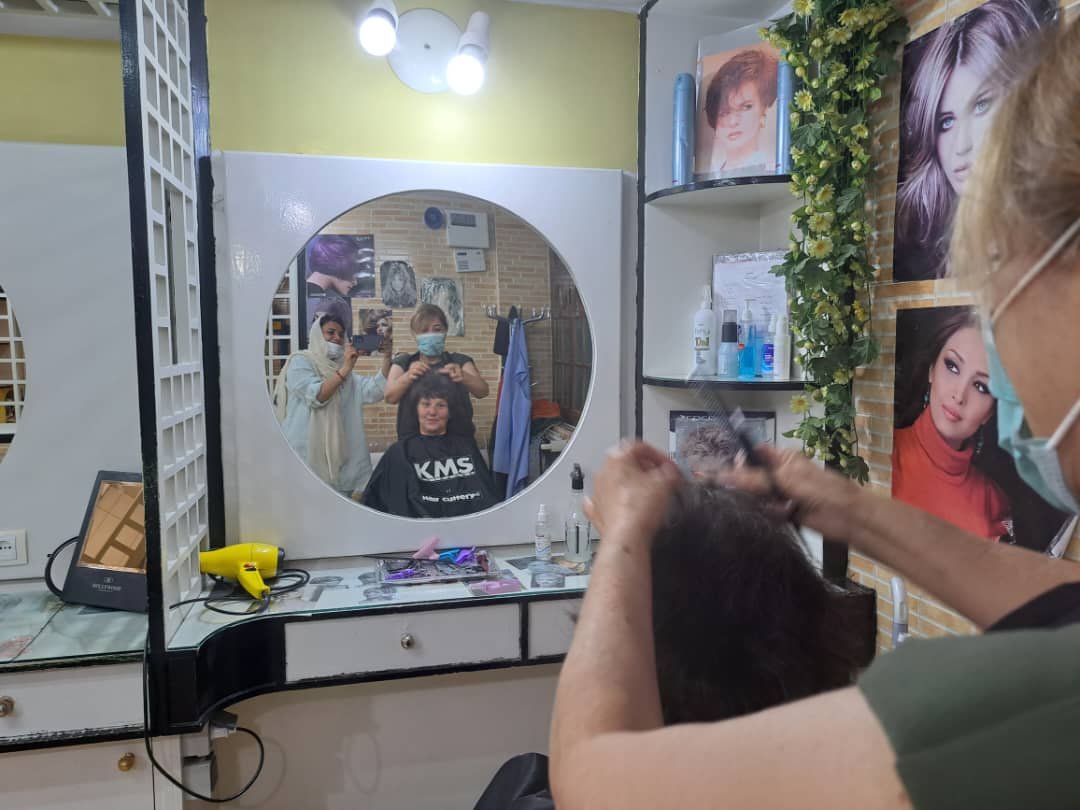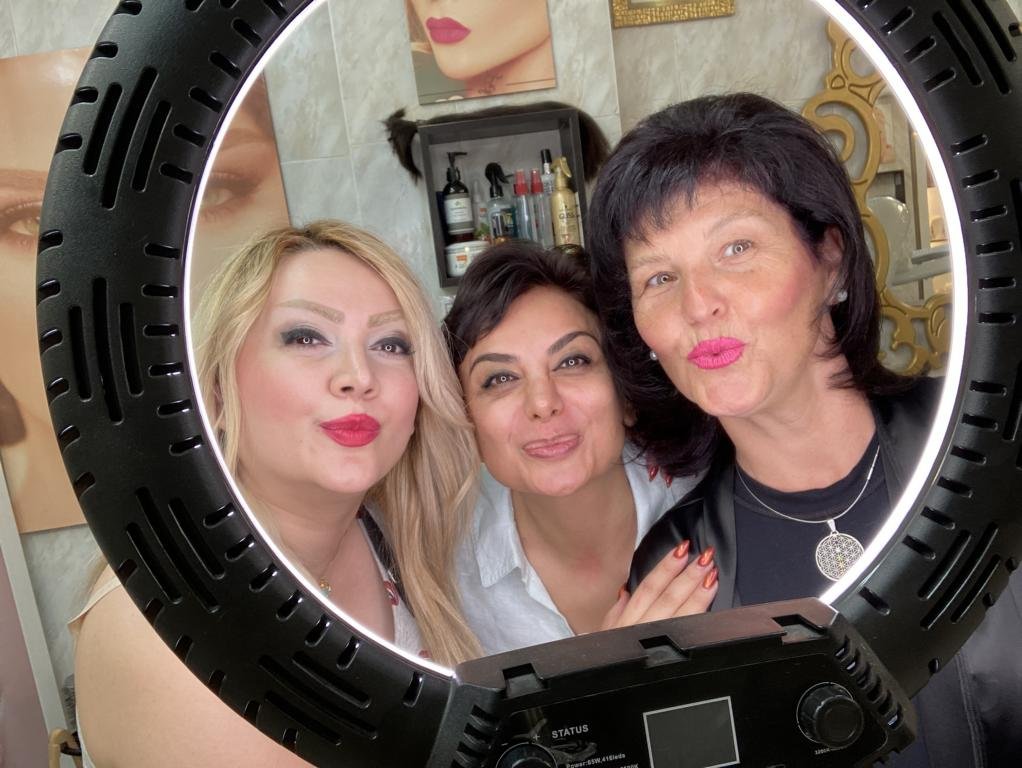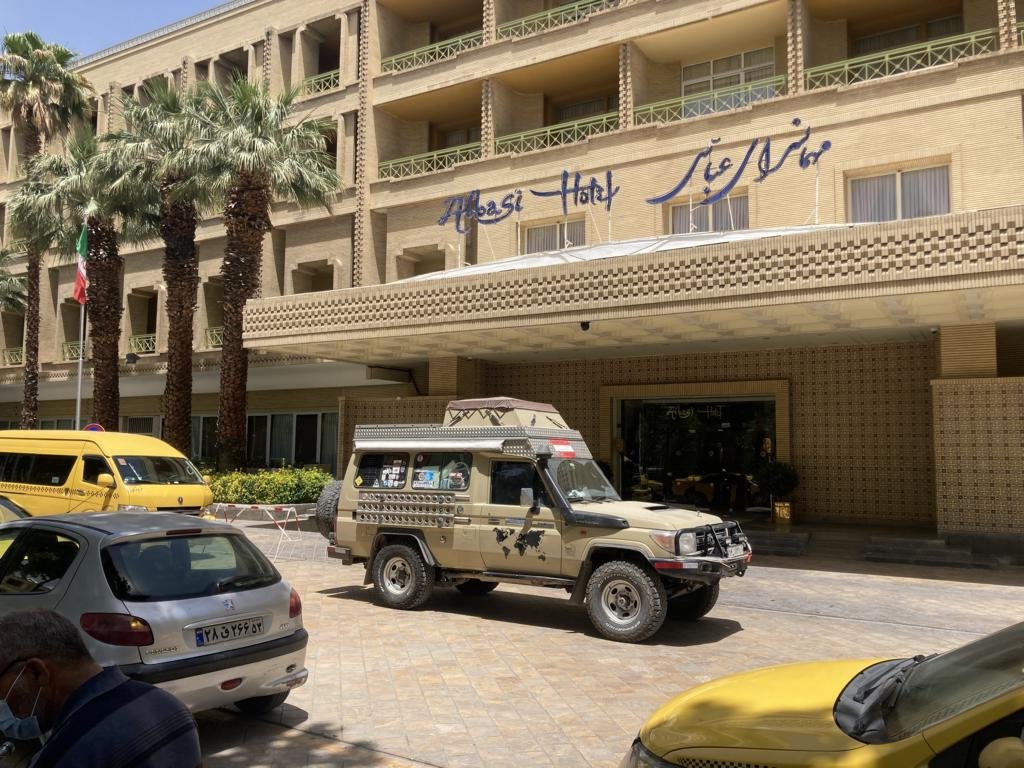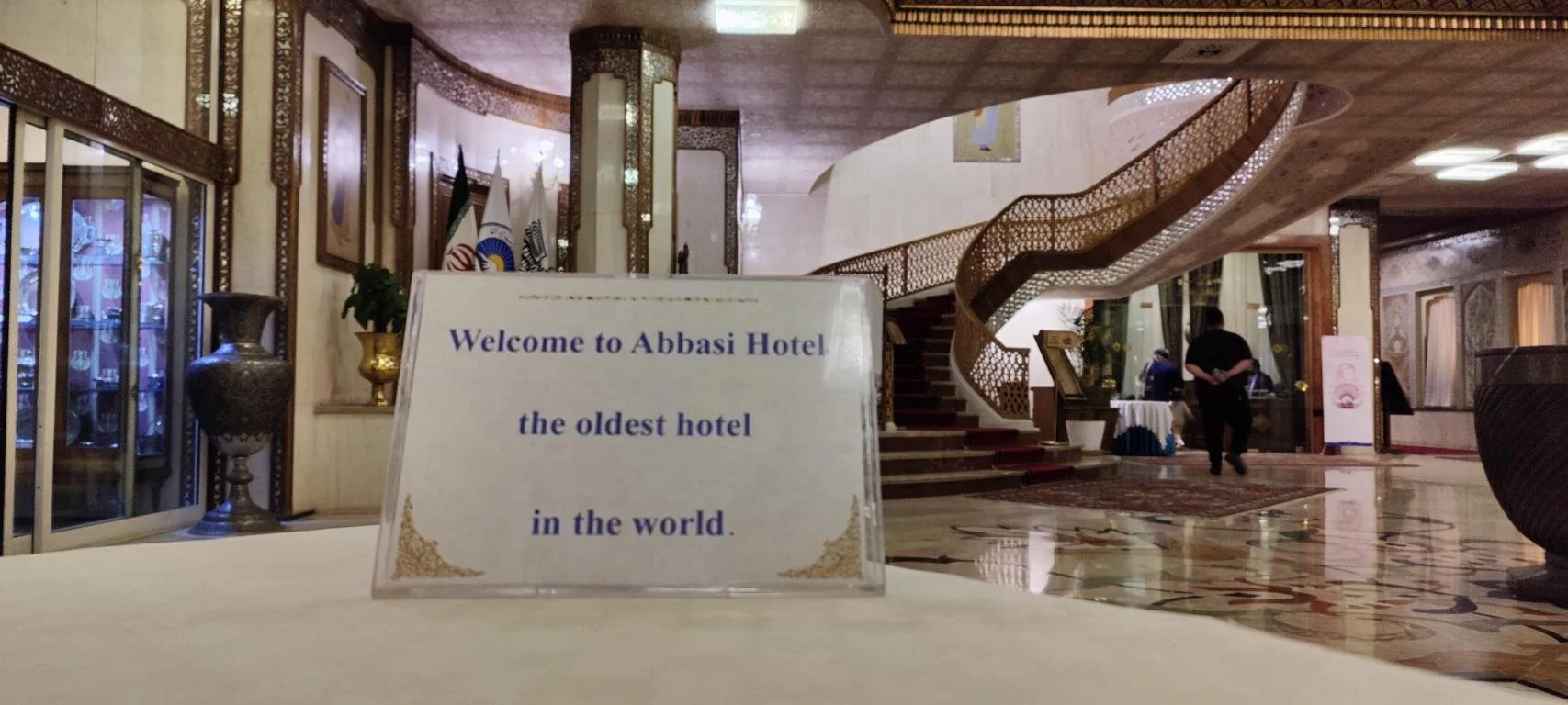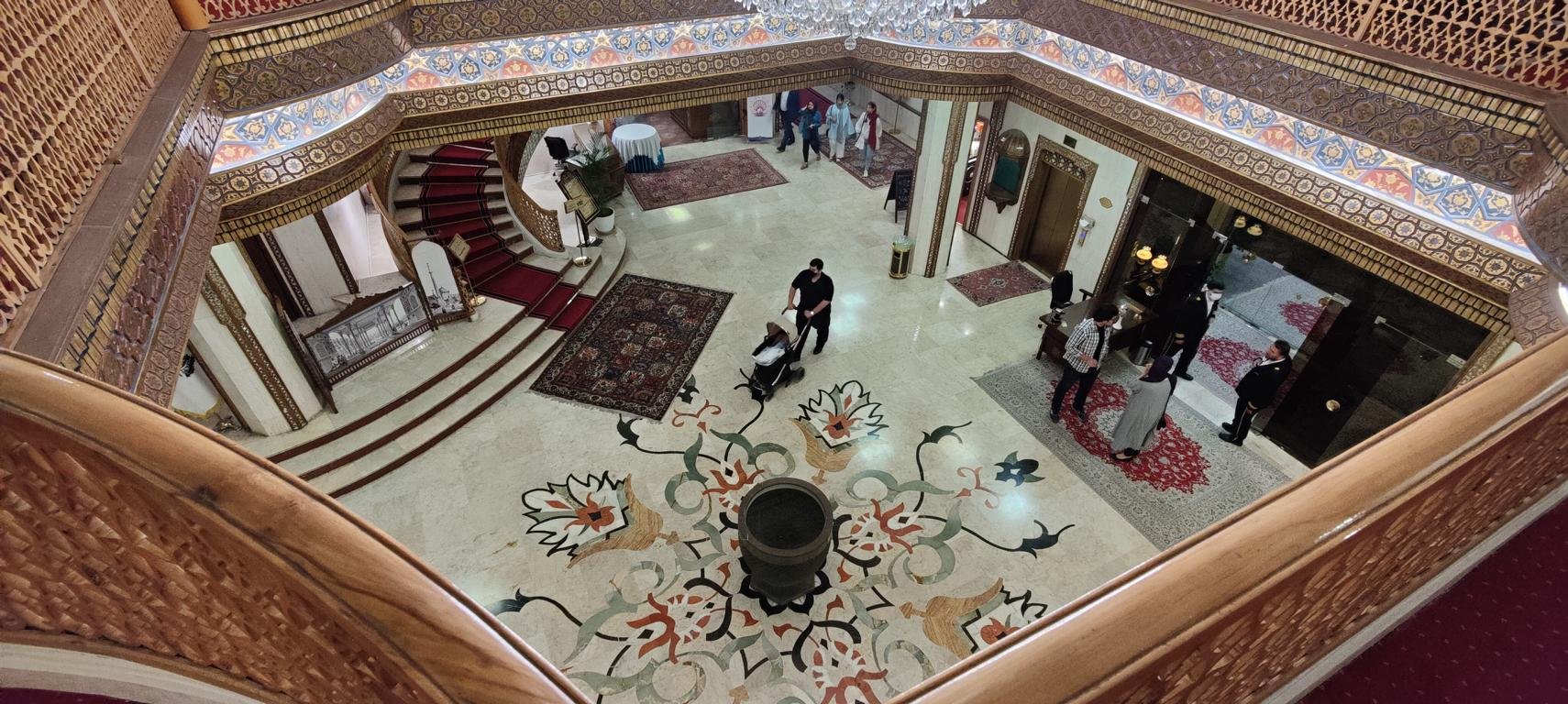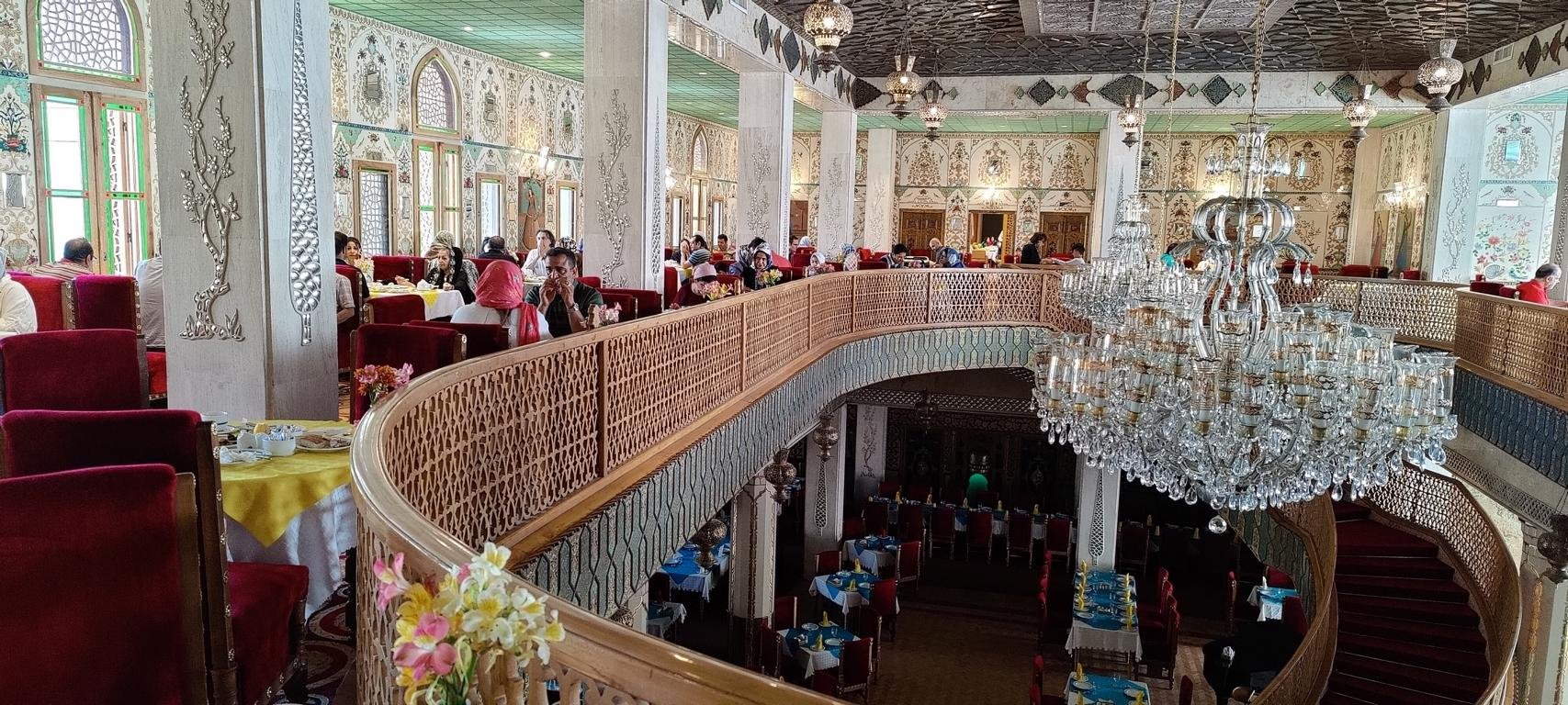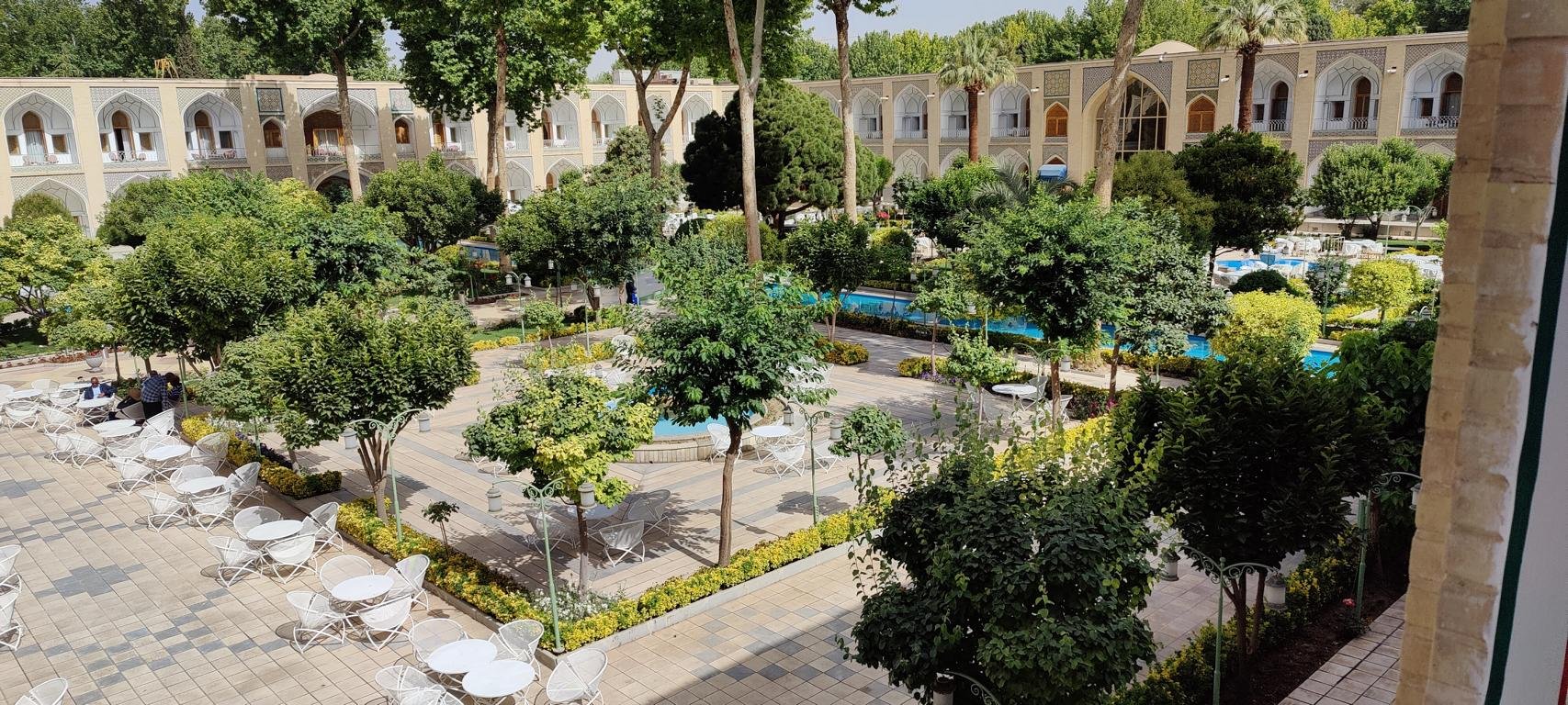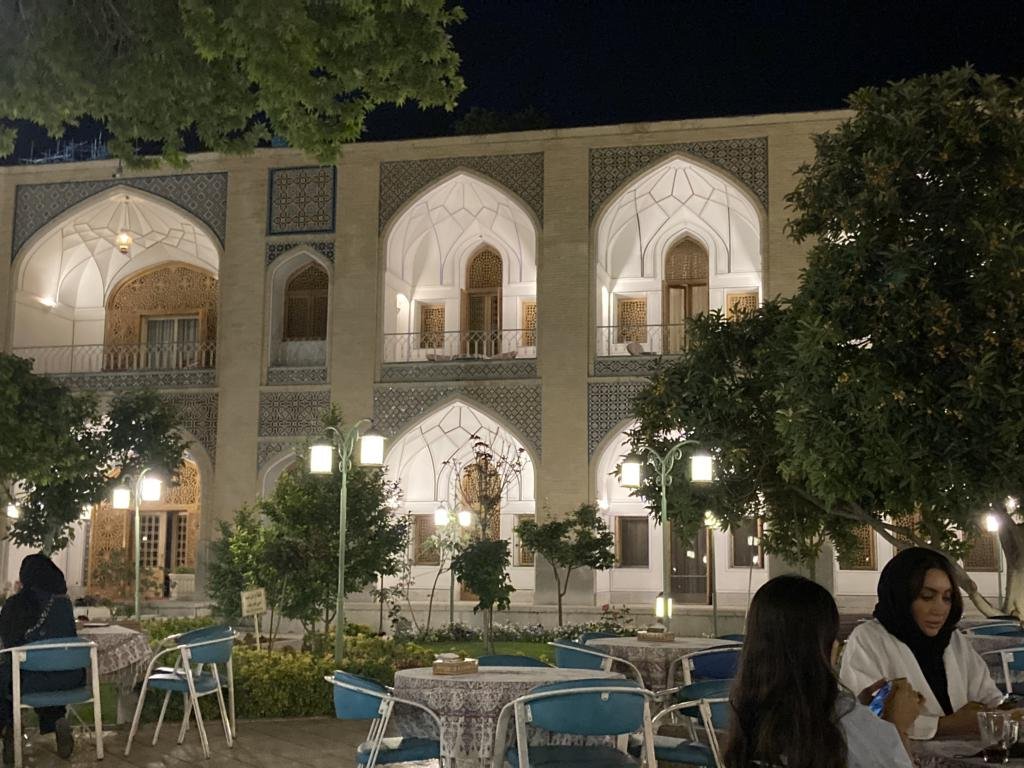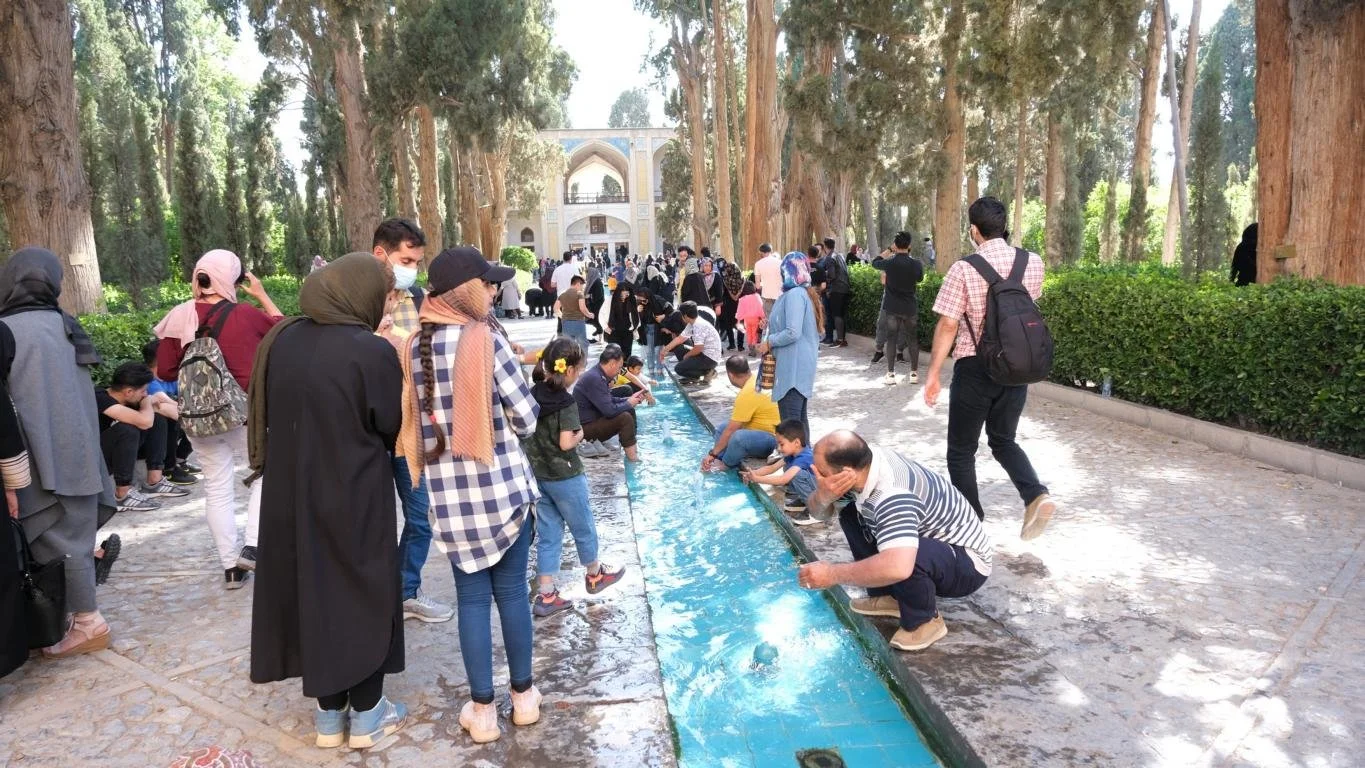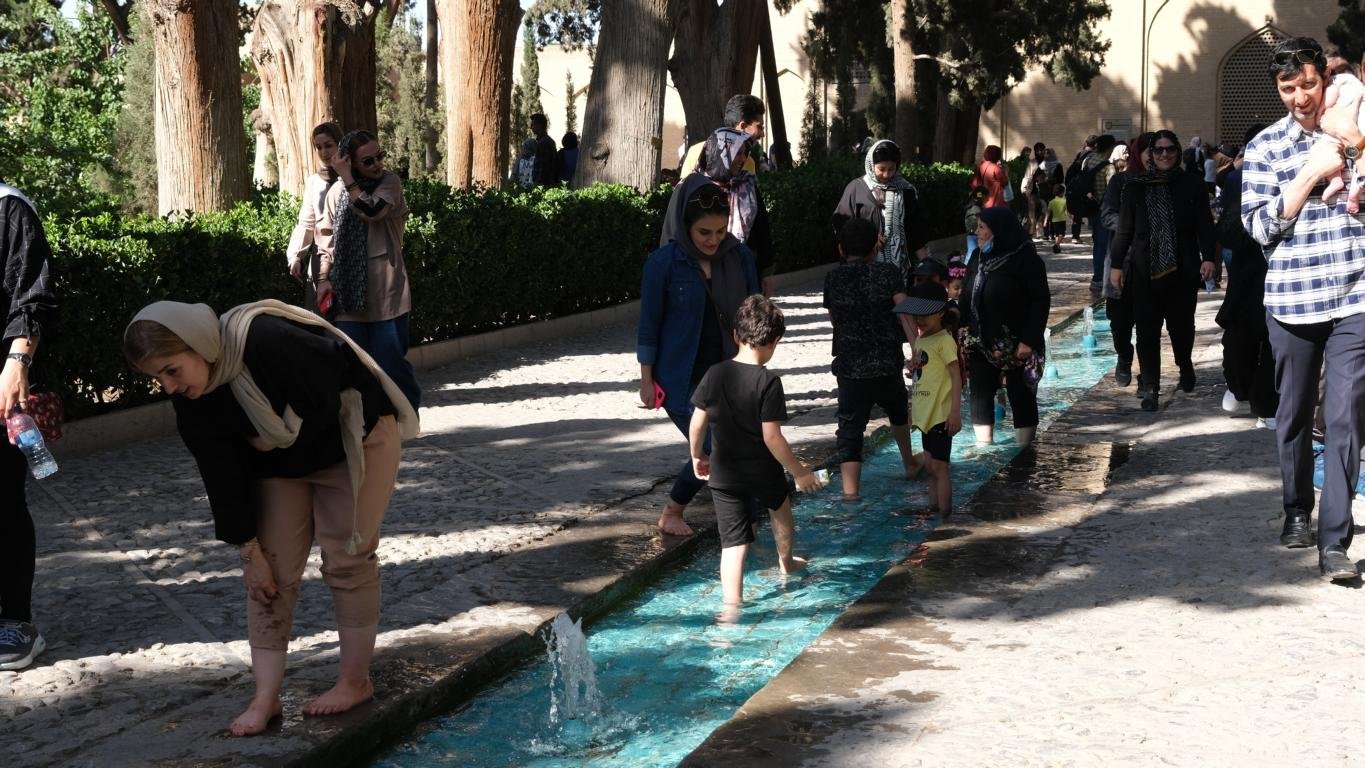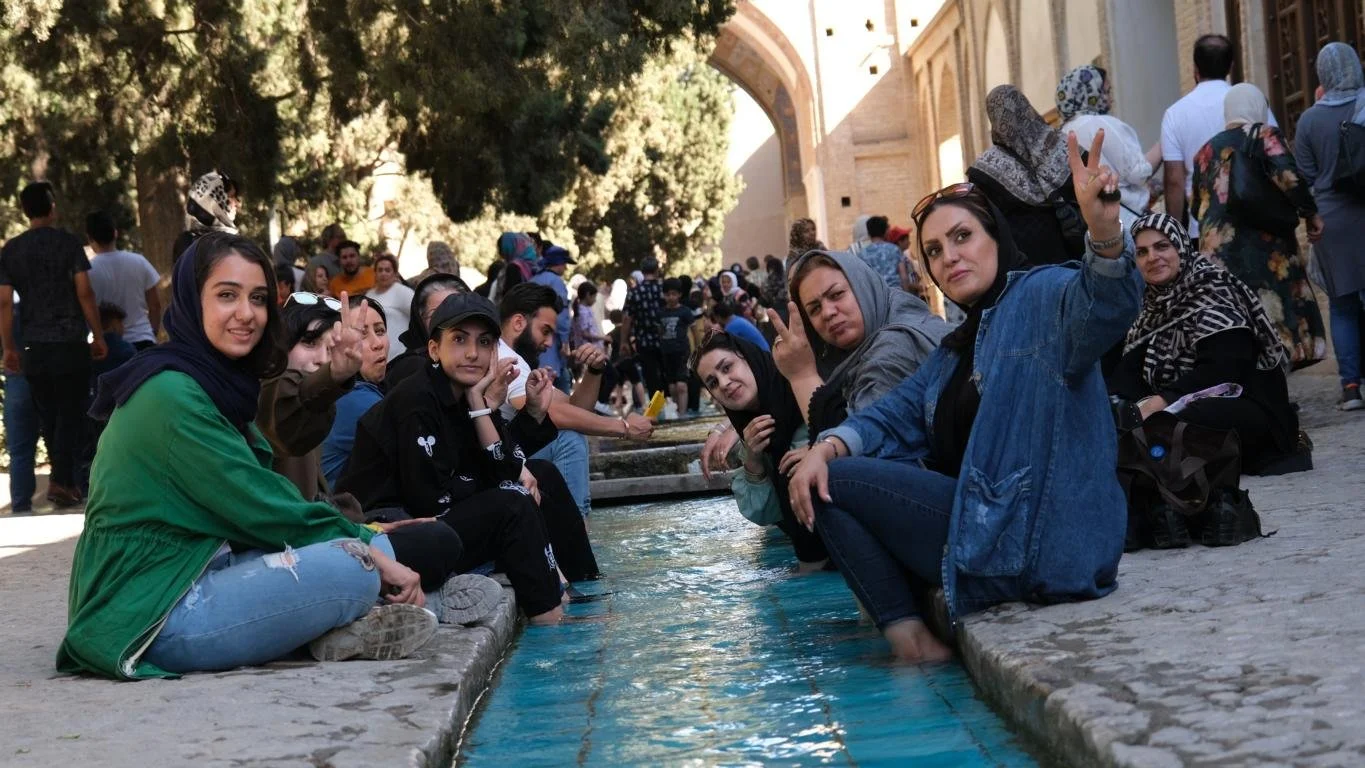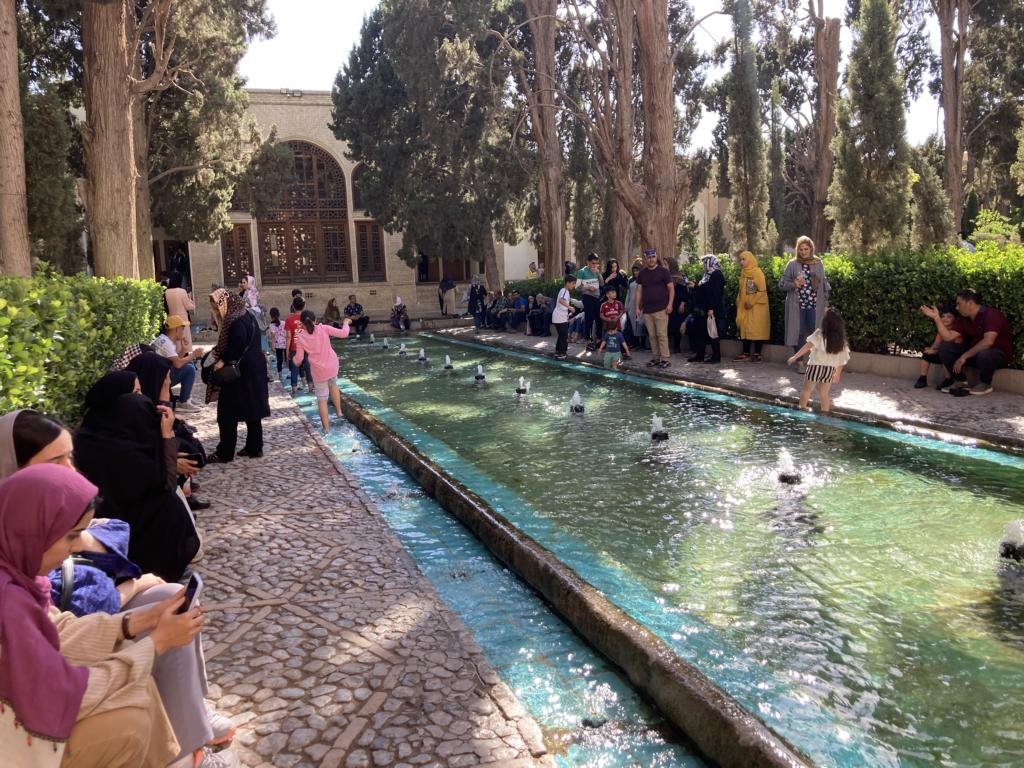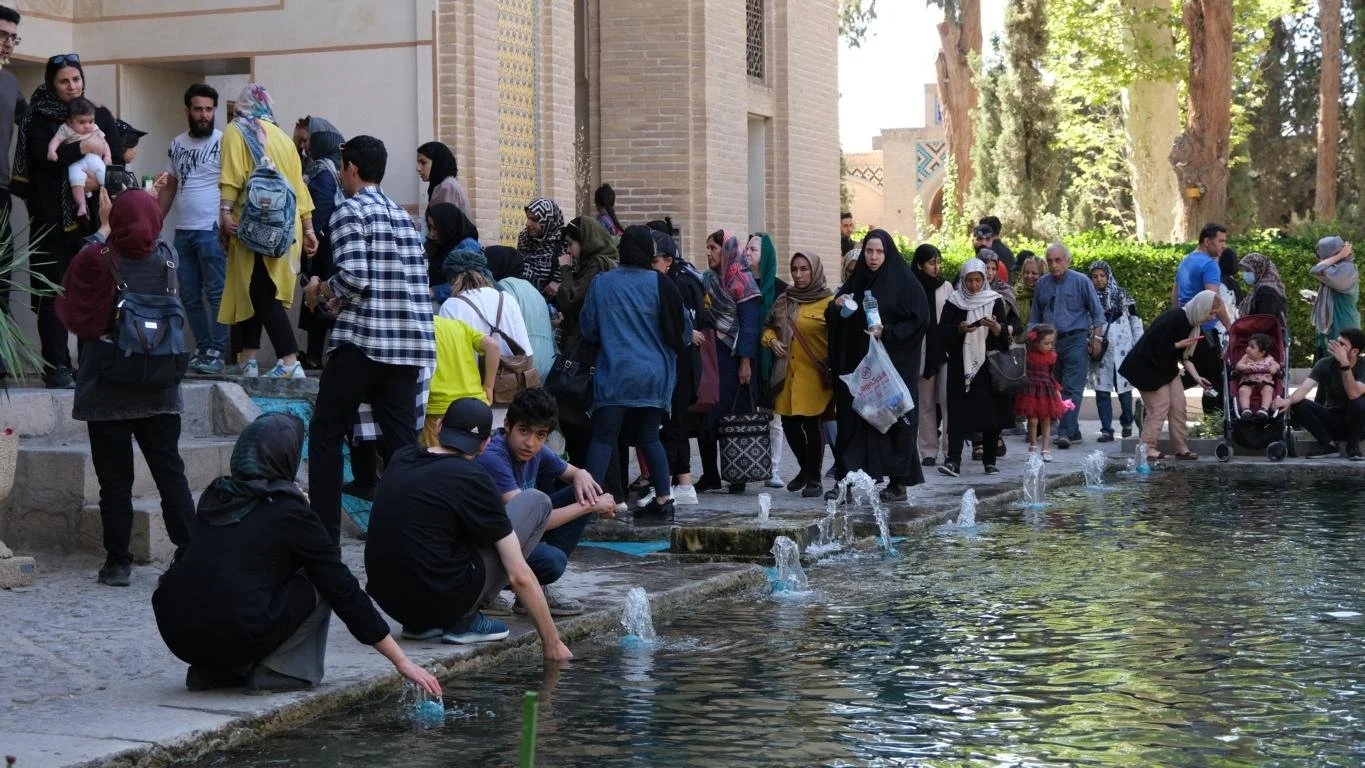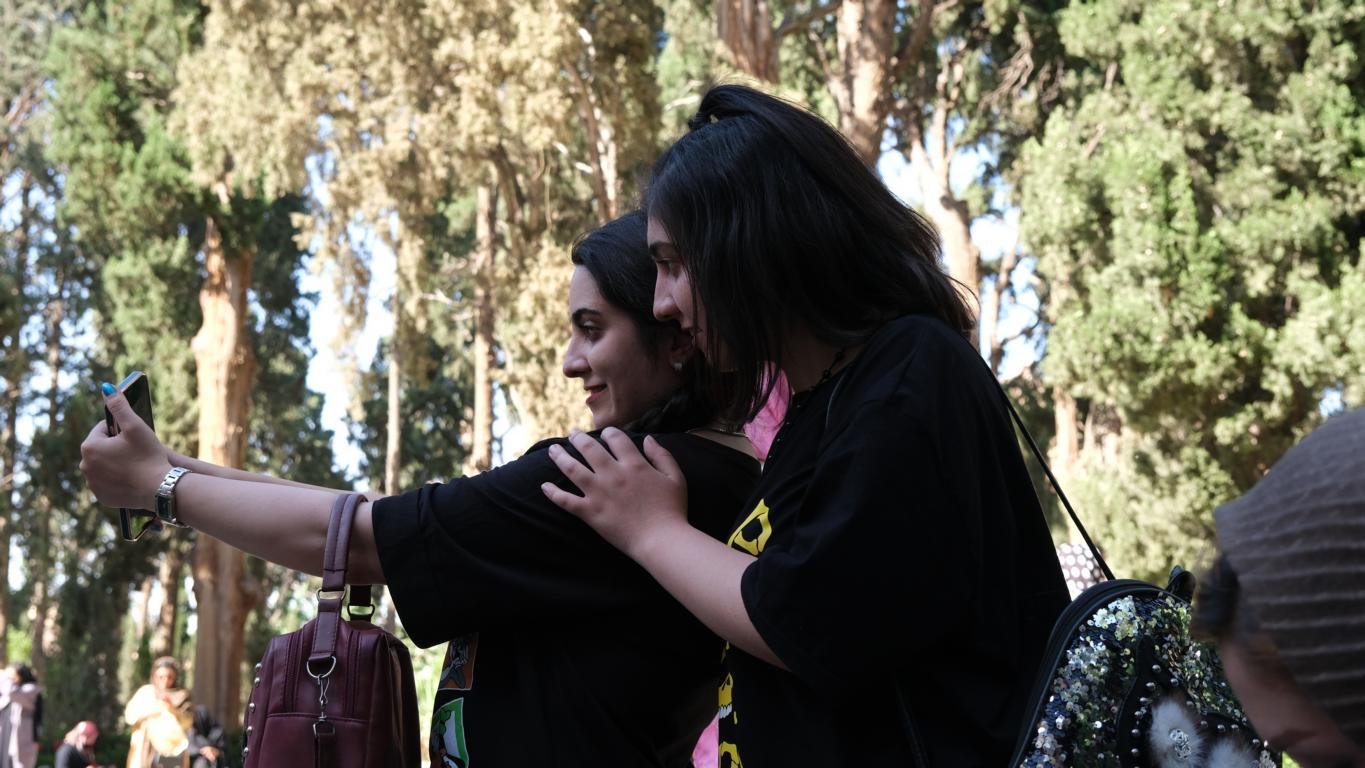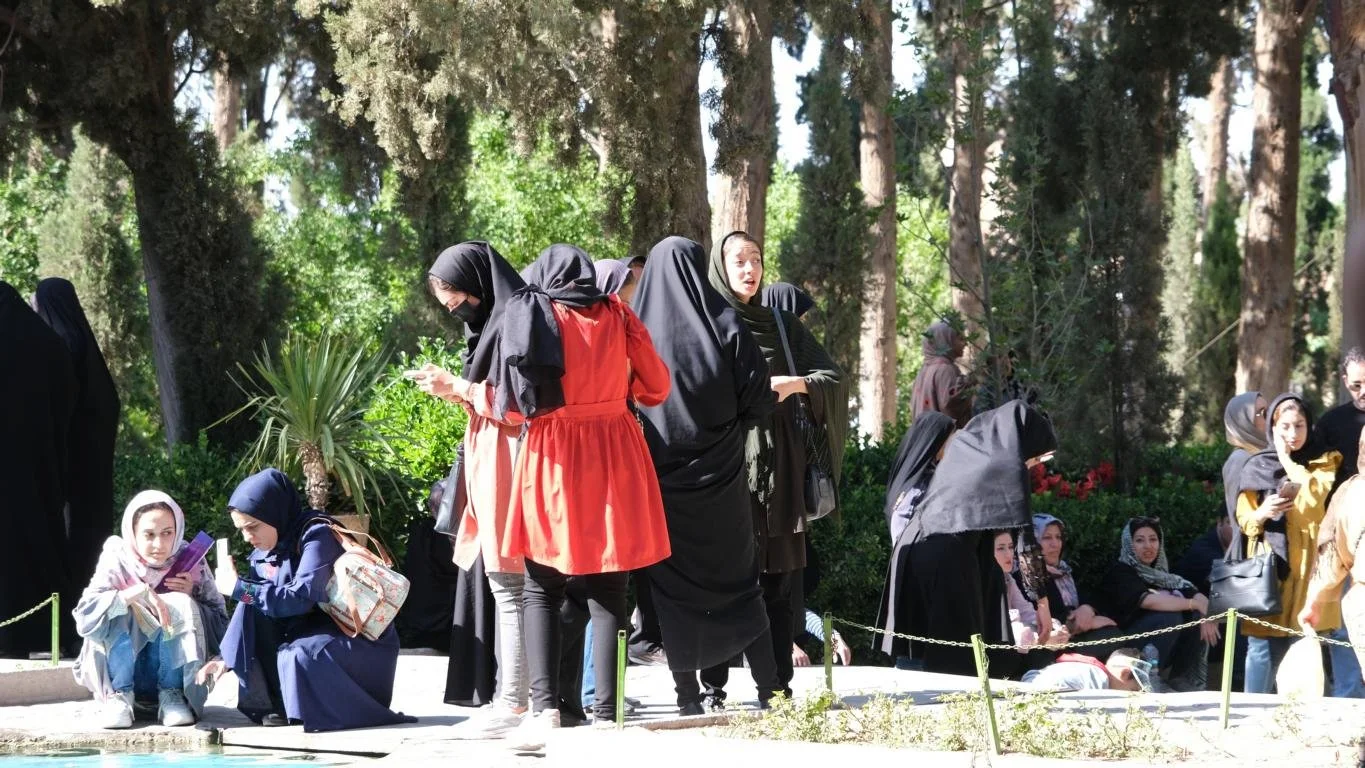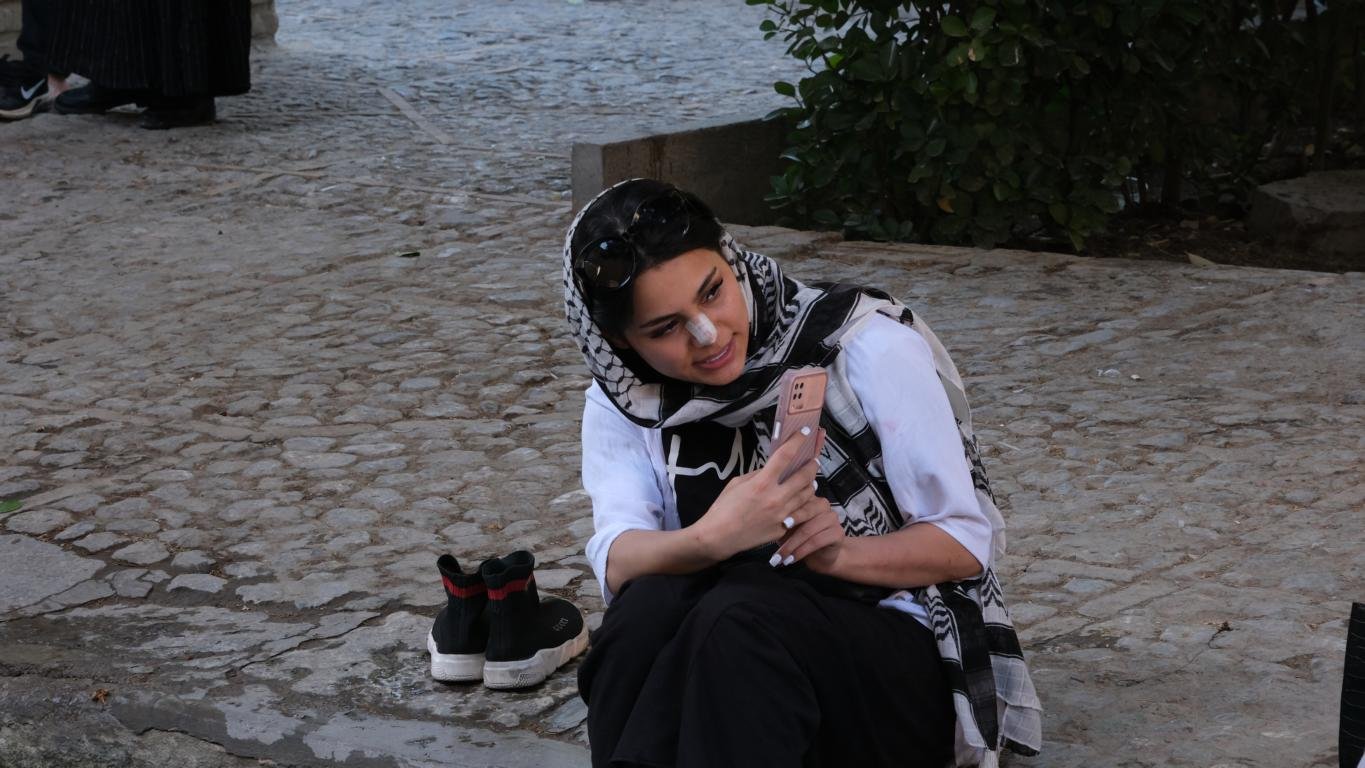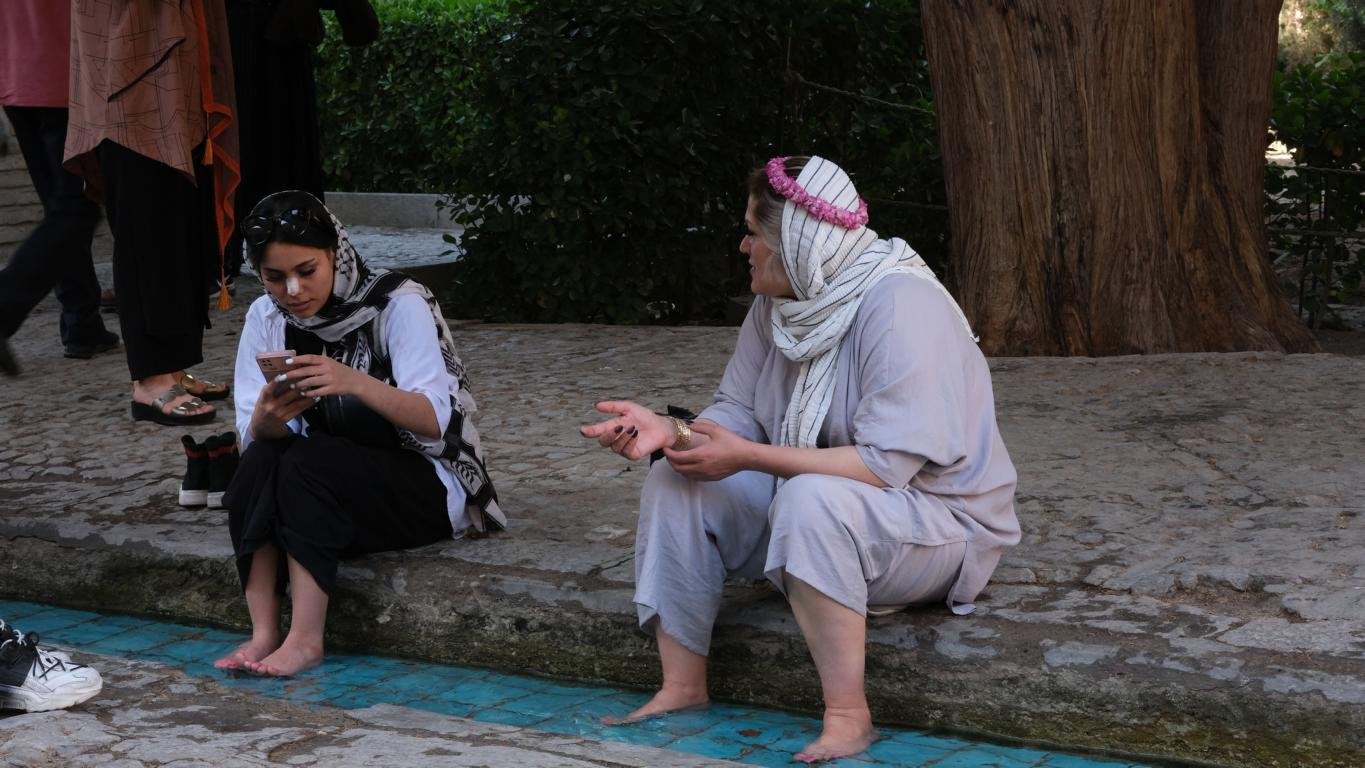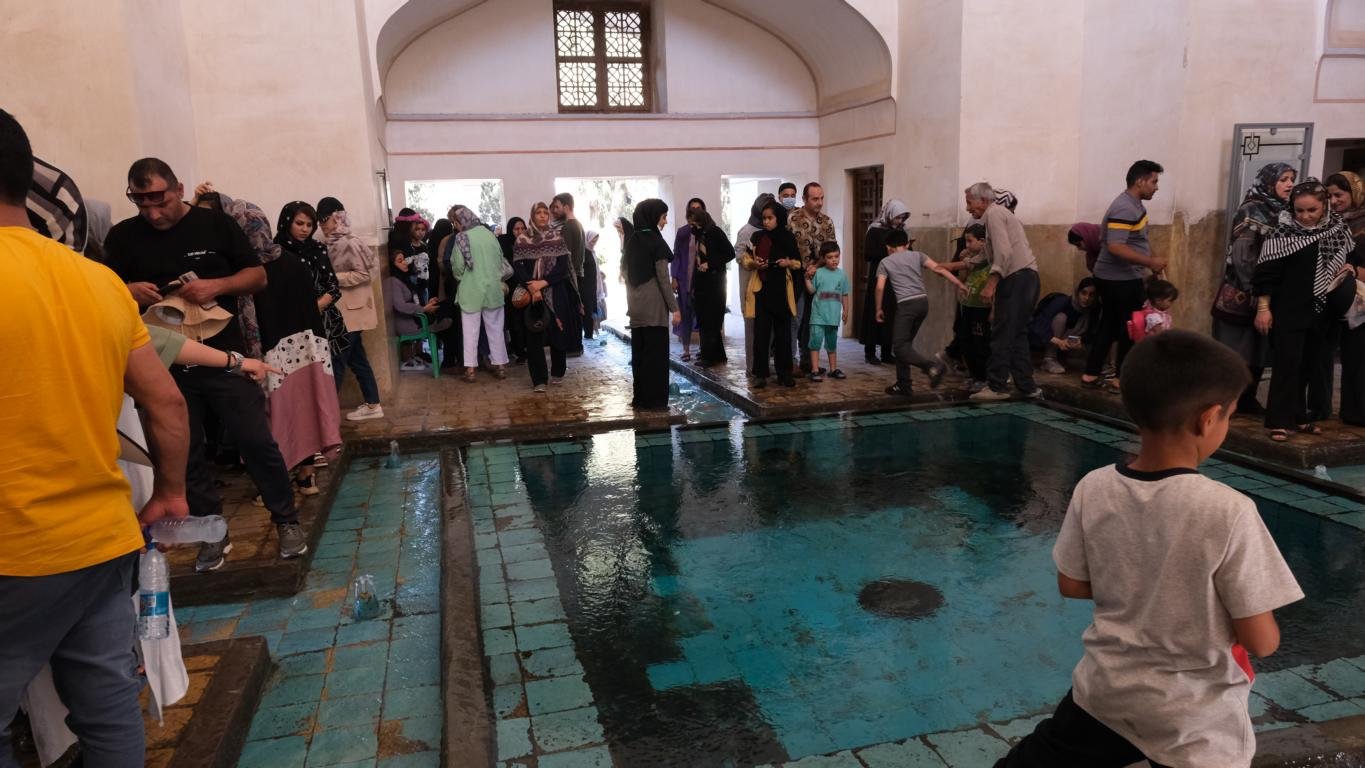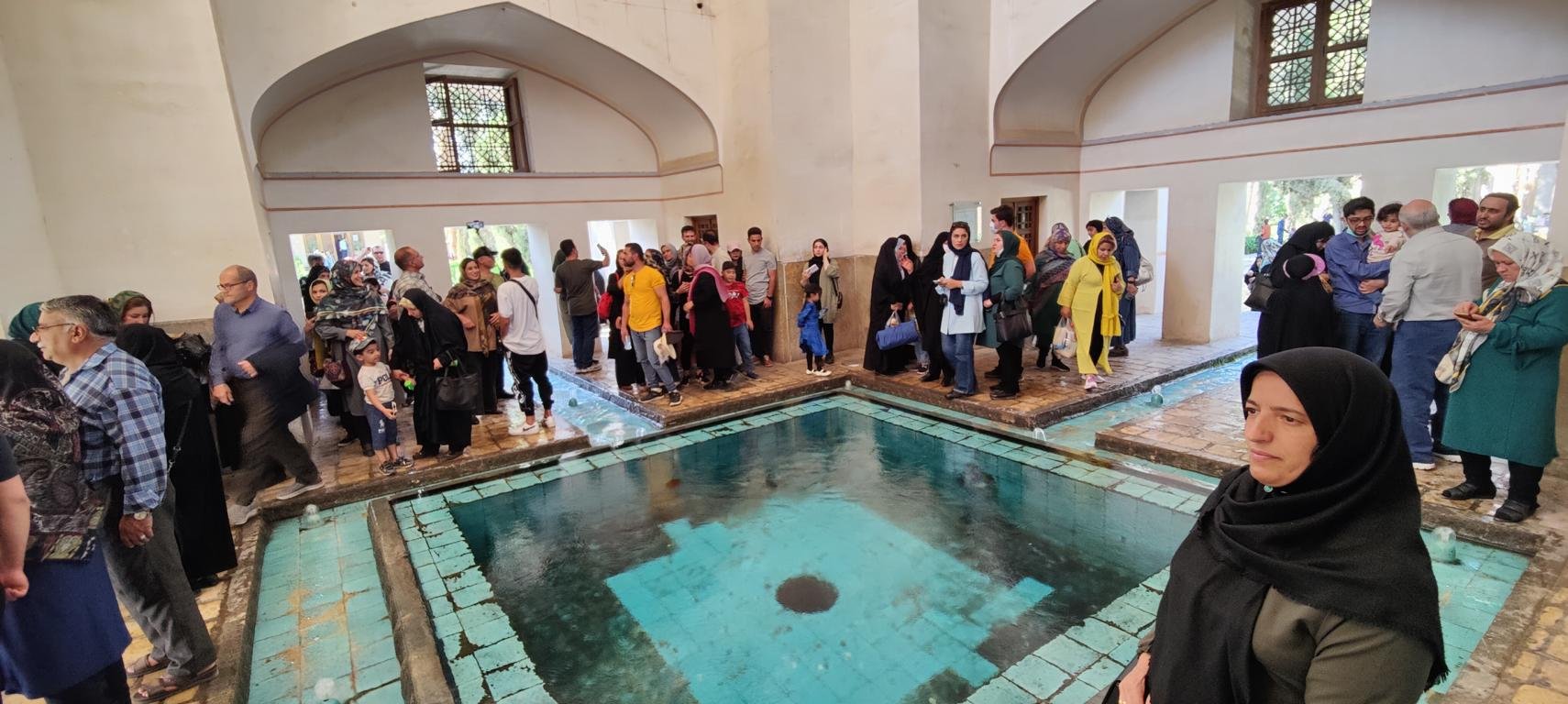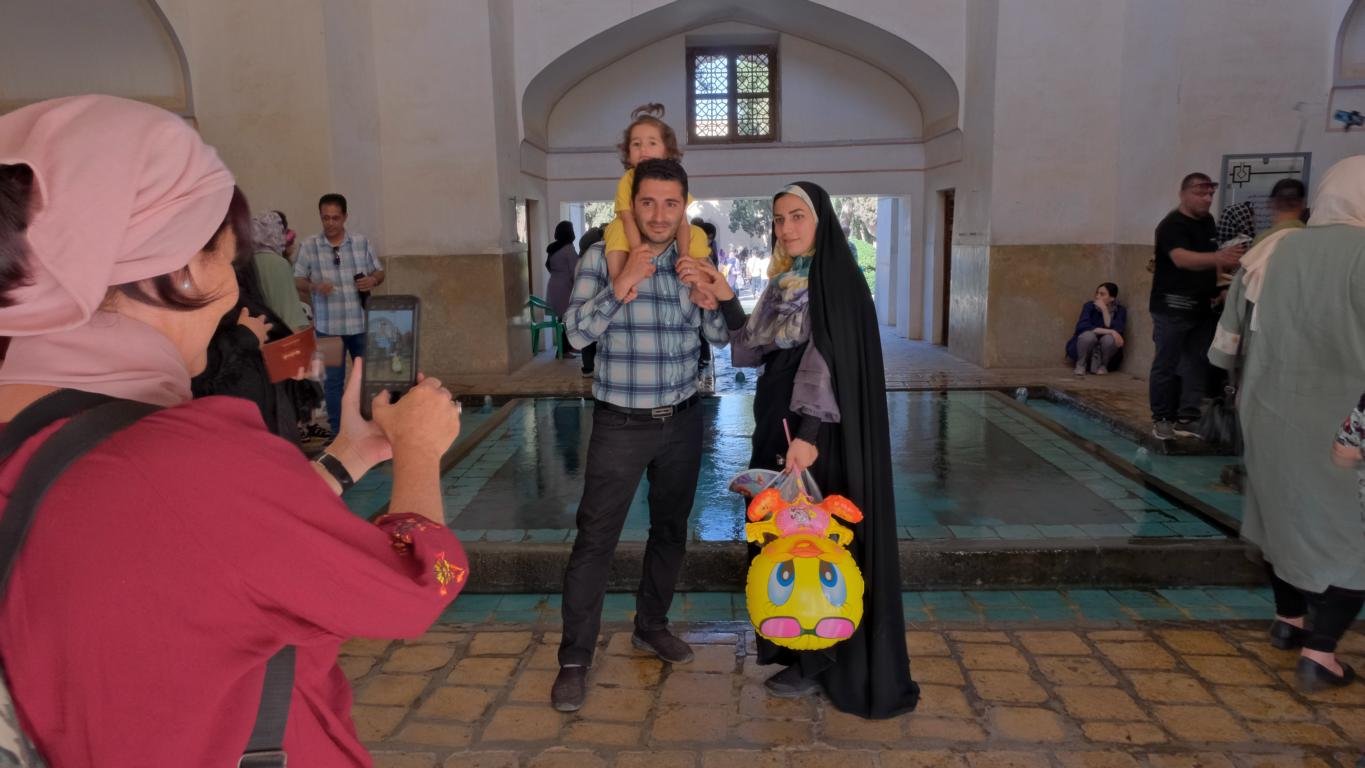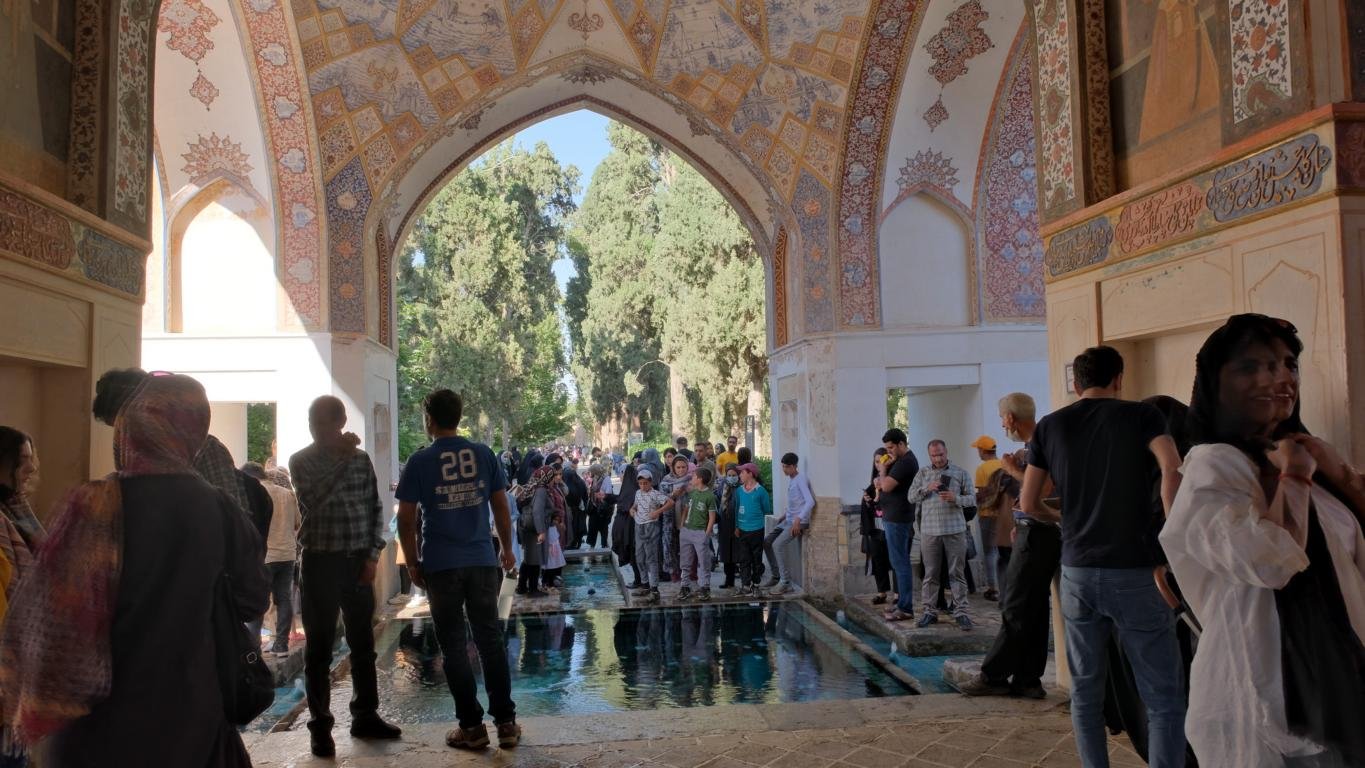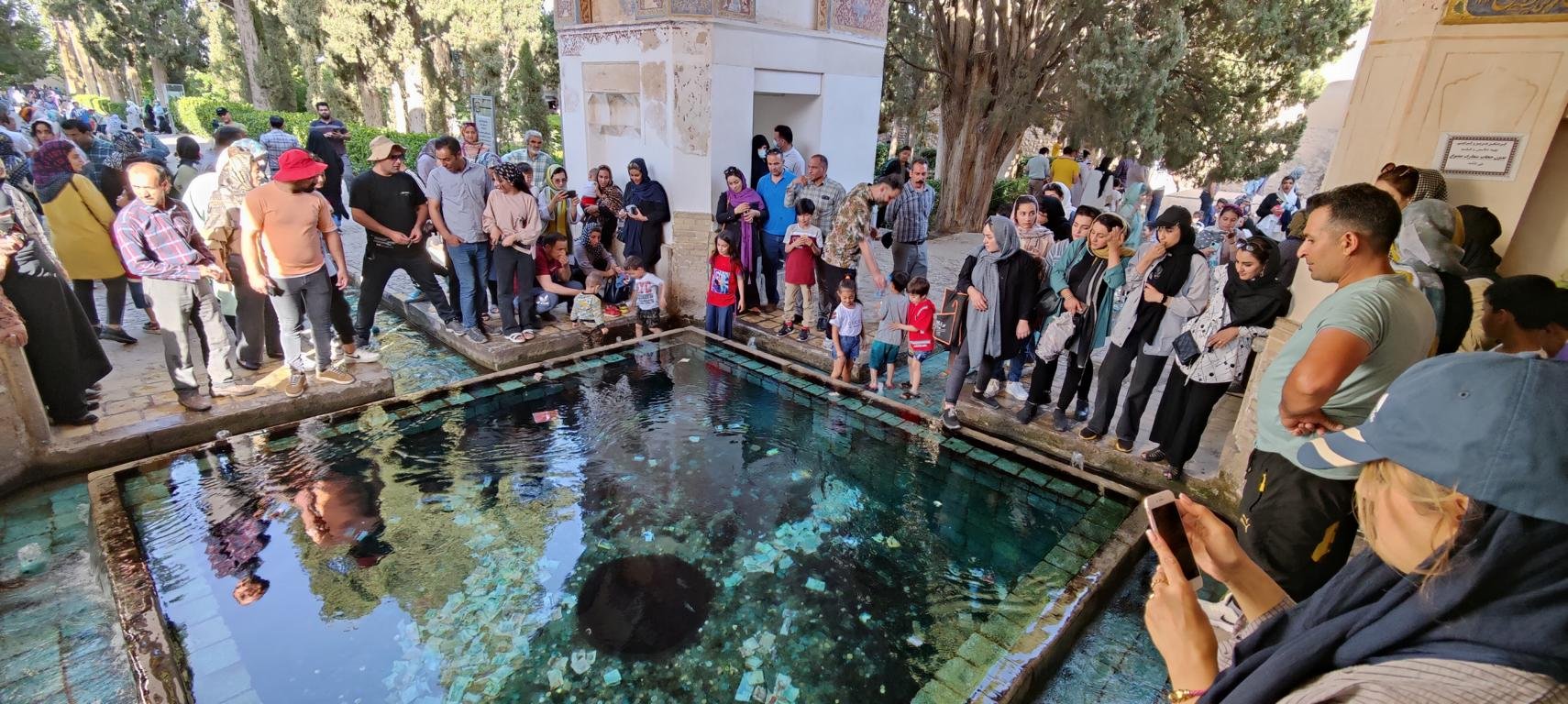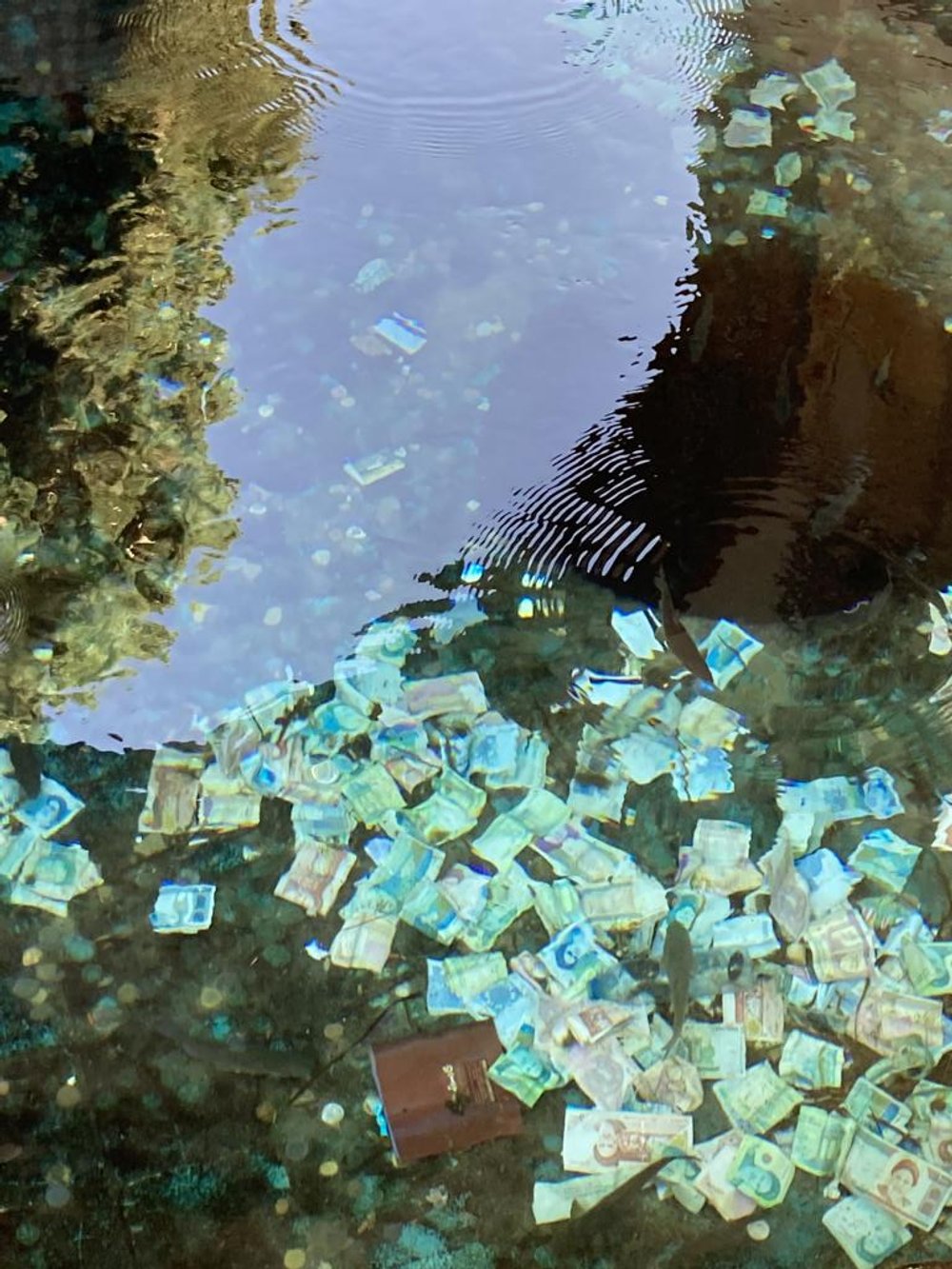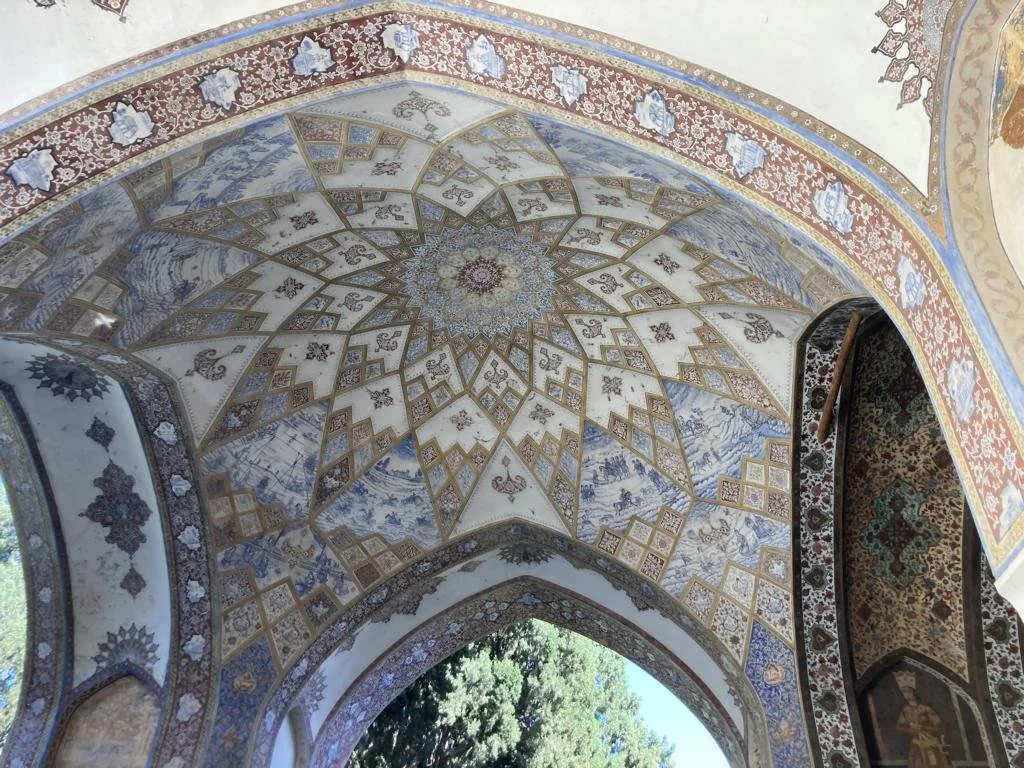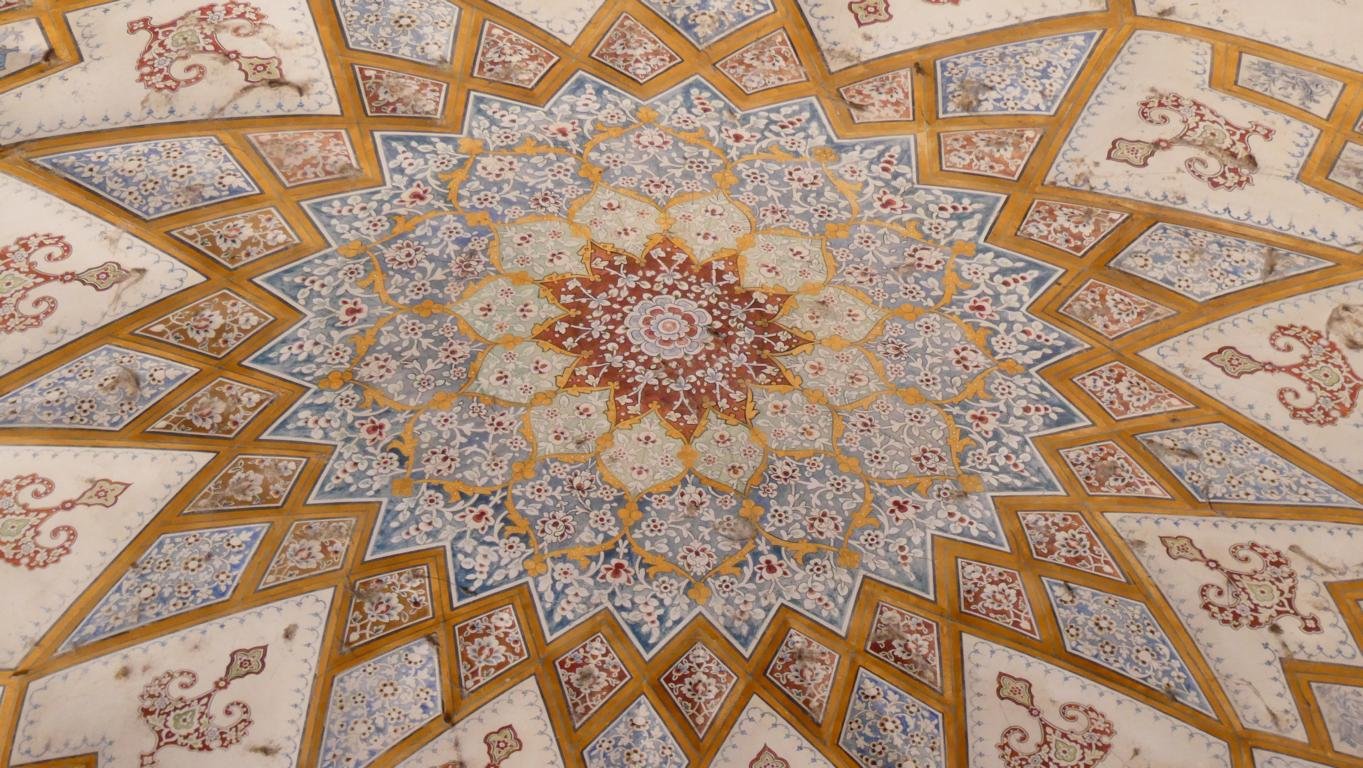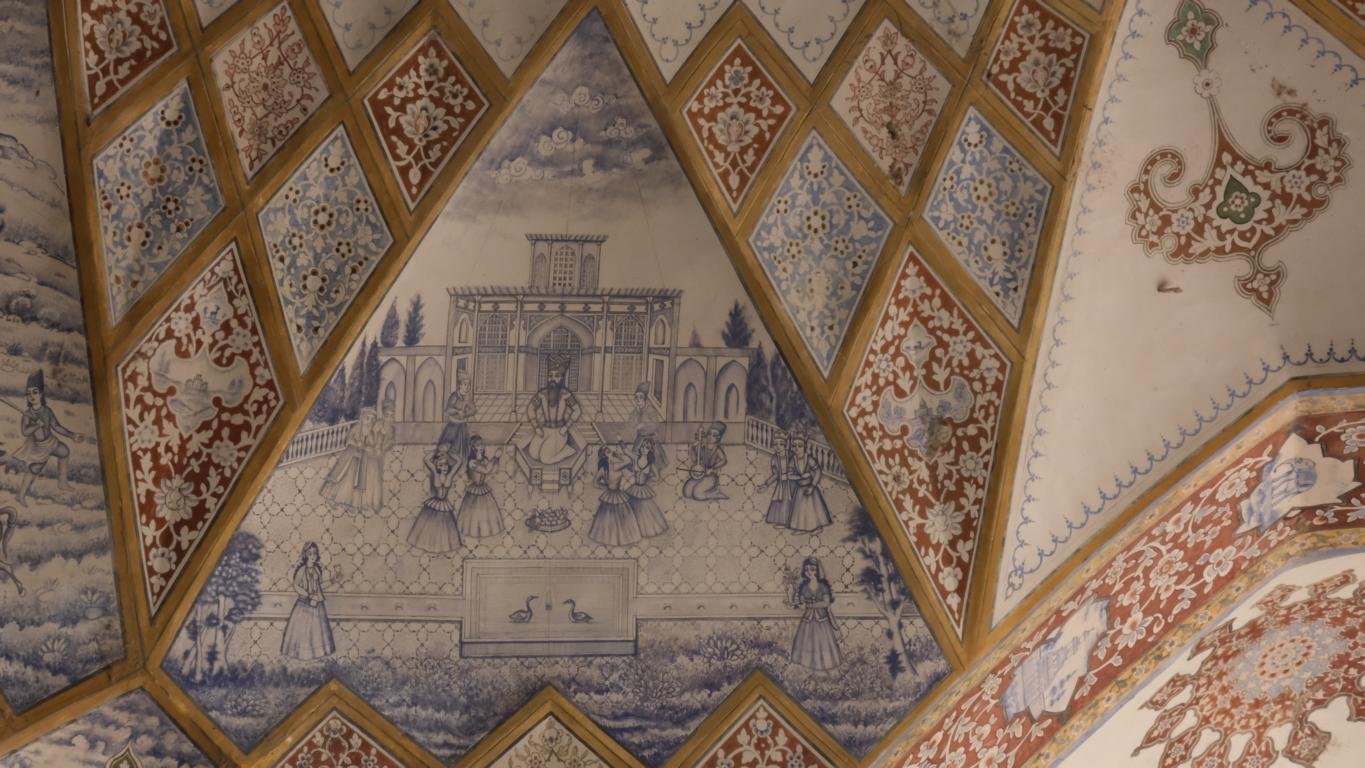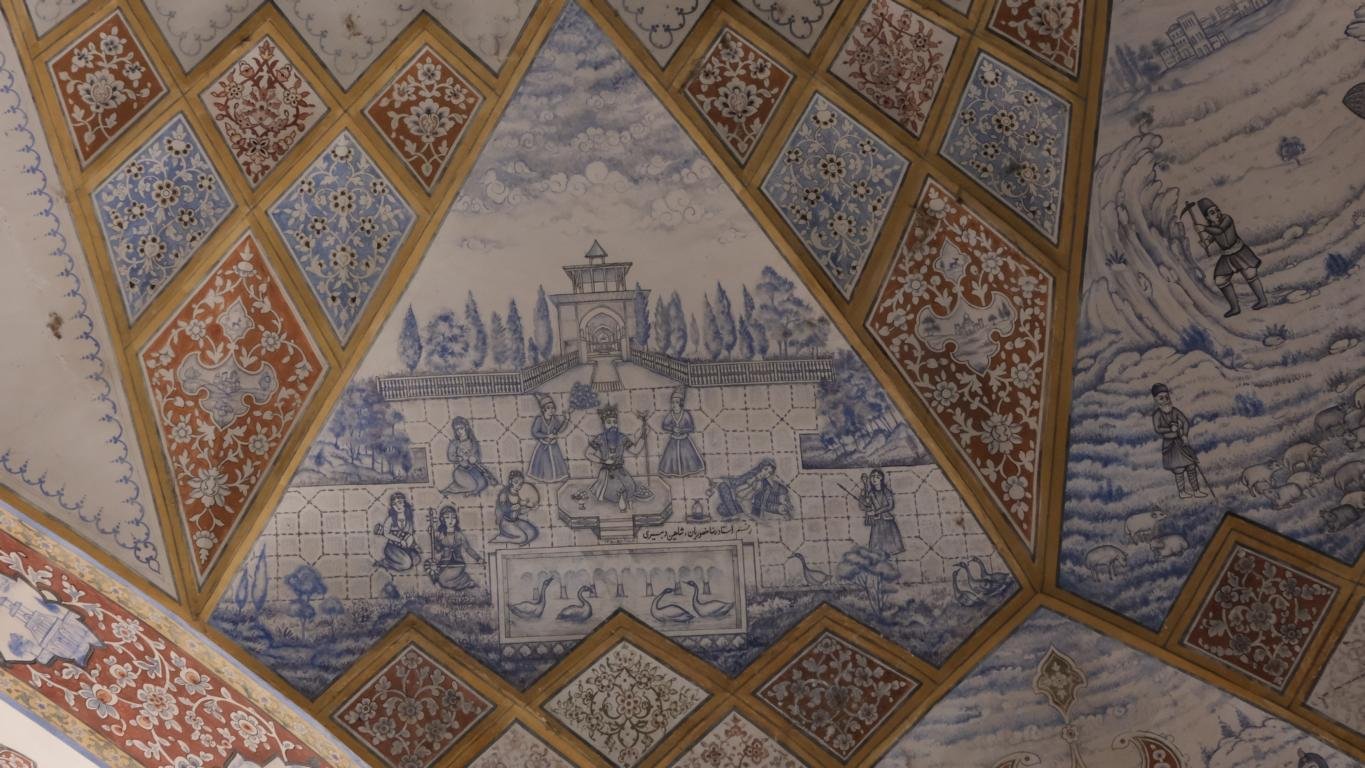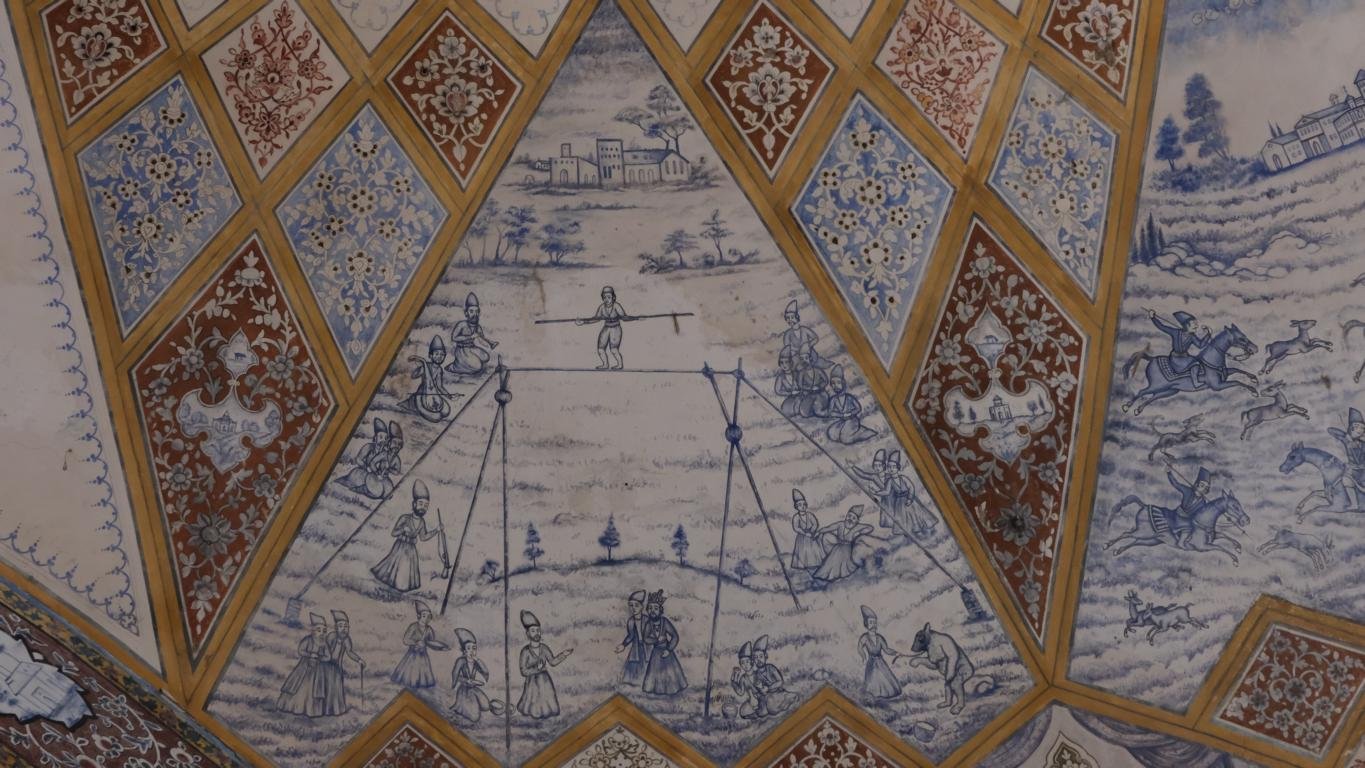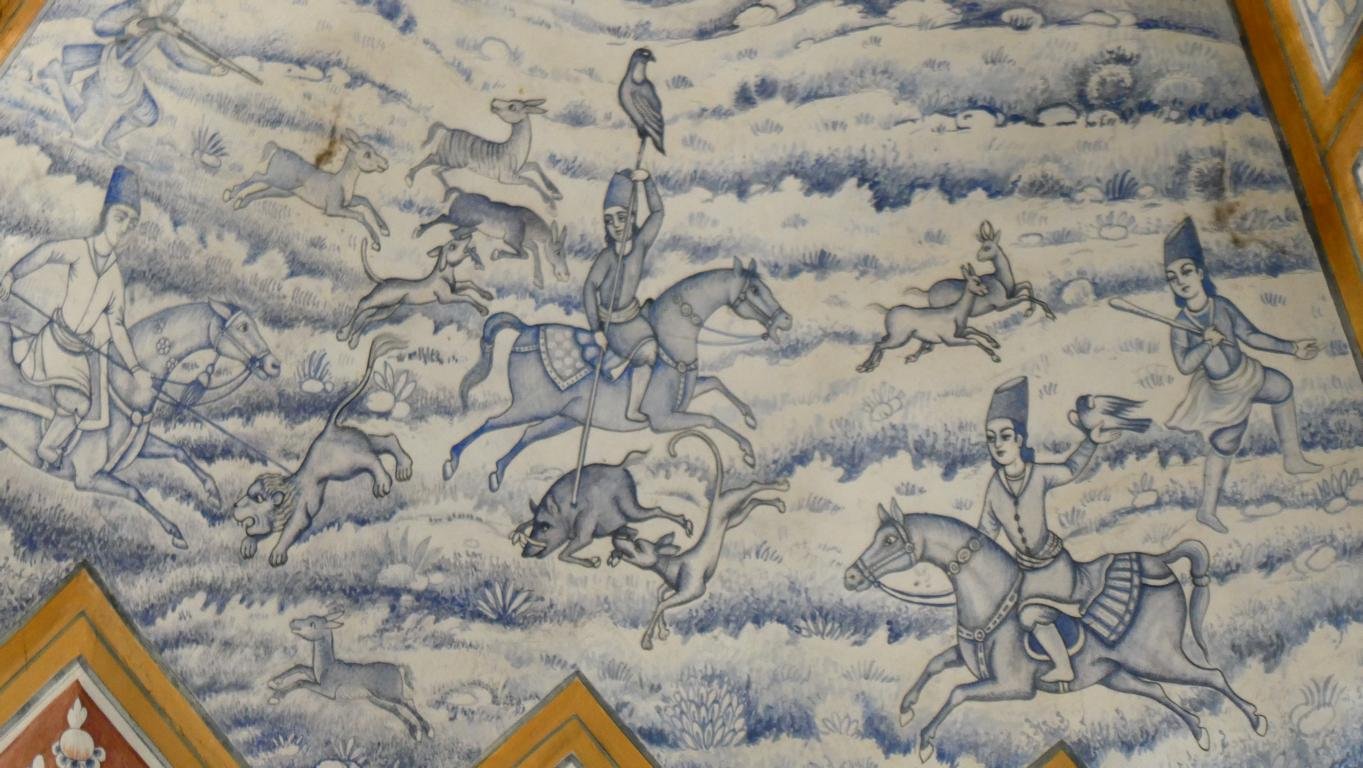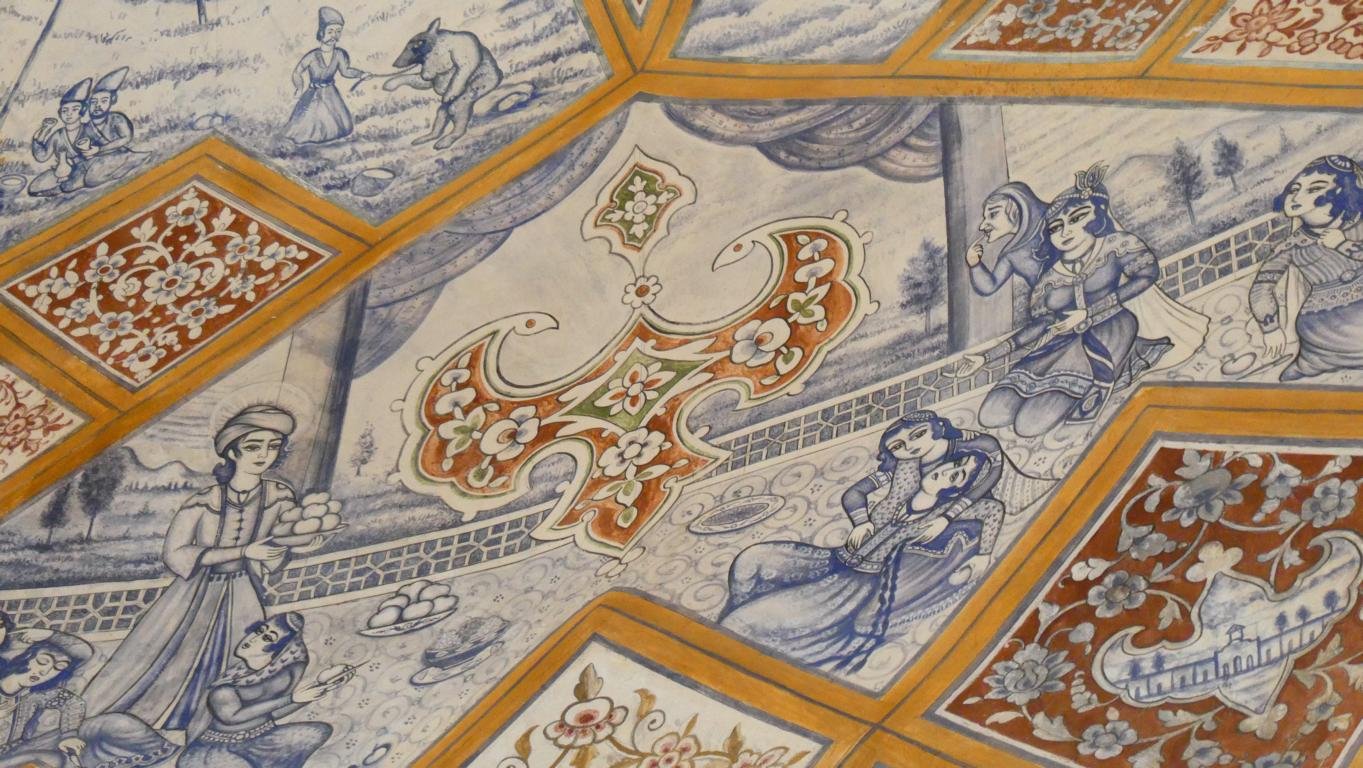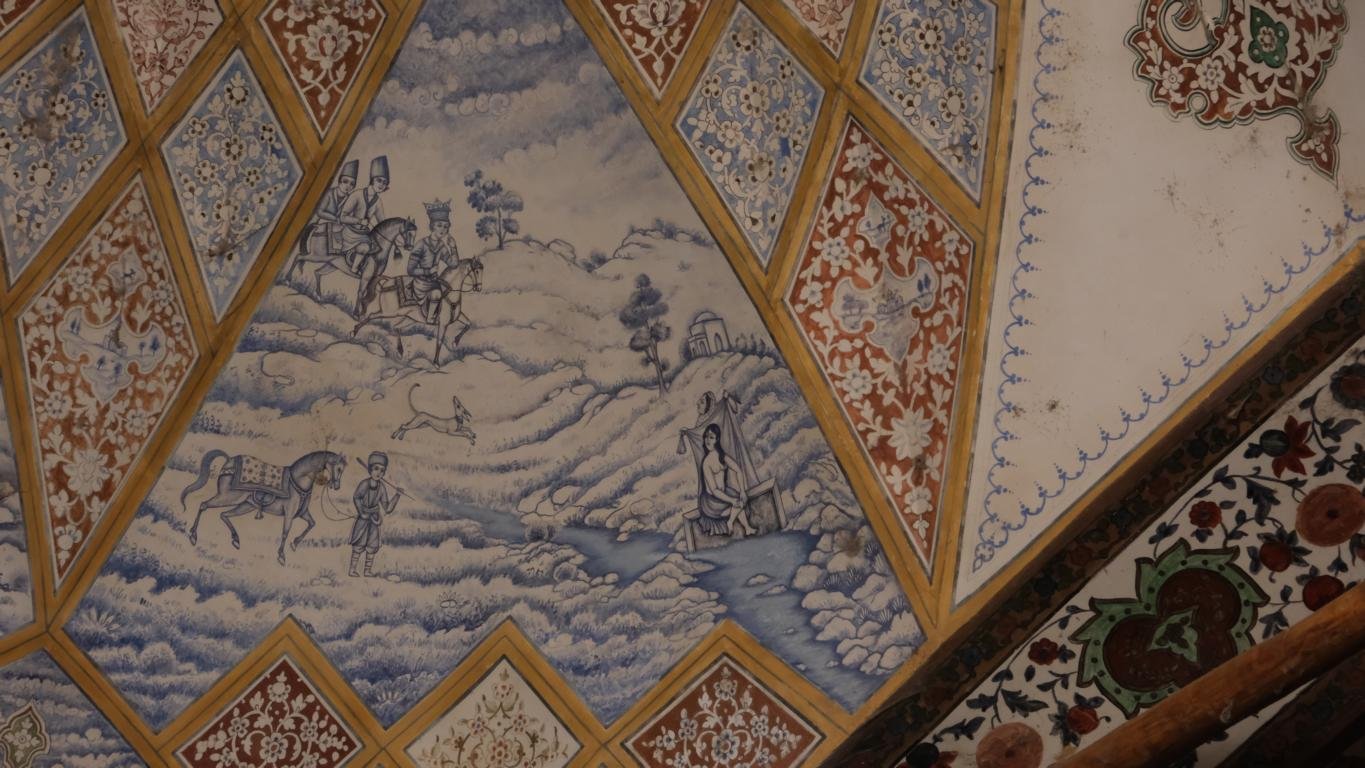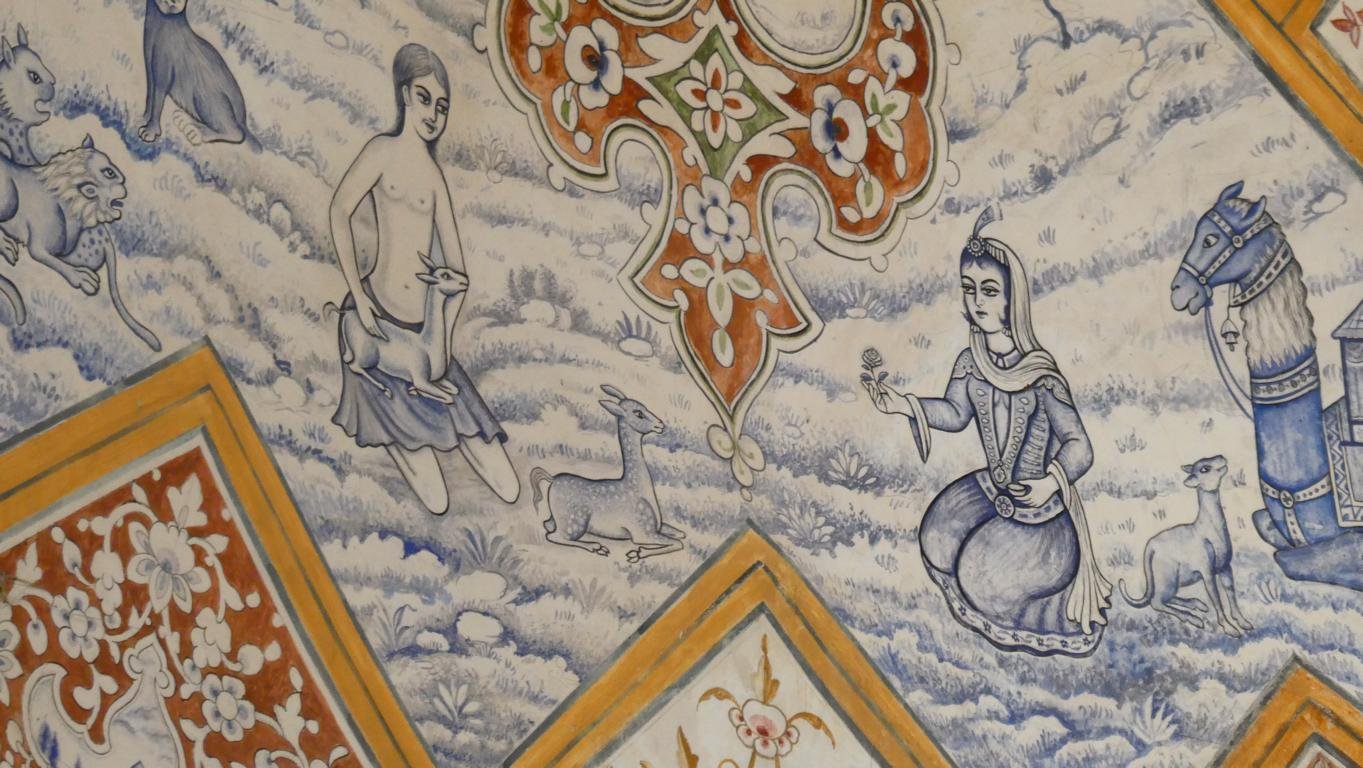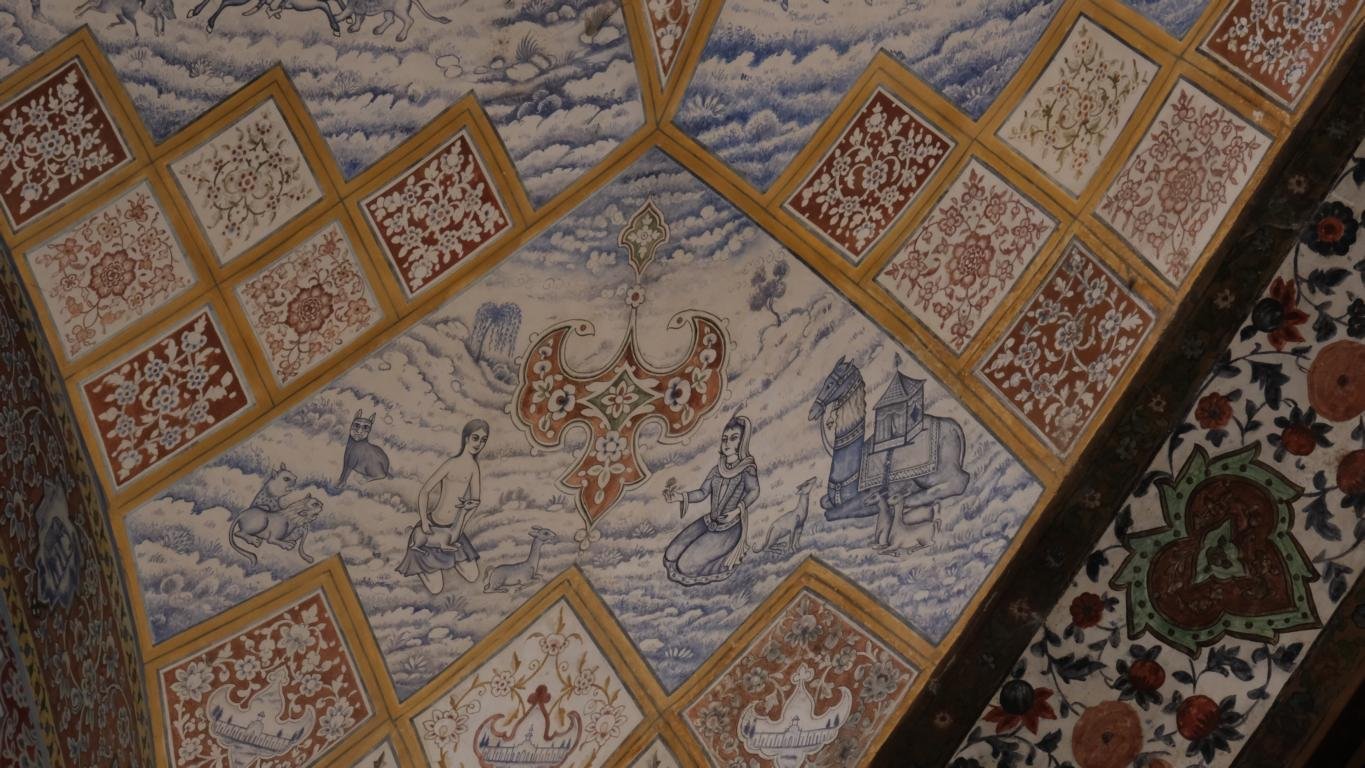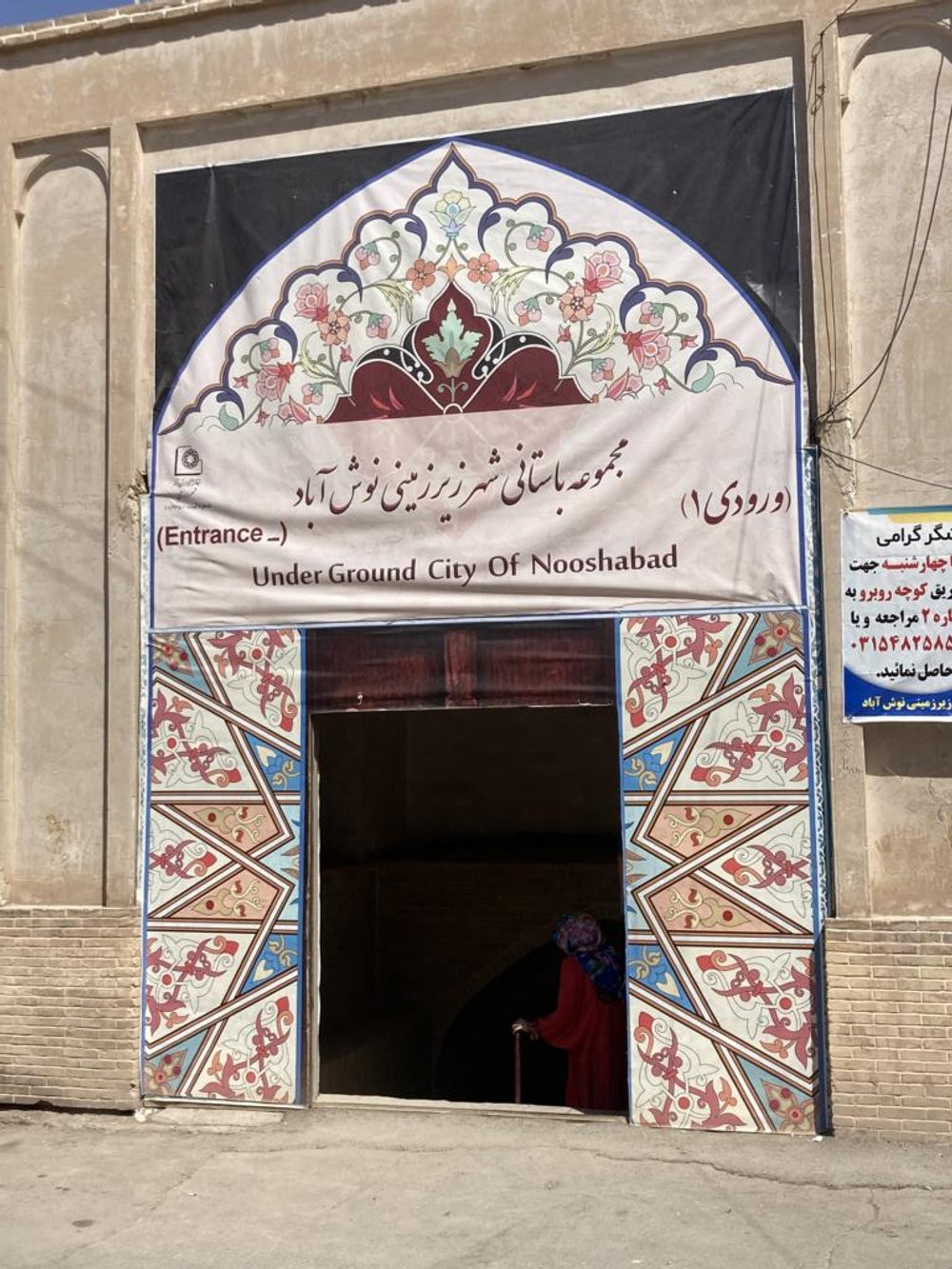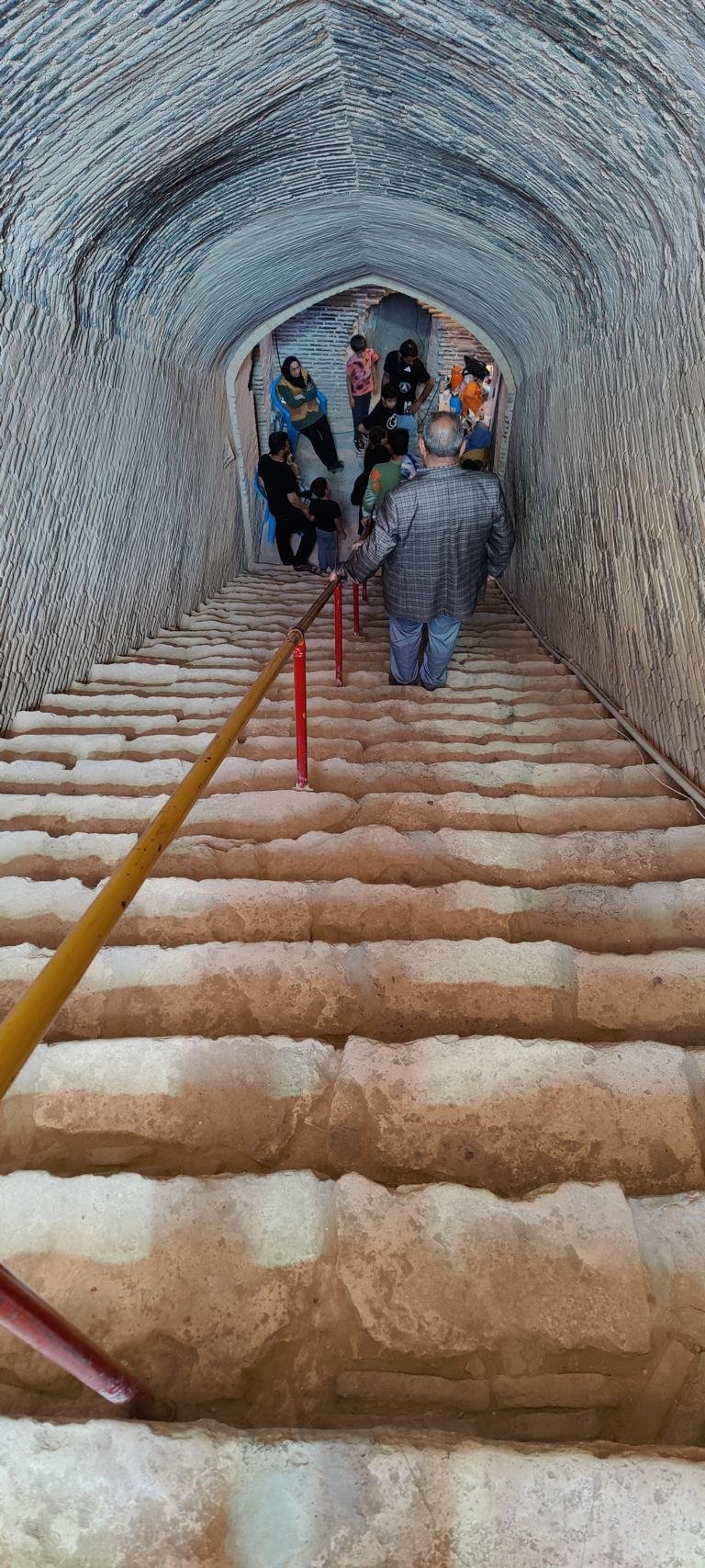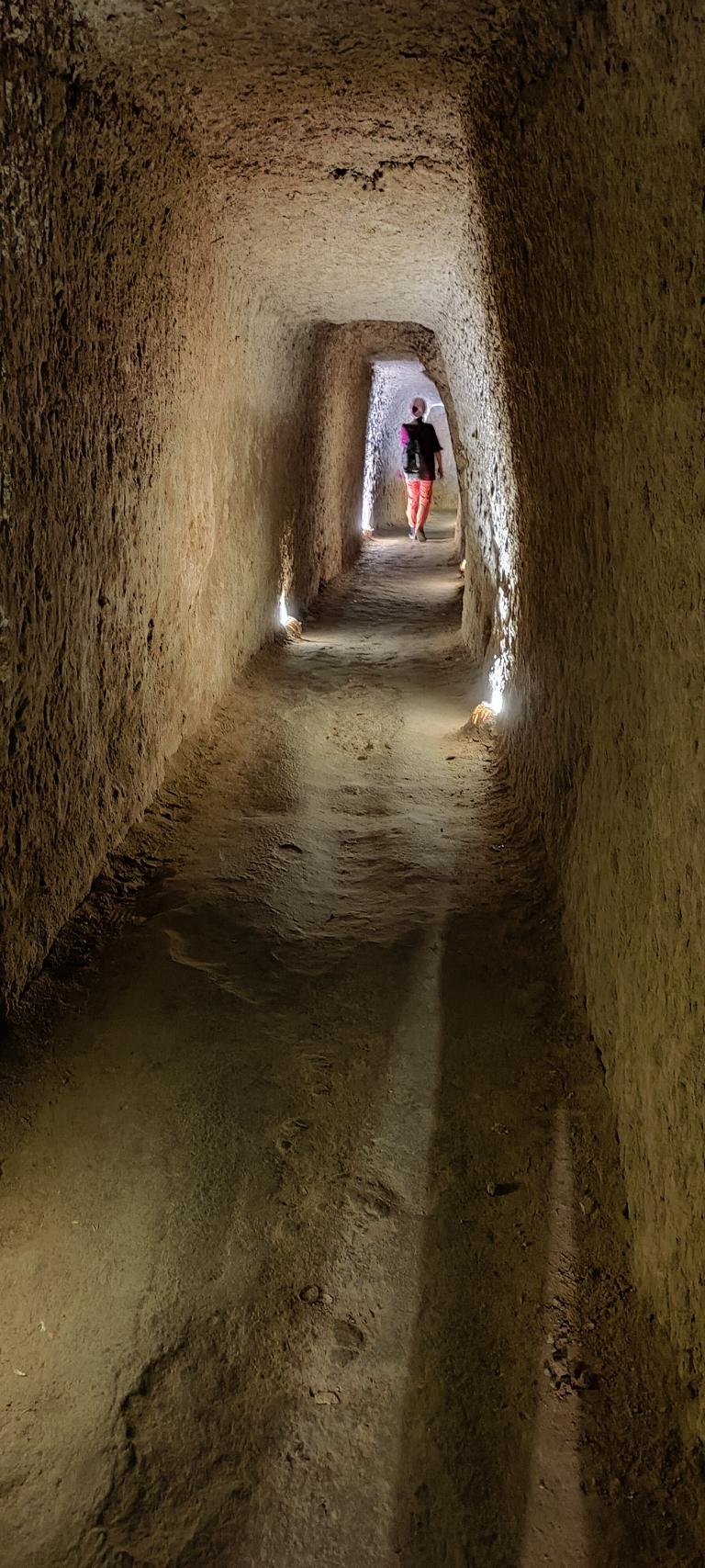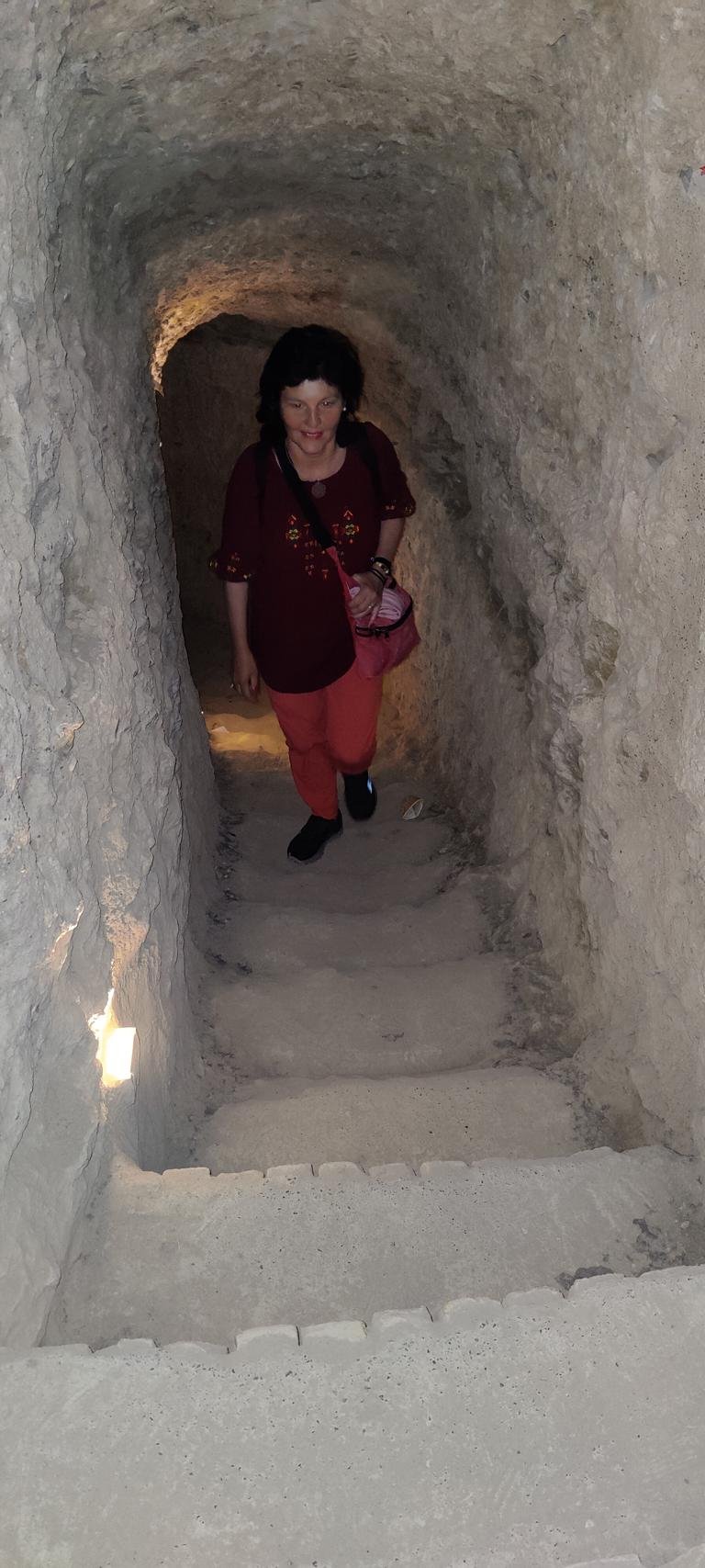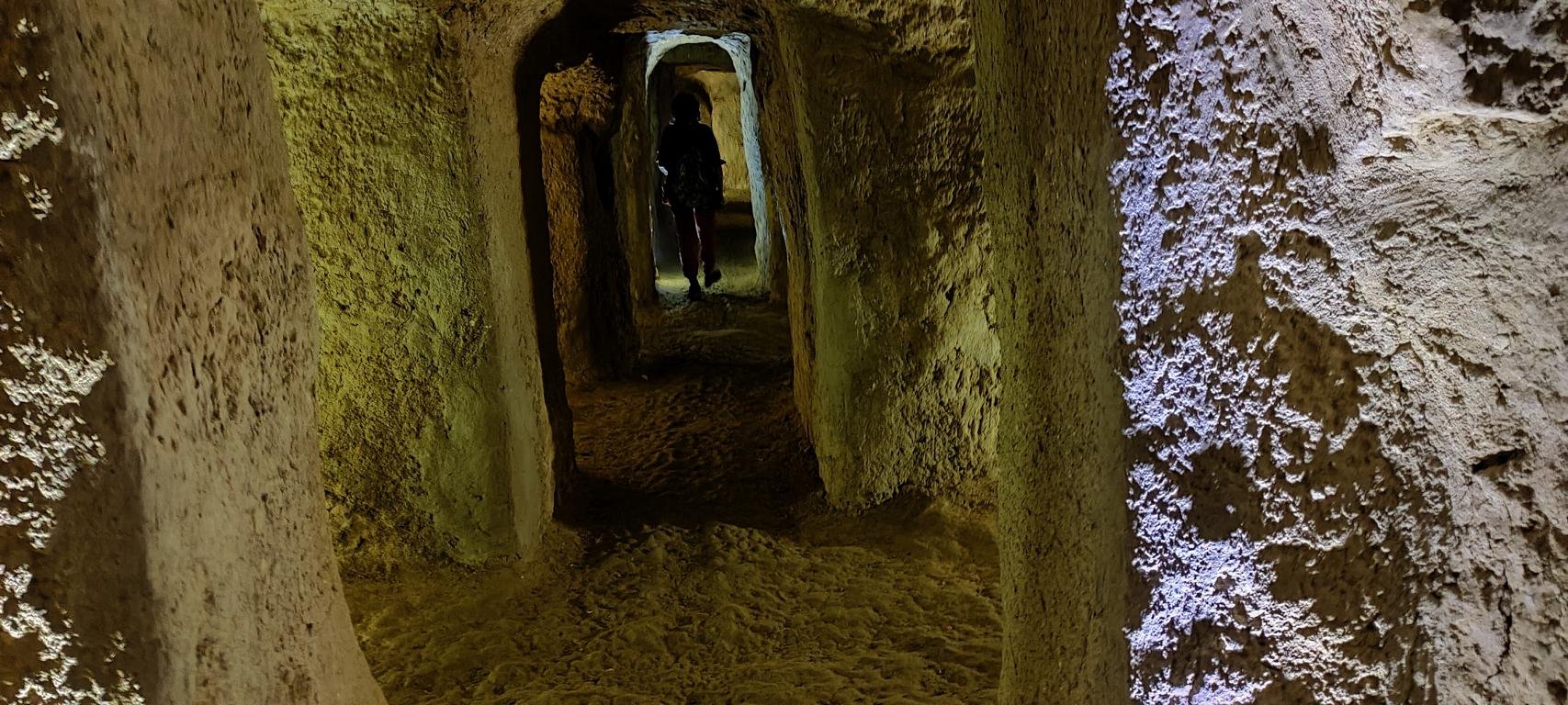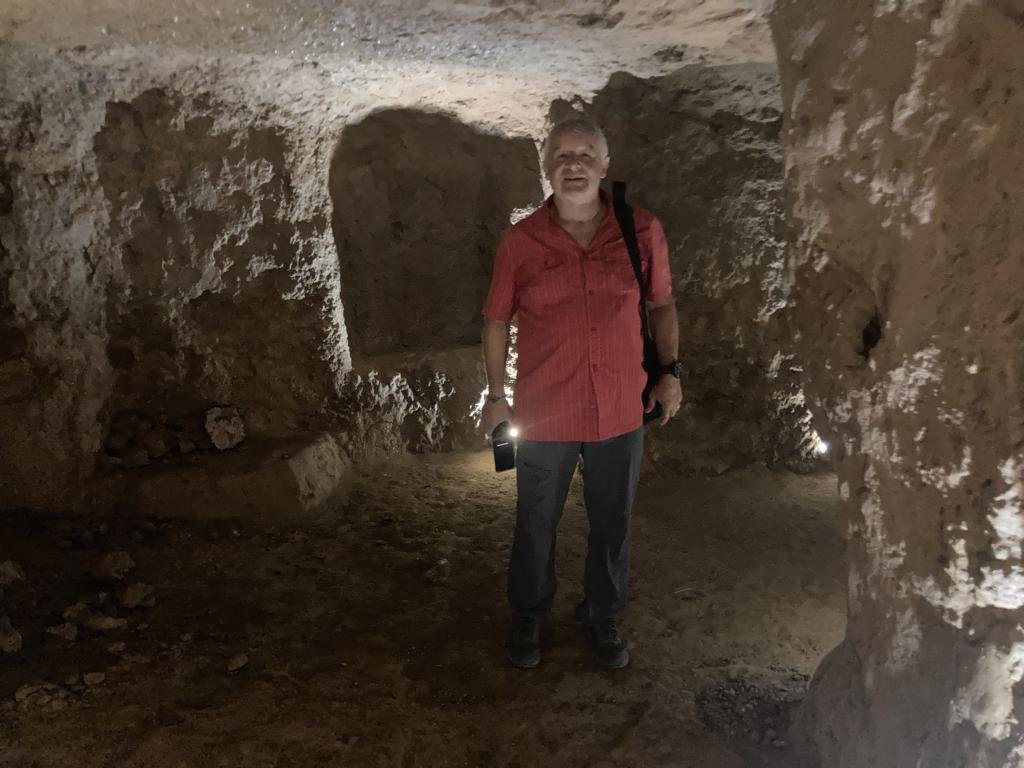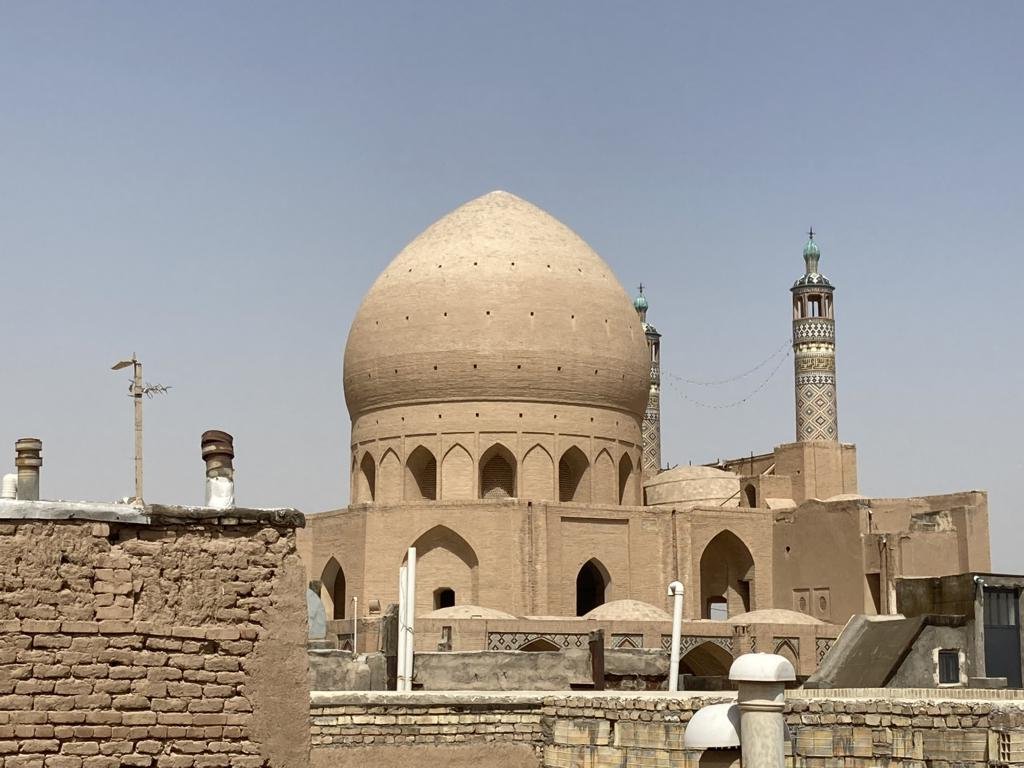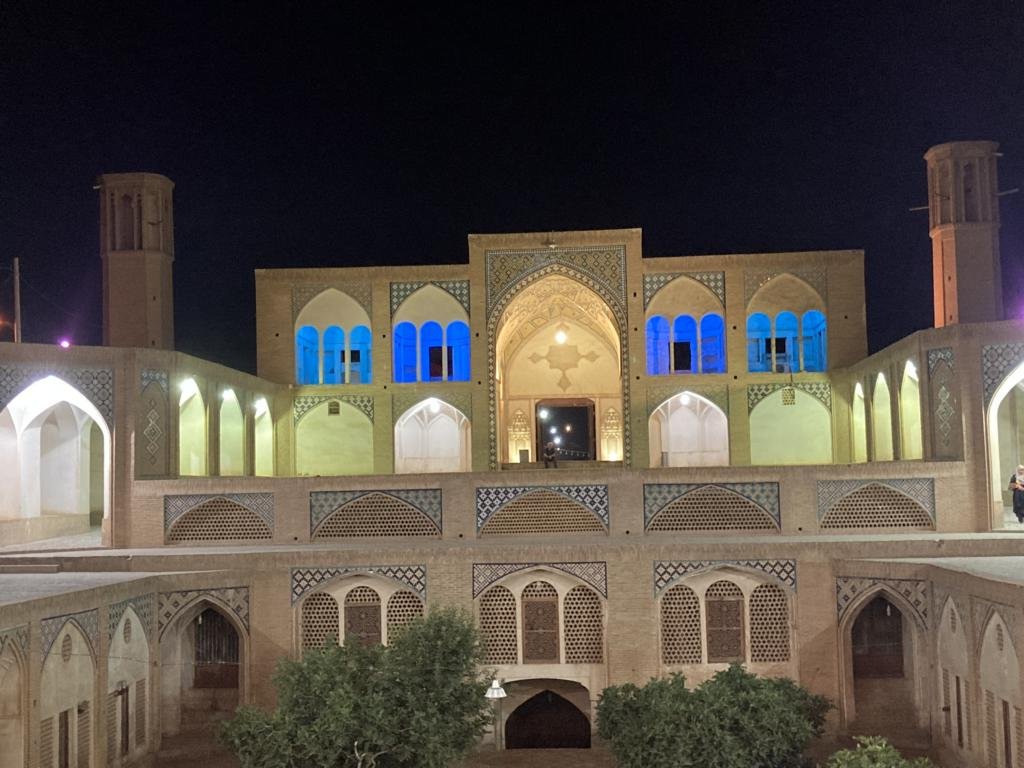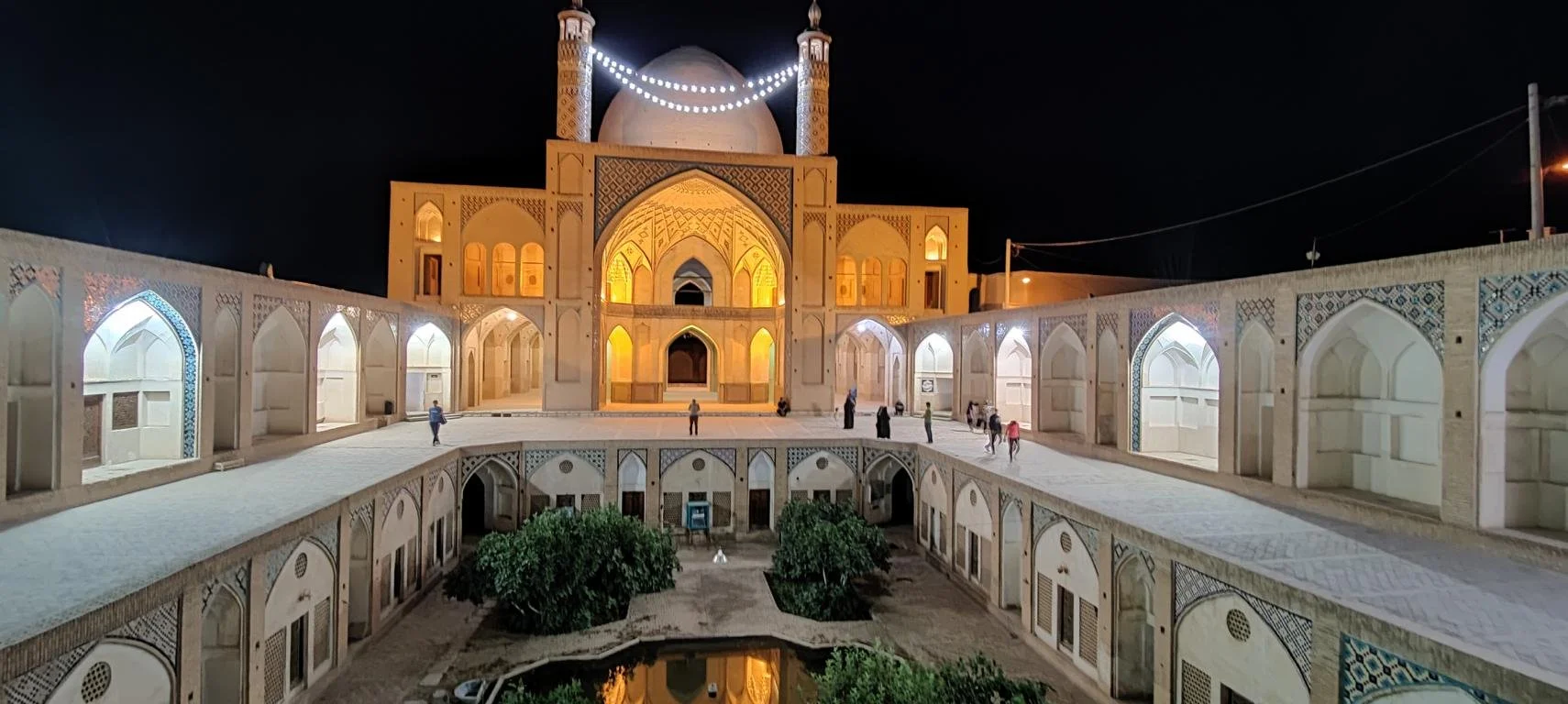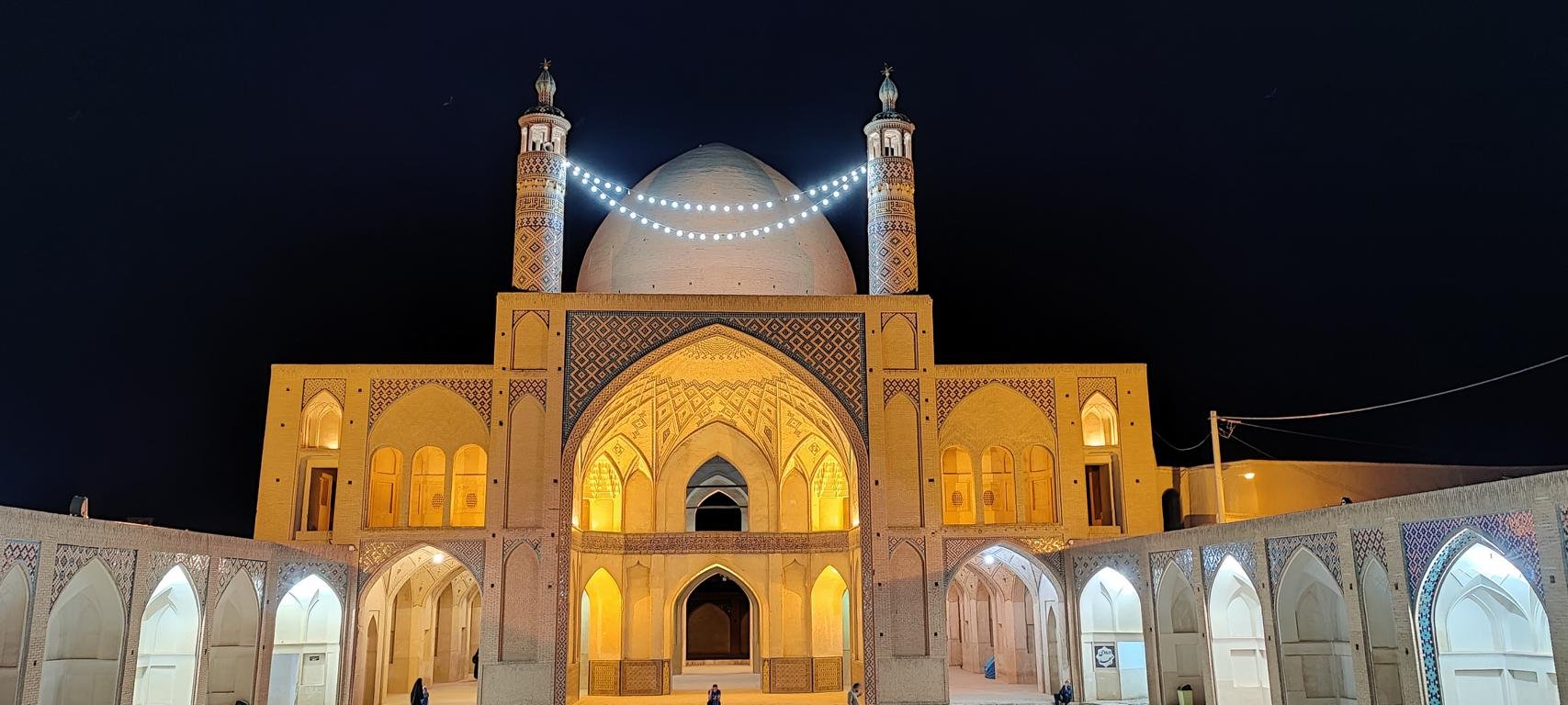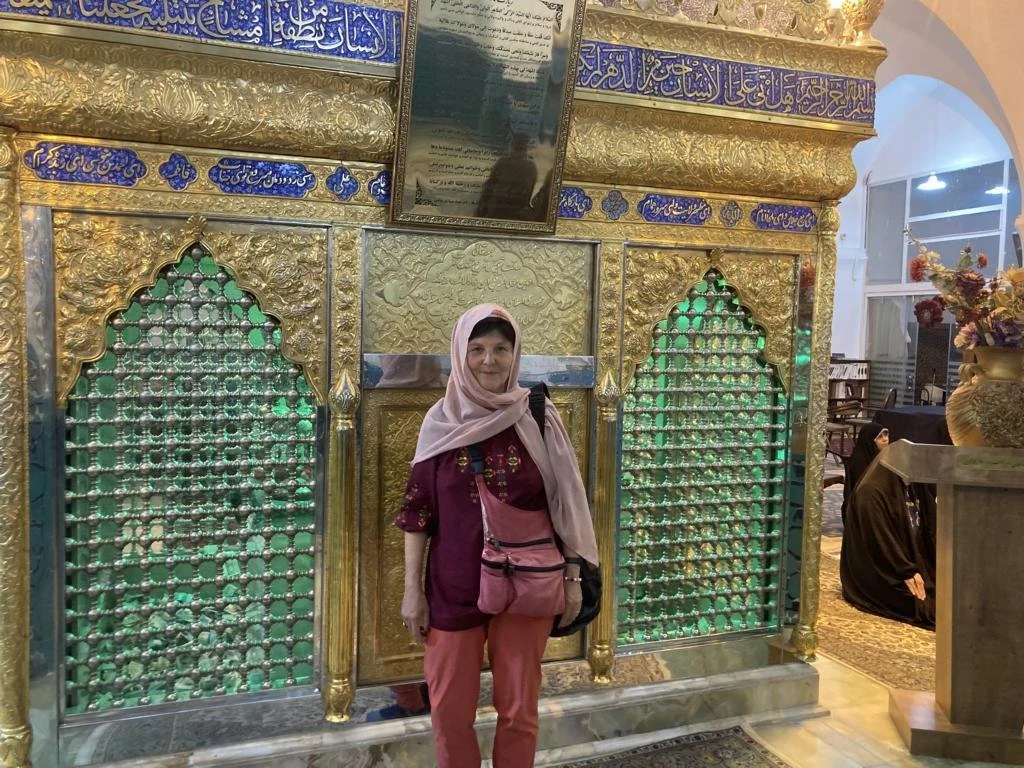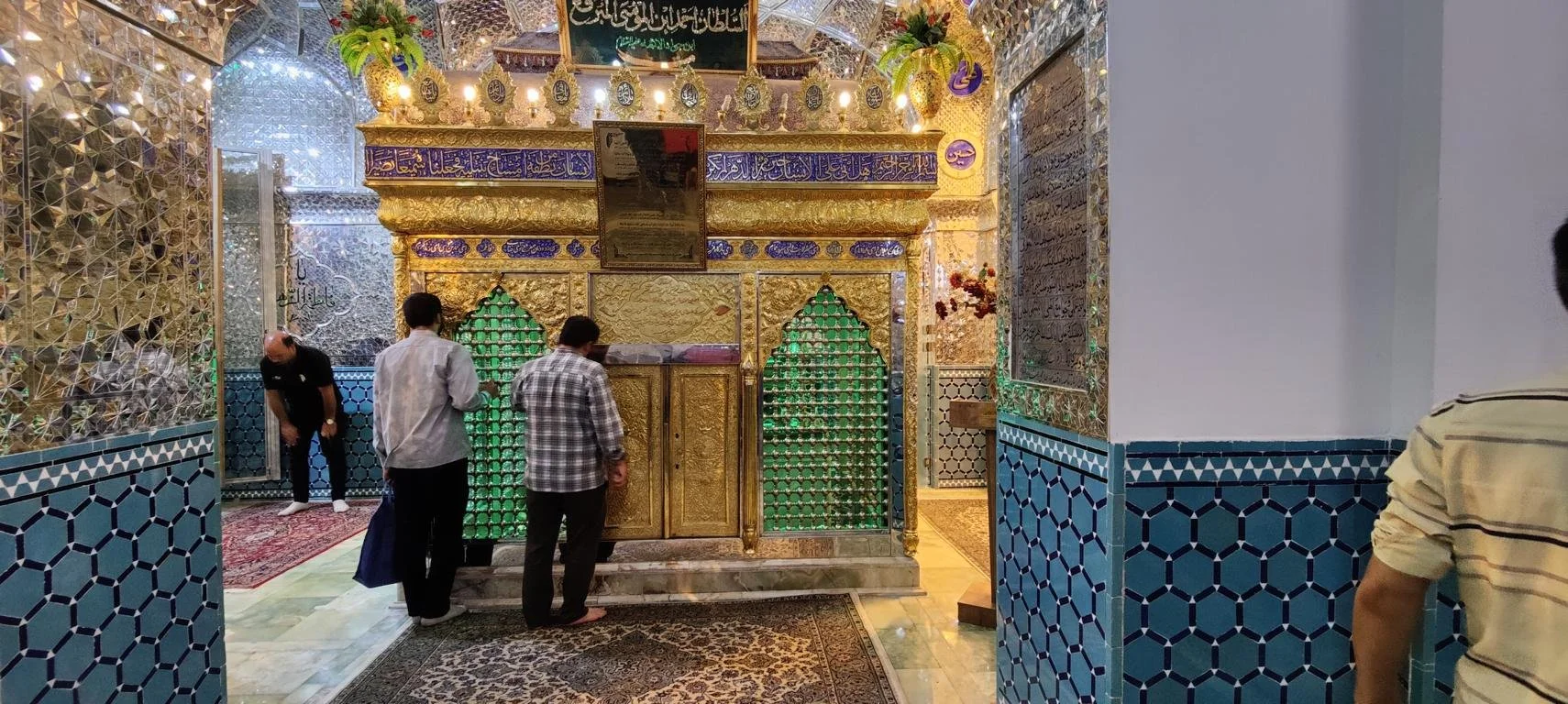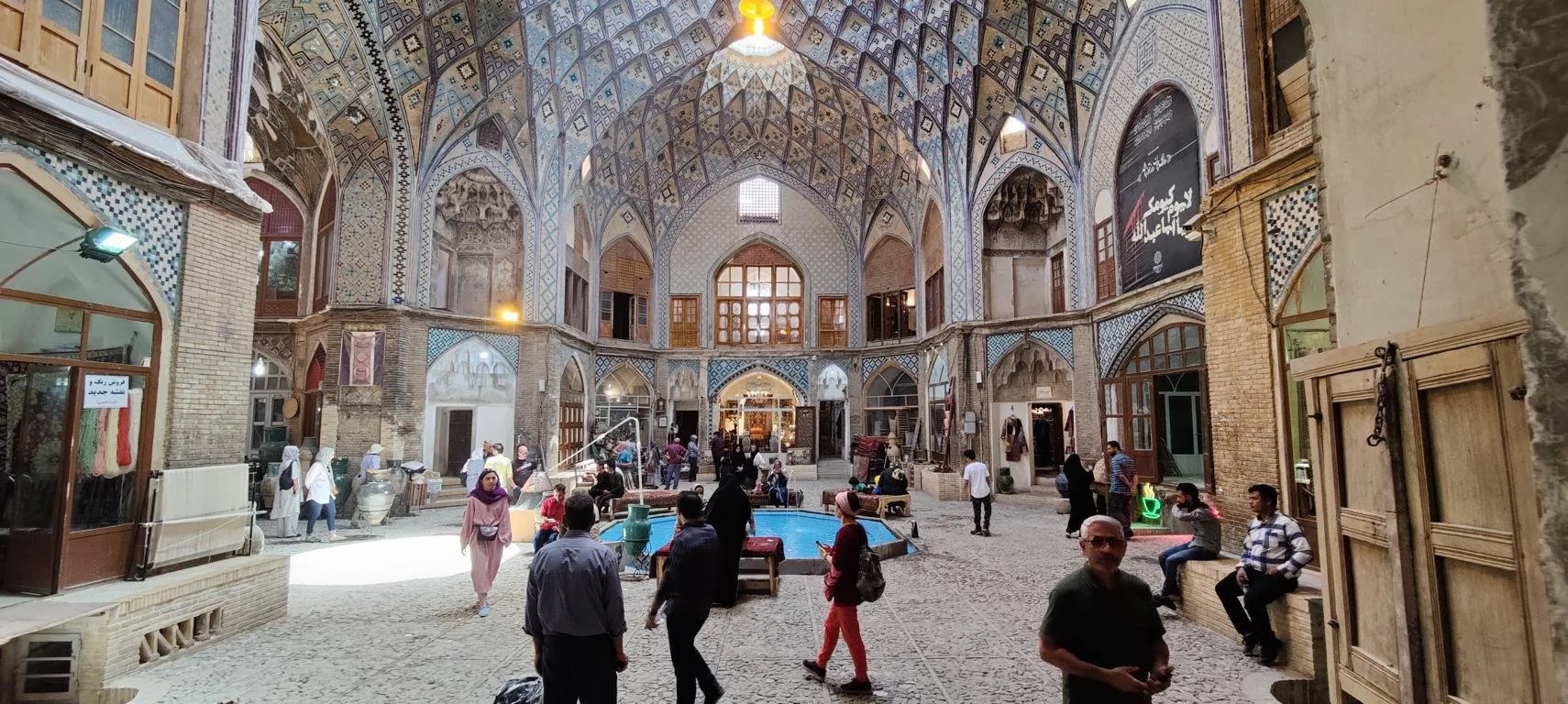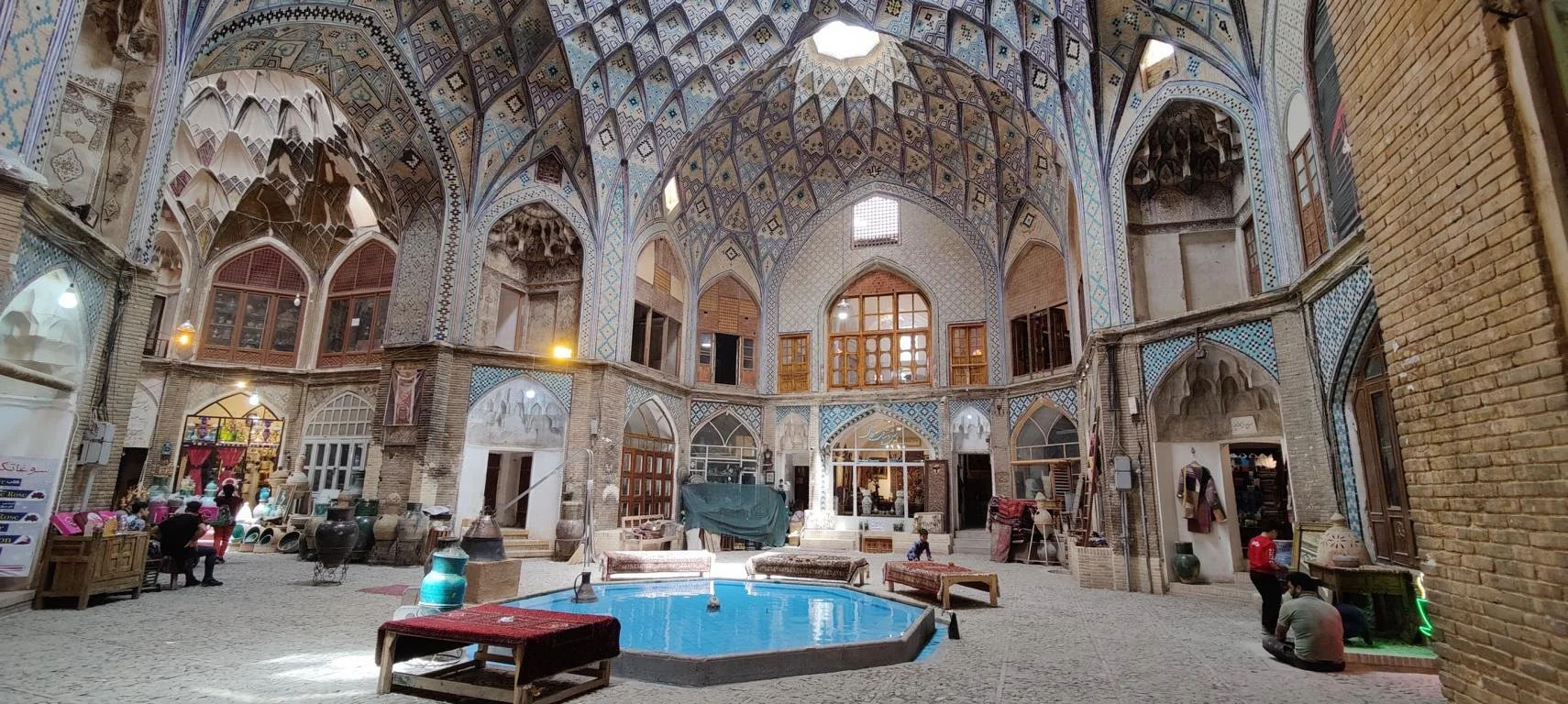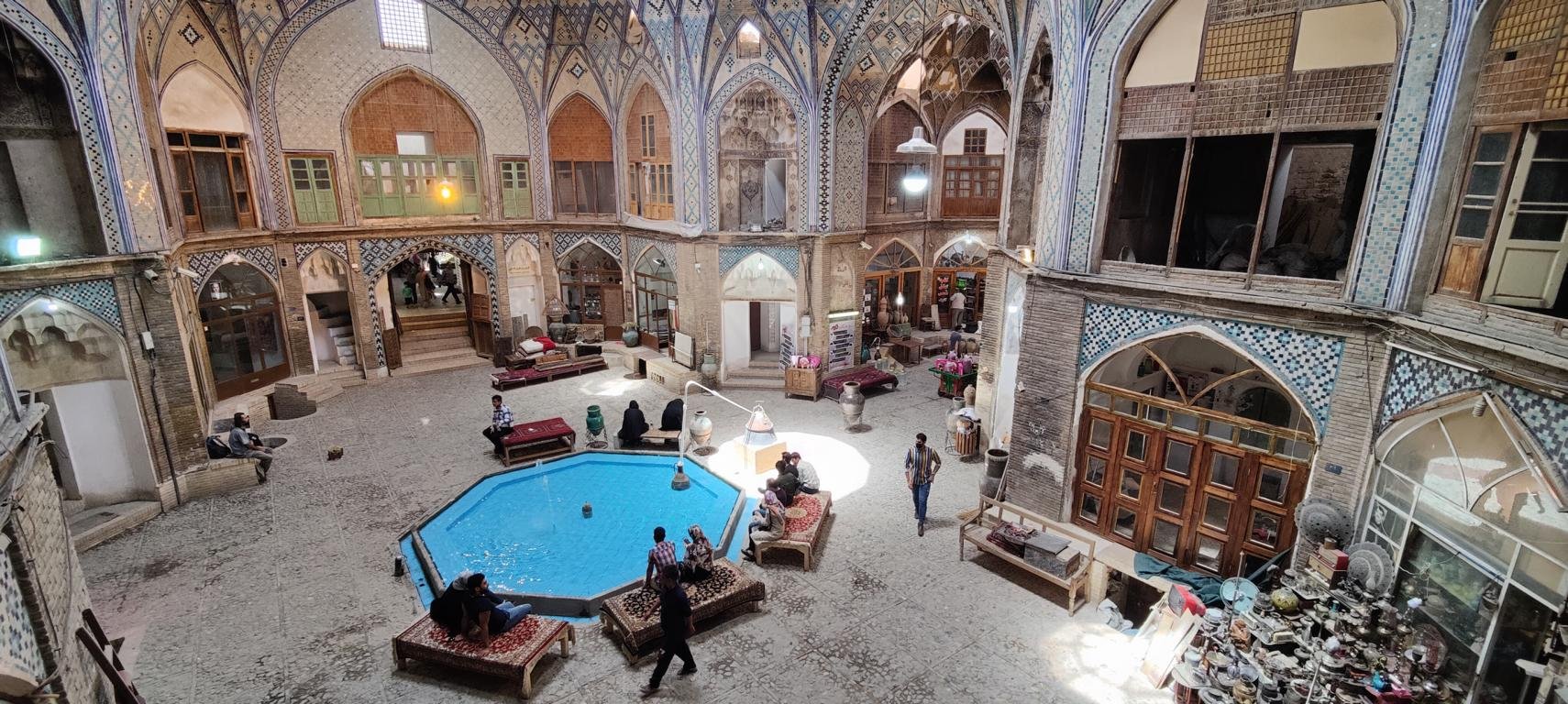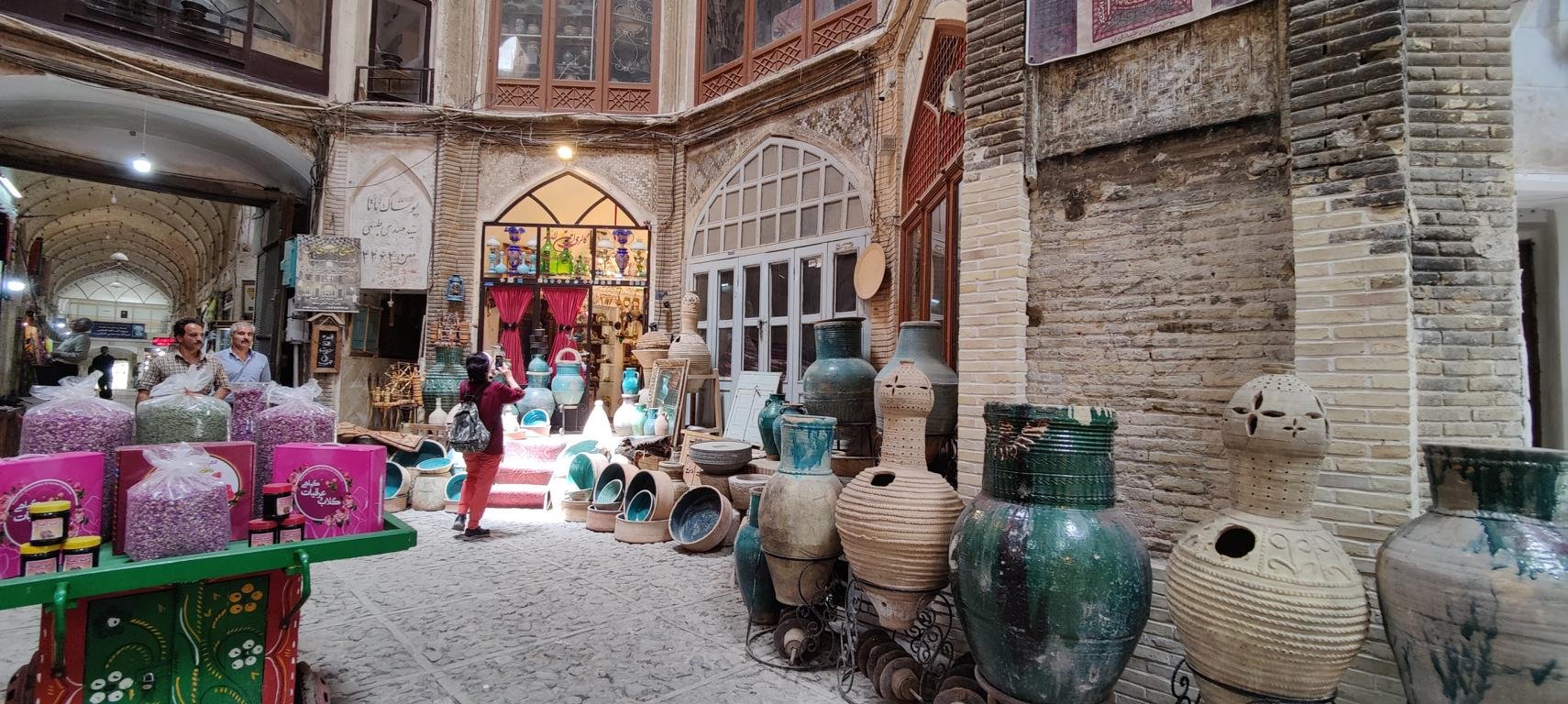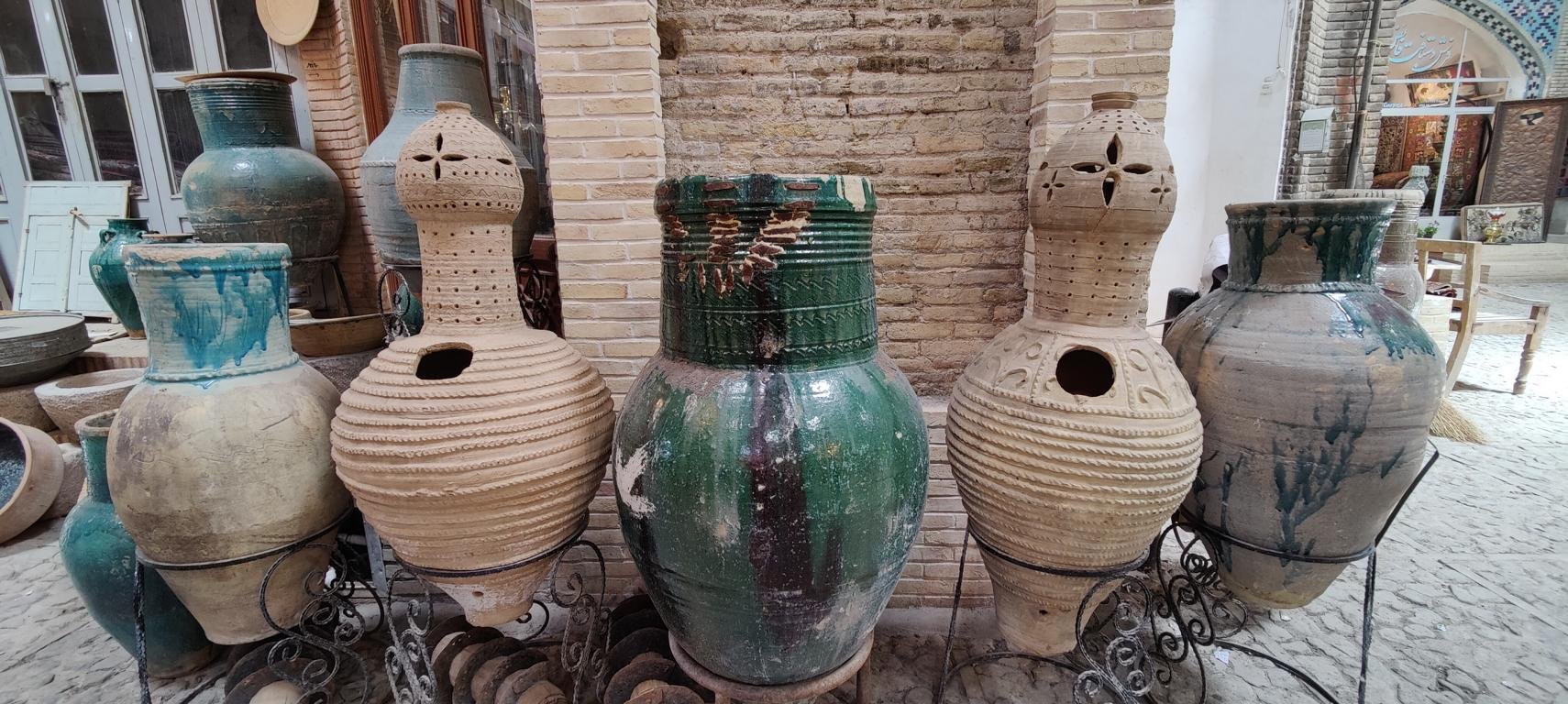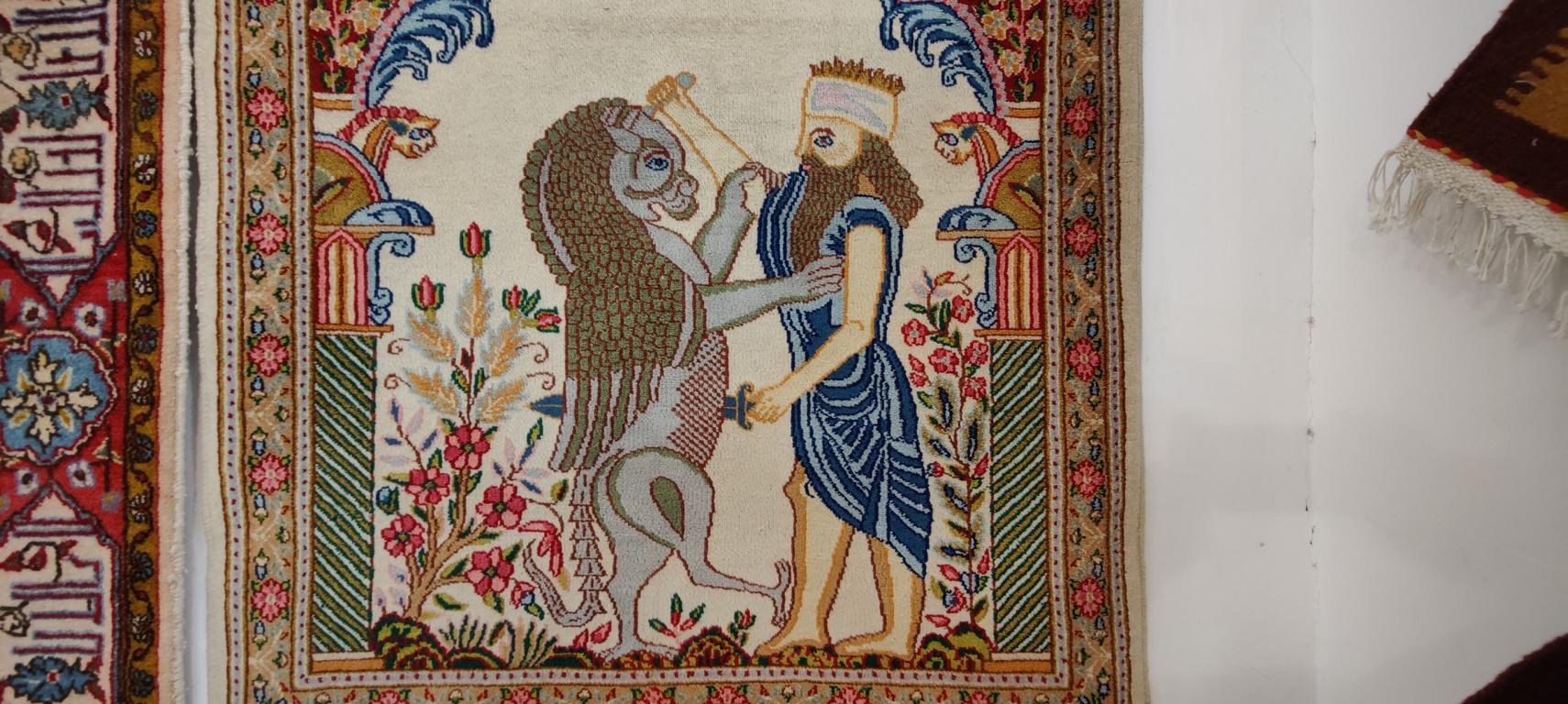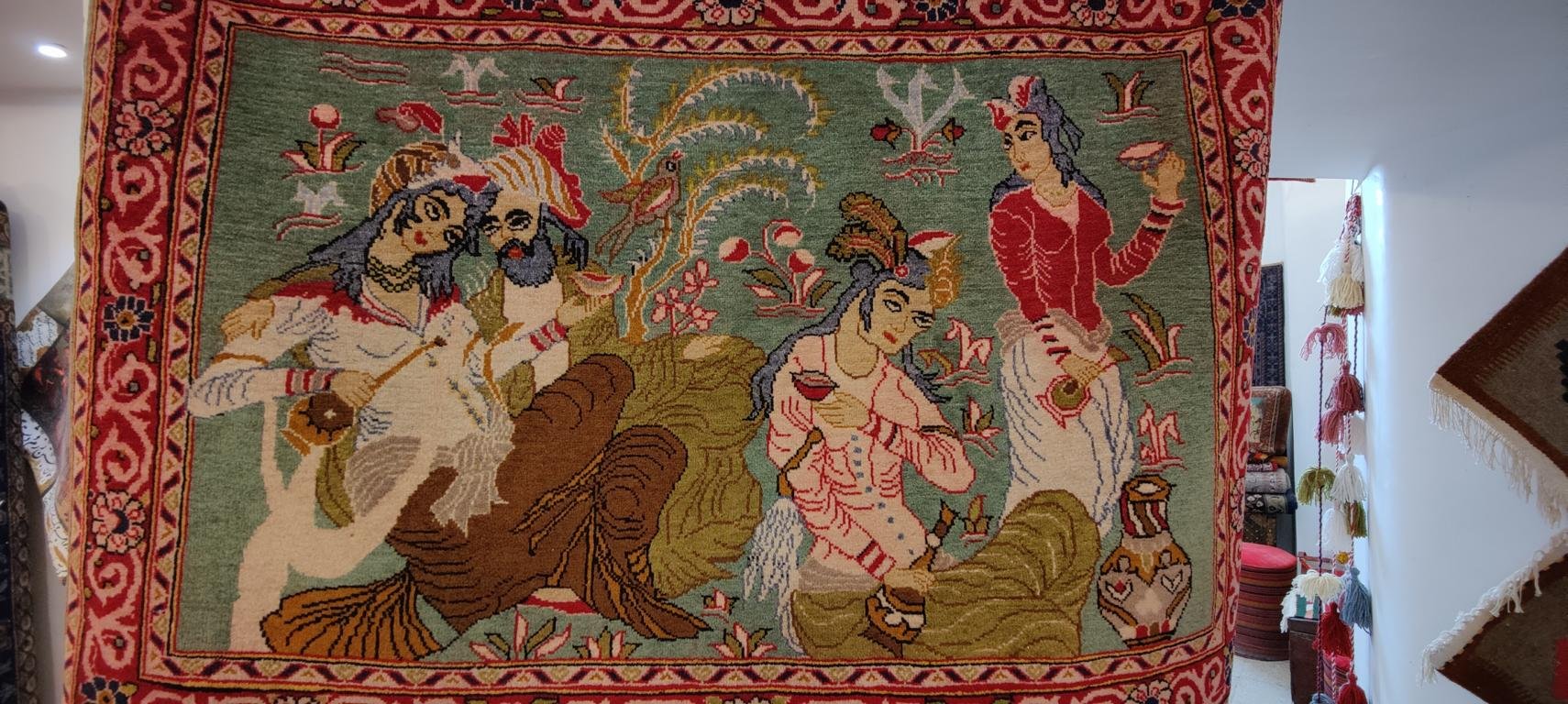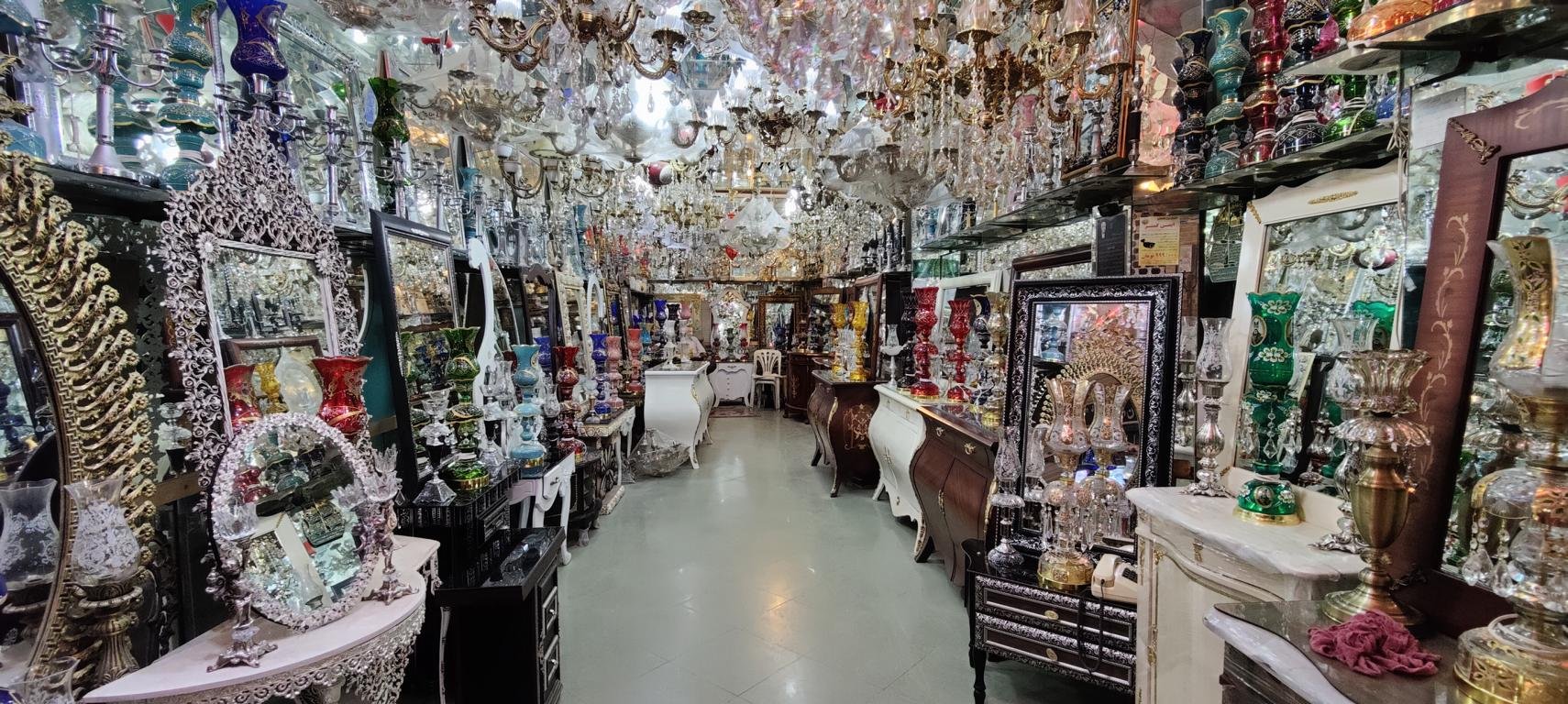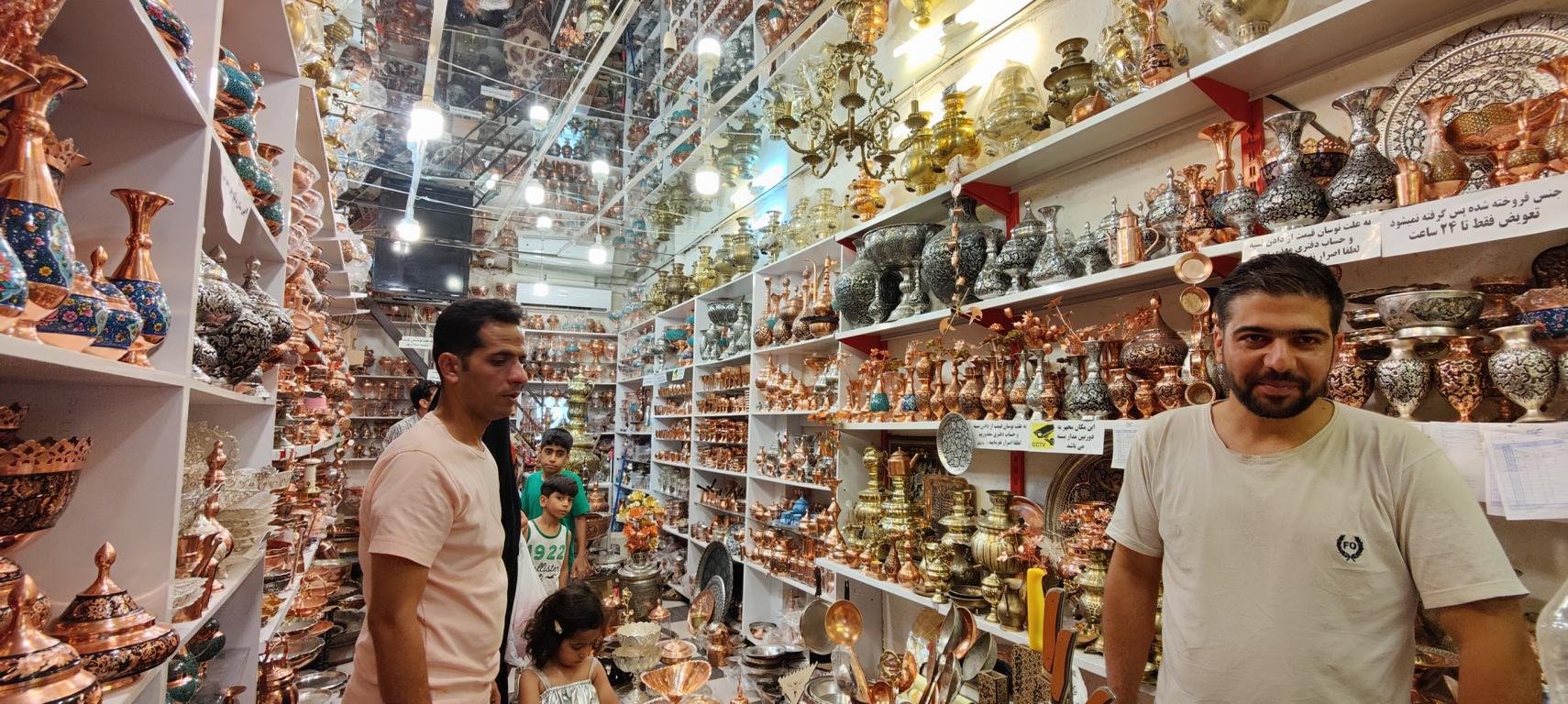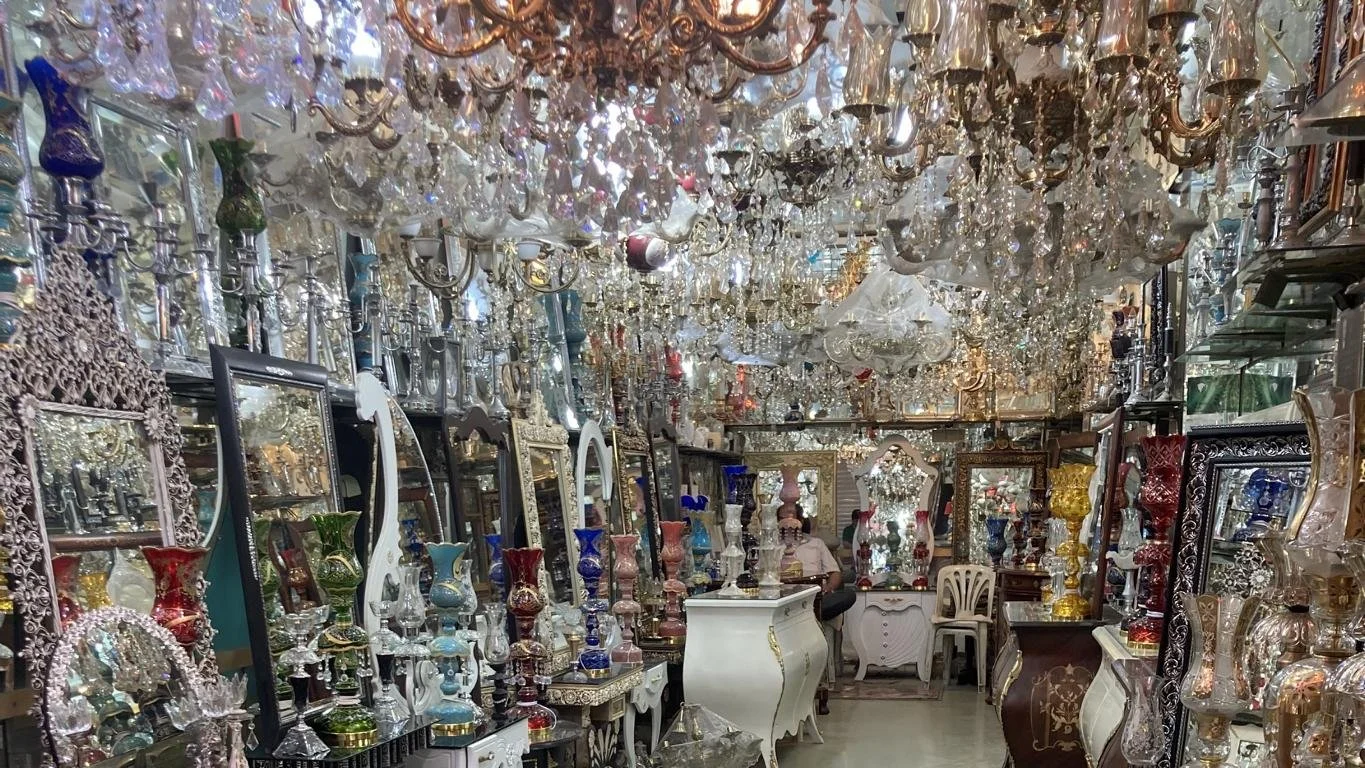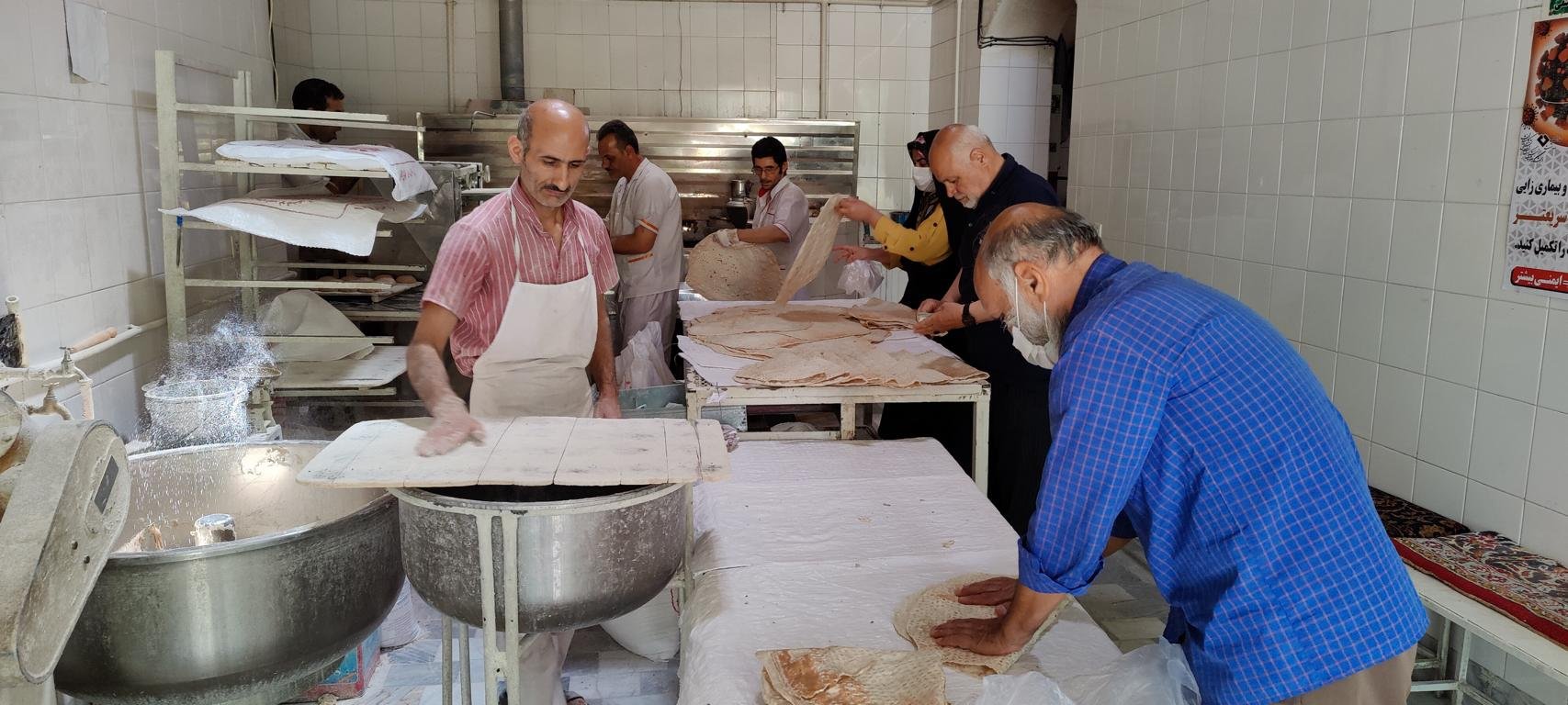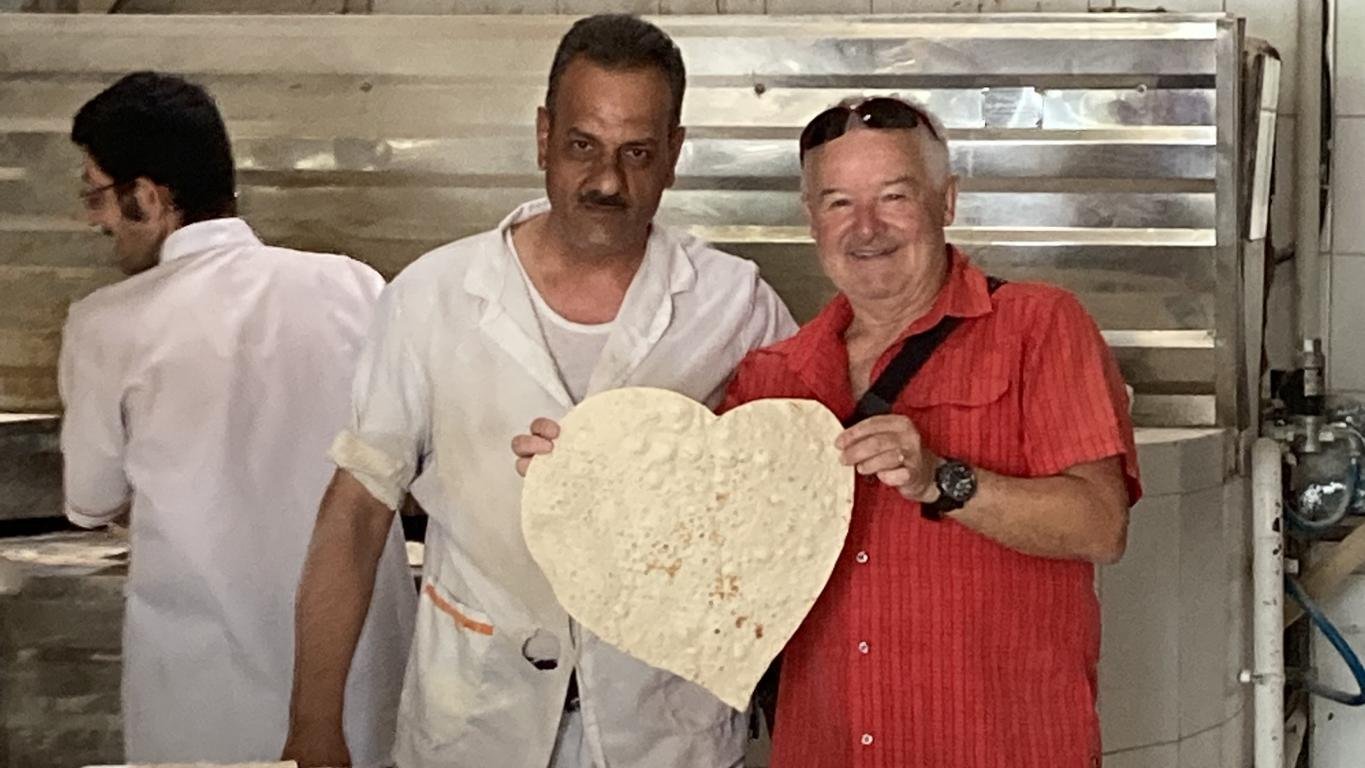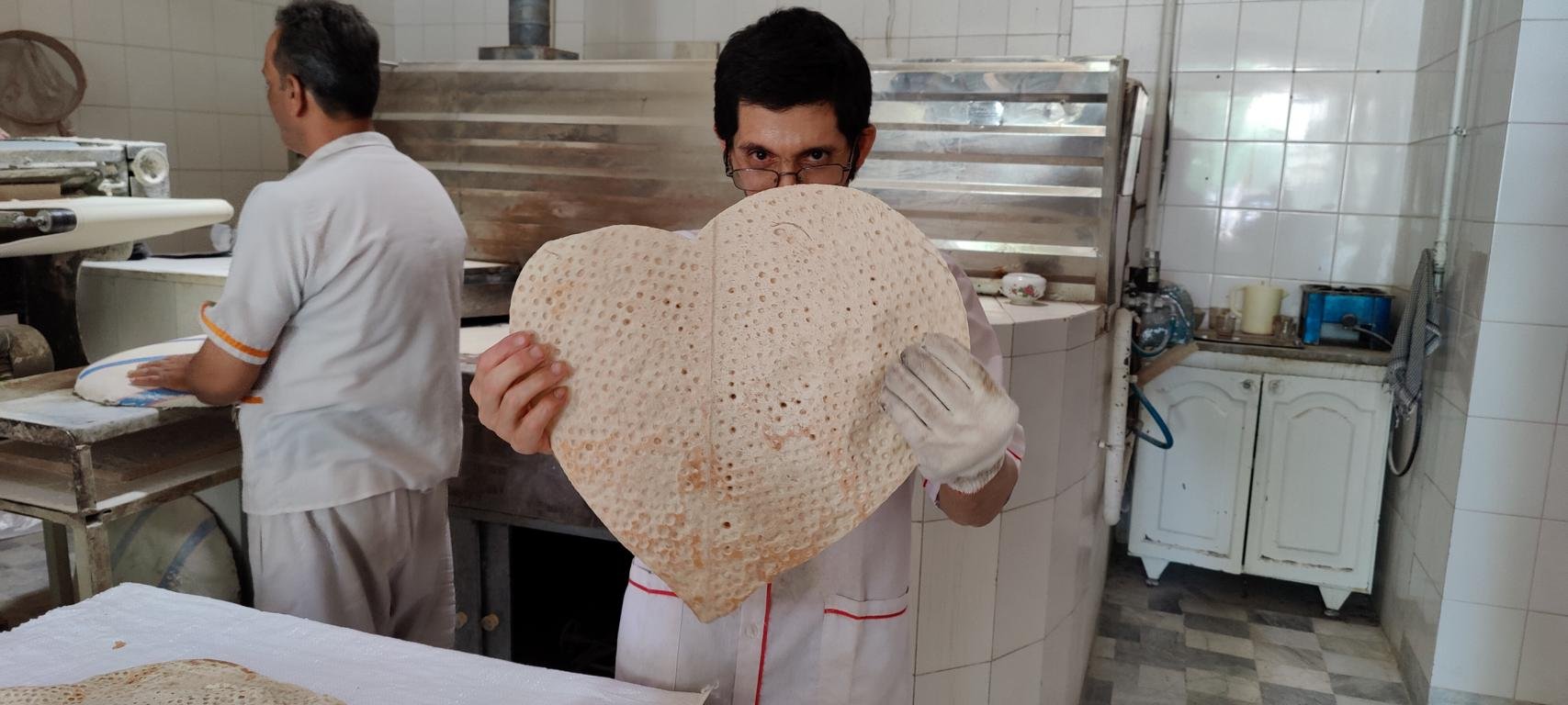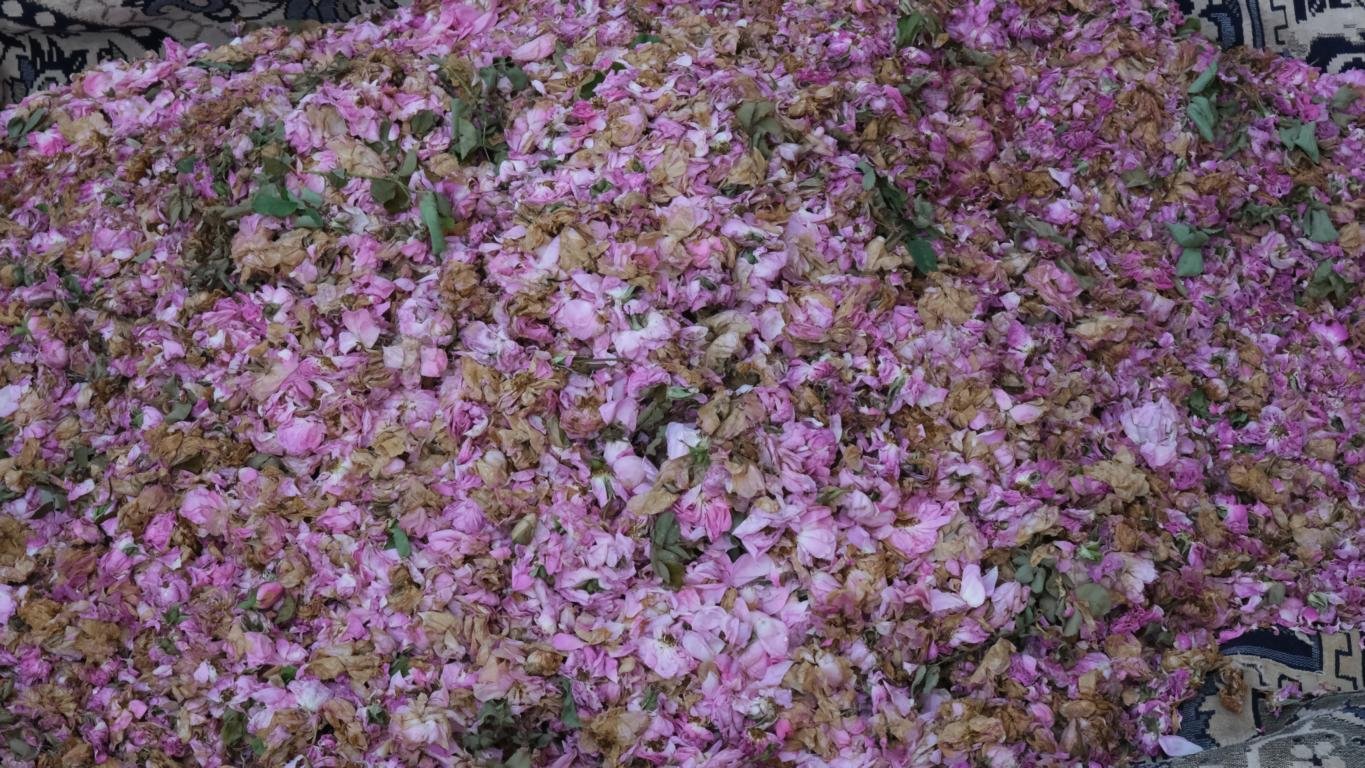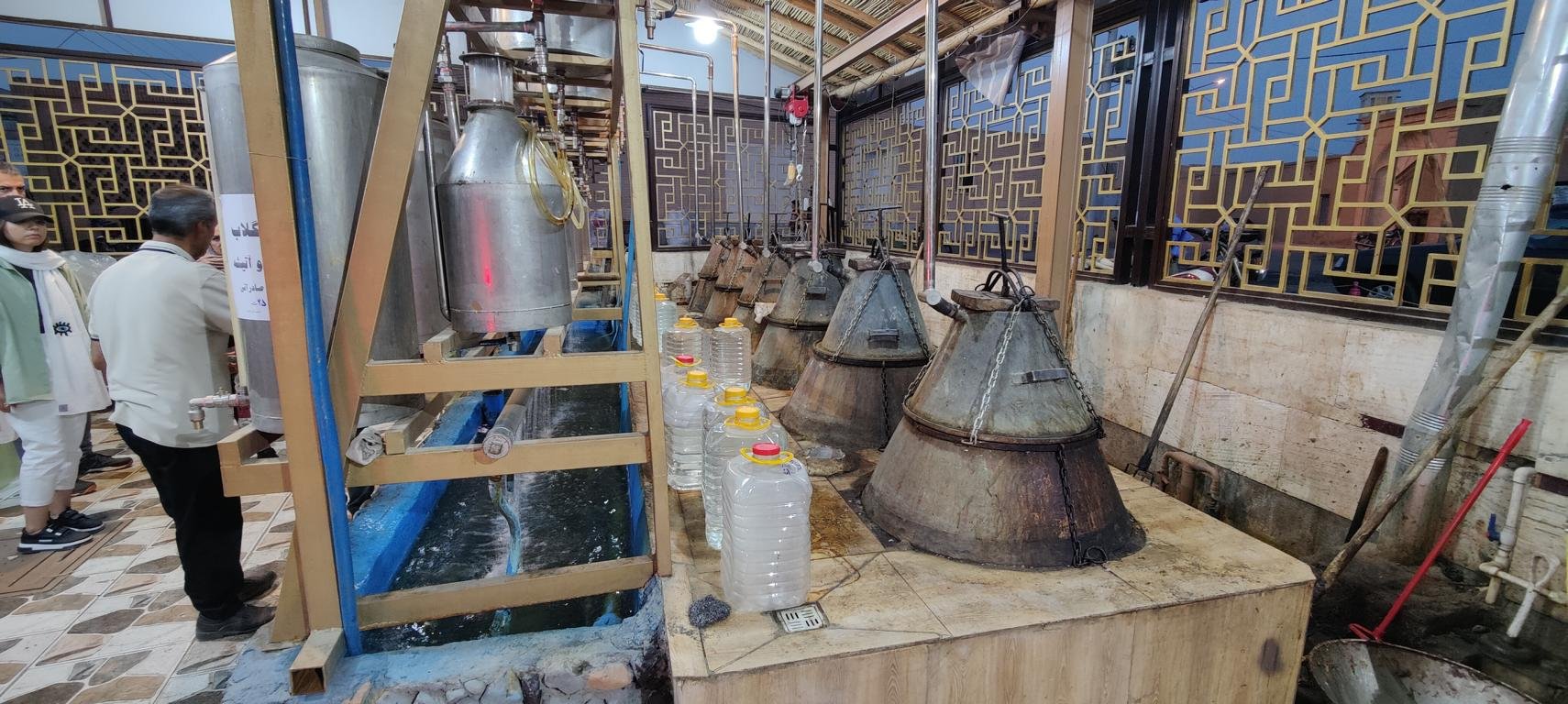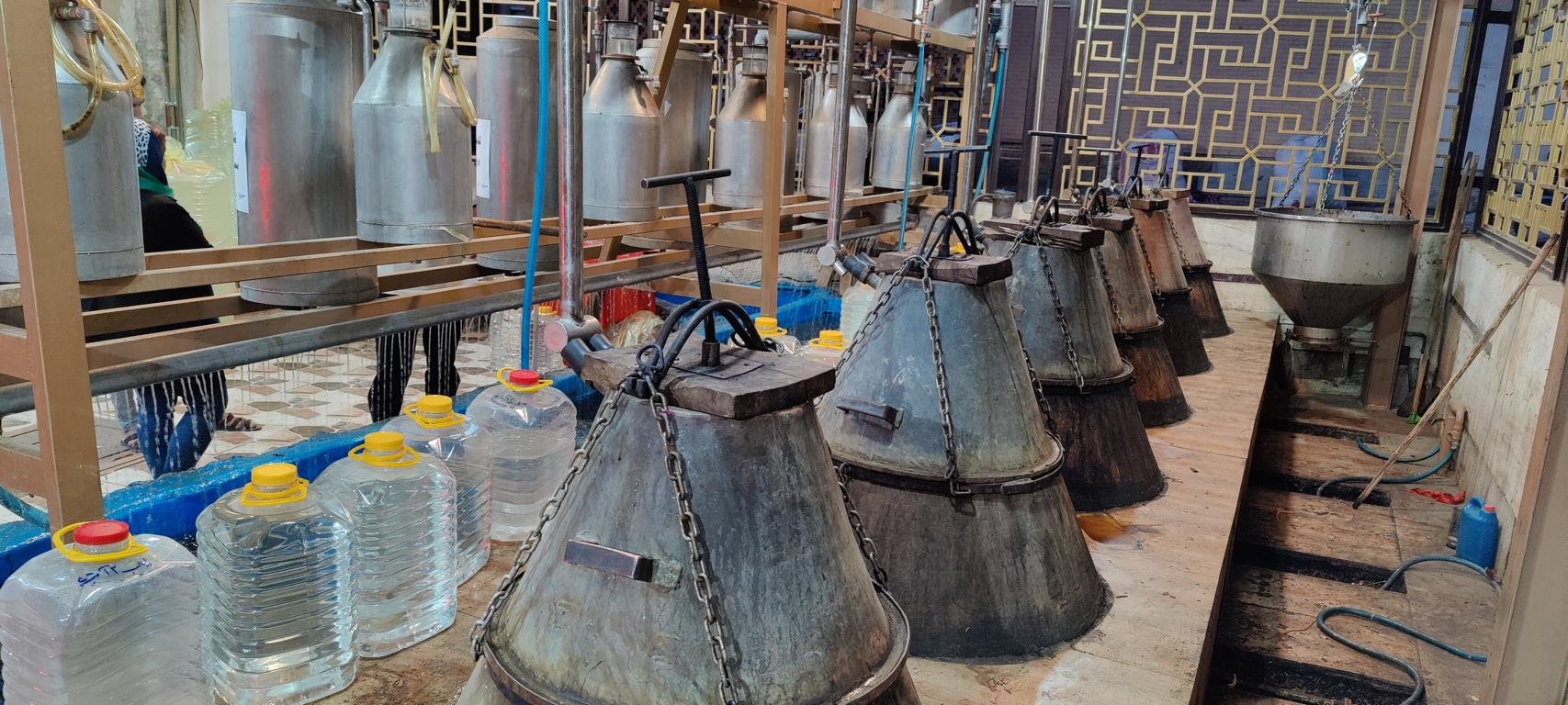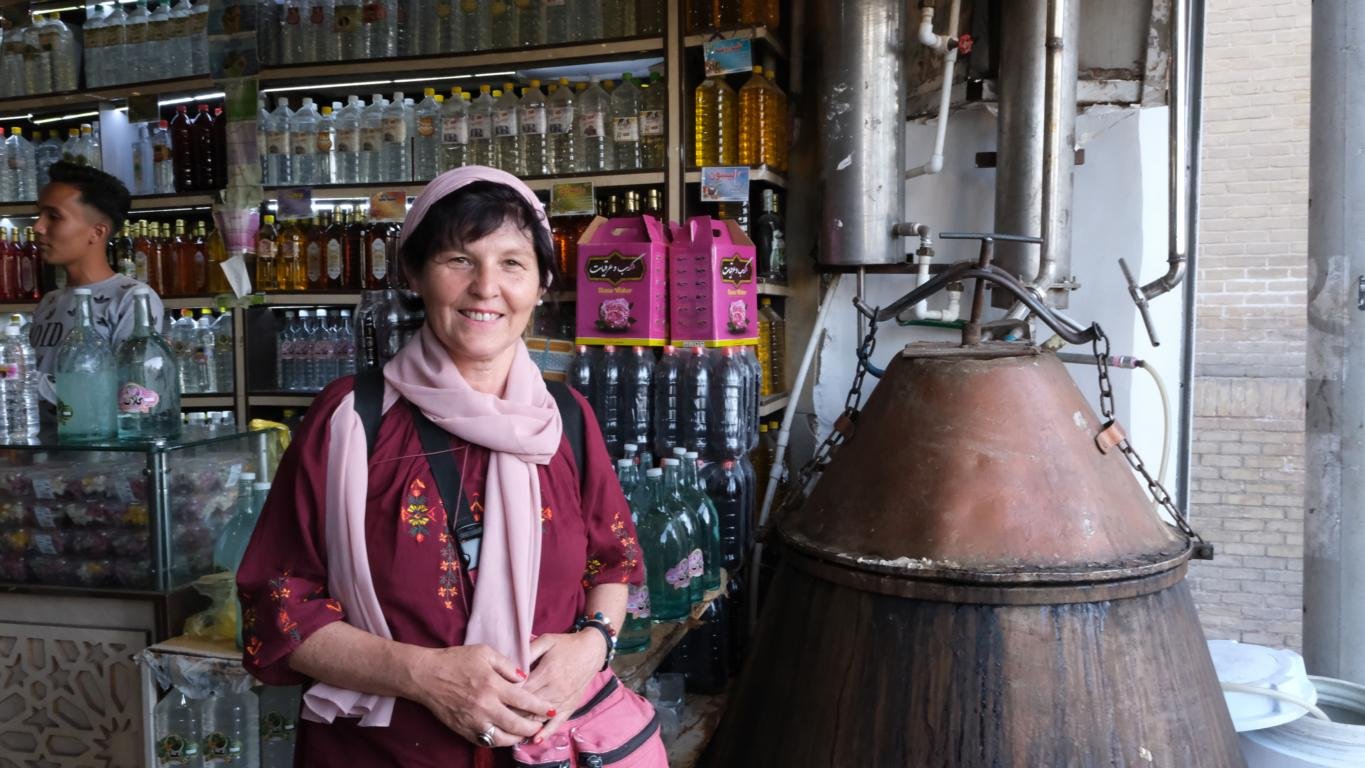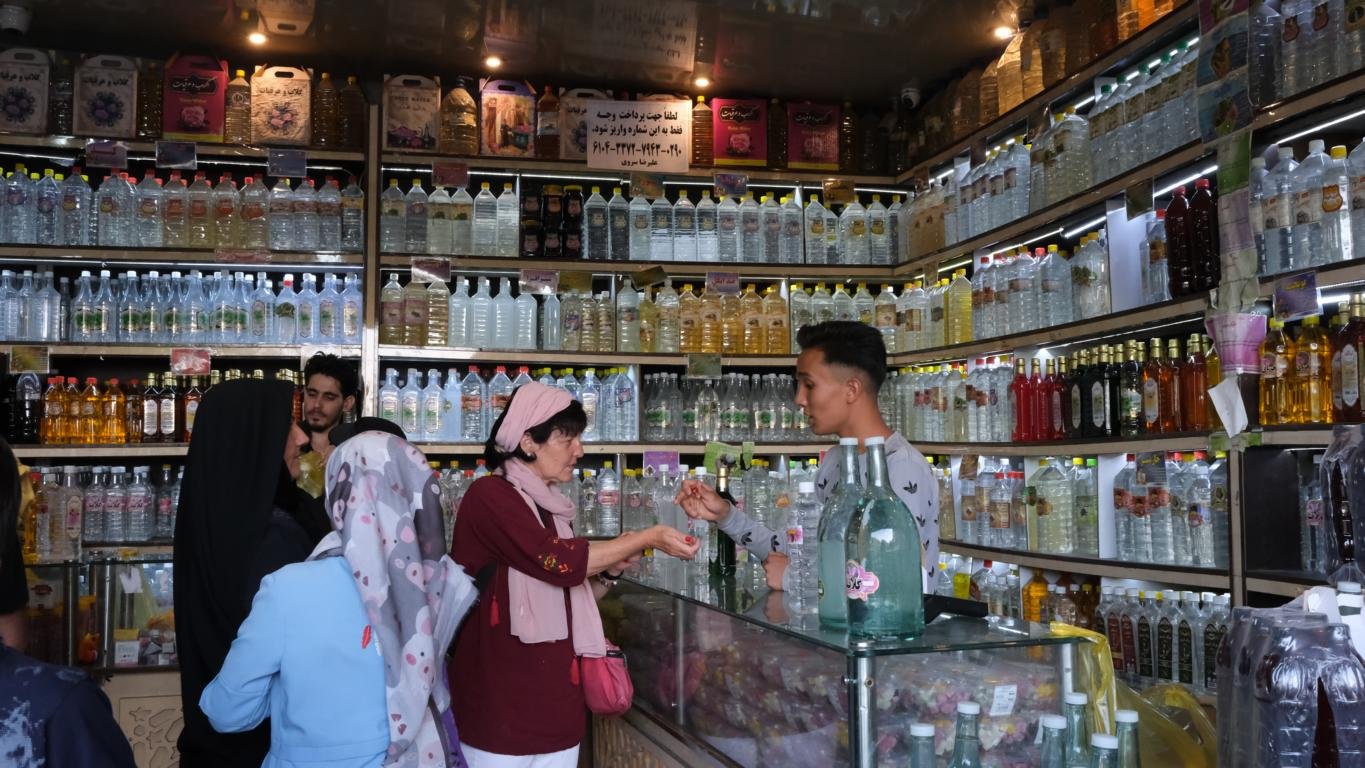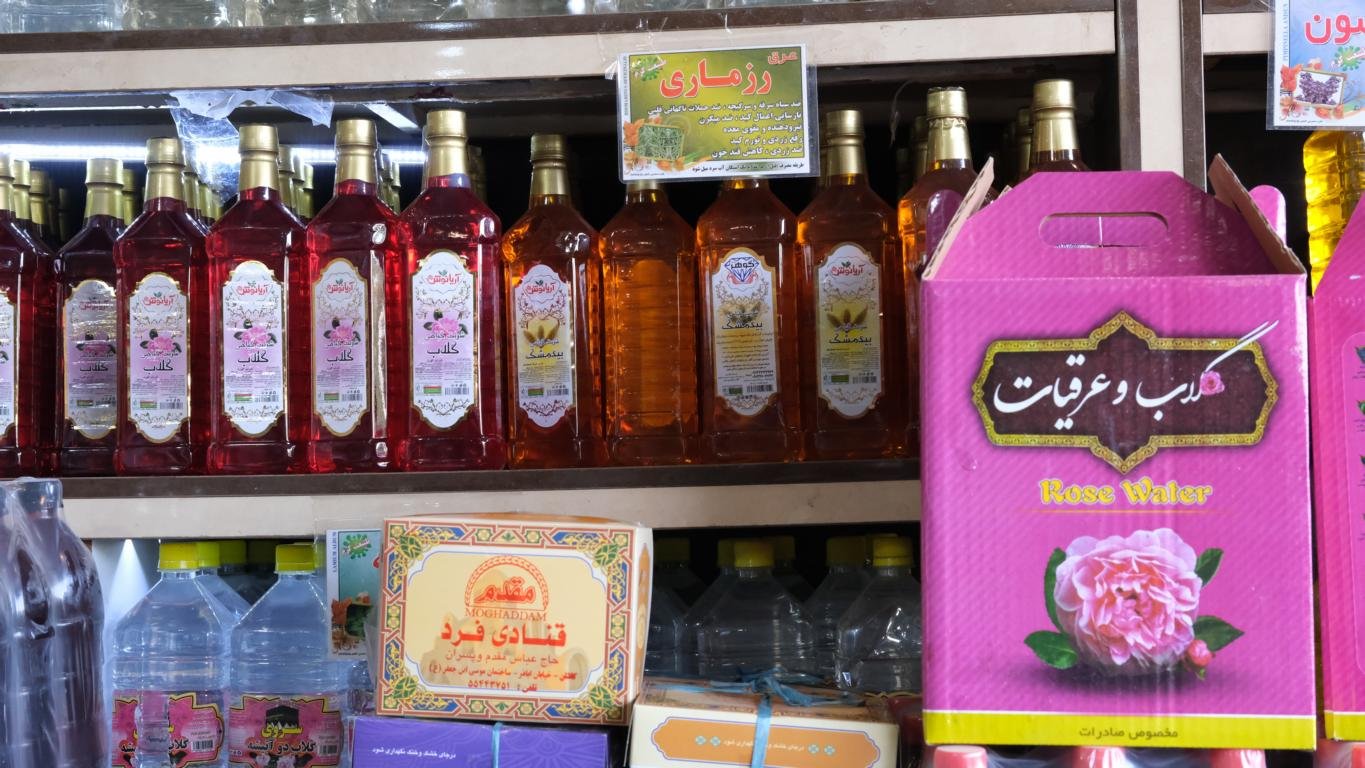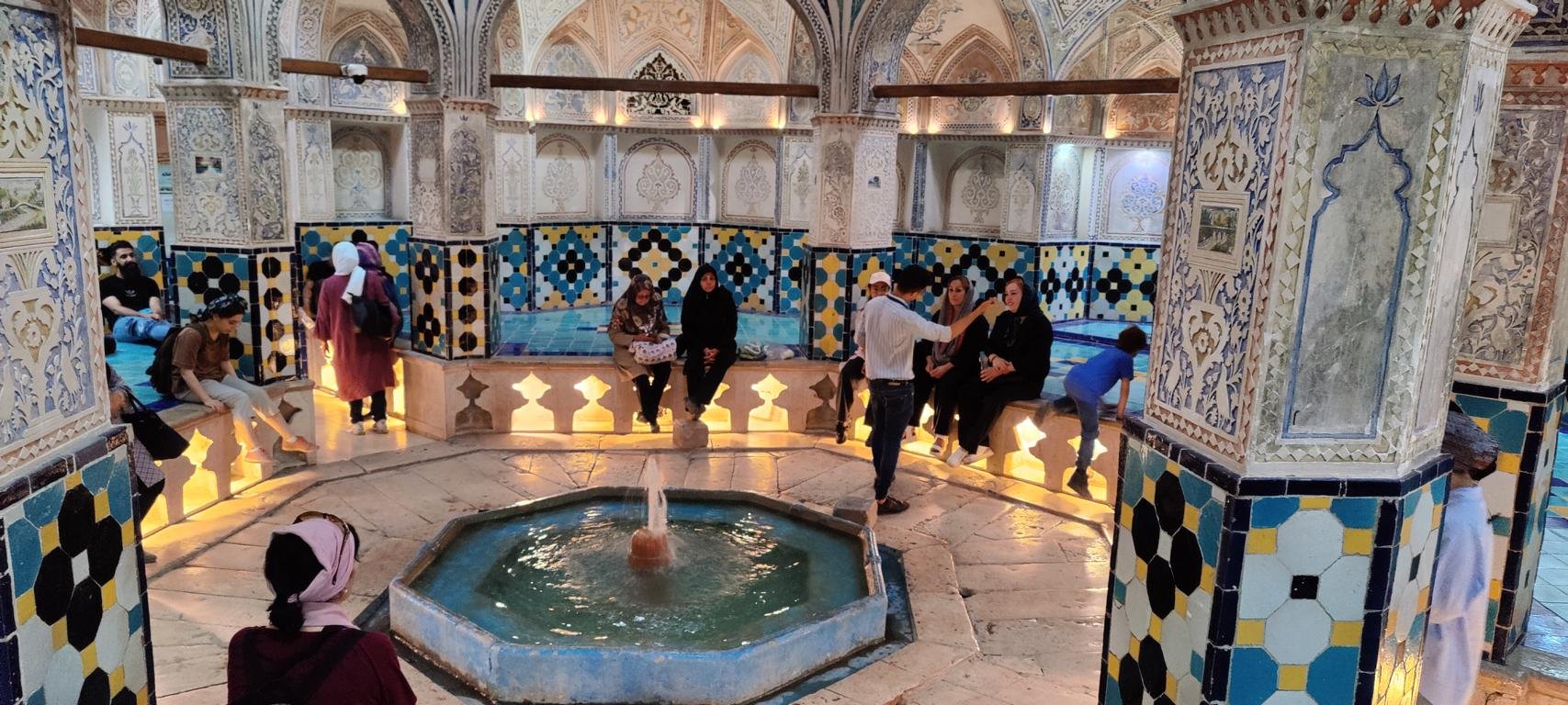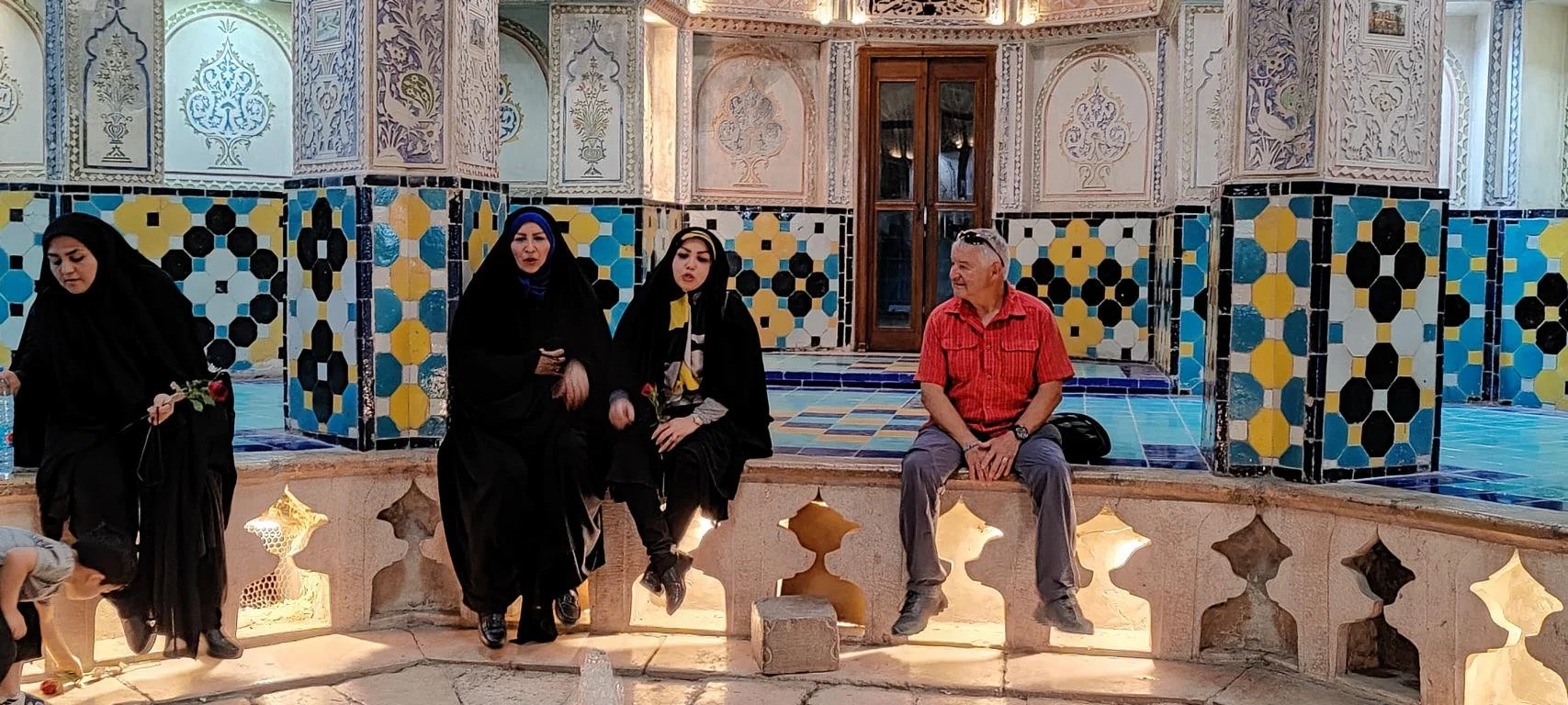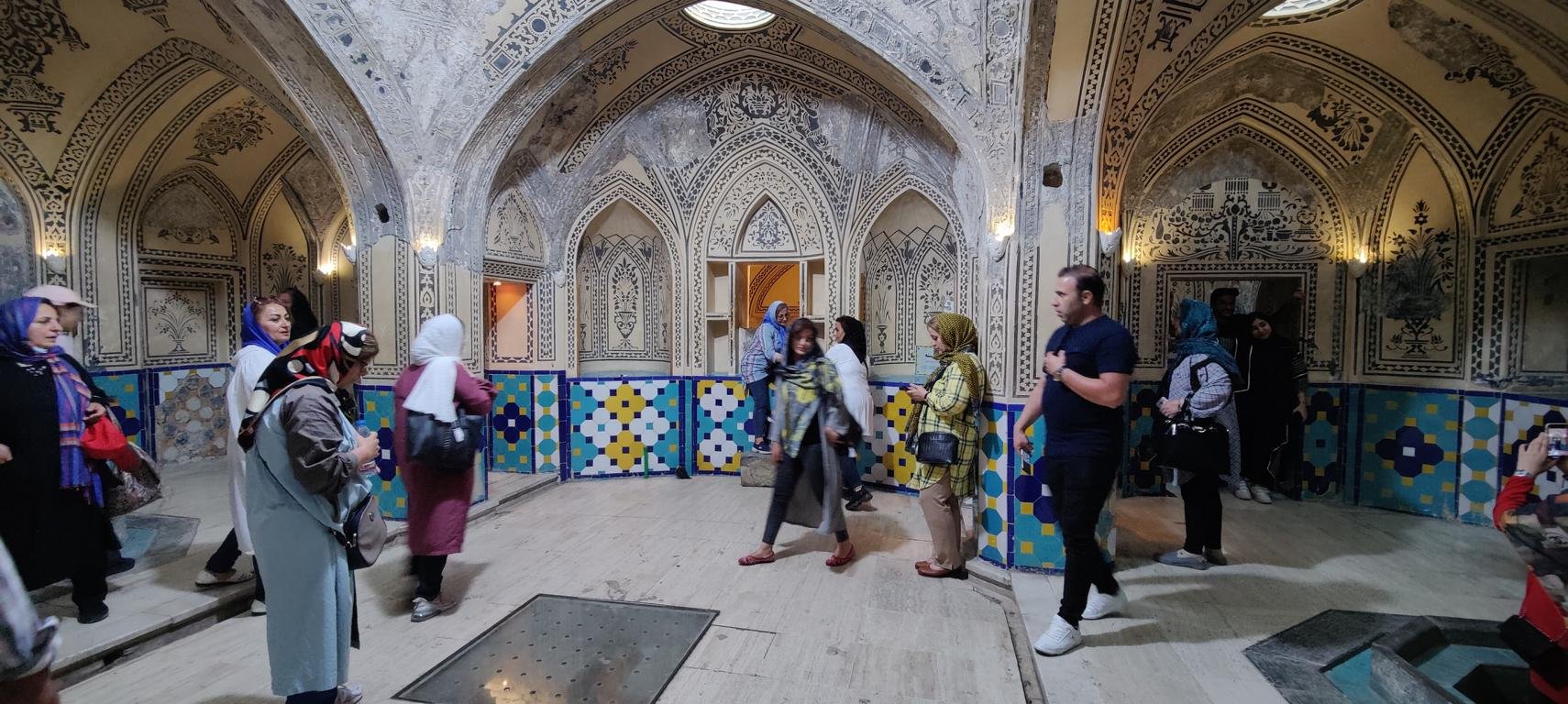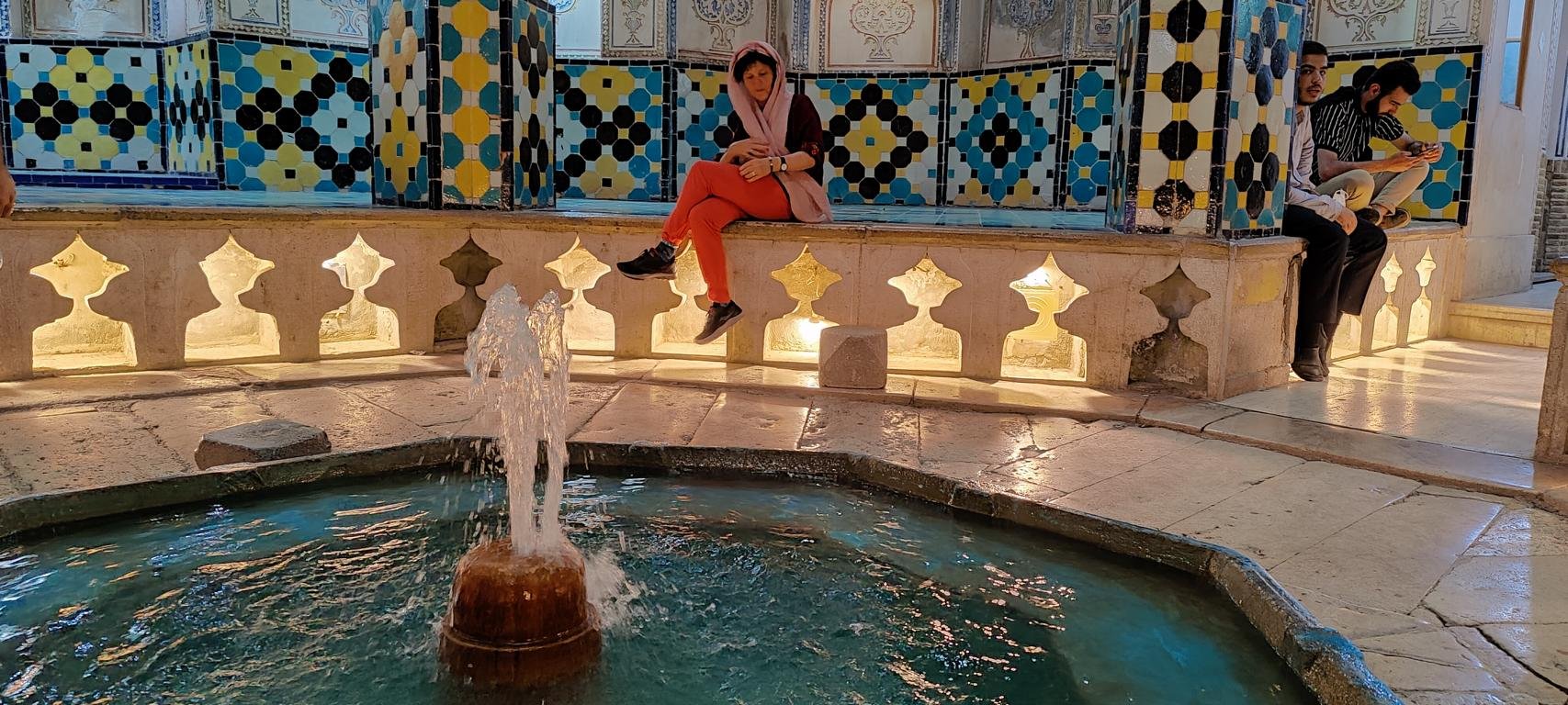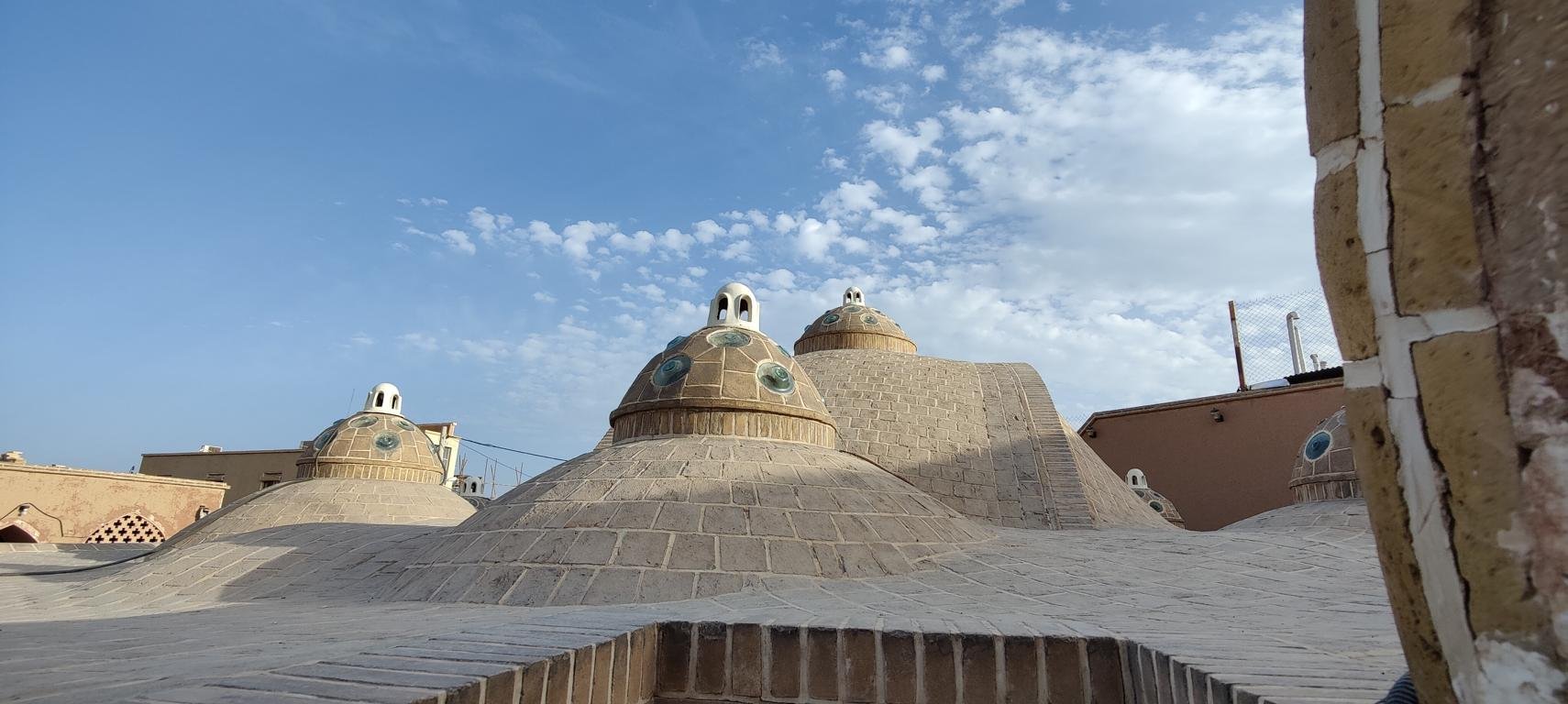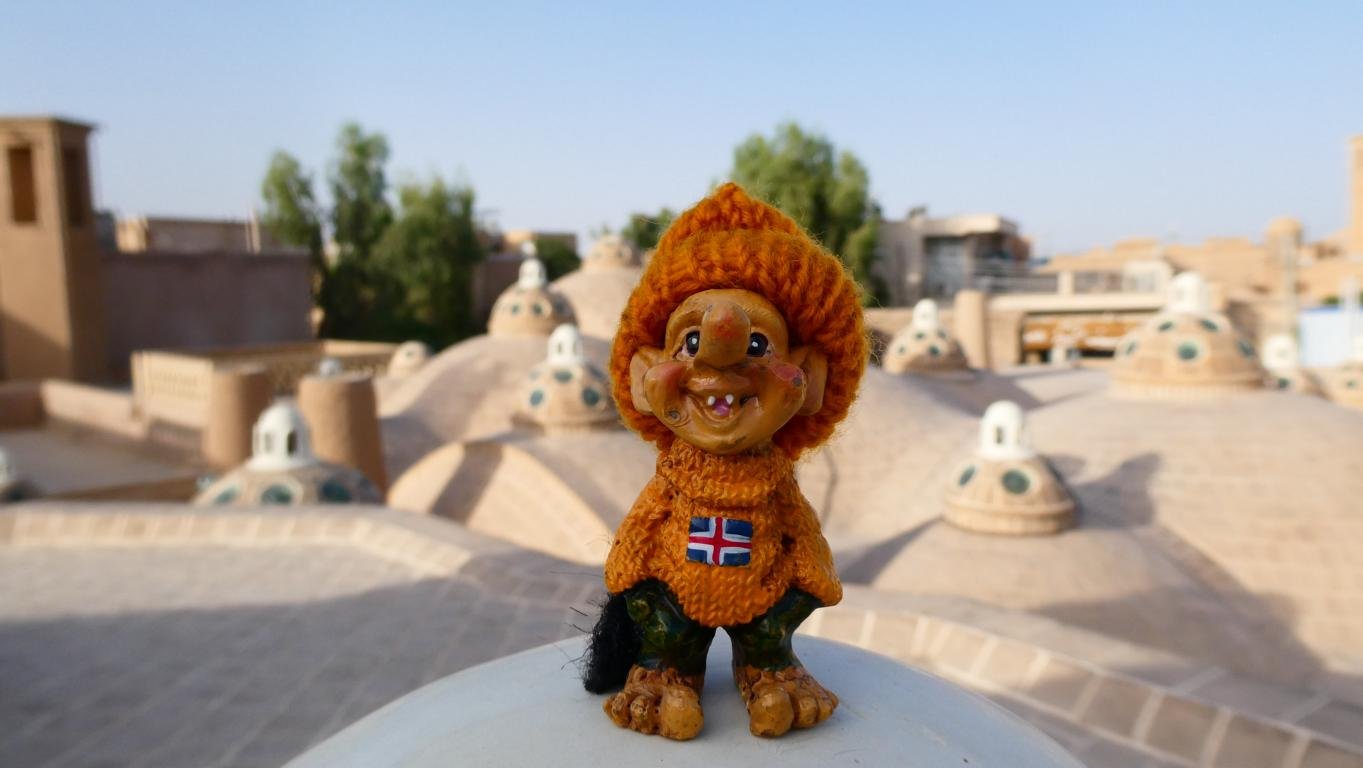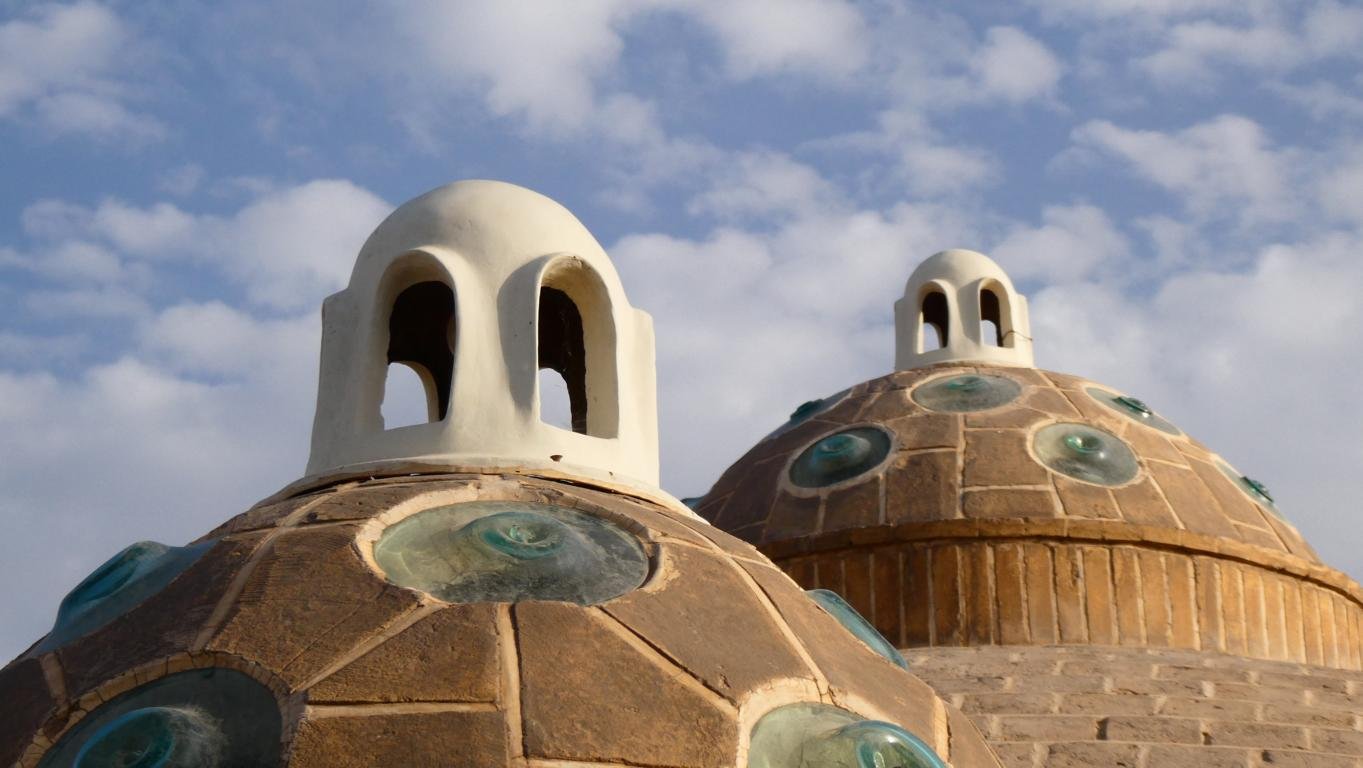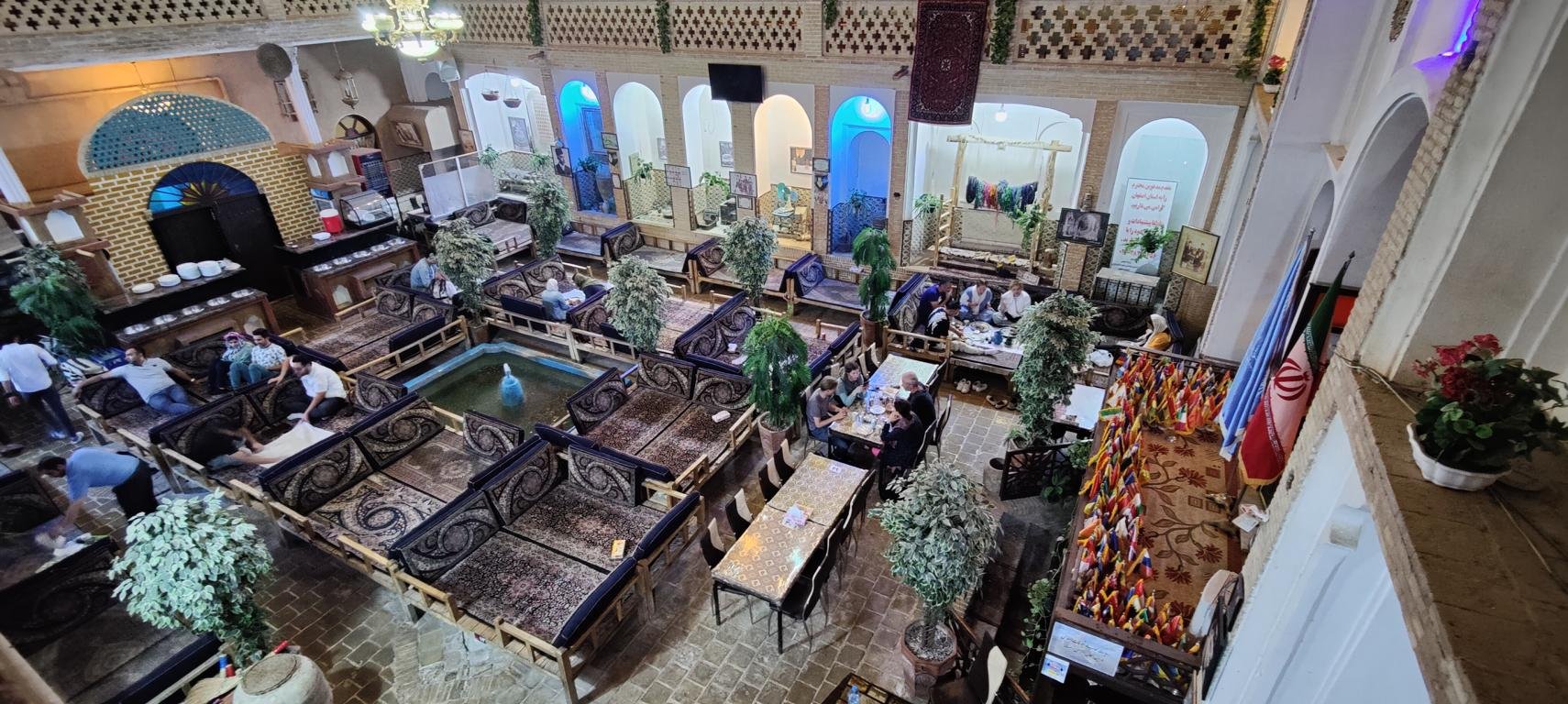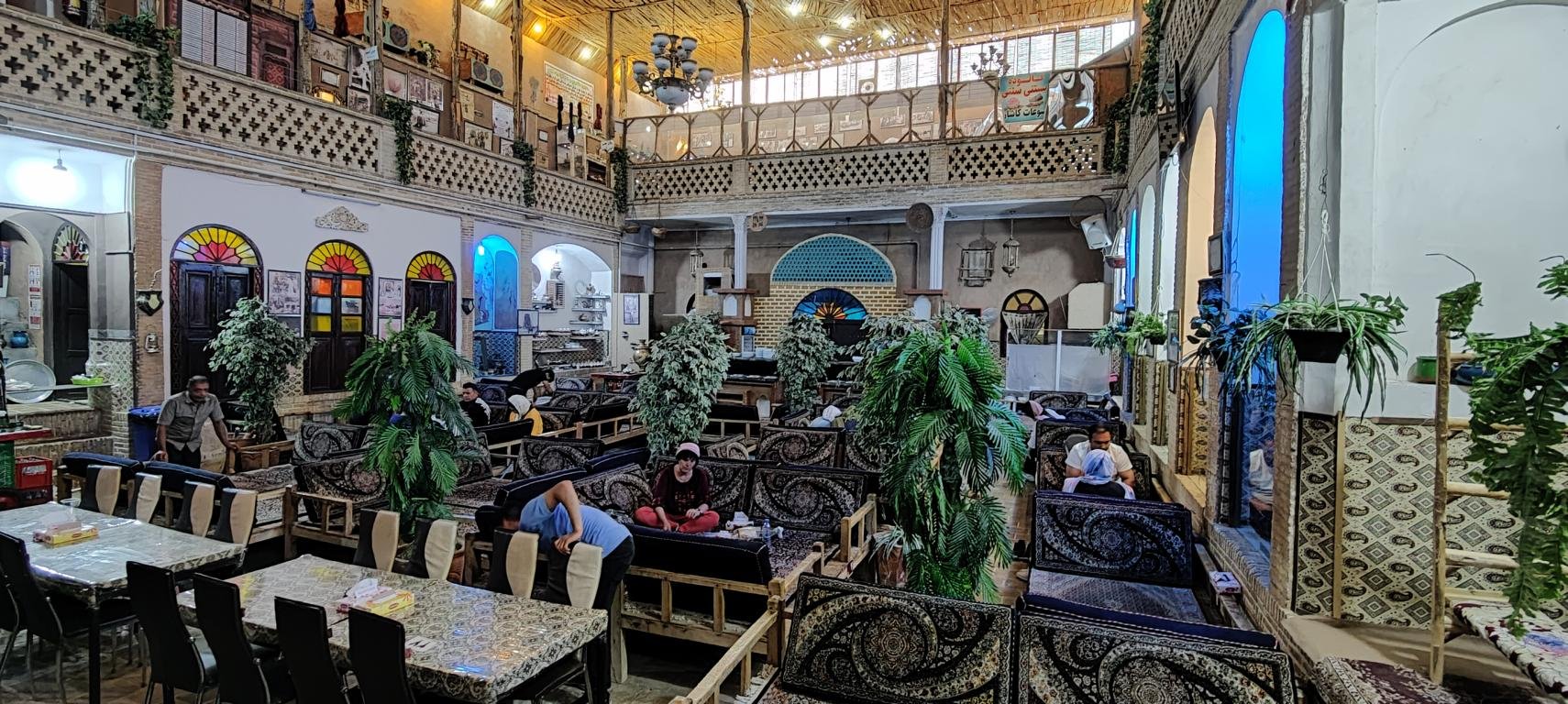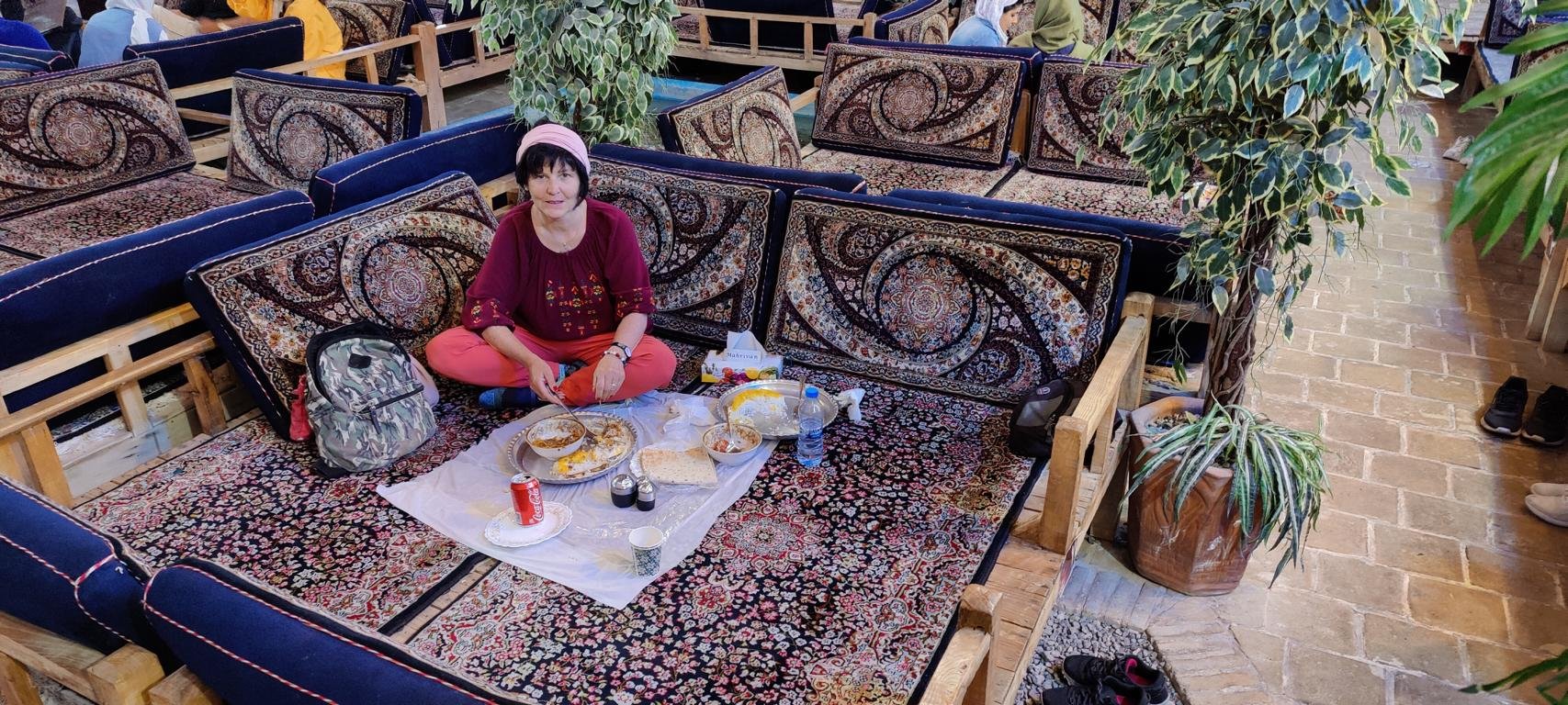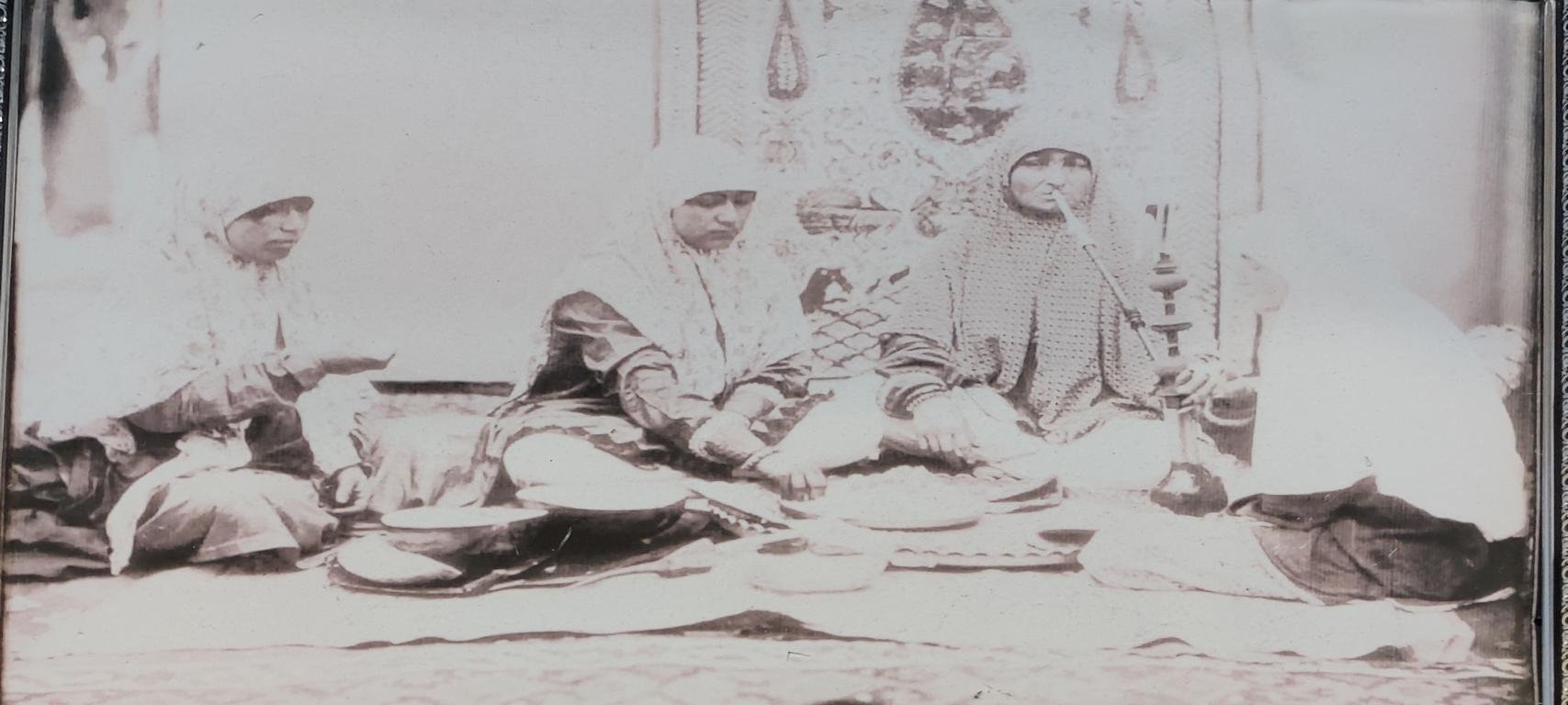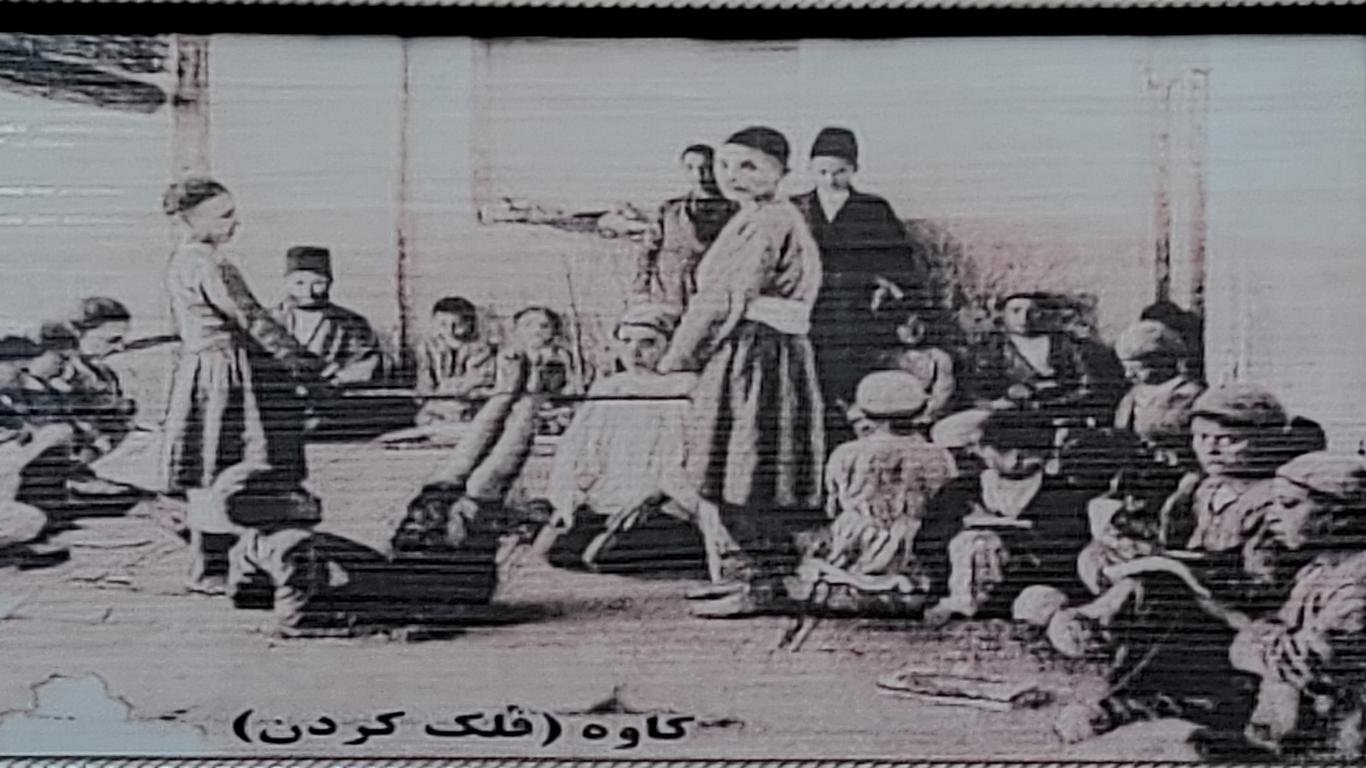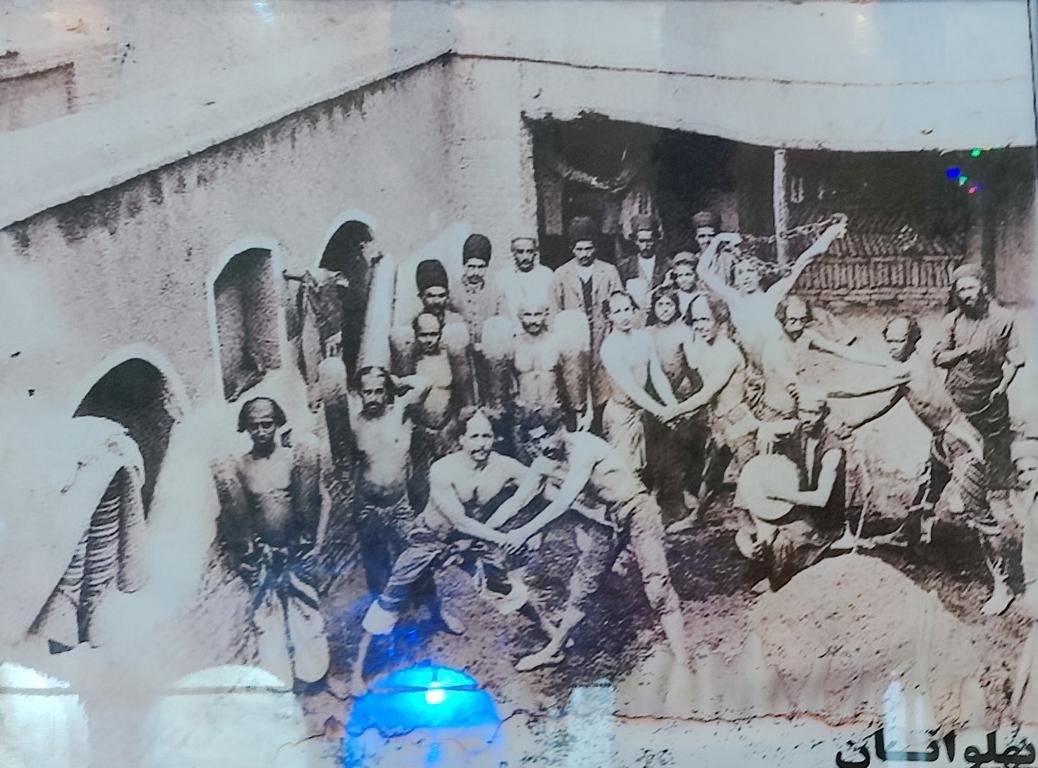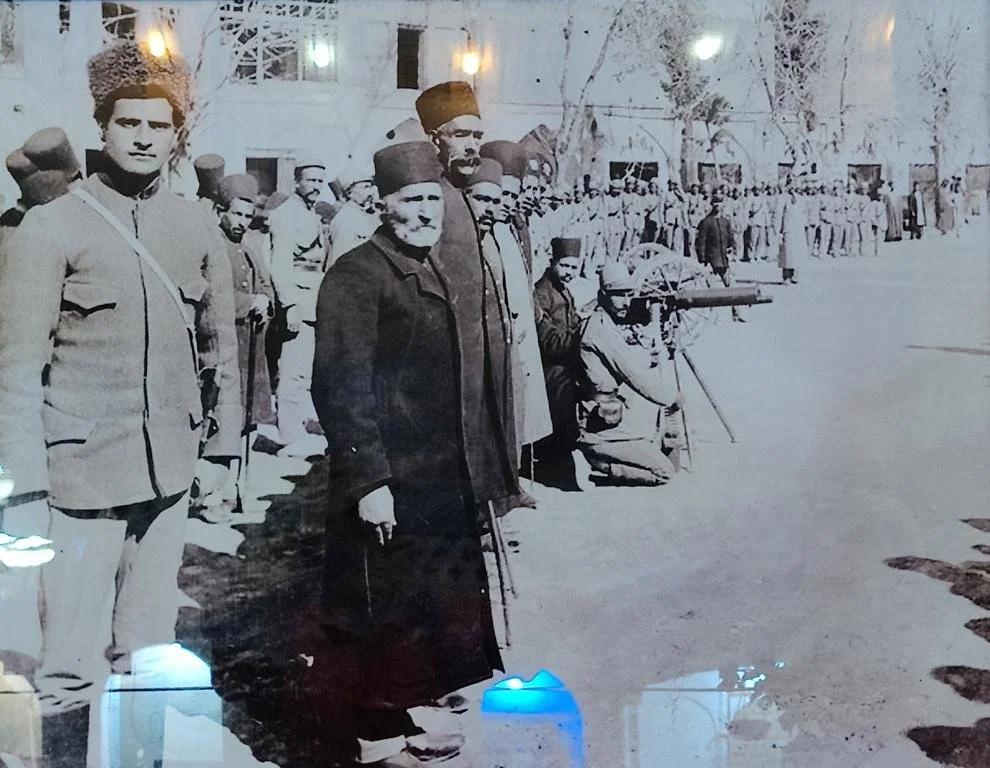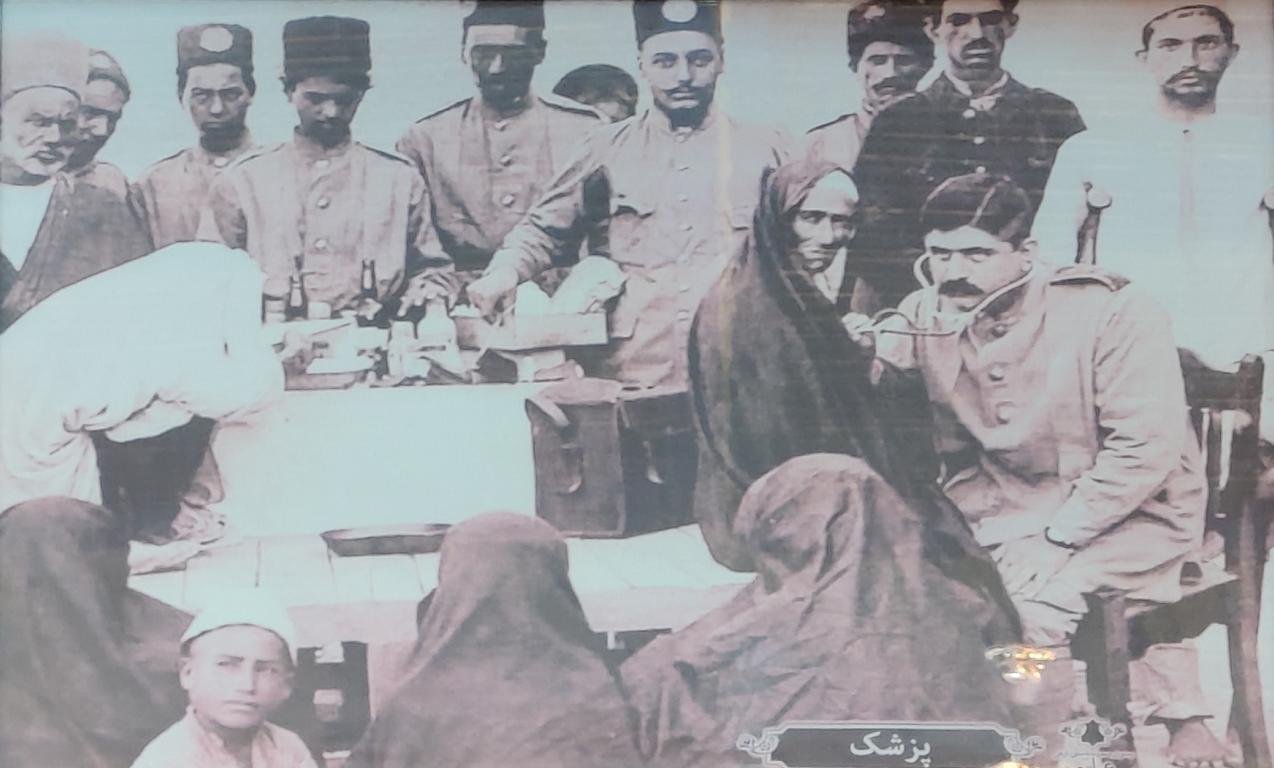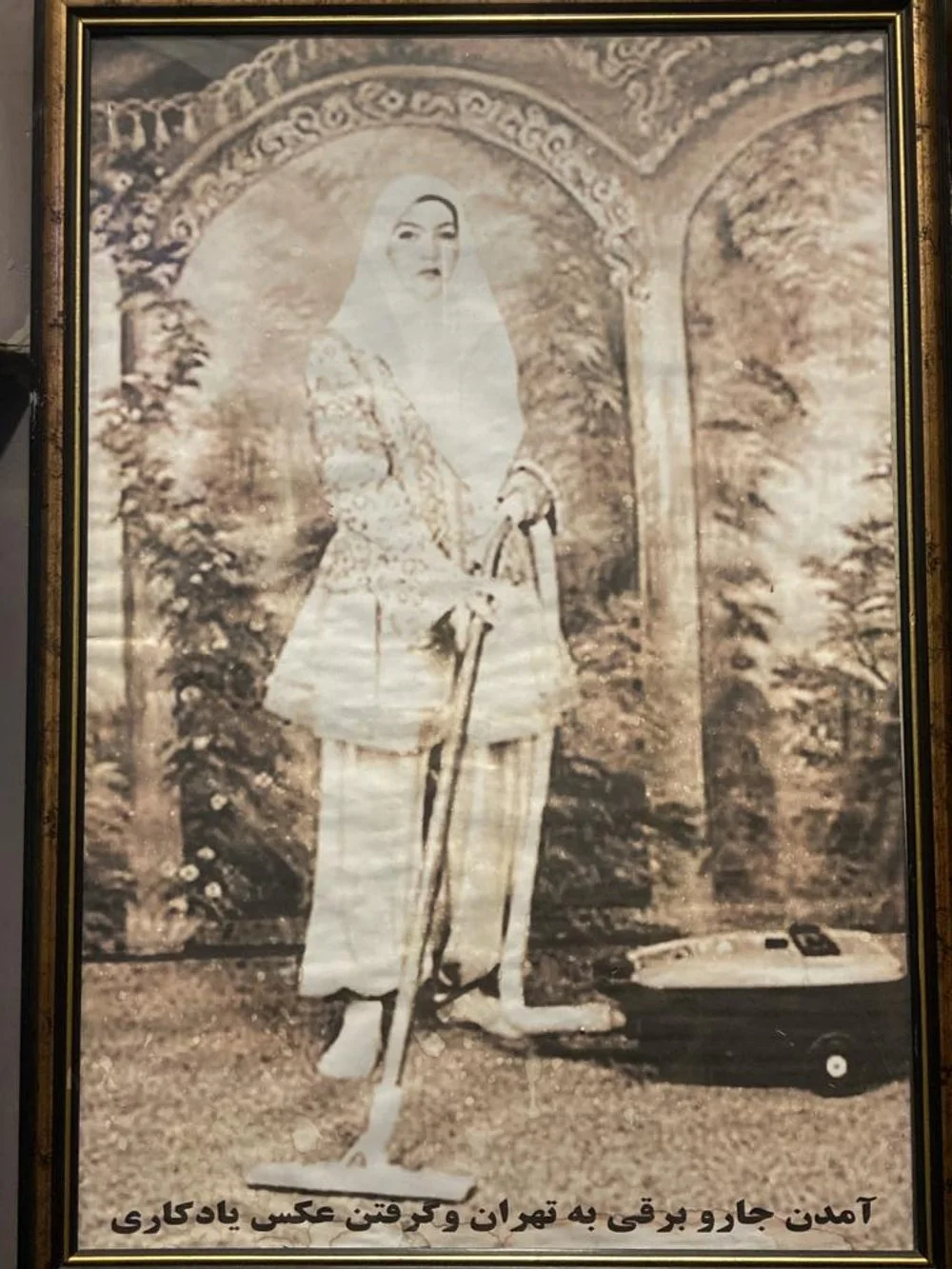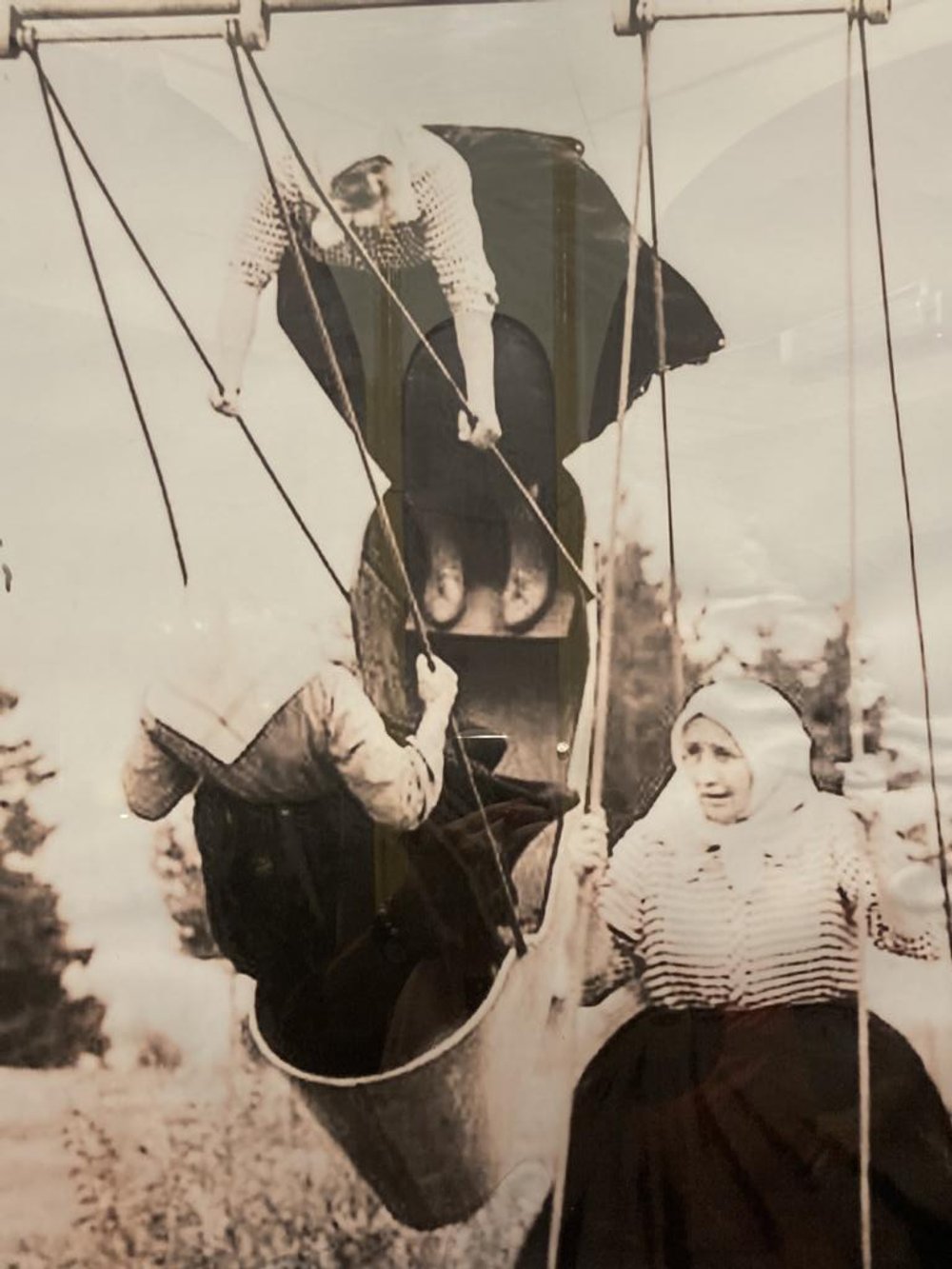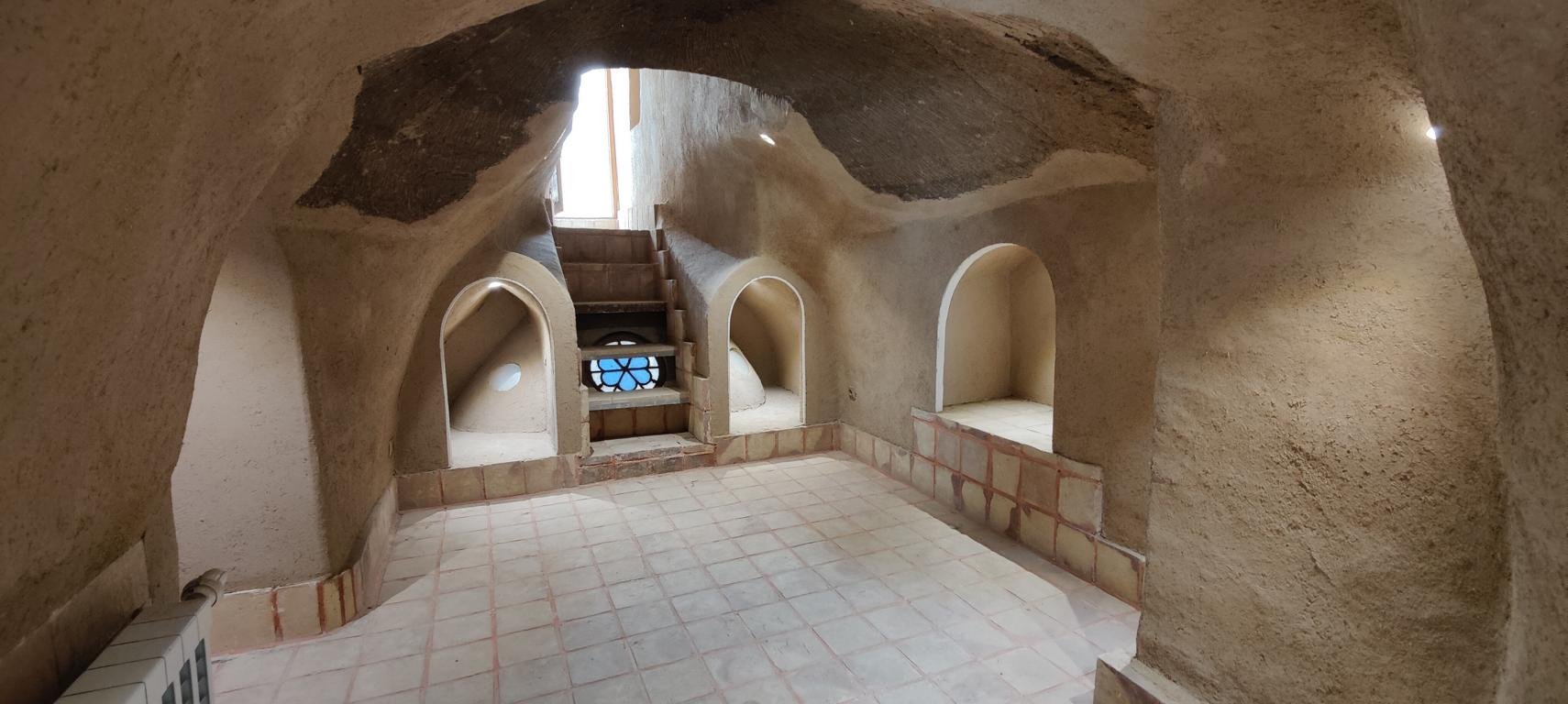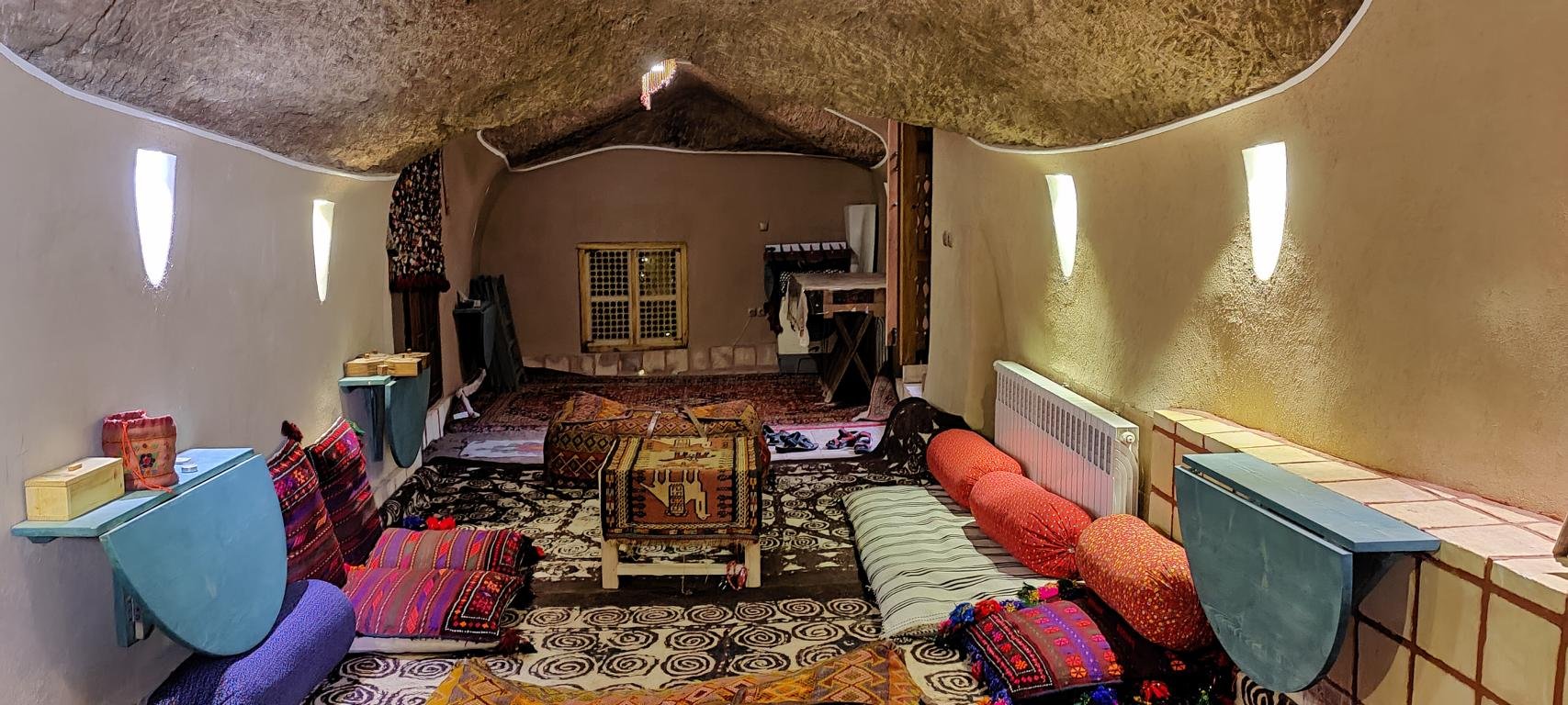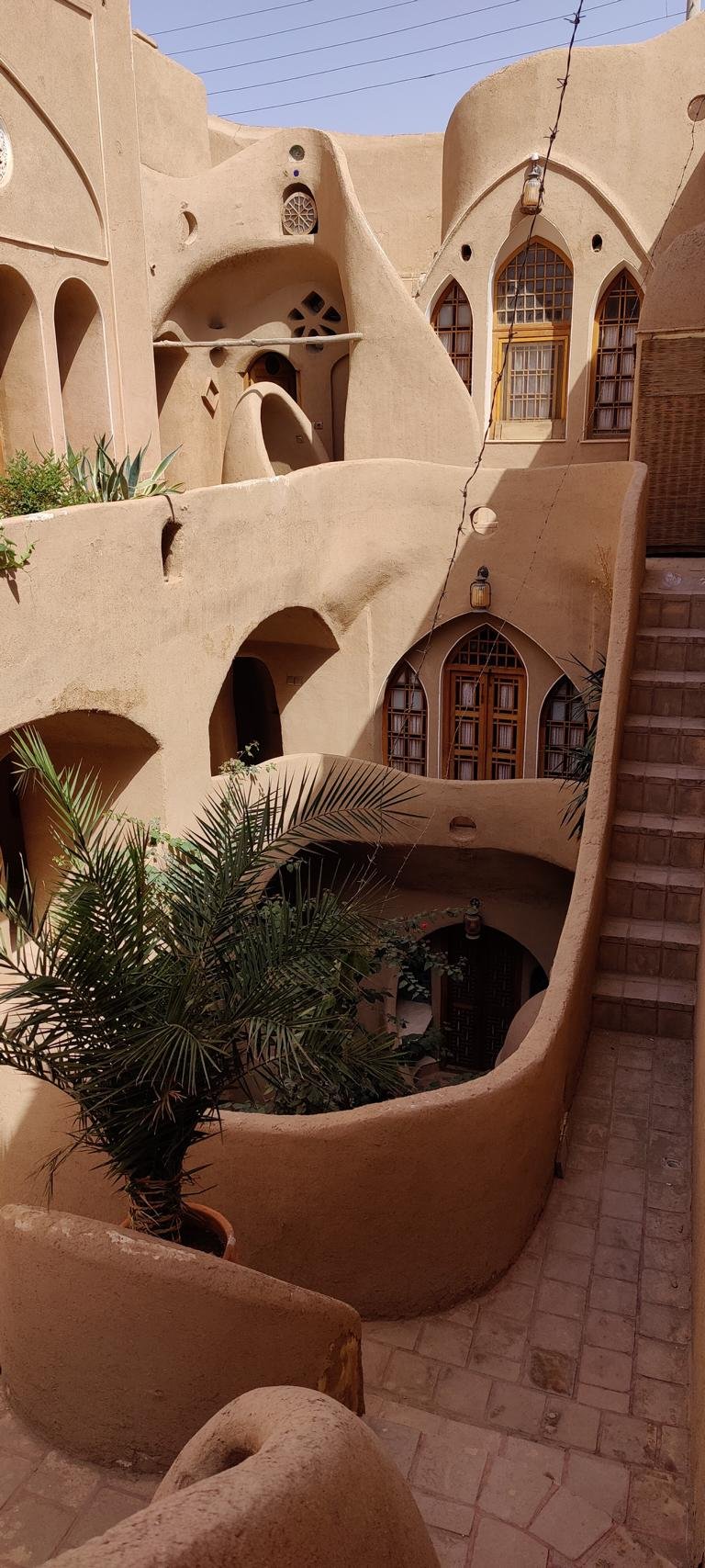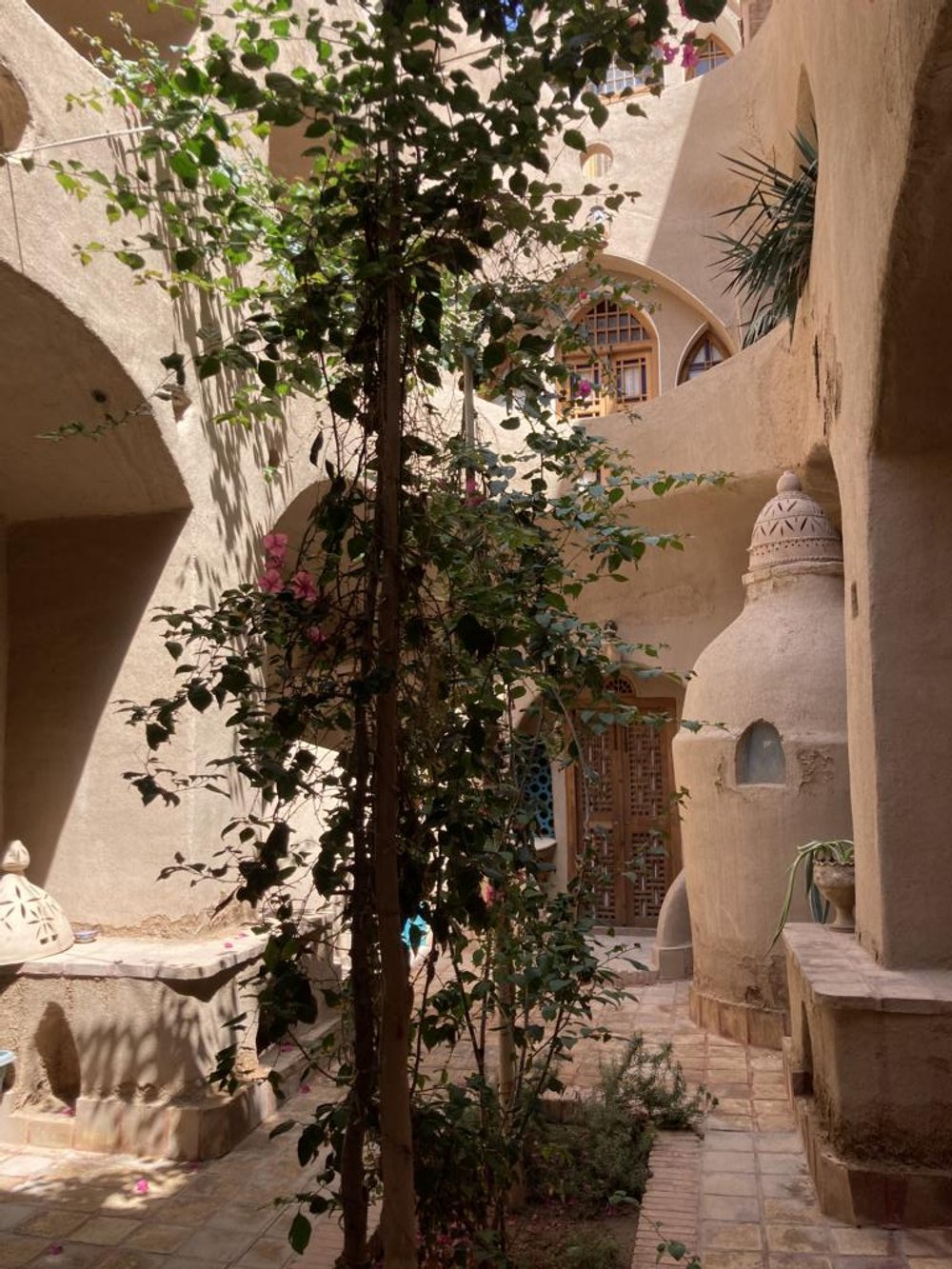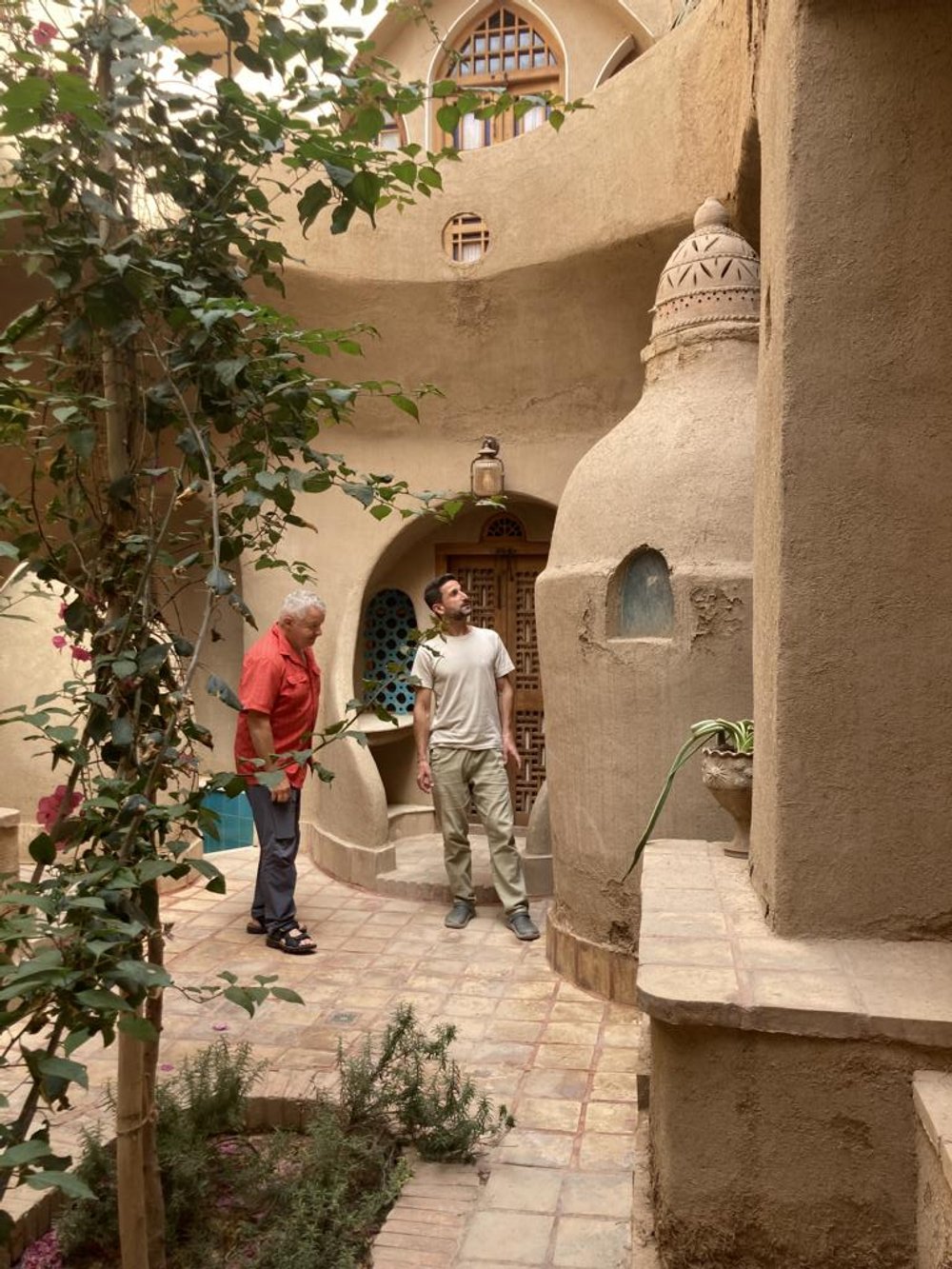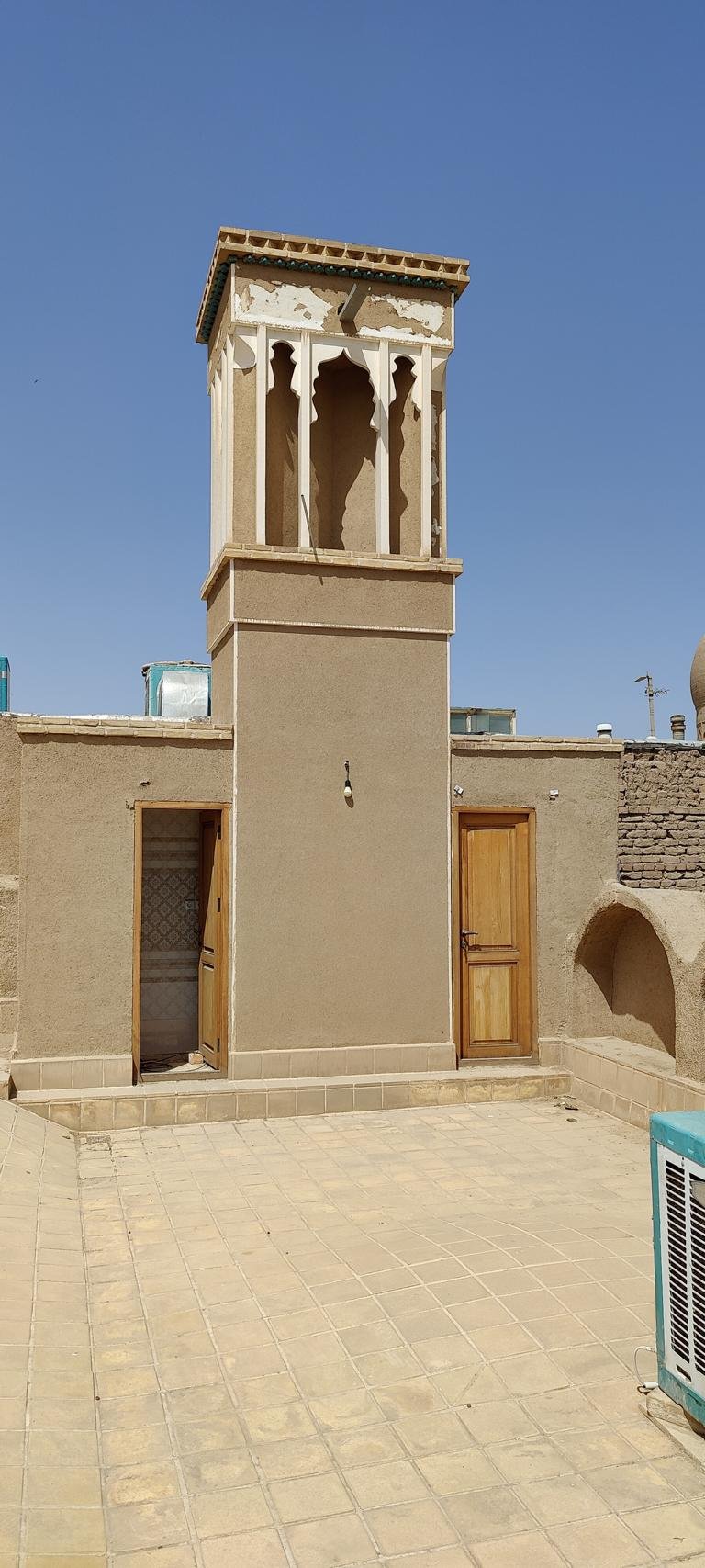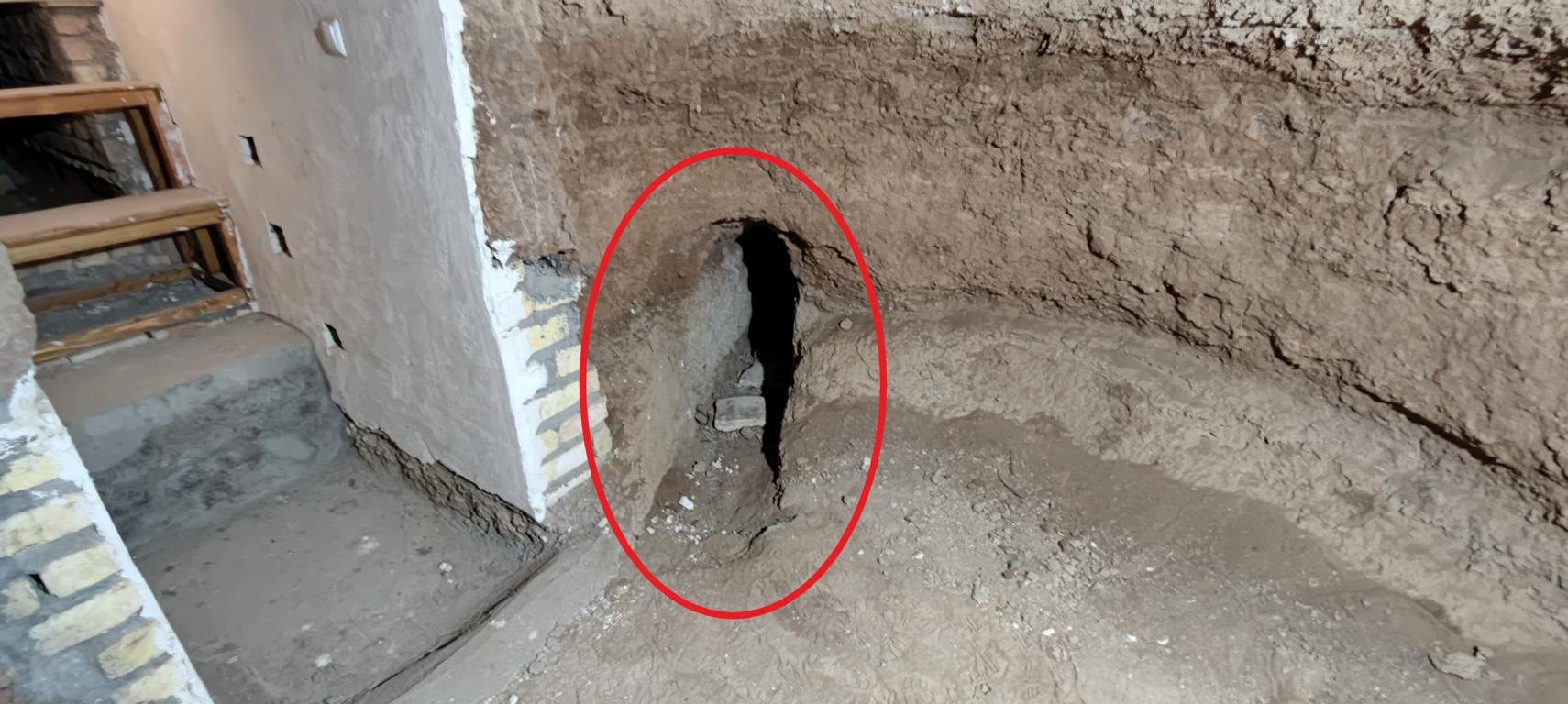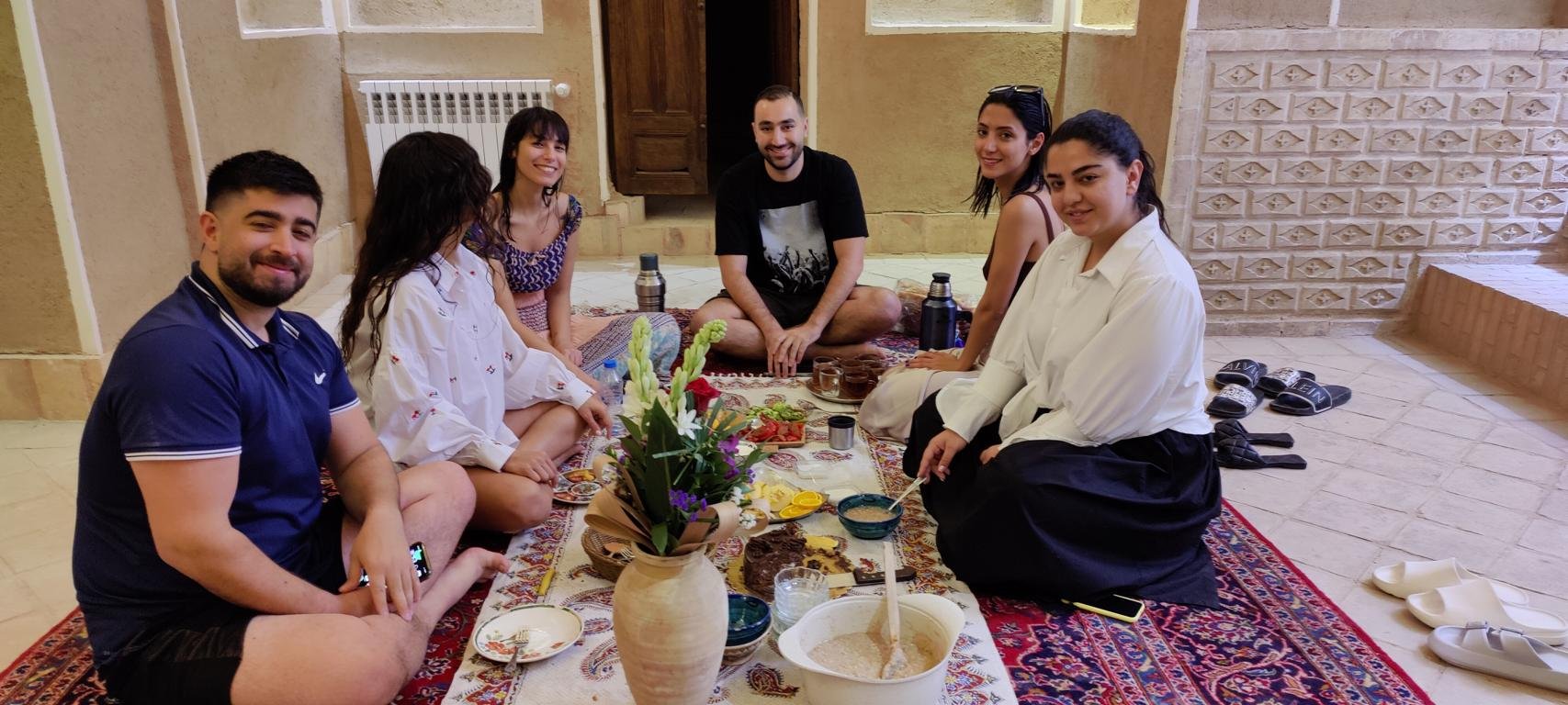Iran: Ishfahan and Kashan, May 2022
In mid-May 2022 we travelled through Central Iran visiting the two cities Isfahan and Kashan. Both are old historic centers located in a desert-like landscape. The two cities struggle with worsening droughts and falling ground water tables (up to one meter per year).
Mitte Mai 2022 besuchten wir Isfahan und Kashan, zwei im Zentral-Iran gelegene historische Städte, die in der Wüste liegen. Beide Städte kämpfen mit der immer schlimmer werdenden Dürre, die den Grundwasser Spiegel pro Jahr um bis zu 1 m sinken lässt.
Isfahan (1.9 million inhabitants) is located at the intersection of two old commercial routes and had been Persia’s capital for some time. It is one of Iran’s biggest tourism hot spot. The biggest attraction probably is the Naqsh-e Jahan Square constructed in the early 16th century which measures 160 m / 520 ft wide and 560 m / 1,840 ft long. It is particular popular in the evening when temperatures get cooler.
Isfahan (1,9 Million Einwohner*innen) liegt an der Kreuzung zweier historisch bedeutsamer Handelsrouten und war einige Zeit die Hauptstadt Persiens. Die größte Attraktion Isfahans ist wohl der Naqsh-e Jahan Platz aus dem 16. Jh., der 160 m breit und 520 m lang ist. Besonders am Abend, wenn die Temperaturen zurückgehen, ist er ein beliebter Treffpunkt für Einheimische.
The Grand Bazar of Isfahan is the world’s biggest roofed bazar and has a length of 2 km. You could spend days walking the small alleys. At one of the hardware stands I found two different types of door knockers (last picture): The one on the left side is to be used by female visitors, the three others are to be used by male visitors. From the different sound the family in the house knows the gender of the guest and whether a man or a women should open the door to respect dress code and modesty.
Der Große Basar von Isfahan ist der größte überdachte Basar der Welt und hat eine Länge von 2 km plus vielen Querstraßen. Man kann Tage damit verbringen die verschieden Stände abzugehen. Bei einem Eisenwarengeschäft fand ich zwei verschiedene Arten von Türklopfern: Der ganz linke ist für weibliche Besucher, die drei anderen sind für männliche Gäste. Durch den verschiedenen Klang der Türklopfer weiß die Familie immer, ob ein Mann oder eine Frau vor der Tür steht und kann in Hinblick auf Bekleidungsvorschriften und Sittsamkeit die richtige Person zum Türöffnen schicken.
Isfahan has many great historic restaurants. One we particularly liked is the Namakdan restaurant which also has a little museum attached. The employees also showed us some historic paintings not on display, originating from a time when art and morals were not as tightly controlled as now.
In Isfahan gibt es viele tolle historische Restaurants. Eines das uns besonders gefallen hat war das Namakdan Restaurant, an das auch ein kleines Museum angeschlossen ist. Die Angestellten zeigten uns auch einige kleine nicht ausgestellte Gemälde aus einer Epoche, wo Kunst und Moral nicht so streng kontrolliert wurden wie heute.
The Shah Mosque located at the southern end of the square was constructed when Shah Abbas moved Persia’s capital to Isfahan in the 17th century. The dome is 53 m /160 ft high. The whole complex is built from 18 million bricks and 475,000 tiles.
The Shah Mosche liegt am südlichen Ende des großen Platzes und wurde unter Shah Abbas errichtet, der Persiens Hauptstadt im 17. Jh. nach Isfahan verlegte. Die Kuppel ist 53 m hoch. Der gesamte Komplex wurde aus 18 Millionen Ziegeln und 475.000 Kacheln errichtet.
The Jāmeh Mosque of Isfahān, one of Isfahan’s several UNESCO World Heritage Sites, is located at the northern end of the bazar. Starting from the 8th century the complex has been constantly expanded and enlarged. Sunlight falling into the dark halls inspired us to use it for some creative portrait shots.
Die Jāmeh Mosche von Isfahān, eine von mehreren UNESCO Welt Kulturerbe Stätten Isfahans, liegt am nördlichen Ende des Basars. Beginnend im 8. Jh. wurde der Komplex laufend erweitert. Das durch einige schale Öffnungen einfallende Sonnenlicht nutzten wir für einige kreative Porträtaufnahmen.
Adjacent to the mosque there are plenty of shops offering women’s clothing in line with government regulations and religious tradition. Considering the hot temperatures it must be quite uncomfortable under these clothes.
Angrenzend an die Mosche findet man eine Vielzahl von Geschäften, die Gewand für Frauen verkaufen, das den staatlichen und religiösen Vorschriften entspricht. Wenn man die heißen Temperaturen bedenkt muss es darunter sehr unbequem sein.
Several historic bridges lead across the Zayanderud river which over the past years has less and less water. The Si-o-se-pol bridge (300 m / 900 ft wide) constructed in the 17th century serves as a bridge and a dam. Particularly in the evening the wonderfully illuminated bridge is a popular gathering place.
Mehrere historische Brücken führen über den Zayanderud Fluss, der von Jahr zu Jahr weniger Wasser führt. Die Si-o-se-pol Brücke (300m) wurde im 17. Jh. errichtet und funktioniert als Brücke und Damm zugleich. Besonders am Abend bildet die wunderbar erleuchtete Brücke einen beliebten treffpunkt zum Flanieren.
For many centuries Isfahan was famous for its multi-cultural population. Even today it still has an Armenian quarter called New Julfa. The Vank Cathedral is the spiritual center of Armenians in Isfahan. Built in the early 17th century, it included elements of Muslim architecture. One wall is dominated by a huge painting showing heaven and hell. Considering that my life style probably is not always in line with the Ten Commandments I may face a bleak future. On the other hand: the alternative, sitting and staring into the void for the rest of eternity, also is not very attractive 😊.
Isfahan war mehrere Jahrhunderte lang berühmt für die multi-kulturelle Zusammensetzung der Bevölkerung. Noch heute gibt es ein armenisches Viertel, das Neues Julfa genannt wird. Die Vank Kathedrale bildet das spirituelle Zentrum der Armenier in Isfahan. Im 17. Jh. erbaut enthält die Kirche Elemente muslimischer Architektur. Im Inneren domminiert eine großes Gemälde eine Seitenwand, das Himmel und Hölle darstellt. Wenn ich an meinen Lebensstil denke steht mir wohl eine düstere Zukunft bevor. Aber andererseits: Die Alternative – den Rest der Ewigkeit stumpf ins Nichts zu blicken – ist auch nicht sehr attraktiv 😊.
In the yard there is a memorial commemorating the genocide committed by the Ottoman empire against the Armenian population in 1915. A small museum informs about the history of the Armenian community living in a quarter called “New Julfa” in Isfahan. In 1603 during a war against the Ottoman Empire the Persian Shah Abbad forcefully relocated hundreds of thousands of Armenians. Inhabitants of a town called Jolfa (today a border town at the Iranian / Azerbaijan border) were settled in Isfahan and founded “New Julfa”. In the following centuries the Armenian community of New Julfa prospered and became the center of a commercial network reaching from London to Manila.
Im Hof befindet sich ein Denkmal, das an den vom Ottomanischen Reich im Jahre 1915 an der armenischen Bevölkerung begangenen Genozid erinnert. Ein kleines Museum informiert über die Geschichte der armenischen Gemeinschaft, die in „Neu Jolfa“ lebt. Im Jahr 1603 während des Krieges gegen das Osmanische Reich zwang der persische Schah Abbad hundert-tausende Armenierinnen ihre Heimat zu verlassen und siedelte sie an andere Stelle in Persien an. Die Einwohner*innen einer kleinen Stadt namens Jolfa (heute eine iranische Stadt an der Grenze zu Aserbaidschan) wurden in Isfahan angesiedelt und gründeten „Neu Jolfa“. In den folgenden Jahrhunderten prosperierte die Gemeinde und armenische Kaufleute konnten von hier aus ein Handelsnetzwerk aufbauen, das von London bis Manila reichte.
In Isfahan we had the pleasure of meeting a former colleague of mine Maryam Hafeez with whom I worked for the UN in Afghanistan. Maryam lives in Isfahan and introduced us to her hometown. At every corner one can find a hairdresser / barber shop for men with big open windows where by-passers can watch the haircut. However, nowhere a hairdresser for women could be seen. This has to do with the legislation and religious tradition that a women’s hair should not be visible to men. Therefore hairdressers for women are not allowed to be visible from the street. As Ursula urgently needed a hairdresser, the two ladies vanished for six hours to explore what services the various beauty shops can offer. As women have to cover a large part of their body many Iranian women – as a counter reaction – try to make those parts which are visible (face, hands) as attractive as possible.
In Isfahan besuchten wir Maryam Hafeez, eine Kollegin von mir, mit der ich in Afghanistan gearbeitet habe. Maryam lebt in Isfahan und zeigte uns ihre Heimatstadt. An jeder Ecke findet man Herrenfrisöre, denen man durch große Glasfenster bei der Arbeit zusehen kann. Hingegen fanden wir keinen einzigen Damenfrisör. Das hat damit zu tun, dass stattliche Gesetze und religiöse Tradition es verbieten, dass Männer das Haar einer Frau sehen mit der sie nicht verheiratet oder verwandt sind. Aus diesem Grund darf man nicht in ein Damenfrisör Geschäft hineinsehen können. Da Ursula dringend ihre Haare schneiden und tönen lassen musste zogen die beiden Damen los und tauchten für sechs Stunden in die ansonst weite Welt der Schönheitssalons ein. Übrigens: Offensichtlich als Gegenreaktion dagegen, dass Frauen fast den ganzen Körper bedecken müssen legen viele iranische Frauen darauf Wert jene Teile, die sie zeigen dürfen (z.B Gesicht und Hände), besonders attraktiv zu gestalten.
In big cities we usually stay overnight in hotels. In Isfahan we chose the Abbasy Hotel which claims to be the oldest hotel in the world. It is famous for its luxurious interior and the wonderful garden restaurant.
In großen Städten übernachten wir normalerweise in Hotels. In Isfahan stiegen wir im Abbasy Hotel ab, das für sich in Anspruch nimmt, das älteste Hotel der Welt zu sein. Es ist berühmt für seine luxuriöse Ausstattung und sein wunderbares Gartenrestaurant.
Half way between Isfahan and Teheran is the old desert town Kashan. The Fin Garden established in 1590 is Iran’s oldest existing garden. It is built around several water sources originating in the nearby mountains. When we visited the garden there were many thousands of visitors. As Austrians coming from a water-rich country we certainly cannot have the same emotional feelings as Iranians where water is a scarce product. However, I believe that some of the photos convey the pleasure that many visitors feel when – maybe for the first time in their lives – they are wading in a pool filled with water. In a small pavilion one can find beautiful paintings showing contemporaneous life at the court, hunting scenes and some frivolous scenes which might not be allowed to be painted in today’s Iran.
Auf halber Strecke zwischen Isfahan und Teheran liegt die alte Wüstenstadt Kashan. Der Fin Garten (errichtet 1590) ist der älteste Garten des Iran. Er ist um mehrere Quellen gebaut, aus denen Wasser von den naheliegenden Bergen sprudelt. Als wir dort waren wurde der Garten von mehreren Tausend Besuchern bevölkert. Als Österreicher*innen, die aus einem wasserreichen Land kommen, haben wir beim Anblick der Wasserspiele vielleicht nicht die gleichen emotionalen Gefühle wie Iraner*innen, bei denen Wasser ein Leben lang ein knappes Gut darstellt. Einige der Fotos vermitteln die Freude, die die Besucher*innen haben, wenn sie – vielleicht zum ersten Mal in ihrem Leben - durch ein mit Wasser gefülltes Becken waten. In einem kleinen Pavillon findet man schöne Zeichnungen, die das damalige Leben am Hof, Jagdausflüge und einige frivole Szenen darstellen, die im heutigen Iran wohl so nicht mehr gezeichnet werden dürften.
5 km north of Kashan there is a small village called Nooshabad. It is famous for its underground city which is built in three levels and reaches 4 to 18 meters in to the ground. The underground network of tunnels and small halls runs across the whole town and in historic times provide shelter to the population in case of attack. Defense was key: therefore the connection between the different levels was designed in a way that potential attackers always had to move upwards. Considering the heat outside we enjoyed the cool climate in the tunnels.
5 km nördlich von Kashan befindet sich die kleine Stadt Nooshabad. Sie ist berühmt für ihre Untergrundstadt, die in drei Ebenen in einer Tiefe von 4 bis 18 m errichtet wurde. Dieses Tunnelnetzwerk mit kleinen Hallen und Aufenthaltsräumen erstreckt sich unter der gesamten Stadt und hat früher der gesamten Bevölkerung Schutz vor Angriffen geboten. Verteidigbarkeit war vorrangiges Ziel. Aus diesem Grund wurden die Zugänge zwischen den Ebenen immer so gestaltet, dass die Angreifer von unten nach oben vordringen mussten. Angesichts der Hitze draußen genossen wir die angenehme Kühle der Tunnel.
We paid a short visit to the Agha Bozorg Mosque in the center of Kashan.
Ein kurzer Besuch der Agha Bozorg Mosche im Zentrum von Kashan.
As it was the case in all other towns, the bazaar always is an eye-catching experience. Iranians normally are very friendly and welcoming. However, all that was topped in a small bakery where one of the employers spontaneously baked a bread in the form of a heart to signal his sympathy to us.
Wie in allen Städten Irans ist ein Besuch des Basars immer ein Erlebnis. Iraner*innen waren immer freundlich und einladend zu uns. Aber was wir hier in einer kleinen Bäckerei erlebten, hat alles übertroffen: Spontan backte ein Angestellter ein Brot in der Form eines Herzens um uns zwei Touristen willkommen zu heißen.
In the area around Kashan there are extensive rose fields. The rose petals are processed, distilled and turned into rose water. There is a wonderful smell in the air when one enters a shop.
In der Umgebung von Kashan gibt es ausgedehnte Rosenfelder. Die Rosenblätter werden nach der Ernte destilliert und der Saft in Rosenwasser umgewandelt. In den Geschäften schwebte ein wunderbarer Duft in der Luft.
The Sultan Amir Ahmad Bathhouse (16th century) is an area of some 1.000 sq meters built around a beautiful pool.
Das Sultan Amir Ahmad Badehaus (16. Jh) ist ca 1.000 m2 groß und umspannt ein wunderschön verziertes Bad.
There are plenty of historic tea houses in Kashan where consumers can dine on traditional Iranian food. In one of them we found old photographs showing life in former times.
In Kashan gibt es einige historische Teehäuser, wo man traditionelles iranisches Essen bekommt. In einem davon waren alte Fotografien ausgestellt, die das Leben in früheren Zeiten zeigen.
In Kashan we stayed overnight in an old traditional private house which has been turned into a boutique hotel. In order to cope with the heat, the house is built several floors into the ground, partly hacked into the soft rock. In combination with an inspiring adobe architecture it has become a great place to stay (the owner Mr. Babak is reachable via +98 912 008 9260). Babak also explained us how a wind catcher works. The air caught by the wind tower is channeled through tunnels which are located under the floor of the rooms throughout the whole house.
In Kashan verbrachten wir zwei Nächte in einem alten Privathaus, das in ein Boutique Hotel umgewandelt worden ist. Um die Hitze zu mildern wurde das Gebäude mit mehreren Stockwerken in die Tiefe gebaut und teilweise in den Felsen gehackt. In Kombination mit einer einfallsreichen Lehm-Architektur ist daraus ein tolles Haus geworden. Der Besitzer heißt Hr. Babak und kann via +98 912 008 9260 erreicht werden. Babak erklärte uns wie die Windtürme funktionieren: Die eingefangene Luft wird in Tunneln unter die Fußböden geleitet und dann durch kleine Öffnungen in die einzelnen Zimmer.



